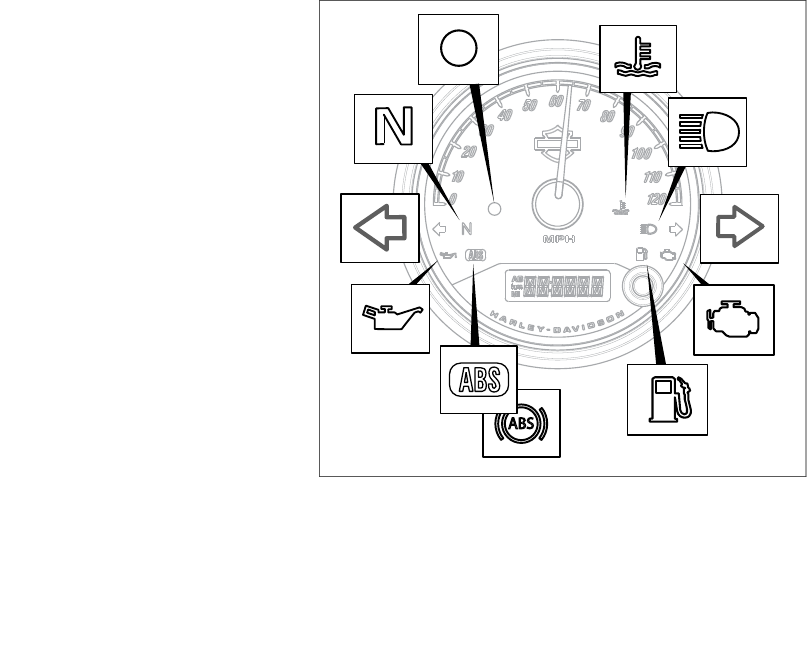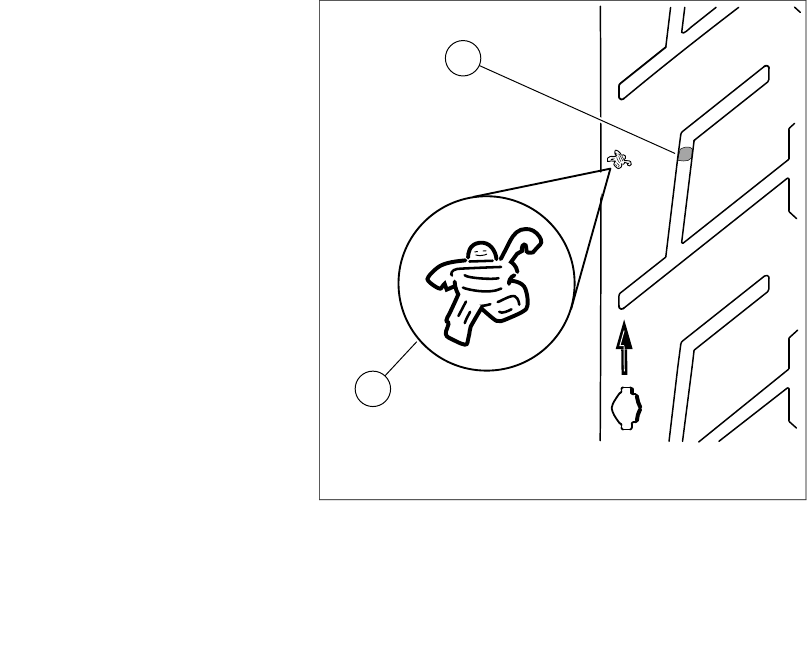Aritronix A243M Street Security System User Manual 99472 17
Aritronix Ltd Inc. Street Security System 99472 17
User Manual
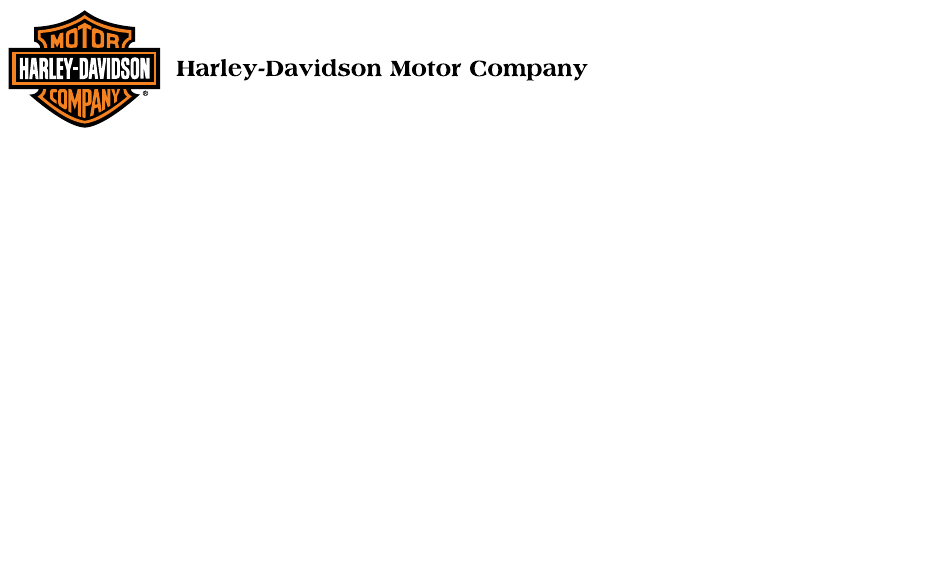
2017 Street Owner's
Manual
99472-17
Thu May 05 21:52:19 CDT 2016
NOTES

INTRODUCTION
Your Owner's Manual.........................................................1
Customer Service Assistance............................................1
SAFETY FIRST
Safety Definitions...............................................................3
Rules of the Road..............................................................3
Safety: Operating Rules.....................................................4
Harley-Davidson Motorcycles Are for On-Road Use
Only............................................................................4
General.......................................................................4
Operation....................................................................5
Stability, Steering and Handling..................................6
Cargo and Loading.....................................................8
Tires............................................................................8
Towing and Trailering..................................................9
Fuel and Exhaust........................................................9
Cooling System.........................................................10
Brakes.......................................................................11
Battery......................................................................11
Hazardous Materials.................................................12
Maintenance.............................................................12
Parts and Accessories..............................................13
Labels..............................................................................13
YOUR MOTORCYCLE
Vehicle Identification Number (VIN).................................17
General.....................................................................17
Location....................................................................17
Abbreviated VIN........................................................17
Primary Controls and Service Components.....................21
SECURITY SYSTEM
Security System...............................................................25
Components.............................................................25
Options.....................................................................25
Security Status Indicator..................................................25
Arming and Disarming.....................................................25
Armed.......................................................................25
Disarmed..................................................................26
Alarm................................................................................26
Warnings...................................................................26
Alarm Activation........................................................26
Alarm Deactivation....................................................27
Personal Identification Number (PIN)...............................27
Disarming with a PIN................................................27
Changing the PIN.....................................................28
i
TABLE OF CONTENTS

Security System Fob........................................................29
Assigning Fob ..........................................................29
Fob Battery...............................................................30
Riding with a Fob......................................................31
Riding without a Fob.................................................31
Transport Mode................................................................32
To Enter Transport Mode...........................................32
To Exit Transport Mode.............................................32
Storage and Service Departments...................................32
Long-Term Parking...................................................32
Service Departments................................................32
Siren (If Equipped)...........................................................32
Chirp Mode...............................................................32
Chirpless Mode.........................................................32
Switching Modes.......................................................33
Disconnecting Power................................................33
Troubleshooting................................................................33
Security Lamp...........................................................33
Fob............................................................................33
Siren (If equipped)....................................................34
BEFORE RIDING
Removing Motorcycle from Storage.................................35
Pre-Ride Checklist...........................................................35
Break-In Riding Rules......................................................36
The First 800 Kilometers (500 Miles)........................36
Filling the Fuel Tank.........................................................36
Removing Fuel Filler Cap.........................................37
Installing Fuel Filler Cap...........................................37
Fuel System Information..................................................38
Gasoline....................................................................38
Catalytic Converter...................................................39
Adjusting Mirrors..............................................................40
Operating Jiffy Stand.......................................................40
Location....................................................................40
Jiffy Stand Switch: International Models...................40
Adjusting Shock Absorbers..............................................40
General.....................................................................40
Adjustment................................................................41
OPERATION
Controls, Instruments and Switches................................43
Clutch Hand Lever....................................................43
Gear Shift Lever........................................................43
Left-Hand Control Module.........................................43
Speedometer/Odometer...........................................44
Right-Hand Control Module......................................44
Brakes.......................................................................44
ii
TABLE OF CONTENTS

Throttle Twist Grip.....................................................44
Ignition Switch...........................................................44
Fork Lock..................................................................45
Instruments......................................................................46
Speedometer............................................................46
Gear/Tachometer......................................................47
Odometer: Mileage, Trip A, Trip B.............................47
Odometer Messages................................................48
Clock.........................................................................49
Left Hand Control Switches.............................................50
High Beam................................................................50
Low Beam.................................................................50
Left Turn....................................................................50
Right Turn..................................................................51
Horn..........................................................................51
Right Hand Control Switches...........................................52
Off.............................................................................52
Run...........................................................................52
Start..........................................................................52
Anti-lock Brake System (ABS).........................................53
Identification..............................................................53
Brake System...................................................................54
Front Brake Lever......................................................54
Rear Brake Pedal......................................................54
Non-ABS Brake System............................................54
Anti-lock Brake System (ABS)..................................55
How ABS Works........................................................55
How To Use ABS.......................................................55
ABS: Tires and Wheels.............................................56
Indicators.........................................................................58
Starting the Engine..........................................................60
Starting after Tipover........................................................61
Shifting Gears..................................................................61
Finding Neutral.........................................................61
Starting from a Stop..................................................61
Upshift (Acceleration)...............................................62
Downshift (Deceleration)...........................................63
Stopping the Engine.........................................................64
AFTER RIDING
Storing Motorcycle...........................................................65
Cleaning and General Care.............................................65
Cleaning Wheels and Tires.......................................67
Radiator....................................................................67
Recommended Cleaning Products..................................67
Washing the Motorcycle...................................................73
Preparation...............................................................74
Cleaning Wheels and Tires.......................................74
iii
TABLE OF CONTENTS

Washing the Motorcycle............................................74
Drying the Motorcycle...............................................75
Polishing and Sealing...............................................75
Leather and Vinyl Care....................................................75
Denim Finish....................................................................76
Cleaning Denim Finish..............................................76
SCHEDULED MAINTENANCE
Maintenance....................................................................77
Preparing the Motorcycle for Maintenance......................77
Setting Motorcycle Upright........................................77
Changing Engine Oil and Filter........................................78
Checking Engine Oil Level...............................................80
Oil Level Cold Check.................................................80
Oil Level Hot Check..................................................81
Checking Pressure and Inspecting Tires..........................81
Inspecting Brake Pads and Discs....................................82
Brake Pads...............................................................82
Brake Disc ................................................................83
Checking Systems for Leaks or Abrasions......................83
Checking Brake Fluid Level and Changing Brake Fluid....83
Checking Brake Fluid Level......................................84
Changing Brake Fluid...............................................85
Checking and Adjusting Throttle Cables..........................85
Checking Clutch and Brake Controls...............................86
Clutch Hand Lever....................................................86
Brake Hand Lever.....................................................86
Miscellaneous Lubrication................................................86
Maintaining Front Fork ....................................................86
Adjusting Steering Head Bearings...................................87
Cleaning Radiator............................................................87
Coolant.............................................................................88
General.....................................................................88
Checking Coolant Level............................................89
Replacing Coolant............................................................89
Inspecting Rear Fork Bearing..........................................89
Checking Drive Belt and Sprockets..................................90
Inspecting Rear Shock Bushing.......................................92
Checking for Exhaust Leaks............................................92
Inspecting Air Filter..........................................................92
Lubricating Fuel Cap Lock...............................................93
Inspecting Valve Lash......................................................93
Cleaning Battery..............................................................93
Replacing Spark Plugs.....................................................93
Checking Electrical Equipment and Switches..................95
SERVICE PROCEDURES
Tires.................................................................................97
iv
TABLE OF CONTENTS

General Information..................................................97
Inspecting Tires.........................................................97
Replacing Tires.........................................................99
Lubrication.....................................................................100
Engine Lubrication..................................................100
Low Temperature Lubrication..................................101
Battery Maintenance......................................................102
Battery Safety.........................................................102
Cleaning and Inspecting.........................................102
Storing the Battery..................................................103
Charging Battery.....................................................103
Absorbed Glass Mat (AGM) Battery Charging
Information..............................................................104
Voltage Test.............................................................105
Battery Tender Connector..............................................105
Battery Replacement.....................................................106
Removing the Battery.............................................106
Installing Battery.....................................................110
Fuses and Relays..........................................................111
Main Fuse...............................................................111
Replacing Fuses.....................................................112
Relays.....................................................................113
Side Covers....................................................................114
Headlamp.......................................................................115
Checking Headlamp Alignment...............................115
Adjusting Headlamp................................................116
Replacing Headlamp or Position Bulb....................118
Tail Lamp........................................................................120
Replacing Tail Lamp Bulb.......................................120
Turn Signal Bulb.............................................................120
Replacing Turn Signal Bulb.....................................120
Seat................................................................................121
Removing Seat.......................................................121
Installing Seat.........................................................121
Noise Control System....................................................122
Tampering...............................................................122
SPECIFICATIONS
Specifications.................................................................123
Tires........................................................................123
Weights and Dimensions........................................124
Capacities...............................................................126
Engine and Transmission........................................126
Electrical.................................................................127
TROUBLESHOOTING
Troubleshooting: General...............................................129
Engine............................................................................129
v
TABLE OF CONTENTS

Starter Does Not Operate or Does Not Turn Engine
Over........................................................................129
Engine Turns Over But Does Not Start...................129
Starts Hard.............................................................129
Starts But Runs Irregularly or Misses.....................130
A Spark Plug Fouls Repeatedly..............................130
Pre-ignition or Detonation (Knocks or Pings)..........130
Overheats...............................................................130
Excessive Vibration.................................................130
Engine Oil Not Circulating (Oil Pressure Lamp Lit)..130
Cooling System..............................................................131
Overheats...............................................................131
Electrical System...........................................................131
Alternator Does Not Charge...................................131
Alternator Charge Rate is Below Normal................131
Transmission..................................................................131
Transmission Shifts Hard........................................131
Transmission Jumps Out of Gear............................131
Clutch Slips.............................................................131
Clutch Drags or Does Not Release.........................132
Clutch Chatters.......................................................132
Brakes............................................................................132
Brakes Do Not Hold Normally.................................132
WARRANTIES
General Warranty Information........................................133
Keeping it All Harley-Davidson...............................133
California and Select International Markets Evaporative
Emission Controls: 2017 Models....................................134
EPA Noise Regulations in the United States..................134
EPA Regulations.....................................................134
Warranty/Service Information.........................................134
Reporting Safety Defects in the United States...............135
NHTSA Statement..................................................135
Required Documentation for Imported Motorcycles.......135
Owner Contact Information............................................135
Questions and Concerns...............................................136
2017 Harley-Davidson Motorcycle Limited Warranty.....137
24 Months/Unlimited Miles......................................137
Duration..................................................................138
Owner's Obligations................................................138
Exclusions...............................................................138
Other Limitations.....................................................139
Important: Read Carefully.......................................140
2017 Australia/New Zealand Harley-Davidson Motorcycle
Manufacturer's Limited Warranty....................................141
24 Months/Unlimited Miles......................................141
Your Consumer Rights............................................141
vi
TABLE OF CONTENTS

Warranty.................................................................141
Warranty Period......................................................142
Obtaining Warranty Service....................................142
Exclusions...............................................................142
Other Limitations.....................................................143
Important: Read Carefully.......................................144
2017 Harley-Davidson Motorcycle Noise Control System
Limited Warranty............................................................144
Other Rights............................................................146
Recommendations for Required Maintenance........146
2017 Harley-Davidson Emission Control System Limited
Warranty.........................................................................146
Items Covered by this Emission Warranty .............148
Other Rights............................................................148
Recommendations for Required Maintenance........149
California Emissions Control Warranty Statement.........149
Your Warranty Rights and Obligations....................149
Manufacturer's Warranty Coverage.........................149
Owner's Warranty Responsibilities..........................149
Additional Warranty Terms......................................150
What Is Covered by this Emission Warranty...........152
What Is Not Covered by this Emission Warranty.....152
SERVICE INTERVALS AND RECORDS
Service Records.............................................................155
Regular Service Intervals........................................155
Maintenance Records.............................................159
Service Literature...........................................................162
TRADEMARKS
H-D U.S.A., LLC Trademark Information........................165
Product Registered Marks.............................................166
vii
TABLE OF CONTENTS

viii
TABLE OF CONTENTS

YOUR OWNER'S MANUAL
This manual has been prepared to acquaint you with the
operation, care and maintenance of your motorcycle. It also
provides important safety information. Follow these instructions
carefully for maximum motorcycle performance and for your
personal motorcycling safety and pleasure.
Your owner's manual contains instructions for operation and
minor maintenance. Major repairs are covered in the Harley-
Davidson service manual. Major repairs require the attention
of a skilled technician and the use of special tools and equip-
ment. Your Harley-Davidson dealer has the facilities, experi-
ence and Genuine Harley-Davidson parts necessary to render
this valuable service.We recommend that any emission system
maintenance be performed by an authorized Harley-Davidson
dealer.
Harley-Davidson reserves the right to change specifications,
equipment or designs at any time without notice and without
incurring obligation.
This owner's manual should be considered a permanent part
of the motorcycle and should remain with the motorcycle if it
is resold.
CUSTOMER SERVICE ASSISTANCE
Most sales or service issues are resolved at the dealership.
1. Discuss your problem with the appropriate personnel at
the dealership in the Sales, Service or Parts area. If that
proves unsuccessful, speak to the owner of the dealership
or the general manager.
2. If you cannot resolve the issue with the dealership, contact
the Harley-Davidson Customer Support Center.
Harley-Davidson Motor Company
Attention: Harley-Davidson Customer Support Center
P.O. Box 653
Milwaukee, Wisconsin 53201
1-800-258-2464 (U.S. only)
1-414-343-4056
For customers outside the US, contact your local Harley-Dav-
idson market office, call 1-414-343-4056 or visit harley-dav-
idson.com.
1
INTRODUCTION
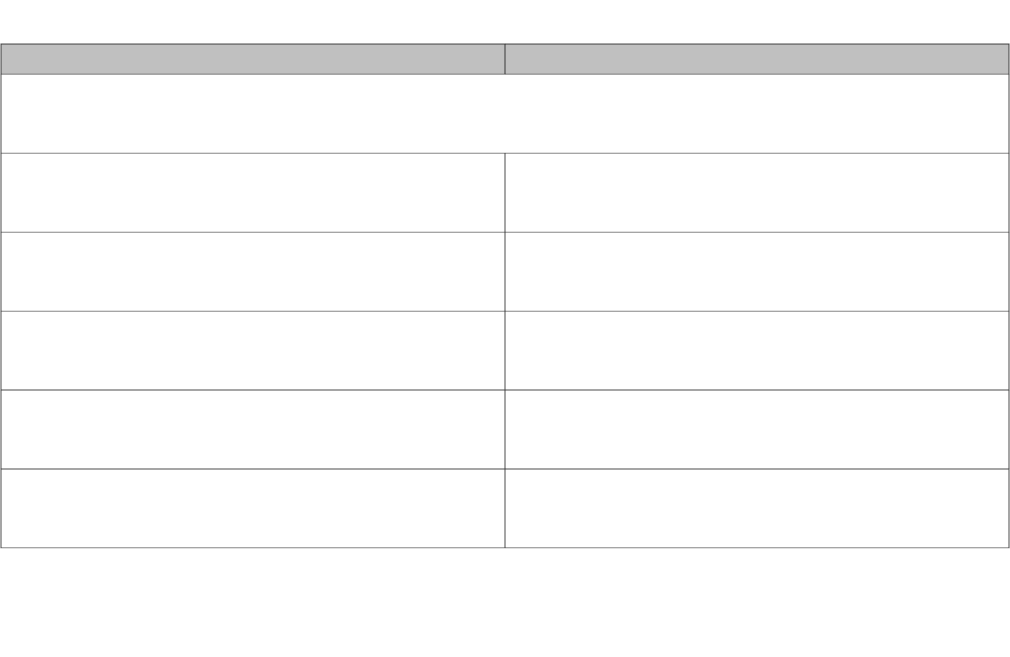
Table 1. Vehicle and Personal Data
DEALER INFORMATIONPERSONAL INFORMATION
Date of Purchase:
x
Name:Name:
x x
Address:Address:
x x
Address:Address:
x x
Sales Contact:Vehicle Identification Number:
x x
Service Contact:Key Number:
x x
2 Introduction
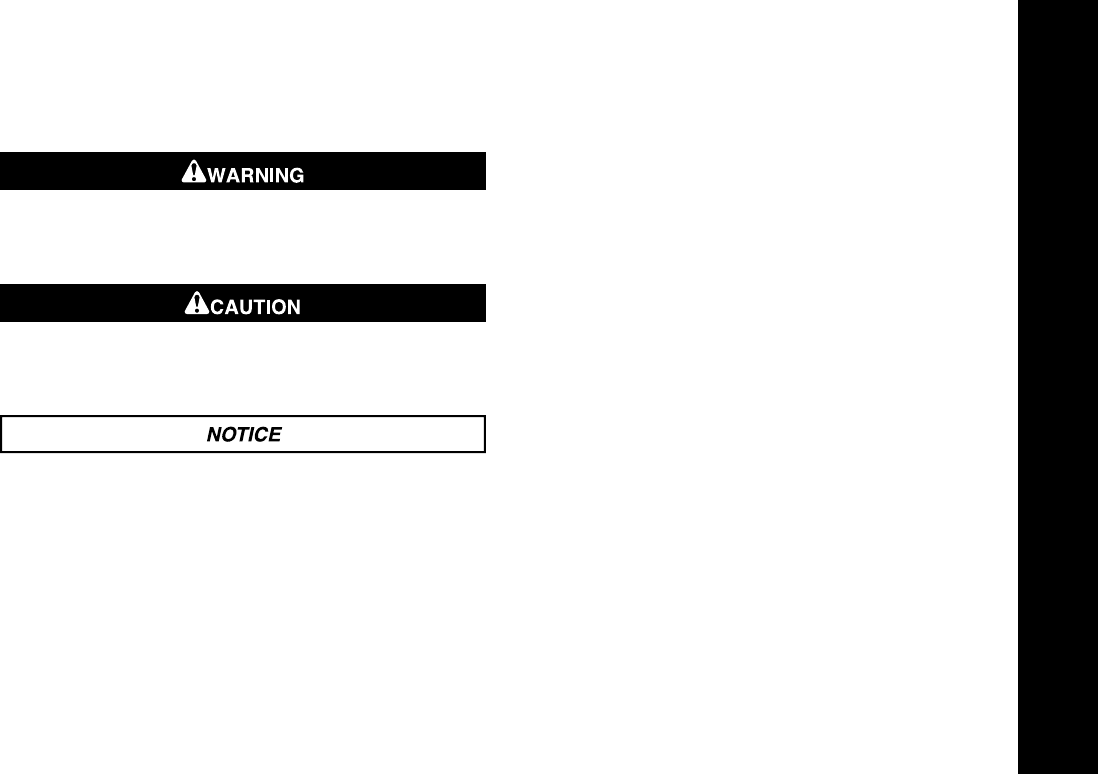
SAFETY DEFINITIONS
Statements in this manual preceded by the following words
are of special significance:
WARNING indicates a potentially hazardous situation
which, if not avoided, could result in death or serious
injury. (00119a)
CAUTION indicates a potentially hazardous situation
which, if not avoided, may result in minor or moderate
injury. (00139a)
NOTICE indicates a potentially hazardous situation which,
if not avoided, may result in property damage. (00140b)
NOTE
Refers to important information and is placed in italic type. It
is recommended that you take special notice of these items.
RULES OF THE ROAD
•Always sound your horn, use your turn signals and exer-
cise caution when passing other vehicles going in the
same direction. Never pass going in the same direction
at street intersections, on curves or when going up or down
a hill.
•At street intersections, give the right-of-way. Do not pre-
sume you have the right-of-way, as the other driver may
not know that it is your turn.
•Always signal when preparing to stop, turn or pass.
•Promptly obey all traffic signs, including those signs used
for the control of traffic at intersections. Always obey traffic
signs near schools and at railroad crossings.
•When intending to turn, signal at least 30.5 m (100 ft)
before reaching the turning point. If turning across an
intersection, move over to the centerline of the street
(unless local rules require otherwise). Slow down when
entering the intersection and turn carefully.
•Never anticipate a traffic light.When a change is indicated
from GO to STOP (or STOP to GO), slow down and wait
3
SAFETY FIRST

for the light to change. Never run through a yellow or red
traffic light.
•While turning, watch for pedestrians, animals, as well as
vehicles.
•Do not leave the curb or parking area without signaling.
Make sure that your way is clear to enter moving traffic.
A moving line of traffic always has the right-of-way.
•Make sure that your license plate is installed in the position
specified by law. Make sure that your license plate is
always clearly visible. Keep the license plate clean.
•Ride at a safe speed that is consistent with the type of
highway you are on. Pay strict attention to whether the
road is dry, oily, icy or wet.
•Watch for debris such as leaves or loose gravel.
•Weather and traffic conditions on the highway dictate
adjusting your speed and driving habits accordingly.
SAFETY: OPERATING RULES
Harley-Davidson Motorcycles Are for On-Road
Use Only
This motorcycle is not equipped with a spark arrester. This
motorcycle is designed to be used only on the road. Operation
or off-road usage in some areas may be illegal. Obey local
laws and regulations.
General
Consult a Harley-Davidson dealer regarding any questions
or problems that occur in the operation of your motorcycle.
Failure to do so can aggravate an initial problem, cause
costly repairs, cause an accident and could result in death
or serious injury. (00020a)
•Make sure all equipment required by federal, state and
local law is installed and in good operating condition.
•Know and respect the rules of the road. Read the safety
information that is provided by your state or regional traffic
authority.
•In the United States, read the RIDING TIPS booklet that
is provided with this owner's manual. Read the MOTOR-
CYCLE HANDBOOK which is made available by your
state or regional traffic authority.
•Protect your motorcycle against theft. Lock the front fork.
Remove the key when parking your motorcycle.
4 Safety First
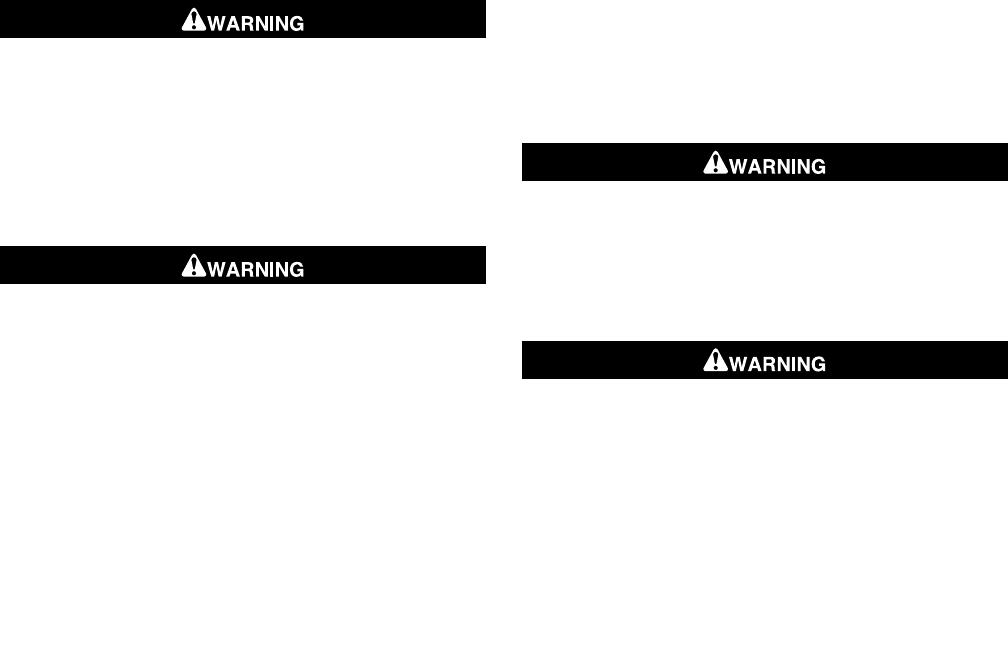
Do not add sidecar to this motorcycle. Operating motor-
cycle with sidecar can cause loss of vehicle control, which
could result in death or serious injury. (00590d)
Operation
Before operating your new motorcycle, it is your responsibility
to read and follow the operating and maintenance instructions
in this manual and follow these rules for your personal safety.
Motorcycles are different from other vehicles. They
operate, steer, handle and brake differently. Unskilled or
improper use could result in loss of control, death or ser-
ious injury. (00556c)
•Take a rider training course.
•Read all the owner's manual before riding, adding
accessories or servicing.
•Wear an approved helmet, clothing and foot gear suited
for motorcycle riding. Bright or light colors are best for
greater visibility in traffic, especially at night. Avoid loose,
flowing garments and scarves.
•Never tow a trailer.
•Before starting the engine, review the BEFORE RIDING,
Pre-Ride Checklist.
Striking an object, such as a curb or pothole can cause
internal tire damage. If an object is struck, have the tire
inspected immediately inside and out by a Harley-Davidson
dealer. A damaged tire can fail while riding and adversely
affect stability and handling, which could result in death
or serious injury. (00058b)
Travel at speeds appropriate for road and conditions and
never travel faster than posted speed limit. Excessive
speed can cause loss of vehicle control, which could result
in death or serious injury. (00008a)
•Do not exceed the legal speed limit or drive too fast for
existing conditions. Always reduce speed when poor
driving conditions exist. High speed increases the influence
Safety First 5
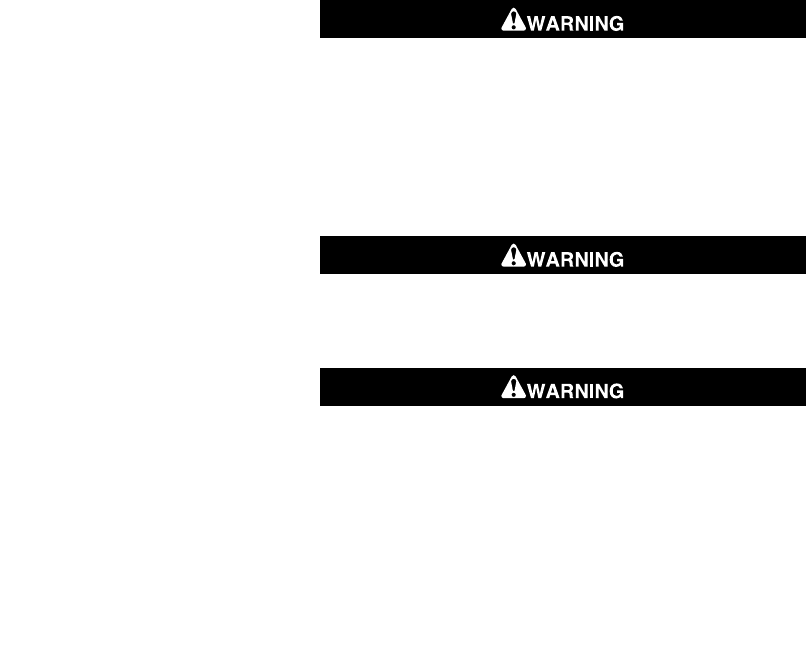
of any other condition affecting stability and increases the
possibility of loss of control.
•Pay strict attention to road surfaces and wind conditions
and keep both hands on the handlebar grips at all times
when riding the motorcycle. Any two wheeled vehicle may
be subject to upsetting forces such as wind blasts from
passing trucks, holes in the pavement, rough road sur-
faces, rider control error, etc. These forces may influence
the handling characteristics of your motorcycle. If this
happens, reduce speed and guide the motorcycle with a
relaxed grip to a controlled condition. Do not brake abruptly
or force the handlebar. This may aggravate an unstable
condition.
•New riders should gain experience under various condi-
tions while riding at moderate speeds.
•Operate your motorcycle defensively. In an accident, a
motorcycle does not afford the same protection as an
automobile.
•It is the rider's responsibility to instruct passengers on
proper riding procedures.
•Do not allow other individuals to operate the motorcycle
unless they are experienced, licensed riders and are
thoroughly familiar with the operation of the motorcycle.
Front and/or rear guard(s) can provide limited leg and
cosmetic vehicle protection under unique circumstances.
(Fall over while stopped, very slow speed slide.) It is not
made or intended to provide protection from bodily injury
in a collision with another vehicle or any other object.
(00022b)
Stability, Steering and Handling
Do not operate vehicle with forks locked. Locking the forks
restricts the vehicle's turning ability, which could result
in death or serious injury. (00035a)
Regularly inspect shock absorbers and front forks. Replace
leaking, damaged or worn parts that can adversely affect
stability and handling, which could result in death or ser-
ious injury. (00012a)
6 Safety First
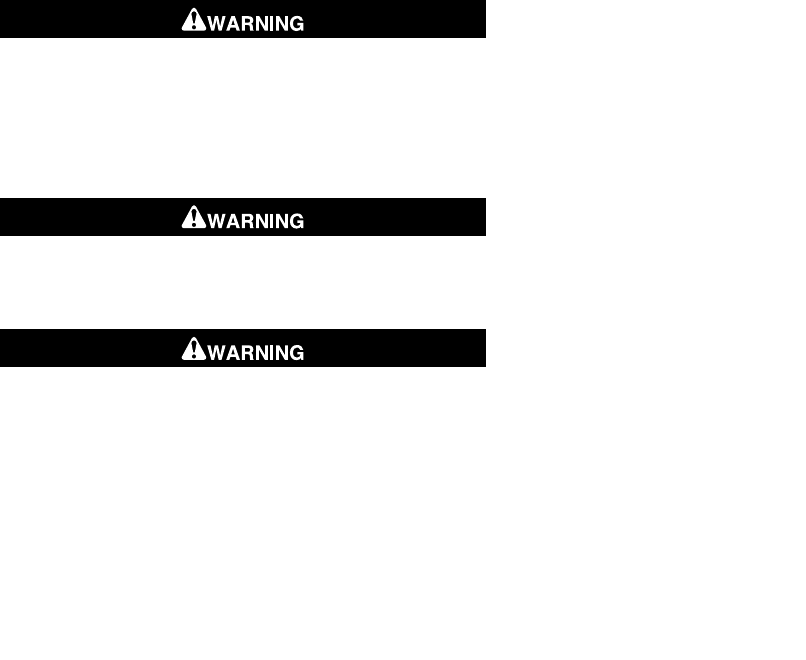
Do not operate motorcycle with loose, worn or damaged
steering or suspension systems. Contact a Harley-Dav-
idson dealer for repairs. Loose, worn or damaged steering
or suspension components can adversely affect stability
and handling, which could result in death or serious injury.
(00011a)
Do not open storage compartments while riding. Distrac-
tions while riding can lead to loss of control, which could
result in death or serious injury. (00082a)
When riding on wet roads, brake efficiency and traction
are greatly reduced. Failure to use care when braking,
accelerating or turning on wet roads can cause loss of
control, which could result in death or serious injury.
(00041a)
Safety First 7
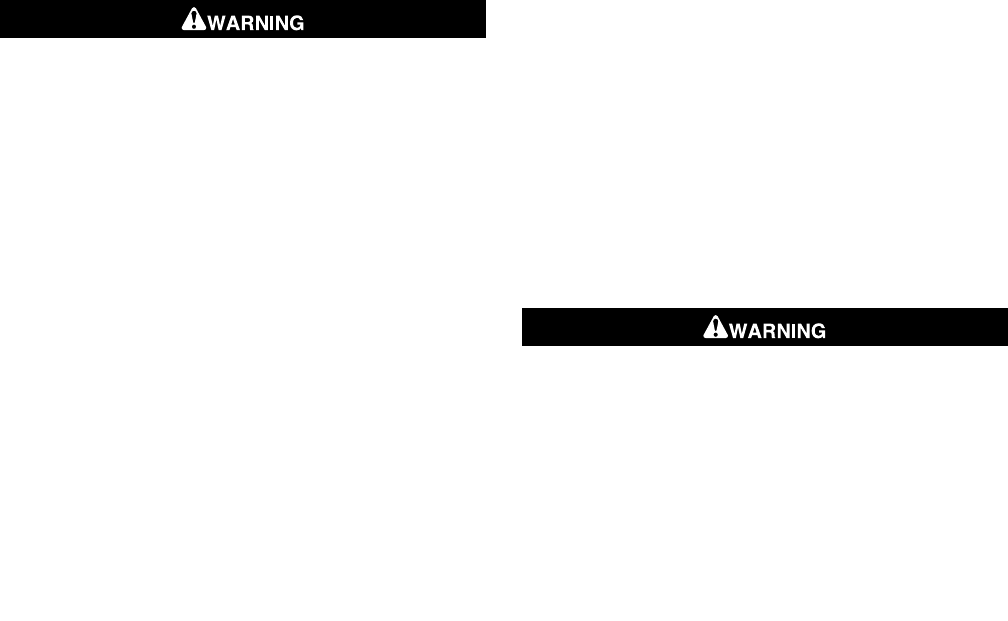
Cargo and Loading
Do not exceed the motorcycle's Gross Vehicle Weight
Rating (GVWR) or Gross Axle Weight Rating (GAWR).
Exceeding these weight ratings can lead to component
failure and adversely affect stability, handling and perform-
ance, which could result in death or serious injury. (00016f)
•GVWR is the sum of the weight of the motorcycle,
accessories and the maximum weight of the rider, pas-
senger and cargo that can be safely carried.
•The GVWR is shown on the information label, located on
the frame steering head or the frame downtube.
•GAWR is the maximum amount of weight that can be
safely carried on each end of the motorcycle.
•For GVWR and GAWR, front and rear, refer to Table 22
•Keep cargo weight concentrated close to the motorcycle
and as low as possible.
•Distribute weight evenly on both sides of the vehicle.
•Do not load bulky items too far behind the rider or add
weight to the handlebars or front forks.
•Do not exceed maximum specified load in each saddlebag
(if equipped).
•Luggage racks (if equipped) are designed for lightweight
items. Do not overload racks.
•Make sure cargo is secure. Make sure the cargo will not
shift while riding and check the cargo periodically.
Accessories that change the operator's riding position may
increase reaction time and affect handling of the motor-
cycle.
•Large surfaces such as fairings, windshields, backrests
and luggage racks (if equipped) can adversely affect on
stability and handling.
Tires
Be sure tires are properly inflated, balanced, undamaged,
and have adequate tread. Inspect your tires regularly and
see a Harley-Davidson dealer for replacements. Riding
with excessively worn, unbalanced, improperly inflated,
overloaded or damaged tires can lead to tire failure and
adversely affect stability and handling, which could result
in death or serious injury. (00014b)
8 Safety First
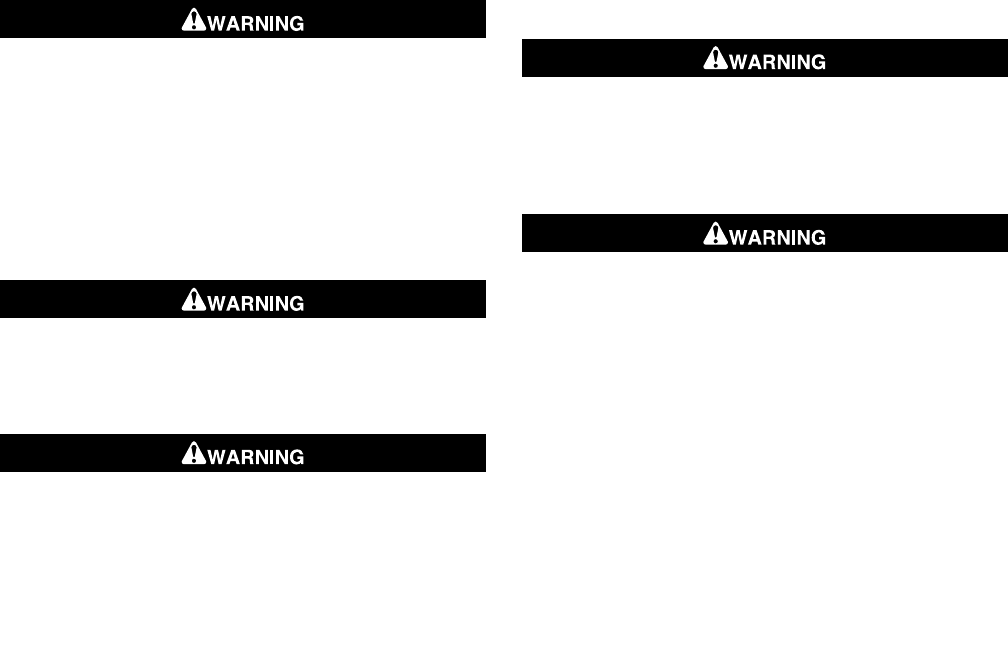
Replace punctured or damaged tires. In some cases, small
punctures in the tread area may be repaired from within
the removed tire by a Harley-Davidson dealer. Speed
should NOT exceed 50 mph (80 km/h) for the first 24 hours
after repair, and the repaired tire should NEVER be used
over 80 mph (130 km/h). Failure to follow this warning
could lead to tire failure and result in death or serious
injury. (00015b)
Towing and Trailering
Do not pull a trailer with a motorcycle. Pulling a trailer can
cause tire overload, damage and failure, reduced braking
performance, and adversely affect stability and handling,
which could result in death or serious injury. (00018c)
Do not tow a disabled motorcycle. Towing can adversely
affect stability and handling, which could result in death
or serious injury. (00017a)
Never tow a trailer.
Fuel and Exhaust
Stop the engine when refueling or servicing the fuel
system. Do not smoke or allow open flame or sparks near
gasoline. Gasoline is extremely flammable and highly
explosive, which could result in death or serious injury.
(00002a)
Avoid spills. Slowly remove filler cap. Do not fill above
bottom of filler neck insert, leaving air space for fuel
expansion. Secure filler cap after refueling. Gasoline is
extremely flammable and highly explosive, which could
result in death or serious injury. (00028a)
•Refuel in a well-ventilated area with the engine off.
•Remove the fuel filler cap slowly.
•Do not fill fuel tank above the bottom of the filler neck
insert. Leave air space to allow for fuel expansion.
Safety First 9
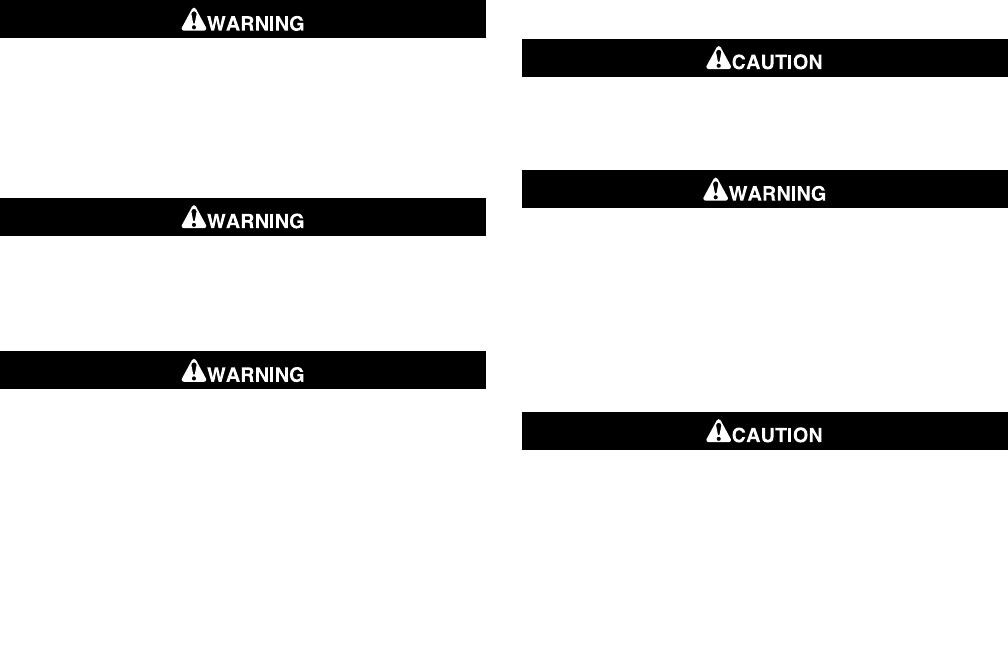
Avoid contact with exhaust system and wear protective
clothing that completely covers legs while riding. Exhaust
pipes and mufflers get very hot when engine is running
and remain too hot to touch, even after engine is turned
off. Failure to wear protective clothing could result in burns
or other serious injury. (00009a)
Do not run motorcycle in a closed garage or confined area.
Inhaling motorcycle exhaust, which contains poisonous
carbon monoxide gas, could result in death or serious
injury. (00005a)
Engine exhaust from this product contains chemicals
known to the State of California to cause cancer, and birth
defects or other reproductive harm. (00004f)
Cooling System
At operating temperature, radiators and oil coolers contain
hot fluids. Contact with a radiator or oil cooler can result
in minor or moderate burns. (00141b)
Coolant mixture contains toxic chemicals, which may be
fatal if swallowed. If swallowed, do not induce vomiting;
call a physician immediately. Use in a well ventilated area.
Irritation to skin or eyes can occur from vapors or direct
contact. In case of skin or eye contact, flush thoroughly
with water and go to hospital, if necessary. Dispose of
used coolant according to federal, state and local regula-
tions. (00092a)
Cooling fans operate automatically, even when the ignition
switch is off. Keep hands away from fan blades. Contact
with a rotating fan blade can result in minor or moderate
injury. (00093a)
10 Safety First
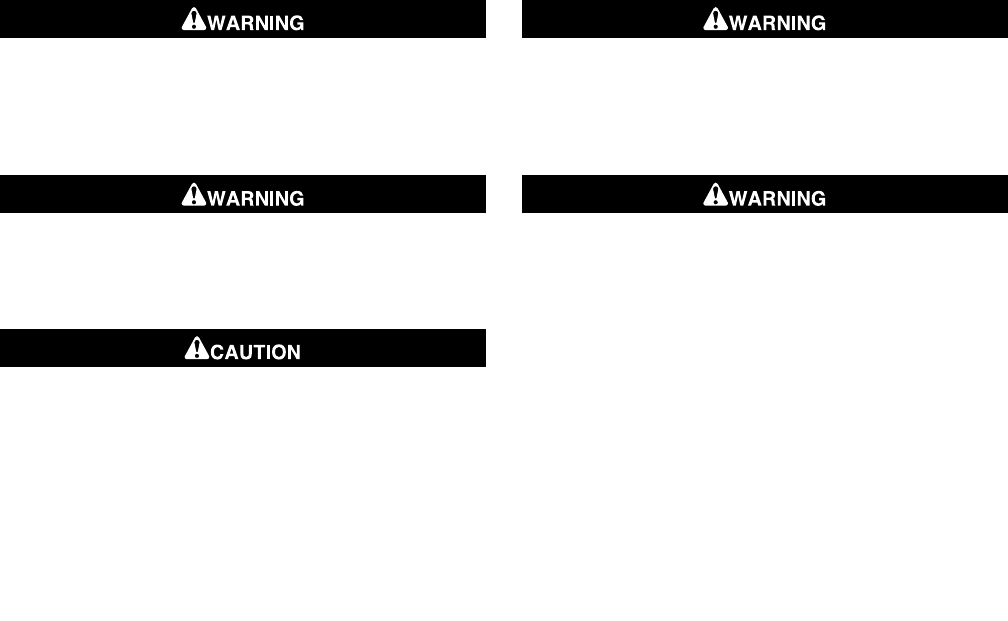
Brakes
Brakes are a critical safety component. Contact a Harley-
Davidson dealer for brake repair or replacement. Improp-
erly serviced brakes can adversely affect brake perform-
ance, which could result in death or serious injury.
(00054a)
Apply front and rear brakes evenly. Favoring one brake
accelerates wear and reduces braking efficiency. Operation
with excessively worn brakes can lead to brake failure,
which could result in death or serious injury. (00135a)
Direct contact of D.O.T. 4 brake fluid with eyes can cause
irritation. Avoid eye contact. In case of eye contact flush
with large amounts of water and get medical attention.
Swallowing large amounts of D.O.T. 4 brake fluid can cause
digestive discomfort. If swallowed, obtain medical atten-
tion. Use in well ventilated area. KEEP OUT OF REACH OF
CHILDREN. (00240a)
Battery
Batteries, battery posts, terminals and related accessories
contain lead and lead compounds, and other chemicals
known to the State of California to cause cancer, and birth
defects or other reproductive harm. Wash hands after
handling. (00019e)
Batteries contain sulfuric acid, which could cause severe
burns to eyes and skin. Wear a protective face shield,
rubberized gloves and protective clothing when working
with batteries. KEEP BATTERIES AWAY FROM CHILDREN.
(00063a)
Safety First 11
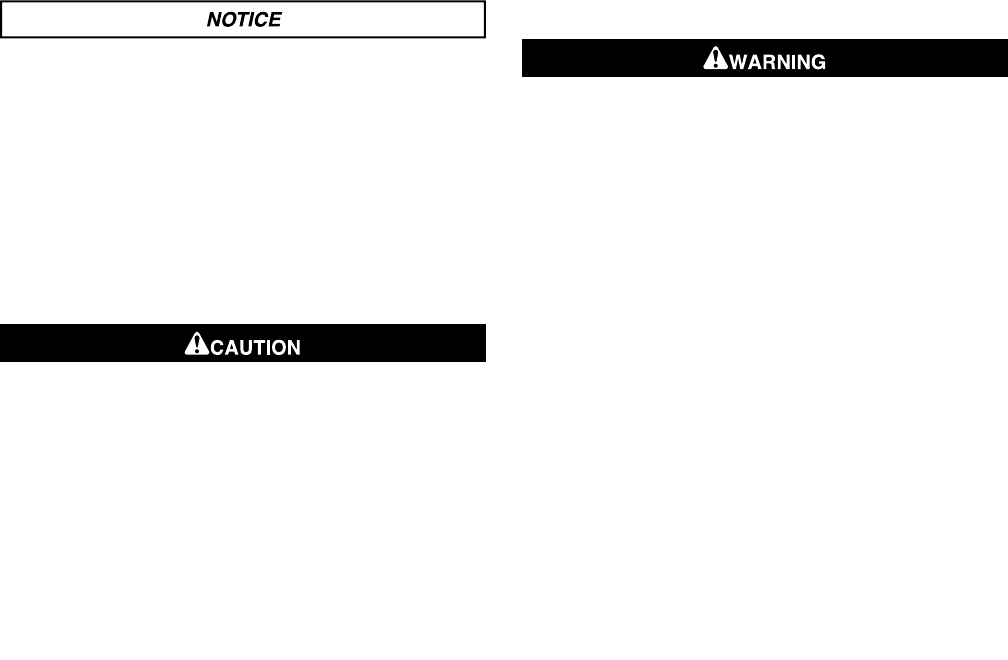
It is possible to overload your vehicle's charging system
by adding too many electrical accessories. If the combined
electrical accessories operating at any one time consume
more electrical current than the vehicle's charging system
can produce, the electrical consumption can discharge
the battery and cause damage to the vehicle's electrical
system. See an authorized Harley-Davidson dealer for
advice about the amount of current consumed by addi-
tional electrical accessories or for necessary wiring
changes. (00211c)
Hazardous Materials
Prolonged or repeated contact with used motor oil may
be harmful to skin and could cause skin cancer. Promptly
wash affected areas with soap and water. (00358b)
Maintenance
Perform the service and maintenance operations as
indicated in the regular service interval table. Lack of
regular maintenance at the recommended intervals can
affect the safe operation of your motorcycle, which could
result in death or serious injury. (00010a)
•A new motorcycle must be operated according to the
special break-in procedure. See BEFORE RIDING, Break-
In Riding Rules.
•Proper care and maintenance, including tire pressure, tire
condition, tread depth and proper adjustment to steering
head bearings are important to stability and safe operation
of the motorcycle. Refer to Table 29.
12 Safety First
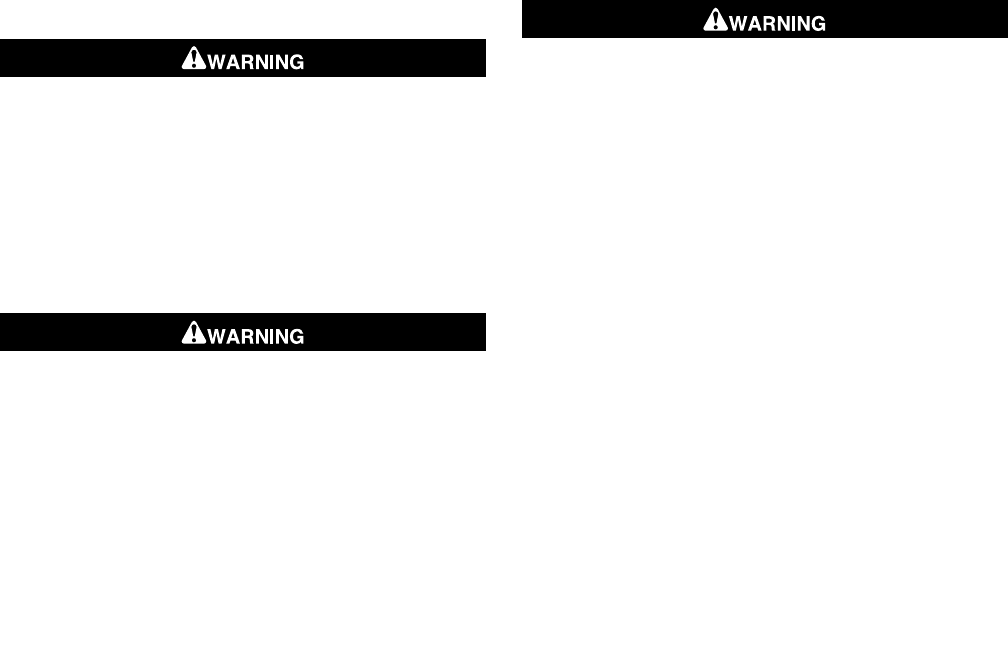
Parts and Accessories
Harley-Davidson parts and accessories are designed for
Harley-Davidson motorcycles. Using non-Harley-Davidson
parts or accessories can adversely affect performance,
stability or handling, which could result in death or serious
injury. (00001b)
•Use only Harley-Davidson approved parts and
accessories. Use of certain other manufacturer's perform-
ance parts will void your new motorcycle warranty. See
your Harley-Davidson dealer for details.
Use Harley-Davidson replacement fasteners. Aftermarket
fasteners can adversely affect performance, which could
result in death or serious injury. (00013a)
•See your Harley-Davidson service manual for proper
torque values.
•Aftermarket fasteners may not have the specific property
requirements to perform properly.
See the Accessories and Cargo section in your owner's
manual. Improper cargo loading or accessory installation
can cause component failure and adversely affect stability,
handling and performance, which could result in death or
serious injury. (00021b)
•Harley-Davidson Motor Company cannot test and make
specific recommendations concerning every accessory or
combination of accessories sold.Therefore, the rider must
be responsible for safe operation of the motorcycle when
installing accessories or carrying additional weight.
•Additional electrical equipment may overload the electrical
system possibly resulting in electrical system and/or
component failure.
LABELS
See Figure 1 for safety and maintenance labels which were
on the vehicle when new. Refer to Table 2.
NOTE
Some labels are available in different languages for destinations
outside the United States.
Safety First 13
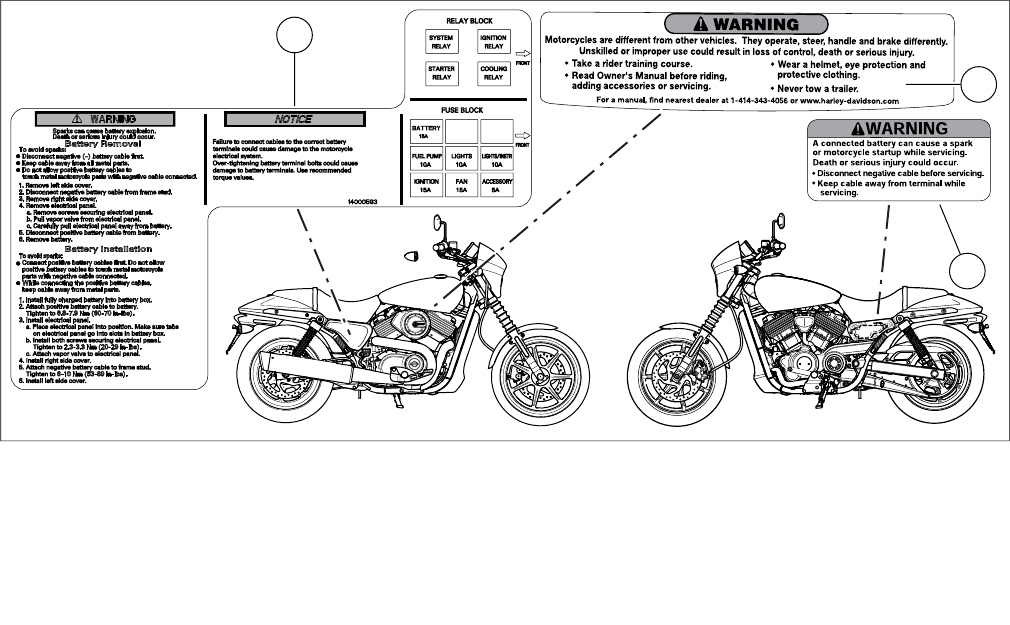
Replacement labels can be purchased for your motorcycle. See a Harley-Davidson dealer.
3
1
2
om01644e
Figure 1. Labels
14 Safety First
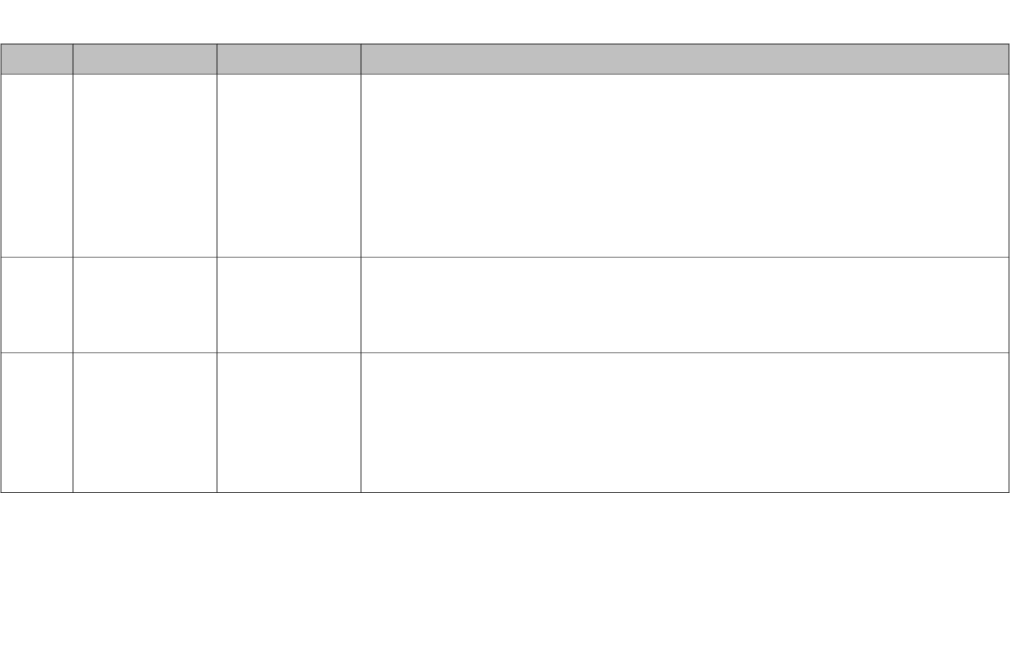
Table 2. Labels
TEXTDESCRIPTIONPART NUMBERITEM
WARNING: Motorcycles are different from other vehicles. They operate, steer,
handle and brake differently. Unskilled or improper use could result in loss of
control, death or serious injury.
•Take a rider training course.
•Read Owner's Manual before riding, adding accessories or servicing.
•Wear a helmet, eye protection and protective clothing.
•Never tow a trailer.
For a manual, find nearest dealer at 1-414-343-4056 or www.harley-davidson.com
General warning29147-071
WARNING: A connected battery can cause a spark or motorcycle startup while
servicing. Death or serious injury could occur.
•Disconnect negative cable before servicing.
•Keep cable away from terminal while servicing.
Battery warning15368-01A2
WARNING: Sparks can cause battery explosion. Death or serious injury could
occur. To avoid sparks:
•Disconnect negative cable first.
•Keep cable away all metal parts.
•Do not allow positive battery cable to touch metal motorcycle parts with neg-
ative cable connected.
Battery
warning/Removal
and Installation
140011753
Safety First 15

16 Safety First
NOTES
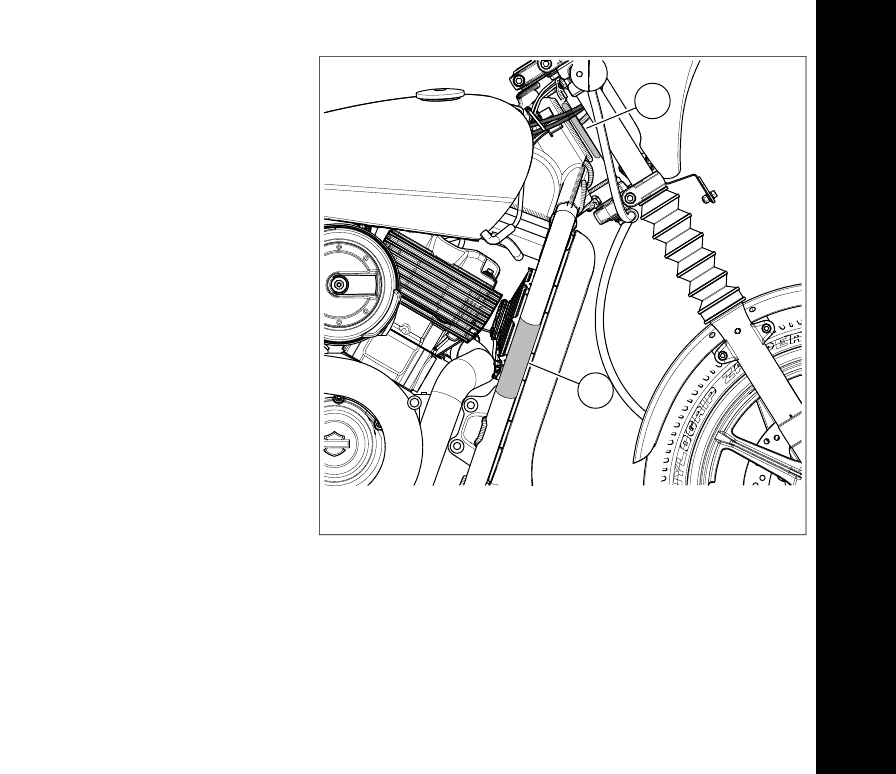
VEHICLE IDENTIFICATION NUMBER (VIN)
General
A unique 17-digit serial or Vehicle Identification Number (VIN)
is assigned to each motorcycle. Refer to Table 3.
Location
See Figure 2. The full 17-digit VIN is stamped (1) on the right
side of the frame near the steering head. In some destinations,
a printed VIN label (2) is also attached on the front downtube.
Abbreviated VIN
The abbreviated VIN shows the vehicle model, engine type,
model year and sequential number. The abbreviated VIN is
stamped on the left side of the crankcase between the engine
cylinders.
NOTE
Always give the full 17-digit Vehicle Identification Number when
ordering parts or making any inquiry about your motorcycle.
2
1
om02126
1. Stamped VIN
2. VIN label
Figure 2.VIN Locations
17
YOUR MOTORCYCLE
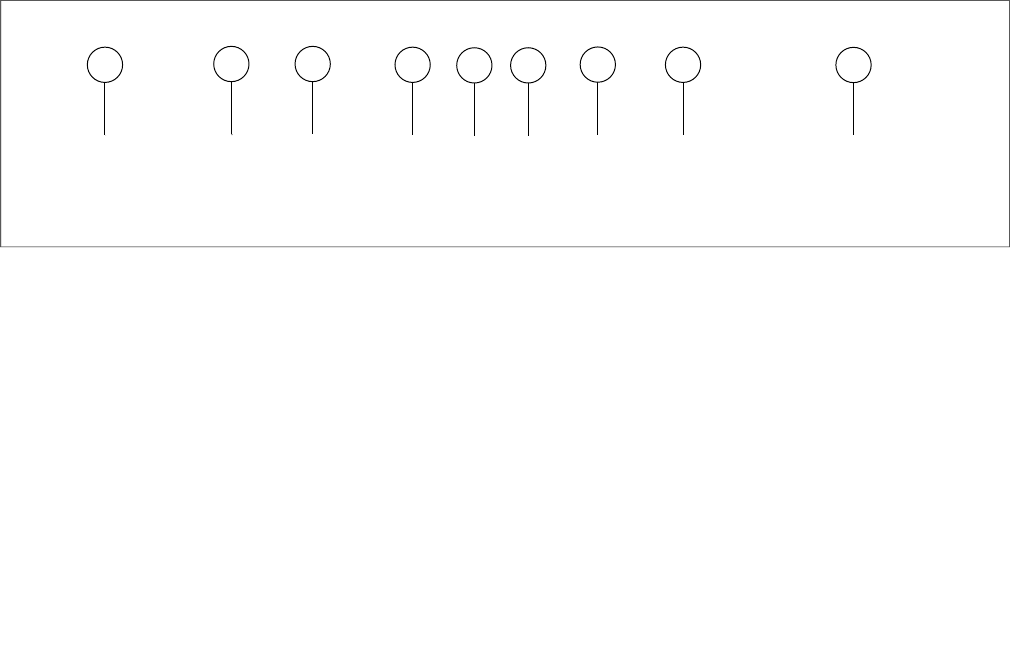
1HD 4 NA A 1 3 H C 555000
12 3 45 6 789
om01842b
Figure 3.Typical Harley-Davidson VIN: 2017 Street Models
18 Your Motorcycle
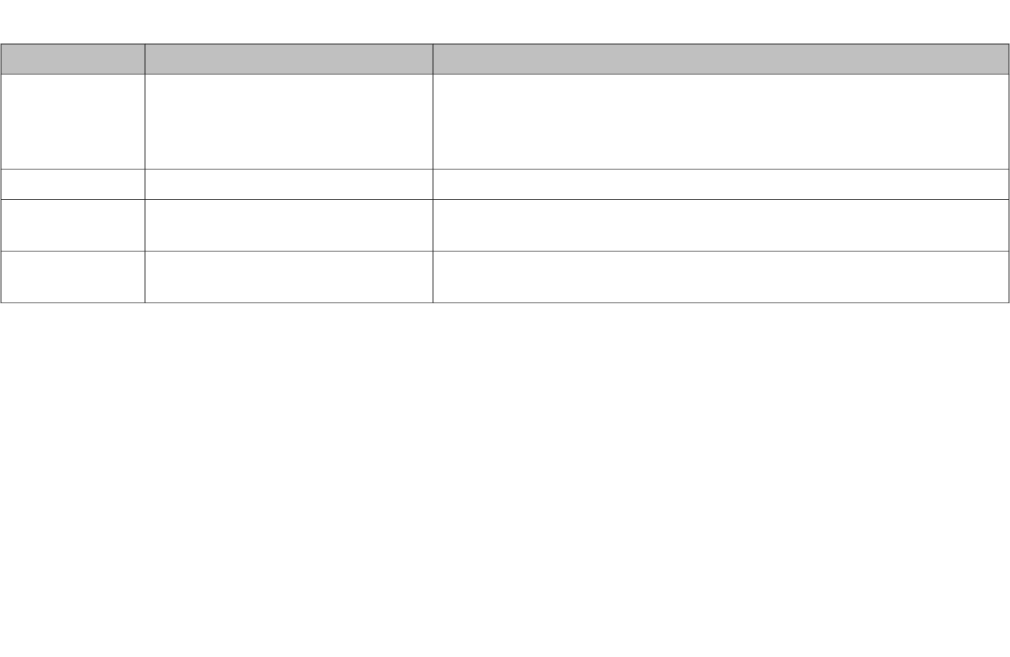
Table 3. Harley-Davidson VIN Breakdown: 2017 Street Models
POSSIBLE VALUESDESCRIPTIONPOSITION
1HD=Originally manufactured in the United StatesWorld manufacturer identifier1 5HD=Originally manufactured in the United States for sale outside the
United States
MEG=Originally manufactured in India
4=Middleweight motorcycle (351 cm3 to 900 cm3)Motorcycle type2
NA=XG500Model3 NB=XG750
A=Revolution XTM 500 cm3 liquid-cooled, fuel-injectedEngine type4 B=Revolution XTM 750 cm3 liquid-cooled, fuel-injected
Your Motorcycle 19
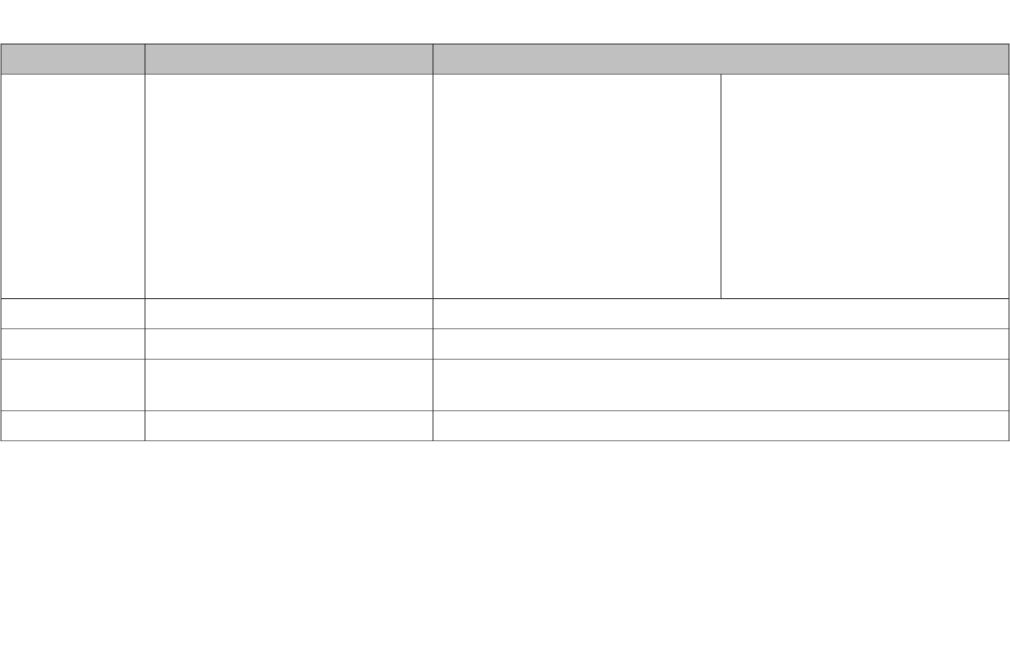
Table 3. Harley-Davidson VIN Breakdown: 2017 Street Models
POSSIBLE VALUESDESCRIPTIONPOSITION
Mid-year or Special IntroductionNormal IntroductionConfiguration/calibration, introduc-
tion
52, 4=Domestic (DOM)1=Domestic (DOM) 5, 6=California (CAL)3=California (CAL) B=Canada (CAN)A=Canada (CAN) D=HDIC=HDI F=Japan (JPN)E=Japan (JPN) H=Australia (AUS)G=Australia (AUS) K=Brazil (BRZ)J=Brazil (BRZ) M=Asia Pacific (APC)L=Asia Pacific (APC) P=India (IND)N=India (IND)
Can be 0-9 or XVIN check digit6
H=2017Model year7
C=Kansas City, MO U.S.A.Assembly plant8 N=Haryana India (Bawal District Rewari)
VariesSequential number9
20 Your Motorcycle

PRIMARY CONTROLS AND SERVICE
COMPONENTS
Familiarize yourself with the location of all the controls and
service components on your motorcycle.
NOTES
Harley-Davidson reserves the right to change specifications,
equipment or designs at any time without notice and without
incurring obligation.
See Figure 4 for rider controls and service components
accessible when seated.
See Figure 5 for rider controls and service components
accessible from the right.
See Figure 6 for rider controls and service components
accessible from the left.
Your Motorcycle 21
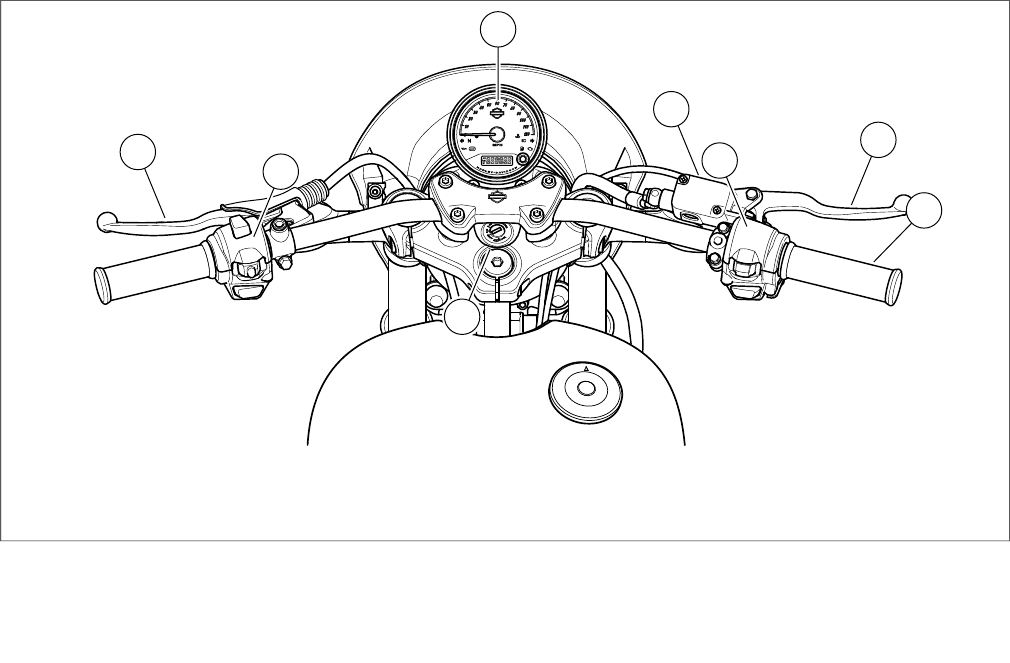
2
1
7
5
4
6
3
8
om01853g
5.1. Front brake leverClutch hand lever
2. 6.Left hand control module Throttle twist grip
7.3. Ignition switchSpeedometer/odometer
4. 8.Right hand control module Front brake fluid reservoir
Figure 4. Controls and Service Components
22 Your Motorcycle
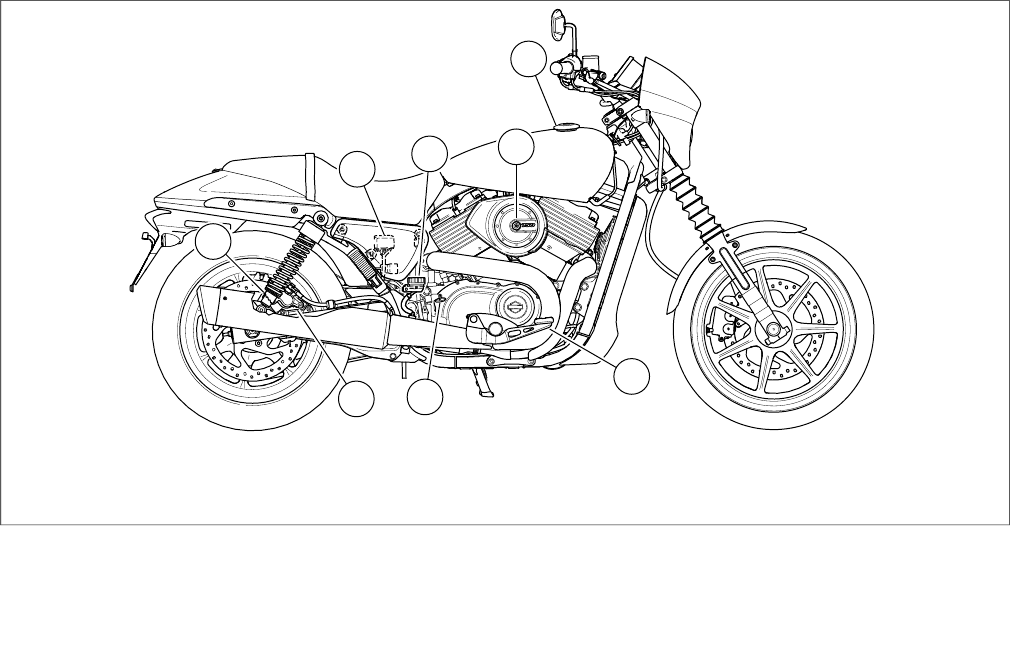
34
2
1
76
8
5
om02143Rc
5.1. Gas capShock absorber preload collar
2. 6.Fuse block/main fuse (under side cover) Rear brake pedal
7.3. Oil filler dipstickRear brake fluid reservoir
4. 8.Air cleaner Rear brake caliper
Figure 5. Controls and Service Components
Your Motorcycle 23
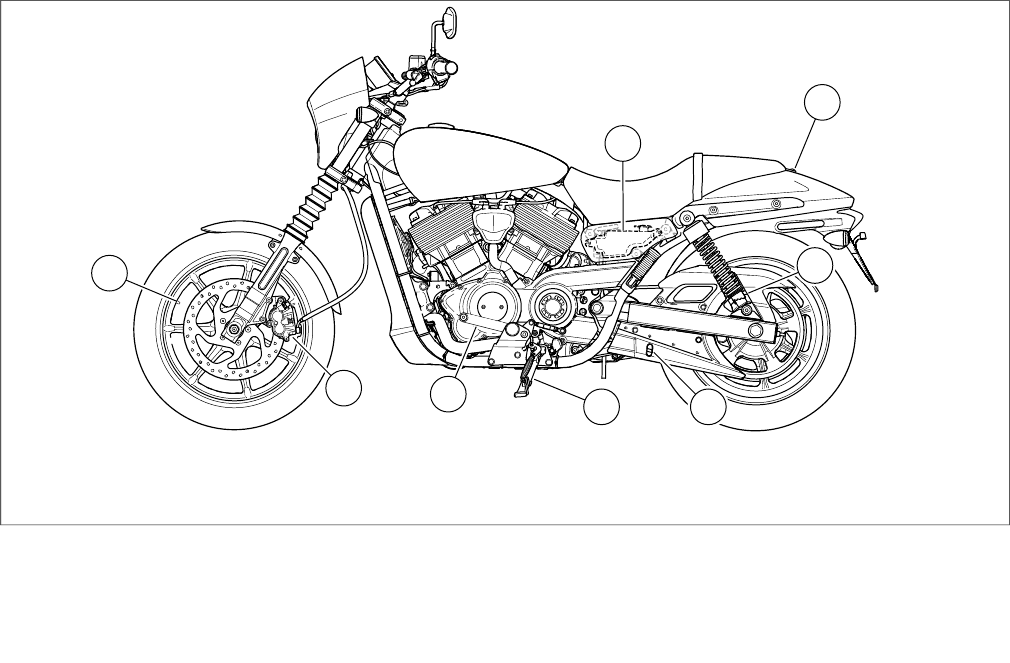
2
1
83
45
76
om02146LB
5.1. Jiffy standCoolant overflow bottle (under side cover)
2. 6.Seat retention screw Gear shift lever
7.3. Front brake caliperShock absorber preload collar
4. 8.Belt tension window Air pressure valve
Figure 6. Controls and Service Components
24 Your Motorcycle
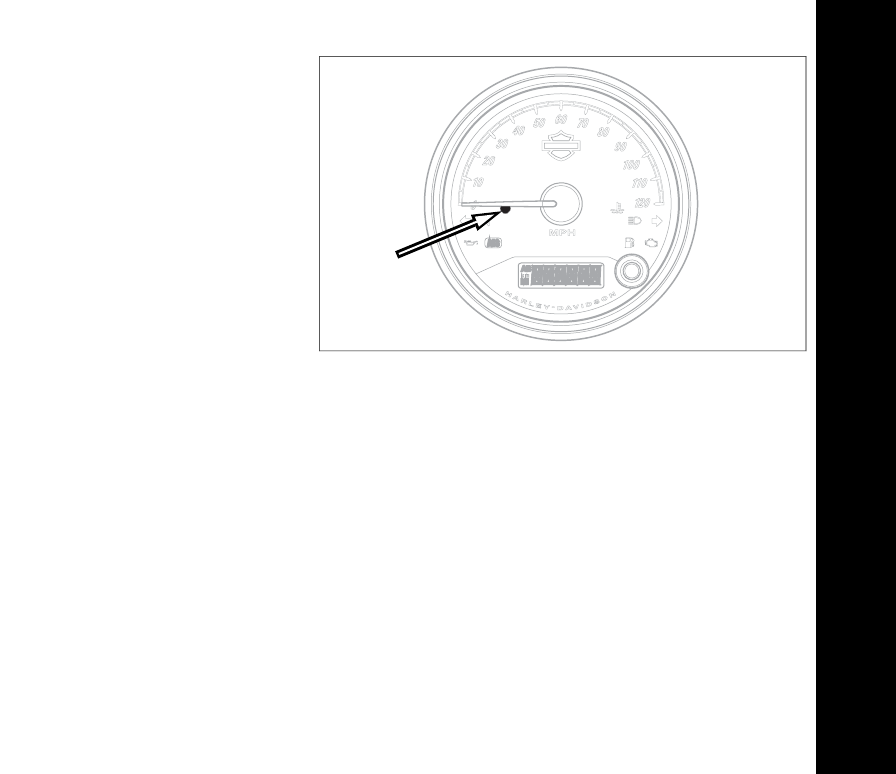
SECURITY SYSTEM
Components
The security system consists of a control module, a hands-free
antenna mounted on the motorcycle and a hands-free fob
carried by the rider. The security system lamp in the speedo-
meter face indicates when security is armed or disarmed.
See SECURITY SYSTEM, Arming and Disarming.
Options
See a Harley-Davidson dealer or www.harley-davidson.com
for security system options.
SECURITY STATUS INDICATOR
See Figure 7. The security lamp in the speedometer face
indicates the status of the security system.
•Armed: The lamp blinks every few seconds when the
system is armed.
•Disarmed:The lamp will turn off when the system disarms.
•Warning/Alarm: The lamp with stay lit when in a warning
or alarm state. The system is still armed.
•Fob Locator: The lamp will flash quickly when attempting
to locate and connect with the fob.
•Service: See a Harley-Davidson dealer if the lamp remains
lit continuously.
om02290
Figure 7. Security Indicator Lamp
ARMING AND DISARMING
Armed
When the motorcycle is parked, motionless and the ignition
switch set to OFF, the security system arms automatically
within 5 seconds.Whether the fob is present or not, the system
will arm.
On arming, the turn signals flash twice and the siren (if
equipped and in chirp mode) chirps twice. While armed, the
indicator in the speedometer face flashes every few seconds.
25
SECURITY SYSTEM

Disarmed
Fob: An armed security system is automatically disarmed when
the fob is present and the ignition switch is set to IGNITION.
NOTE
Movement like lifting the motorcycle off of its jiffy stand or a
NO FOB condition, will cause the system to electronically seek
the presence of the fob. If the fob is present, the system dis-
arms. See OPERATION, Instruments.
When the system disarms, the siren (if equipped and in chirp
mode) chirps once and the security indicator lamp flashes fast
for several seconds then turns off.
Once disarmed, the rider can ride or move the motorcycle for
parking, storage or service without setting off the alarm.
Personal Identification Number (PIN):If the fob is misplaced
or if the fob fails to communicate, the system can be disarmed
with the Personal Identification Number (PIN). Refer to
SECURITY SYSTEM, Personal Identification Number (PIN).
ALARM
Warnings
Once armed, if the motorcycle is moved or lifted up off of its
jiffy stand and the fob is not present, the alarm will warn the
operator with three alternate flashes of the turn signals and a
chirp of the siren (if equipped).
Within four seconds, if the motorcycle is back on its jiffy stand
and no further motion is detected, the system will remain armed
without activating the alarm.
If the motorcycle motion continues, the system will issue a
second warning a few seconds after the first.
NOTE
During warnings and alarms, the starter motor and the ignition
circuits remain disabled.
Alarm Activation
If the security system is still detecting motion after a second
warning, the system will activate the alarm.
When activated, the security system will:
•Alternately flash the four turn signals.
•Sound the siren (if equipped).
Duration: If motorcycle motion is detected the system will
repeat the 30 second alarm and will continue to check for
motion. The alarm will repeat this 30 second alarm cycle for 5
minutes (10 cycles) or until no more motion is detected. The
alarm will then deactivate.
26 Security System

NOTE
The alarm will also activate the LED, vibration or audible modes
of an optionally purchased Harley-Davidson Security Pager.
See a Harley-Davidson dealer for details.
Alarm Deactivation
Key fob: Bring the fob to the motorcycle. After the module
identifies that the fob is present, the system will terminate the
alarm.
PERSONAL IDENTIFICATION NUMBER (PIN)
If the fob is misplaced or fails, a personal identification number
(PIN) can disarm the security system. The dealership assigns
the initial PIN.
Disarming with a PIN
NOTE
If a mistake is made while entering the PIN, turn ignition OFF
then back to IGNITION before another attempt.
1. See Figure 8.While the security indicator lamp is flashing,
turn the ignition switch to IGNITION.The odometer window
displays ENTER PIN.
2. Press and release the odometer toggle button. The first
digit space flashes.
3. Input five digits of the PIN.
a. Press and release the odometer toggle button to cycle
the digit in the PIN.
b. Press and hold the odometer toggle button for 1.5
seconds to enter the number. The display cycles to
the next digit in the PIN.
c. Repeat until all five digits of the PIN have been
entered.
NOTES
•If the digit cycles past 9, the digit starts over at 1.
•If any of the digits do not match assigned PIN, the security
system is activated.
4. The vehicle is disarmed and ready to start.
Security System 27
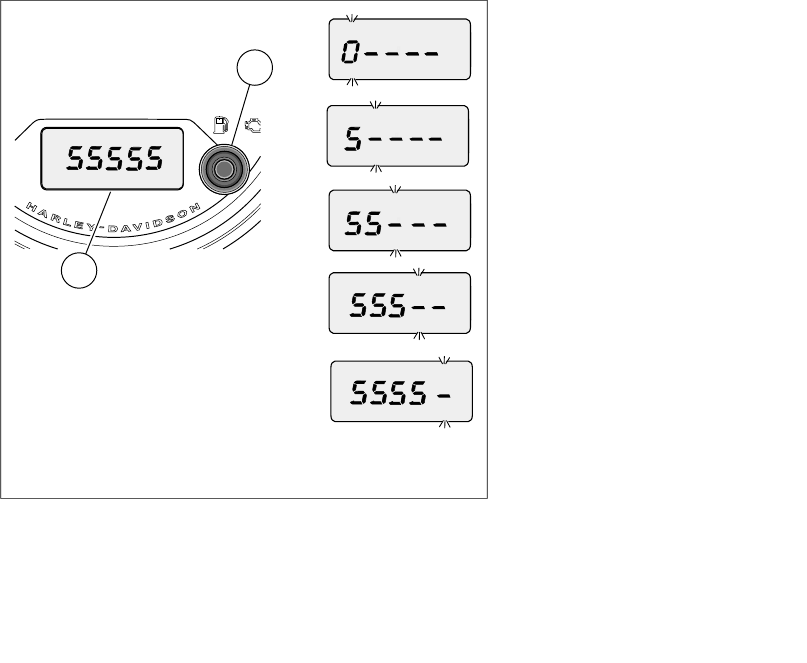
2
1
om02294
1. Odometer window
2. Toggle switch button
Figure 8. Inputting the PIN (Sample PIN Shown)
Changing the PIN
The dealership sets a temporary PIN when they are setting up
the motorcycle for delivery. The owner can change the PIN at
any time.
1. Select a five-digit number (1-9, no zeros).
2. With an assigned fob present, cycle to the ENTER PIN
prompt in the odometer window.
a. See Figure 8. Cycle the ignition switch twice: IGNI-
TION-OFF-IGNITION-OFF-IGNITION.
b. Press and release the odometer toggle button twice
to display the ENTER PIN prompt.
c. On the ENTER PIN prompt, press and hold the odo-
meter toggle button for 1.5 seconds.
d. Verify that the current PIN is displayed and the first
digit flashes.
3. The turn signals flash three times.
28 Security System
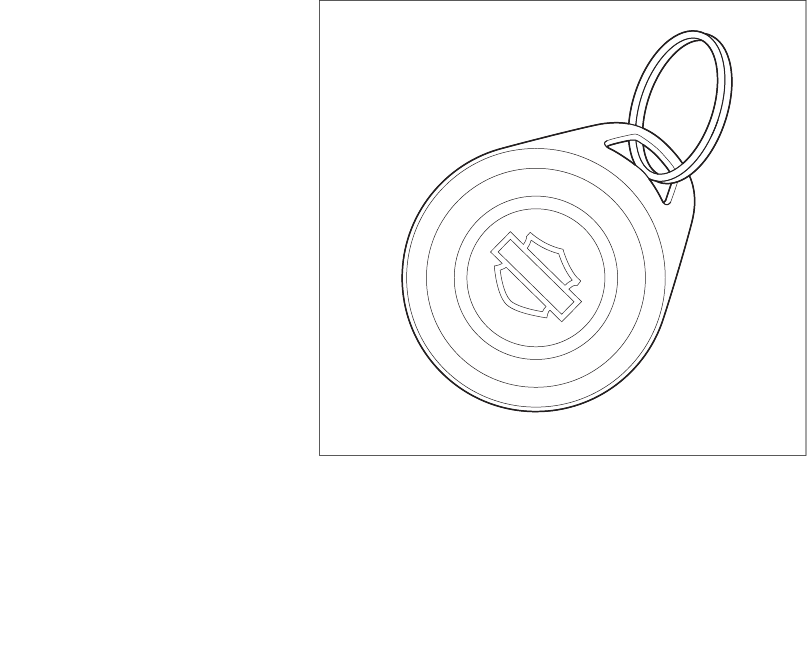
4. Repeat until all five digits have been entered.
a. Press and release the odometer toggle button to cycle
the flashing digit to the digit (1-9) that matches your
selected number.
b. To enter the flashing number, press and hold the
odometer toggle button for 1.5 seconds. The display
cycles to the next digit.
5. To store the new PIN, turn the ignition switch to OFF .
6. Record the PIN on the Personal Information page in the
front of this Owner's Manual and on the removable wallet
card.
SECURITY SYSTEM FOB
Assigning Fob
See Figure 9. Key fobs are electronically assigned to the
security system by a Harley-Davidson dealer. Only two fobs
can be assigned at any one time.
Purchase replacement fobs from a Harley-Davidson dealer.
The fobs can only be assigned to an individual motorcycle by
a trained Harley-Davidson technician.
om00892
Figure 9. Fob: Security System
Security System 29

NOTES
•The module will arm only if the fob has been assigned by
a Harley-Davidson dealer and a Personal Identification
Number (PIN) has been entered in the system. Record
the PIN on the Personal Information page in the front of
this Owner's Manual and on the removable wallet card.
•If the fob is misplaced or fails, the rider can refer to the
wallet card and use the PIN to manually disarm the
system. See SECURITY SYSTEM, Arming and Disarming
and SECURITY SYSTEM, Troubleshooting.
•The rider can change the PIN at any time. See SECURITY
SYSTEM, Personal Identification Number (PIN).
Fob Battery
Replace the fob battery every year.
NOTES
•The reusable label found on the fob packaging lists the
serial number of the fob. For reference, affix the label to
a blank "NOTES" page in this Owner's Manual.
•See Figure 10. The serial number of the fob is also found
on the inside of the fob.
1. See Figure 10. To open the fob, turn a thin blade in the
slot (1).
2. Remove the battery (2) and discard in accordance with
local regulations.
3. Install a new battery (Panasonic CR2032 or equivalent)
with the positive side down.
4. Align the two halves of the fob. Snap the halves together.
30 Security System
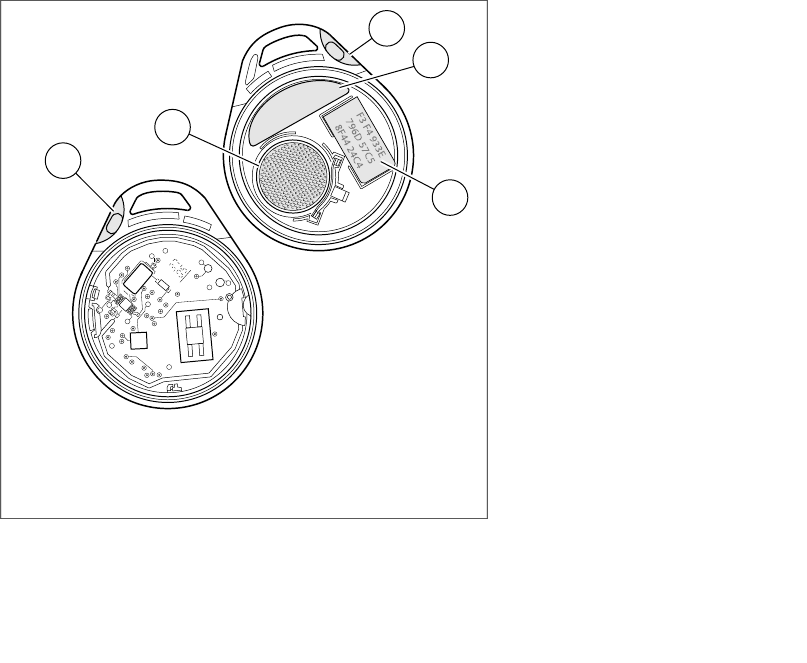
1
4
2
1
3
om00958a
1. Thumbnail slot
2. Battery
3. Fob serial number
4. Certification label
Figure 10. Fob Battery
Riding with a Fob
•Always carry the fob when riding, loading, fueling, moving,
parking or servicing the motorcycle.
•Do not leave the fob attached to the handlebars or store
the fob in a luggage compartment. Unintentionally leaving
the fob with the motorcycle when it is parked prevents the
system from activating the alarm.
•Do not ride with the fob stored in a metal case or with the
fob closer than 76 mm (3.0 in) to a mobile phone, PDA,
display or other electronic device. Any electromagnetic
interference may prevent the fob from disarming the
system.
•For added security, always lock the fork and remove the
key when parked. If the fob is within range and the
motorcycle is unlocked, tampering with the motorcycle will
not activate the alarm.
Riding without a Fob
If the motorcycle is ridden without the fob in acceptable prox-
imity, the odometer window temporarily displays "NO FOB."
To restart a motorcycle without a fob, disarm the security
system with the PIN.
Security System 31

TRANSPORT MODE
It is possible to arm the security system without enabling the
motion detector for one ignition cycle. The motorcycle can be
moved in an armed state.The motorcycle cannot be turned on
or started while in transport mode until the fob is present.
To Enter Transport Mode
1. With security fob present, set the ignition switch to IGNI-
TION.
2. Set the ignition switch to OFF.
3. Press the odometer toggle button within 3 seconds.
4. Following a single flash, the turn signals flash three times
to indicate that the system is armed in transport mode.
To Exit Transport Mode
With the fob present, set the ignition switch to ignition to disarm
the system and exit transport mode.
STORAGE AND SERVICE DEPARTMENTS
Long-Term Parking
To maintain arming, store the fob beyond the range of the
antenna.The antenna range is approximately 1.5 m (5 ft). Have
the fob present before moving parked motorcycle.
If the motorcycle will not be operated for several months, such
as during the winter season, see AFTER RIDING, Storing
Motorcycle.
Service Departments
When the motorcycle is left at a Harley-Davidson dealer, there
are two options:
1. Leave an assigned fob with the dealer.
2. To maintain possession of the fob, ask the dealer to dis-
able the system for service (service mode) before leaving
the dealership.
SIREN (IF EQUIPPED)
Chirp Mode
Vehicles with a siren can be set to chirp upon arming and dis-
arming. In chirp mode, the siren sounds two chirps when
arming, and a single chirp when disarming.
Chirpless Mode
In chirpless mode, the siren does not chirp on arming or dis-
arming.
The siren still provides warning chirps and sounds the alarm
if the motorcycle is moved without the fob present.
32 Security System

Switching Modes
Perform the following to switch between chirp and chirpless
modes.
1. With security fob present, set the ignition switch to IGNI-
TION.
2. When the security lamp turns off, set the ignition switch
to OFF.
3. When the security lamp turns off (but before the turn sig-
nals flash twice), immediately set the ignition switch to
IGNITION.
4. When the security lamp turns off, immediately set the
ignition switch to OFF.
5. When the security lamp turns off (but before the turn sig-
nals flash twice), immediately set the ignition switch to
IGNITION. The system changes mode. The siren chirps
or remains silent accordingly.
Disconnecting Power
To disconnect the battery or remove the main fuse and prevent
the siren from sounding.
1. Verify that the fob is present.
2. Set the ignition switch to IGNITION.
3. Pull the main fuse from its holder or disconnect the battery.
NOTE
Set the ignition switch to OFF before installing main fuse.
TROUBLESHOOTING
Security Lamp
If the security lamp stays illuminated while riding, see a Harley-
Davidson dealer.
Fob
If the security system continues to actuate warnings and alarms
with the fob present, check for:
1. Electromagnetic interference: Other electronic devices,
power lines, or other electromagnetic sources can cause
the security system to operate inconsistently.
a. Verify that the fob is not in a metal enclosure or within
76 mm (3.0 in) of any other electronic devices.
b. Place the fob on the seat and set the ignition switch
to IGNITION. After the system disarms, return the fob
to a convenient location.
c. Move motorcycle at least 5 m (15 ft) from the spot of
interference.
Security System 33

2. Discharged fob battery: Use the PIN to disarm the
system. Replace the battery. See SECURITY SYSTEM,
Security System Fob.
3. Damaged fob: Use the PIN to disarm the motorcycle.
Replacement fobs are available for purchase from a
Harley-Davidson dealer.
Siren (If equipped)
•If the siren does not chirp two or three times on a valid
arming command from the security module, the siren is
either in the Chirpless Mode, not connected, not working,
or the siren wiring was opened or shorted while the siren
was disarmed.
•If the siren is armed and the internal siren battery is dead,
shorted, disconnected, or has been charging for a period
longer than 24 hours, the siren will respond with three
chirps on arming instead of two.
•The internal siren battery may not charge if the vehicle's
battery is less than 12.5 volts.
•If the siren enters the self-driven mode where it is powered
from the siren's internal 9 volt battery, the turn signal lamps
may or may not alternately flash. If the security module
activates the siren, the turn signal lamps will alternately
flash. If the siren has been armed and a security event
occurs, and the siren is in self-driven mode, the siren will
alarm 20-30 seconds and then turn off for 5-10 seconds.
This alarm cycle will be repeated ten times if the siren is
in the self-driven mode.
34 Security System
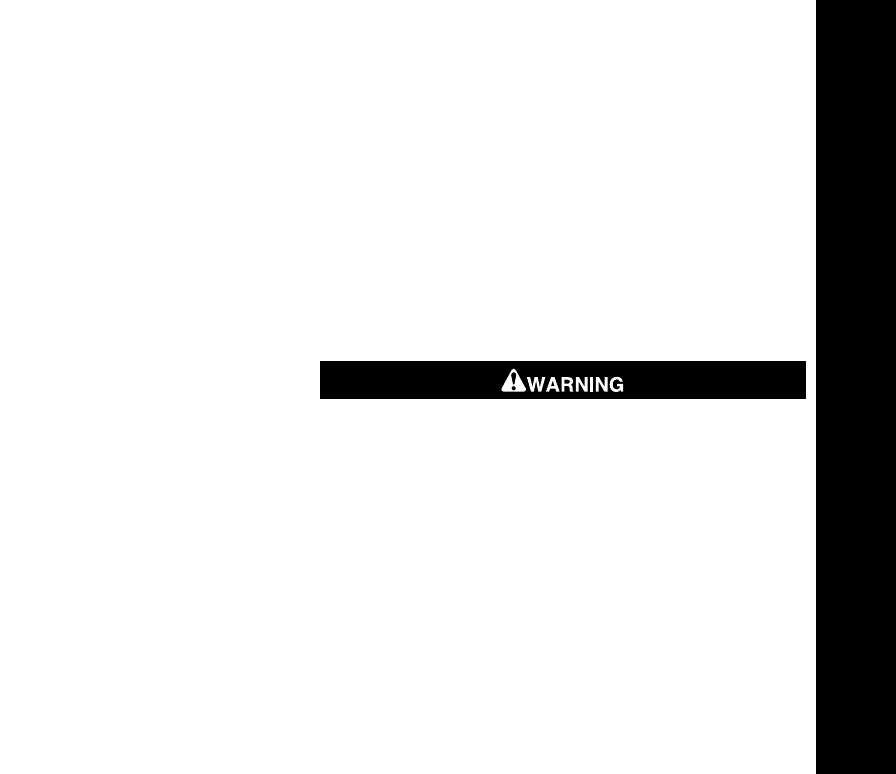
REMOVING MOTORCYCLE FROM
STORAGE
1. Charge and install the battery. See SERVICE PROCED-
URES, Battery Maintenance.
2. Inspect spark plugs. See SCHEDULED MAINTENANCE,
Replacing Spark Plugs.
3. Inspect air filter and replace if necessary. See SCHED-
ULED MAINTENANCE, Inspecting Air Filter.
4. Inspect drive belt and sprocket. See SCHEDULED
MAINTENANCE, Checking Drive Belt and Sprockets.
5. Perform the items in the BEFORE RIDING, Pre-Ride
Checklist.
PRE-RIDE CHECKLIST
1. Check the amount of fuel in the tank. Add fuel if required.
See BEFORE RIDING, Filling the Fuel Tank.
2. Adjust mirrors to proper riding positions. See BEFORE
RIDING, Adjusting Mirrors.
3. Check the engine oil level. See SCHEDULED MAINTEN-
ANCE, Checking Engine Oil Level.
4. Check the coolant level. See SCHEDULED MAINTEN-
ANCE, Coolant.
5. Check brake fluid level. See SCHEDULED MAINTEN-
ANCE, Checking Brake Fluid Level and Changing Brake
Fluid.
6. Inspect brake pads and discs for wear. See SCHEDULED
MAINTENANCE, Inspecting Brake Pads and Discs.
7. Check the hand and foot controls to be sure they are
operating properly. Operate the front and rear brakes,
throttle, clutch and shifter. See OPERATION.
8. Check throttle and brake cables for wear or damage.
9. Check steering for smoothness by turning the handlebar
through the full operating range.
Be sure tires are properly inflated, balanced, undamaged,
and have adequate tread. Inspect your tires regularly and
see a Harley-Davidson dealer for replacements. Riding
with excessively worn, unbalanced, improperly inflated,
overloaded or damaged tires can lead to tire failure and
adversely affect stability and handling, which could result
in death or serious injury. (00014b)
10. Check tire condition, pressure and motorcycle loading.
Refer to tire specifications on Table 21 for correct inflation
pressure. Refer to Table 22 for weight allowances.
35
BEFORE RIDING
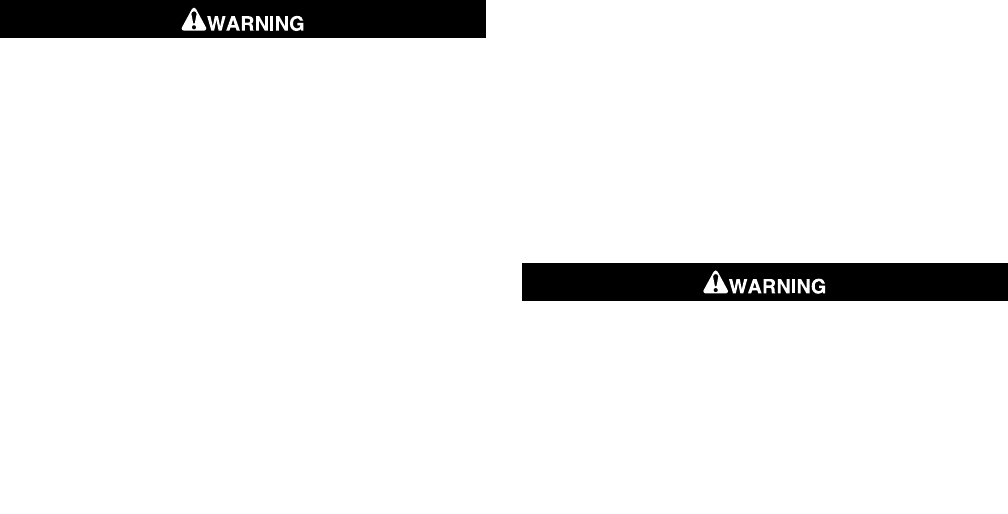
11. Check rear shock settings. Adjust if necessary. See
BEFORE RIDING, Adjusting Shock Absorbers.
12. Check for any fuel, oil, coolant or hydraulic fluid leaks.
13. Check drive belt tension. See SCHEDULED MAINTEN-
ANCE, Checking Drive Belt and Sprockets.
Be sure headlamp, tail and stop lamp and turn signals are
operating properly before riding. Poor visibility of rider to
other motorists can result in death or serious injury.
(00478b)
14. Check all electrical equipment and switches including the
stop lamp, turn signals and horn, for proper operation.
15. Service your motorcycle as necessary.
BREAK-IN RIDING RULES
The First 800 Kilometers (500 Miles)
The sound design, quality materials, and workmanship that
are built into your new Harley-Davidson will give you optimum
performance.
To allow your engine to break-in in its critical parts, we
recommend that you observe the riding rules provided below
for the first 800 km (500 mi). Adhering to these rules will pro-
mote future durability and performance of the motorcycle.
1. During the first 80 km (50 mi) of riding, keep the engine
speed below 5000 rpm in any gear. Do not labor the
engine by running or accelerating at very low RPM, or by
running at high rpm longer than needed for shifting or
passing.
2. Up to 800 km (500 mi), vary the engine speed and avoid
operating at any steady engine speed for long periods.
Engine speed up to 7000 rpm in any gear is permissible.
3. Drive slowly and avoid fast starts at wide open throttle
until the engine has warmed up.
4. Avoid hard braking. New brakes need to be worn in by
moderate use for the first 160 km (100 mi).
FILLING THE FUEL TANK
Avoid spills. Slowly remove filler cap. Do not fill above
bottom of filler neck insert, leaving air space for fuel
expansion. Secure filler cap after refueling. Gasoline is
extremely flammable and highly explosive, which could
result in death or serious injury. (00028a)
36 Before Riding
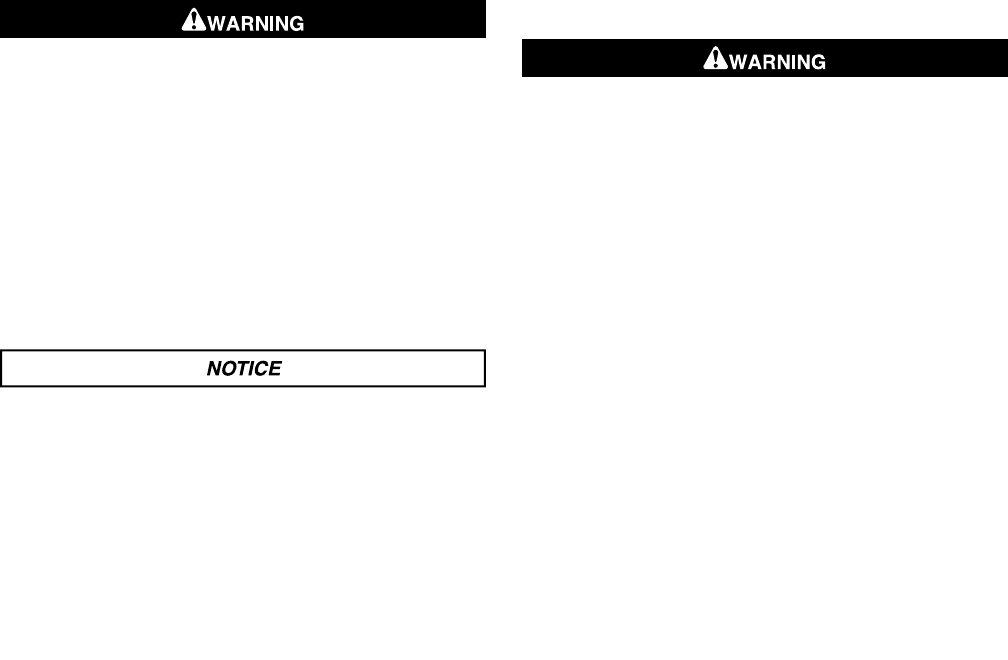
Use care when refueling. Pressurized air in fuel tank can
force gasoline to escape through filler tube. Gasoline is
extremely flammable and highly explosive, which could
result in death or serious injury. (00029a)
Removing Fuel Filler Cap
1. See Figure 11. Insert the ignition key into the key slot (2).
NOTE
The cap pops up as the key is turned.
2. Turn the key clockwise.
3. Remove the filler cap.
Do not spill fuel onto the motorcycle while refueling.
Immediately wipe up fuel spills on your motorcycle. Fuel
can cause damage to cosmetic surfaces. (00147b)
4. Fill the tank. Use only recommended fuel. See BEFORE
RIDING, Fuel System Information.
Installing Fuel Filler Cap
Do not use aftermarket fuel caps. Aftermarket fuel caps
may fit improperly and leak, which could lead to death or
serious injury. See a Harley-Davidson dealer for approved
fuel caps. (00034a)
NOTE
The arrow on the cap points to an index tab on the cap. The
index tab aligns with a slot in the fuel opening in the tank.
1. Install the fuel filler cap with alignment arrow (1) pointing
toward the front.
2. Press down around the cap to compress the cap spring.
3. Turn the ignition key counterclockwise to lock the cap.
Before Riding 37
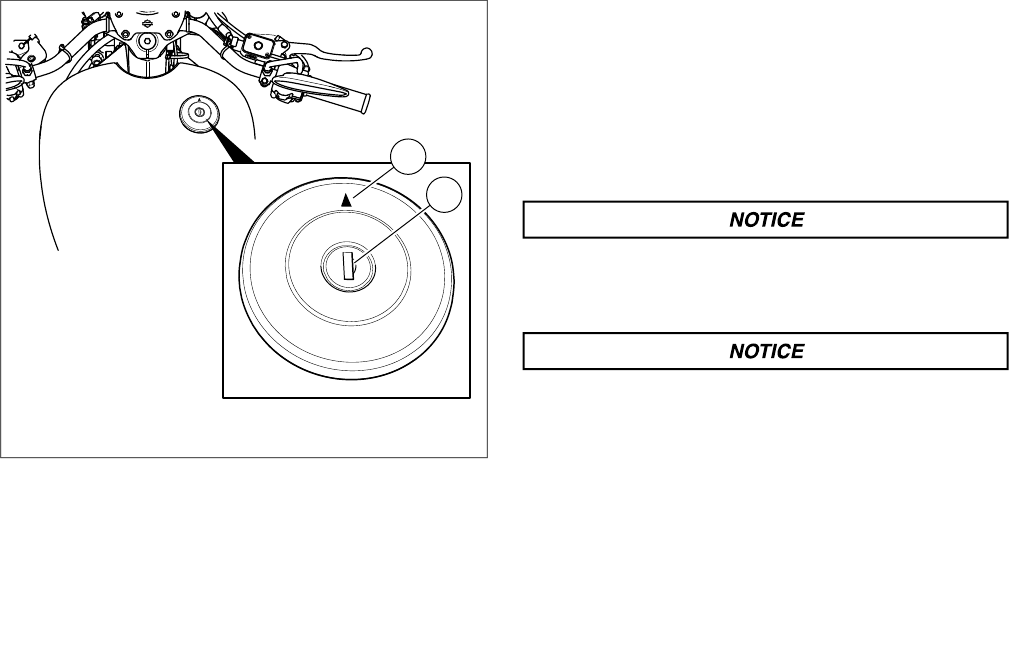
1
2
om01895
1. Alignment arrow
2. Key slot
Figure 11. Fuel Filler Cap
FUEL SYSTEM INFORMATION
Gasoline
Your motorcycle was designed to get the best performance
and efficiency using unleaded gasoline. Most gasoline is
blended with alcohol and/or ether to create oxygenated blends.
The type and amount of alcohol or ether added to the fuel is
important.
Do not use gasoline that contains methanol. Doing so can
result in fuel system component failure, engine damage
and/or equipment malfunction. (00148a)
Use only unleaded fuel in catalytic converter-equipped
motorcycles. Using leaded fuel will damage the emission
control system. (00150b)
•Gasoline/METHYL TERTIARY BUTYL ETHER (MTBE)
blends are a mixture of gasoline and as much as 15%
38 Before Riding
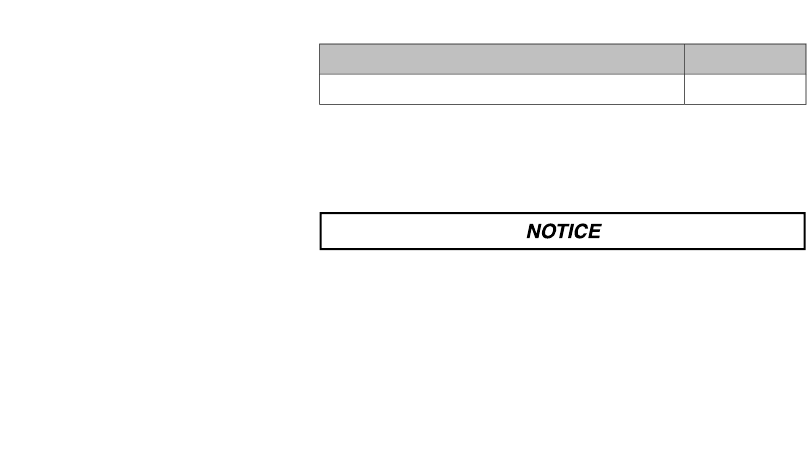
MTBE. Gasoline/MTBE blends use in your motorcycle is
approved.
•ETHANOL fuel is a mixture of ethanol (grain alcohol) and
unleaded gasoline and can have an impact on fuel
mileage. Fuels with an ethanol content of up to 10% may
be used in your motorcycle without affecting vehicle per-
formance. U.S. EPA regulations currently indicate that
fuels with 15% ethanol (E15) are restricted from use in
motorcycles at the time of this publication. Some motor-
cycles are calibrated to operate with higher ethanol con-
centrations to meet the fuel standards in certain countries.
•REFORMULATED OR OXYGENATED GASOLINES
(RFG) describes gasoline blends that are specifically
designed to burn cleaner than other types of gasoline.
This results in fewer tailpipe emissions. They are also
formulated to evaporate less when filling the tank. Refor-
mulated gasolines use additives to oxygenate the gas.
Your motorcycle will run normally using this type of fuel.
Harley-Davidson recommends using it whenever possible
as an aid to cleaner air in our environment.
•Do not use racing fuel or fuel containing methanol. Use
of these fuels will damage the fuel system.
•The only octane booster Harley-Davidson recommends
is SCREAMIN' EAGLE SUPER OCTANE BOOST (avail-
able only in the U.S.).This is the only octane booster that
has been extensively tested and approved for use with
Harley-Davidson engines and components.
•Some gasoline blends might adversely affect starting,
driveability or fuel efficiency. If any of these problems are
experienced, try a different brand of gasoline or gasoline
with a higher octane blend.
Air entrapment and pressurization is a possibility.
Table 4. Minimum Octane Ratings
RATINGSPECIFICATION
87 (91 RON)Pump Octane (R+M)/2
Catalytic Converter
Vehicles in some markets are equipped with catalytic con-
verters.
Do not operate catalytic converter-equipped vehicle with
engine misfire. If you operate the vehicle under this condi-
tion, the exhaust will become abnormally hot, which can
cause vehicle damage, including emission control loss.
(00149c)
Before Riding 39
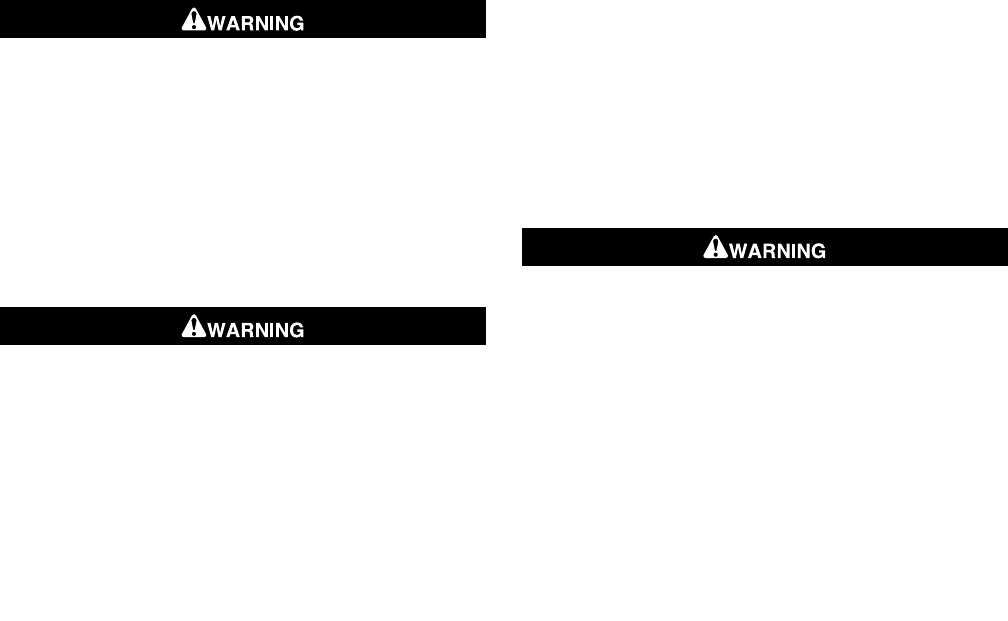
ADJUSTING MIRRORS
Objects in mirrors are closer than they appear. Use caution
when judging distance of objects in mirrors. Failure to
judge correct distances could result in death or serious
injury. (00033a)
Adjust mirrors so you can see a small portion of your shoulders
in each mirror.This will help you establish the relative distance
of vehicles to the rear of your motorcycle.
OPERATING JIFFY STAND
Location
Be sure jiffy stand is fully retracted before riding. If jiffy
stand is not fully retracted, it can contact the road surface
causing a loss of vehicle control, which could result in
death or serious injury. (00007a)
See Figure 6. The jiffy stand (5) is located on the left side of
the motorcycle.
Jiffy Stand Switch: International Models
Some international models have a jiffy stand interlock switch.
The motorcycle will start and run with the jiffy stand down while
the transmission is in neutral. If the jiffy stand is down and the
transmission in gear, engaging the clutch stalls the motorcycle.
Raising the jiffy stand or putting the transmission in neutral will
permit the engine to run.
If the jiffy stand lowers at a speed greater than 15 km/h (10
mph), the engine will continue to run and the rider may continue
to ride while in this mode.
Always park motorcycle on a level, firm surface. An
unbalanced motorcycle can fall over, which could result
in death or serious injury. (00039a)
ADJUSTING SHOCK ABSORBERS
General
Adjust the rear shock absorber spring preload for the weight
the motorcycle is to carry. Notice the adjustment settings as
you turn the collar.
Adjust both shocks the same number of turns.
40 Before Riding
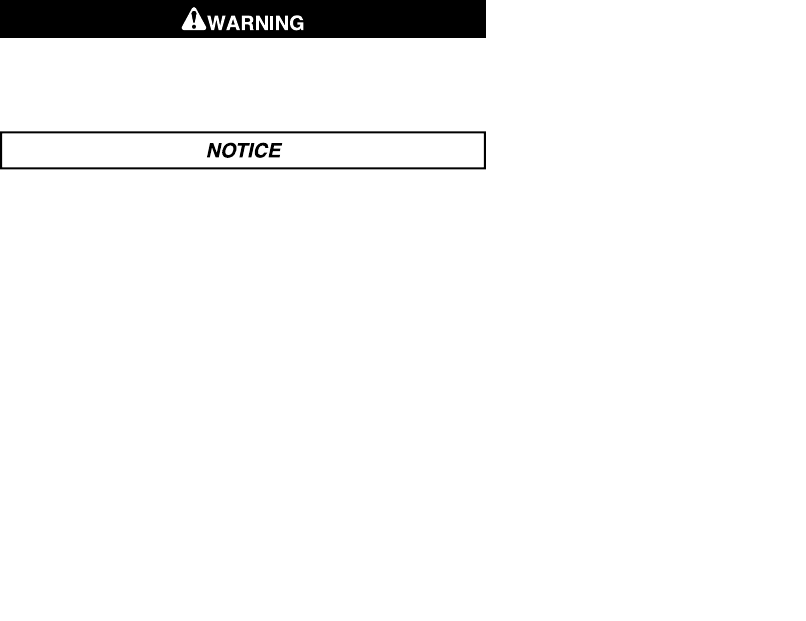
Adjustment
Adjust both shock absorbers equally. Improper adjustment
can adversely affect stability and handling, which could
result in death or serious injury. (00036b)
Do not turn the shock absorber adjustment collar clock-
wise beyond adjustment setting 5. Doing so may result in
equipment damage. (00166b)
NOTE
See Figure 12. Do not turn the preload cam from position five
(5) to position one (1) or from position one (1) to position five
(5).
1. Put the SPANNER WRENCH (Part No. HD-51439) around
the lower collar of the shock absorber.
2. Turn the spring adjusting cam to the desired position.
When returning to off-cam position, back the cams off in
the opposite direction.
a. Turn the collar toward higher numbers to increase
the preload. Refer to Table 5.
b. Turn the collar toward the lower numbers to decrease
the preload.
Before Riding 41
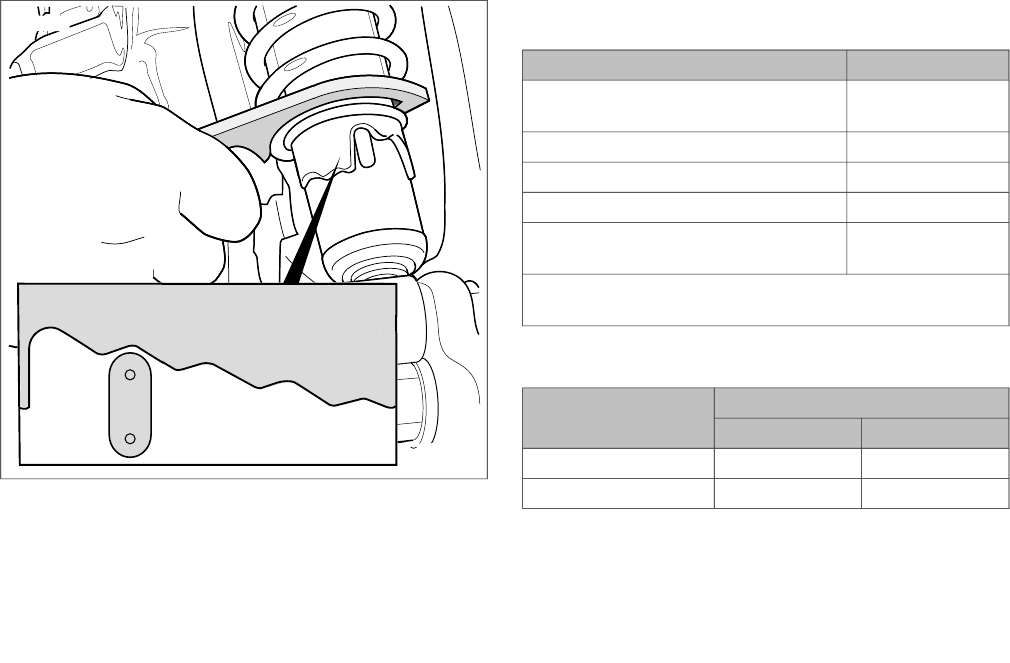
12345
om02125
Figure 12. Shock Absorber Preload Adjustment
Table 5. Recommended Shock Preload: Five Position
POSITIONLOAD*
1Less than
75 kg (165 lb)
275-89 kg (165-195 lb)
389-102 kg (195-225 lb)
4102-116 kg (225-255 lb)
5116 kg (255 lb)
to maximum added weight allowed.
* Add the weight of the rider, passenger, riding gear,
accessories, and cargo.
Table 6. Maximum Added Weight Allowed
MAX LOADMODEL
lbkg
461209XG500
461209XG750
42 Before Riding
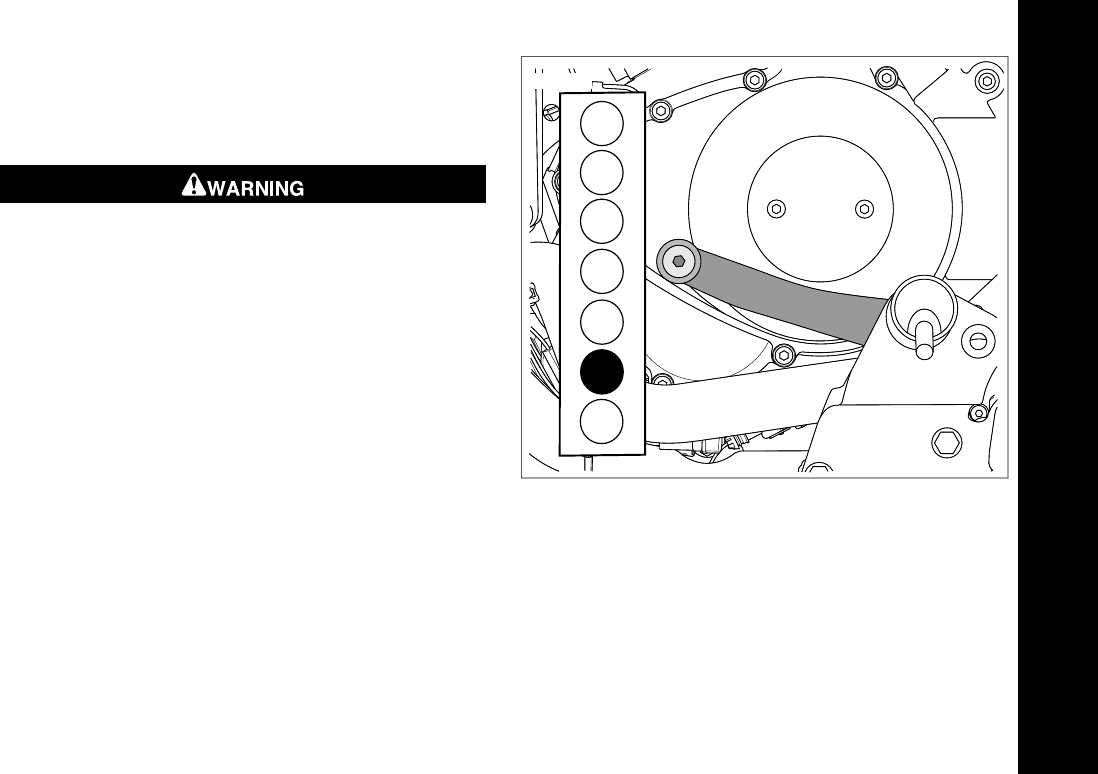
CONTROLS, INSTRUMENTS AND
SWITCHES
Clutch Hand Lever
Do not position fingers between hand control lever and
handlebar grip. Improper hand positioning can impair
control lever operation and cause loss of vehicle control,
which could result in death or serious injury. (00032a)
See Figure 4. The clutch hand lever (1) is operated with the
fingers of the left hand. See OPERATION, Shifting Gears.
Gear Shift Lever
See Figure 13. The gear shift lever is operated with the left
foot. Neutral is found between first and second gear in the six
speed shift pattern. See OPERATION, Shifting Gears.
N
2
3
4
5
1
6
om02128
Figure 13. Shift Pattern and Shift Lever
Left-Hand Control Module
See Figure 4. Operate the switches on the left hand control
module (2) with the thumb of the left hand. See OPERATION,
Left Hand Control Switches.
43
OPERATION
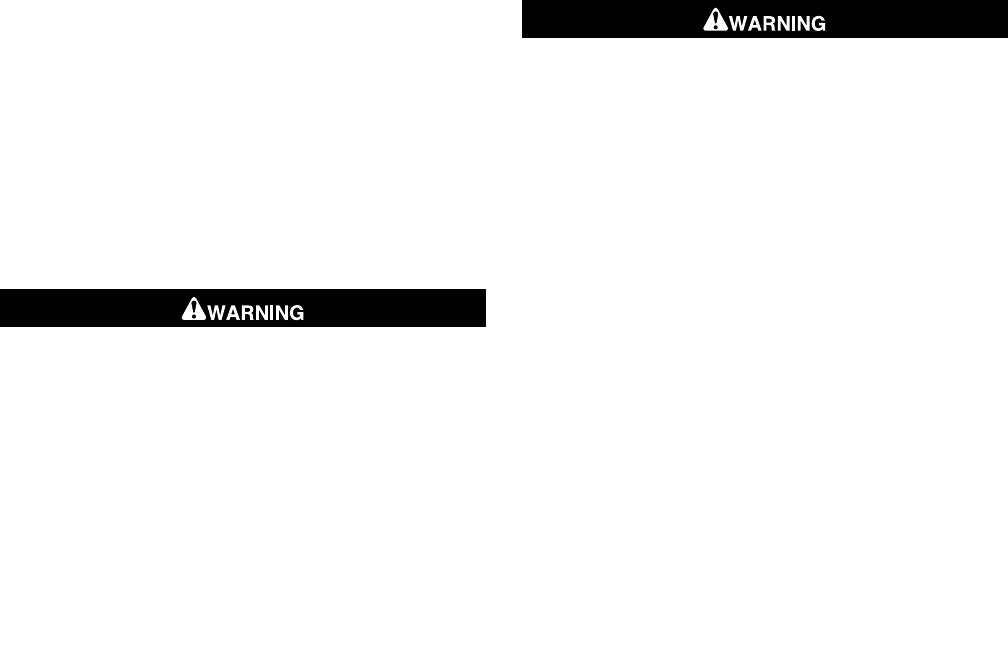
Speedometer/Odometer
See Figure 4. The current road speed is displayed in the
speedometer (3).The accumulated mileage and individual trip
mileage is displayed in the odometer window in the face of the
speedometer. See OPERATION, Instruments.
Right-Hand Control Module
See Figure 4. Operate the switches on the right hand control
module (4) with the thumb of the right hand. See OPERATION,
Right Hand Control Switches.
Brakes
Do not position fingers between hand control lever and
handlebar grip. Improper hand positioning can impair
control lever operation and cause loss of vehicle control,
which could result in death or serious injury. (00032a)
Front brake lever: See Figure 4. The front brake lever (5)
controls the front brake. Operate the hand lever with the fingers
of the right hand.
Rear brake pedal: See Figure 5. The rear brake pedal (6)
activates the rear wheel brake.
Do not apply brake strongly enough to lock the wheel. A
locked wheel will skid and can cause loss of vehicle con-
trol, which could result in death or serious injury. (00053a)
Apply brakes evenly to prevent wheels from locking up. A bal-
ance between rear and front brake is best.
Throttle Twist Grip
Accelerate: See Figure 4. Slowly twist throttle twist grip (6)
backward (toward rear of motorcycle) to open the throttle.
Decelerate: Slowly twist throttle control grip forward (toward
the front) to close the throttle.
Ignition Switch
NOTE
Required by law, the headlamp and tail lamps operate when
the switch is in the IGNITION position.
See Figure 4. Unlock the ignition switch (7) with the ignition
key. Rotate the switch to the desired position. Refer to Table 7.
To start the engine, see OPERATION, Starting the Engine.
44 Operation
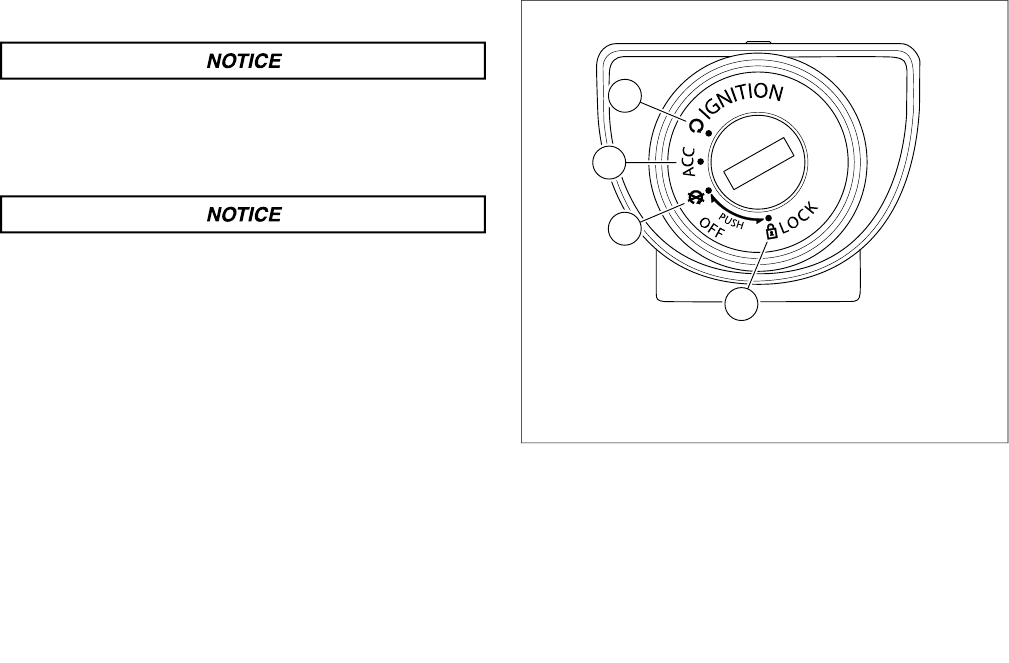
Fork Lock
Turn the ignition switch to the OFF position before locking
the motorcycle. Leaving the switch in the ACC position
will keep the instrument lights on and result in a dis-
charged battery. (00492b)
Protect your vehicle against theft. After parking your
motorcycle, lock the steering head and ignition switch.
Failure to lock your motorcycle can result in theft and/or
equipment damage. (00491c)
See Figure 14. Park your motorcycle. Use the fork lock to dis-
courage theft or unauthorized use. Refer to Table 7.
1. Turn the fork full left.
2. Insert the key into the switch.
3. Push the key in and turn to LOCK.
4. Remove the key.
1
2
3
4
om02127
1. IGNITION
2. ACC
3. OFF
4. LOCK
Figure 14. Ignition and Fork Lock Switch
Operation 45
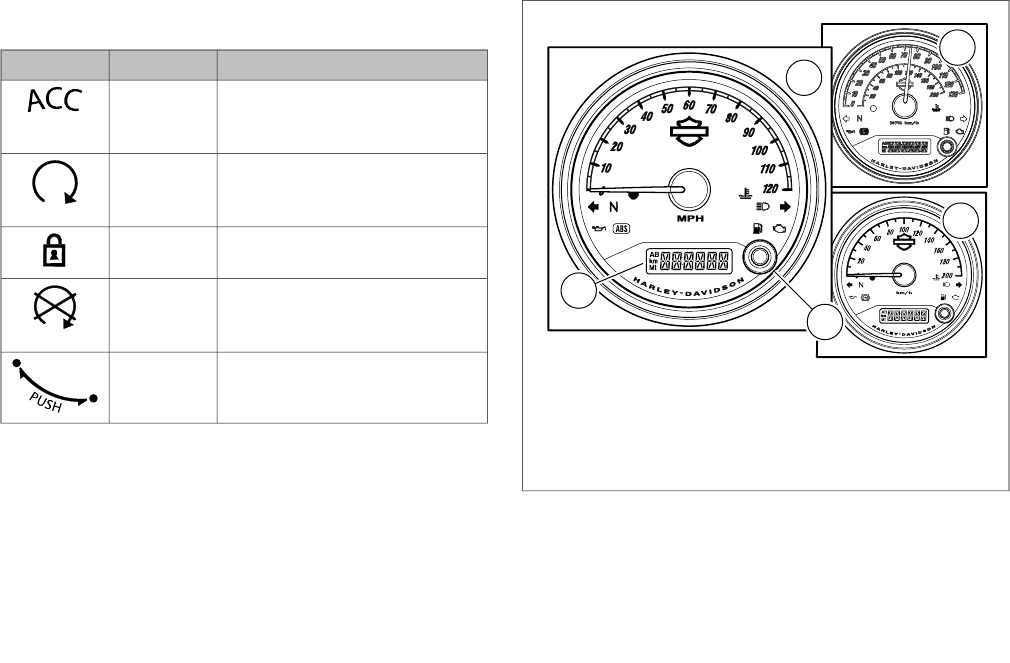
Table 7. Ignition Switch and Fork Lock
FUNCTIONNAMESWITCH
Turns on accessories. Instrument
lamps are on. Brake lamp and
horn can be activated.
ACC
Turns on ignition, lamps and
accessories.The engine will start
and run.
IGNITION
Front fork locked.LOCK
Turns off ignition, lamps and
accessories. Motorcycle is turned
off and cannot be started.
OFF
Push to lock the front fork.PUSH
INSTRUMENTS
Speedometer
See Figure 15. The speedometer is calibrated in miles per
hour, (mph) (1), kilometer per hour (km/h) (3) or in dual miles
per hour (mph) and kilometers per hour (km/h) (2).
1
5
4
2
3
om02259a
1. mph
2. mph/km/h
3. km/h
4. Odometer toggle button
5. Odometer/tachometer display
Figure 15. Speedometer/Tachometer
46 Operation
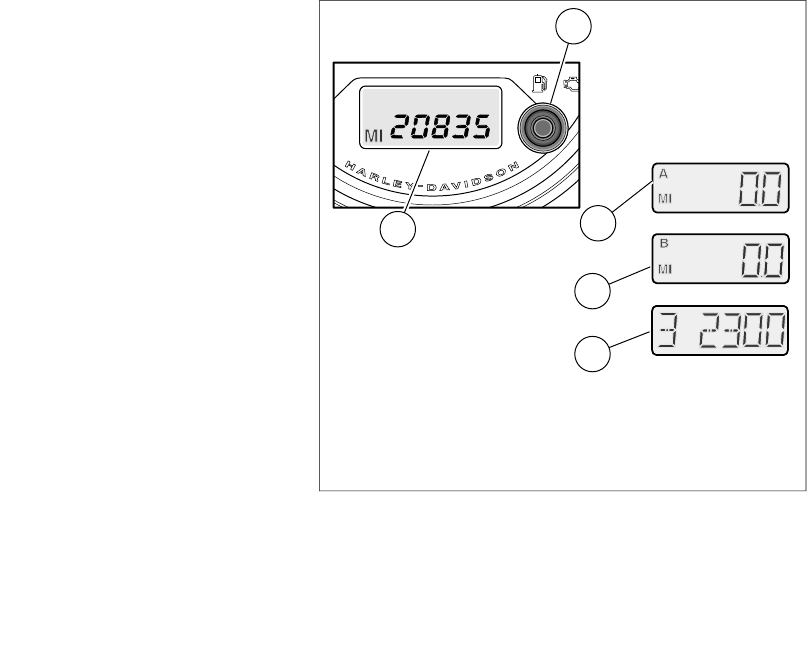
Gear/Tachometer
See Figure 16. With the ignition on, press and release the
toggle switch button to toggle through the odometer displays
to the gear/tachometer display (5). The display shows the
current gear selection and the engine speed in revolutions per
minute (rpm).
NOTE
The gear selection number only changes to match the current
gear when the motorcycle is moving.
Odometer: Mileage,Trip A,Trip B
See Figure 16. With the ignition on, press and release the
toggle switch button (2) to toggle between the odometer (1),
trip odometer A (3) and trip odometer B (4).
To reset a trip odometer to zero, press and hold the toggle
switch button.
2
13
4
5
om02123c
1. Odometer
2. Toggle switch button
3. Trip A
4. Trip B
5. Gear/tachometer
Figure 16. Gear/Tachometer/Odometer
Operation 47

Odometer Messages
Low Fuel Trip Meter (LF): See Figure 17. When the low fuel
indicator illuminates in the speedometer face, a low fuel mes-
sage (LF) (1) appears in the odometer window with a mileage
number. See OPERATION, Indicators.
The displayed mileage is not the remaining fuel mileage, it is
a count up display. The displayed LF mileage indicates the
point the low fuel indicator activated.
Tip (tiP): See Figure 17. When the motorcycle is tipped over,
the work "tiP" (2) appears in the odometer window.The engine
does not restart until the ignition is reset.
To reset, pick up the motorcycle and cycle the ignition switch
OFF-IGNITION.
Fob Low Battery (FOB LOW BATT): See Figure 17. If the
battery in the security fob is low, the message "FOB LOW
BATT" (3) will scroll in the odometer widow. Change the fob
battery. See SECURITY SYSTEM, Security System Fob
Transport Mode Active (tSPORT MODE ACTIVE): See
Figure 17. The security system is in the transport mode when
the "tSPORT MODE ACTIVE" message (4) will scroll in the
odometer window. See SECURITY SYSTEM, Transport Mode.
No Fob (NO FOB): See Figure 17. When the system cannot
communicate with the fob, this message (5) is displayed. See
SECURITY SYSTEM, Troubleshooting.
48 Operation
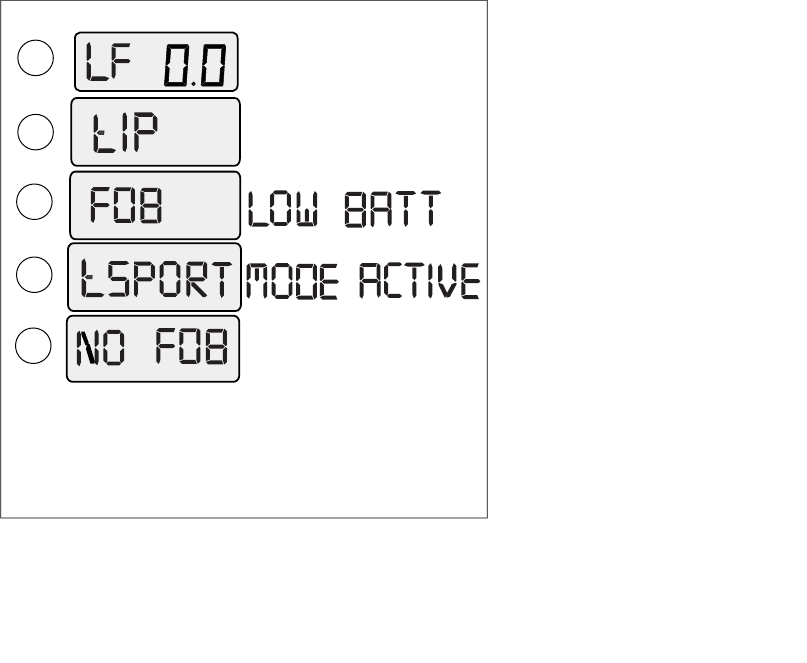
2
3
1
4
5
om02278c
1. Low fuel trip meter
2. Tip
3. Low fob battery (scroll)
4. Transport mode (scroll)
5. No fob
Figure 17. Odometer Window Messages
Clock
See Figure 18. With the ignition on, press and release the
toggle switch button to toggle through the odometer displays
to the time display.
To set the time:
1. Press and hold the toggle switch button until 12h (2) begins
blinking in the odometer display. Release the toggle.
2. Press and release the toggle once (3) to advance to a
blinking 24h or military style display. Each press and
release of the toggle, switches the display between 12h
and 24h.
3. When the desired time style is displayed, press and hold
the toggle (4) until the hours are blinking.
4. Press and release the toggle repeatedly (5) to advance
the hours.
5. When the correct hour is displayed, press and hold the
toggle until the minutes (6) start blinking.
6. Press and release the toggle switch button repeatedly to
advance the minutes display (7).
7. When the correct minute is displayed, press and hold the
toggle until the minutes stop blinking.
Operation 49
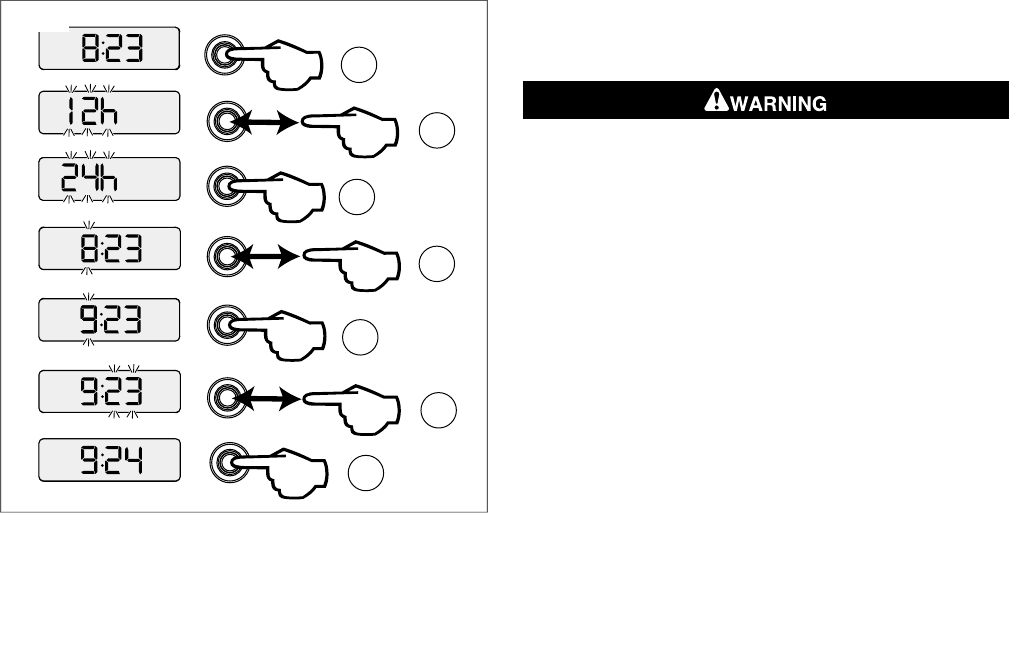
1
2
3
6
4
5
7
om02277c
Figure 18. Setting the Clock
LEFT HAND CONTROL SWITCHES
High Beam
The automatic-on headlamp feature provides increased
visibility of the rider to other motorists. Be sure headlamp
is on at all times. Poor visibility of rider to other motorists
can result in death or serious injury. (00030b)
See Figure 19. Press the high beam switch (1) to select the
headlamp high beam.The high beam indicator illuminates when
the high beam is on. Refer to Table 8.
Low Beam
See Figure 19. Press the low beam switch (2) to select the
headlamp high beam. Refer to Table 8.
Left Turn
See Figure 19. Press the turn signal switch left to activate the
left turn signal.The signal flashes until it is manually canceled.
To cancel, push the center button to center detent. Refer to
Table 8.
50 Operation
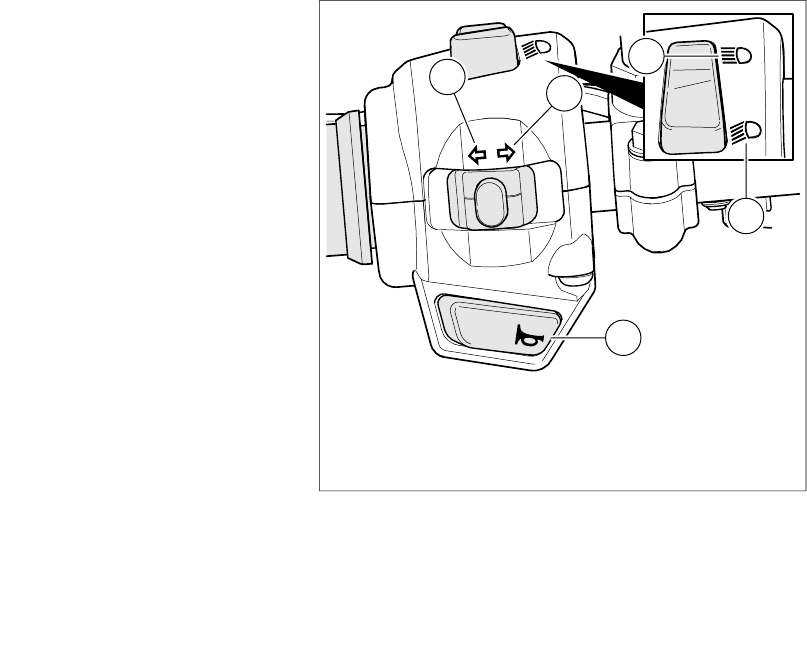
Right Turn
See Figure 19. Press the turn signal switch right to activate
the right turn signal. The signal flashes until it is manually
canceled. To cancel, push the center button to center detent.
Refer to Table 8.
Horn
See Figure 19. Press the horn switch to sound the horn. Refer
to Table 8.
31
4
5
2
om02121
1. High beam
2. Low beam
3. Left turn
4. Right turn
5. Horn
Figure 19. Left Hand Control Switches
Operation 51
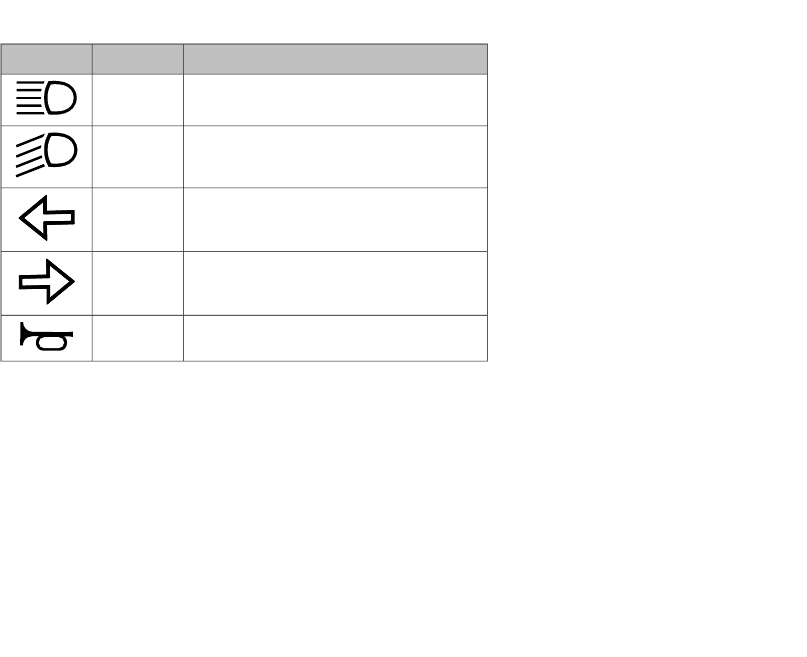
Table 8. Left Hand Control Switches
FUNCTIONNAMESWITCH
Press the switch to switch the head-
lamp to high beam.
High
beam
Press the switch to switch the head-
lamp to low beam.
Low beam
Press the switch to the left to activate
the left turn signal.
Left turn
Press the switch to the right to activate
the right turn signal.
Right turn
Press the switch to sound the horn.Horn
RIGHT HAND CONTROL SWITCHES
Off
See Figure 20. Press the off/run switch to off (1) to turn off the
engine. With the off/run switch in the off position, the engine
cannot start or run. With the off/run switch in the run position,
the engine starts and runs. Refer to Table 9.
Run
See Figure 20. Press the off/run switch to run (2) to turn on
the electrical circuits to the engine. With the off/run switch in
the run (2) position, the engine starts and runs. Refer to
Table 9.
Start
See Figure 20. With the off/run switch in run, press the start
switch (3) to start the engine. Refer to Table 9.
52 Operation
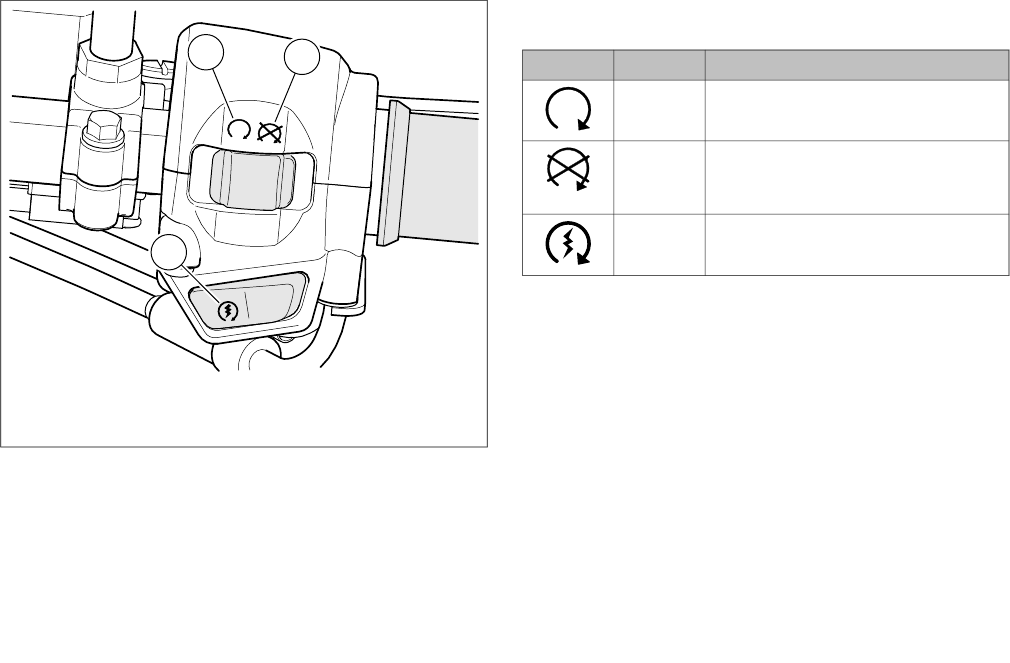
1
2
3
om02120
1. Off
2. Run
3. Start
Figure 20. Right Hand Control Switches
Table 9. Right Hand Control Switches
FUNCTIONNAMESWITCH
Press the switch to the run position to
allow the engine to run.
Run
Press the switch to the off position to
stop the engine or to prevent the
engine from starting.
Off
Press the switch to start the engine.Start
ANTI-LOCK BRAKE SYSTEM (ABS)
Identification
See Figure 21. Street models with the ABS option can be
identified by the ABS module (EHCU) mounted at the lower
left front corner in front of the radiator.
Operation 53
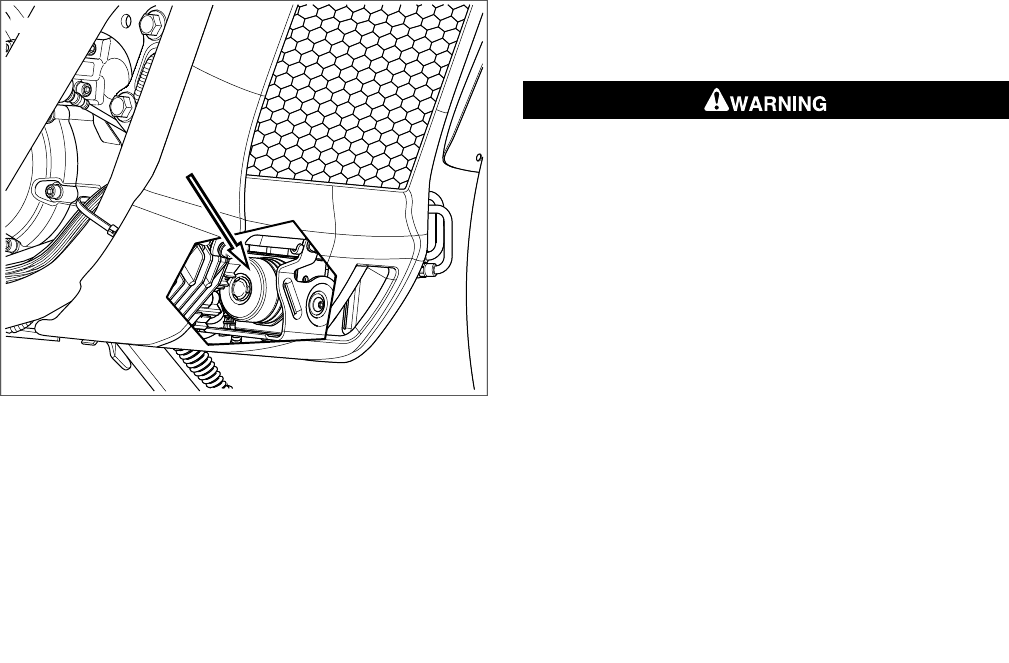
om02258
Figure 21. ABS Module (EHCU)
BRAKE SYSTEM
Front Brake Lever
Do not position fingers between hand control lever and
handlebar grip. Improper hand positioning can impair
control lever operation and cause loss of vehicle control,
which could result in death or serious injury. (00032a)
The front brake hand lever controls the front wheel brake and
is located on the right handlebar. Operate the hand lever with
the fingers of the right hand.
Rear Brake Pedal
The rear brake pedal controls the rear wheel brake and is loc-
ated on the right side. Operate the rear brake pedal with the
right foot.
Non-ABS Brake System
Apply brakes uniformly and evenly to prevent wheels from
locking. Use front and rear brakes equally for best results.
54 Operation

Do not apply brake strongly enough to lock the wheel. A
locked wheel will skid and can cause loss of vehicle con-
trol, which could result in death or serious injury. (00053a)
Anti-lock Brake System (ABS)
The optional Harley-Davidson anti-lock brake system assists
the rider in maintaining control when braking in a straight-line
emergency situation. ABS operates independently on front and
rear brakes to keep the wheels rolling and prevent uncontrolled
wheel lock-ups either on dry pavement or on slick surfaces
such as gravel, leaves or when riding in wet conditions.
How ABS Works
The ABS monitors sensors at the front and rear wheels to
determine wheel speed. If the system detects one or both
wheels are slowing down too quickly, which indicates they are
close to locking, the ABS reacts. If the deceleration rate does
not match a criteria stored in memory, the ABS also reacts.
The system rapidly opens and closes valves to modulate the
brake caliper pressure utilizing only the brake lever/pedal
pressure being applied by the rider. During ABS activation, the
system provides the electronic equivalent of manually pumping
the brakes. ABS is capable of cycling up to seven times per
second.
The rider will recognize ABS activation by the slight pulsing
sensation in the hand lever or the rear brake pedal.The pulsing
sensation may also be accompanied by a clicking sound from
the ABS module. Both are the result of normal operation. Refer
to Table 10.
How To Use ABS
While an advantage in emergency braking, ABS is not a sub-
stitute for safe riding. The safest way to stop a motorcycle is
upright with both wheels straight.
Harley-Davidson ABS is a manual assist system. When stop-
ping in an emergency stopping situation, maintain pressure on
the brakes through all ABS events. Do not modulate or "pump"
the brake controls.The wheels will not lock until the end of the
stop when motorcycle speed reaches approximately 6 km/h (4
mph) and ABS is no longer needed.
Operation 55
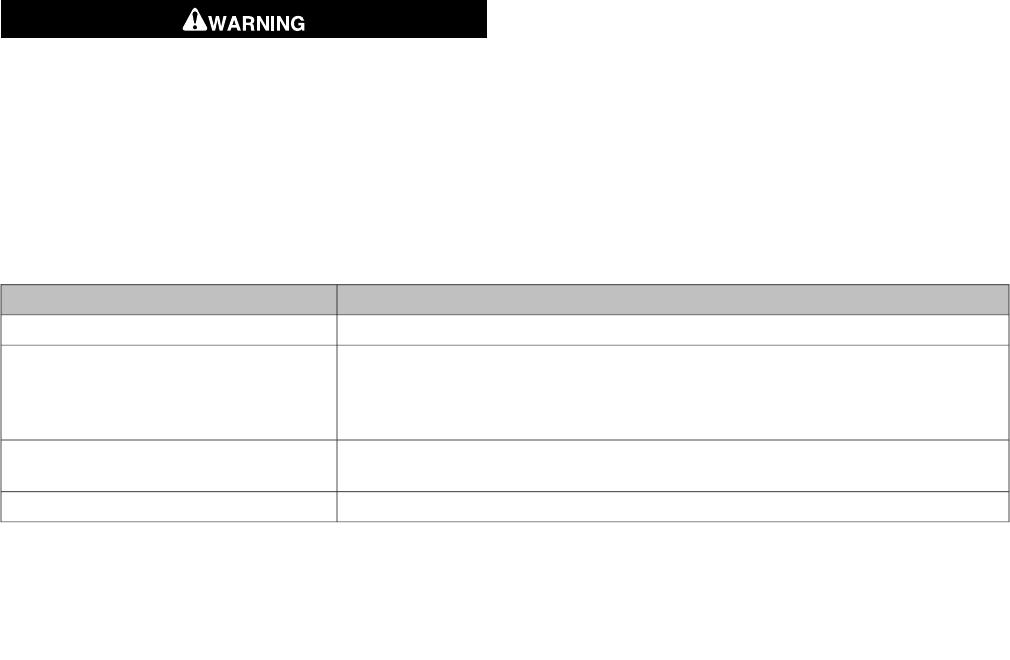
ABS cannot prevent lockup of rear wheel due to engine
braking. ABS will not aid in cornering or on loose/uneven
surfaces. A locked wheel will skid and can cause loss of
vehicle control, which could result in death or serious
injury. (00362a)
ABS:Tires and Wheels
Motorcycles equipped with ABS must always use Harley-Dav-
idson tires and wheels.The ABS monitors the rotational speed
of the wheels through individual wheel speed sensors. Chan-
ging to different diameter wheels or different-sized tires can
alter the rotational speed.This can upset the calibration of the
ABS and have an adverse effect on its ability to detect and
prevent uncontrolled wheel lockups. Operating at tire pressures
other than those specified in Table 21 can reduce ABS braking
performance.
Table 10. ABS Symptoms and Conditions
CONDITIONSYMPTOM
ABS malfunction detected. See a Harley-Davidson dealer for service.ABS lamp continuously lit
This indicates a normal self-diagnostics process when the motorcycle is first turned
on and the speed is under 5 km/h (3 mph). ABS is not operational until the lamp turns
off. If the lamp continues flashing at speeds greater than 5 km/h (3 mph), see a Harley-
Davidson dealer for service.
ABS lamp flashing
Normal condition.Pulsing brake lever or pedal during an
ABS event
Normal condition.Clicking sound during an ABS event
56 Operation
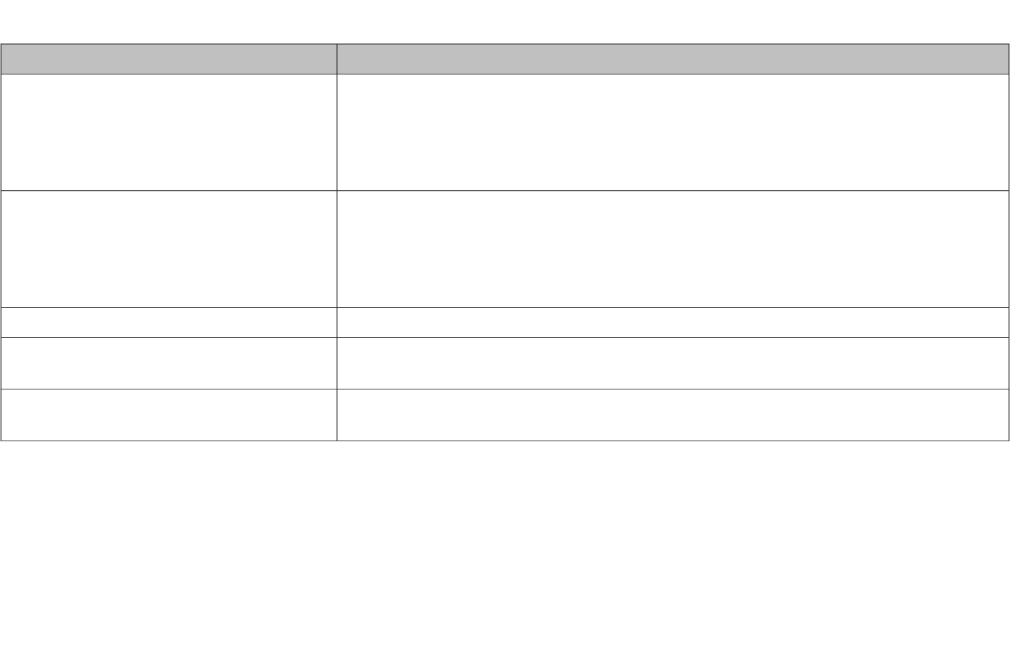
Table 10. ABS Symptoms and Conditions
CONDITIONSYMPTOM
Normal condition. This is most noticeable when braking with one brake (front only or
rear only). Result of a reduction in deceleration which can be caused by cracks or
bumps in road, engine braking (high engine RPMs causing the rear wheel to slow
down), hard braking at slow speeds, and other conditions. This is due to ABS modu-
lating caliper brake pressure to prevent uncontrolled wheel lock.
"Surge" sensation while braking
Normal condition. Engine braking (high engine RPMs causing the rear wheel to slow
down) or down shifting can activate ABS. If applying the rear brake at the same time
or immediately after, the ABS may be closing a valve to prevent pressure to the rear
brake. This is due to ABS modulating caliper brake pressure to prevent uncontrolled
wheel lock.
Temporarily stiff rear brake pedal
Normal condition. Depending on surface, tire can chirp without locking the wheel.Tire chirp
Normal condition. Depending on surface, tire can leave a black mark without locking
the wheel.
Black mark on pavement
Normal condition. ABS does not activate on front wheel below 5 km/h (3 mph) or on
rear wheel below 8 km/h (5 mph).
Wheel lock at low speed
Operation 57
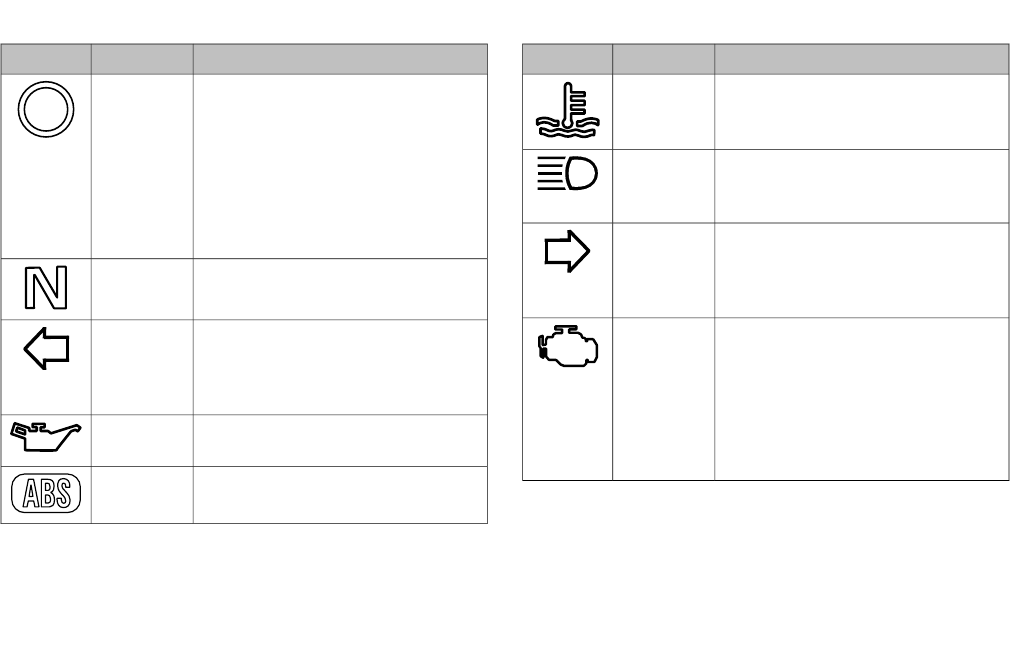
Table 11. Indicator Lights
FUNCTIONNAMEICON
Security
system •A flash every three seconds
indicates that the security
system is armed.
•Disarmed, the lamp remains
illuminated for four seconds
before turning off.
•If continuously illuminated, see
a Harley-Davidson dealer.
Illuminates when transmission is in
neutral.
Neutral
Flashes when turn signal switch is
activated for a left turn. Push center
Left turn
button on turn signal switch to
cancel.
If indicator remains lit, stop engine
and check oil level.
Oil
pressure
Flashes until 5 km/h (3 mph) and
ABS becomes operational.
ABS
Table 11. Indicator Lights
FUNCTIONNAMEICON
Illuminates when temperature
exceeds a safe maximum.
Coolant
temperature
Illuminates when high beams are on.
To switch to low beam, press the low
beam switch.
High beam
Flashes when turn signal switch is
activated for a right turn. Push center
Right turn
button on turn signal switch to
cancel.
Check •Illuminates briefly when ignition
switch is in IGNITION or ACC
position.
engine
•If indicator illuminates at any
other time, see a Harley-Dav-
idson dealer for diagnostic
assistance.
Operation 59
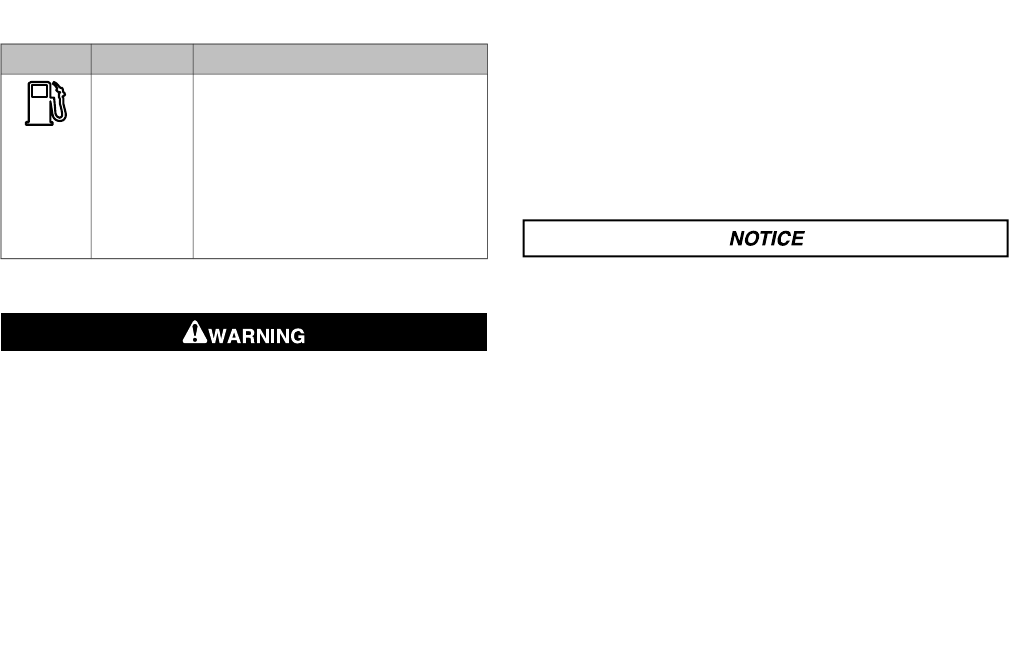
Table 11. Indicator Lights
FUNCTIONNAMEICON
•Illuminates when fuel level is at
approximately 3.1 L (0.8 gal) or
less. Fill with recommended fuel
as soon as possible.
•May remain illuminated up to 3
minutes after refueling.
•See a Harley-Davidson dealer if
lamp flashes continuously.
Low fuel
STARTING THE ENGINE
Before starting engine, be sure throttle control will snap
back to idle position when released. A throttle control that
prevents engine from automatically returning to idle can
lead to loss of control, which could result in death or ser-
ious injury. (00390a)
1. Verify that the motorcycle is in neutral.
2. Press the engine off/run switch to the run position.
3. Turn ignition switch to IGNITION. Do not twist the throttle.
NOTE
The engine lamp will light for approximately 4 seconds and the
fuel pump will run for approximately 2 seconds.
4. Squeeze the clutch lever in against the handgrip.
5. Press the start switch.
NOTE
If engine does not start, verify engine off/run switch is in run
position.
The engine should be allowed to run slowly for 30-60
seconds.This will allow the engine to warm up and let oil
reach all surfaces needing lubrication. Failure to comply
can result in engine damage. (00181b)
6. Raise the jiffy stand before beginning forward movement.
60 Operation
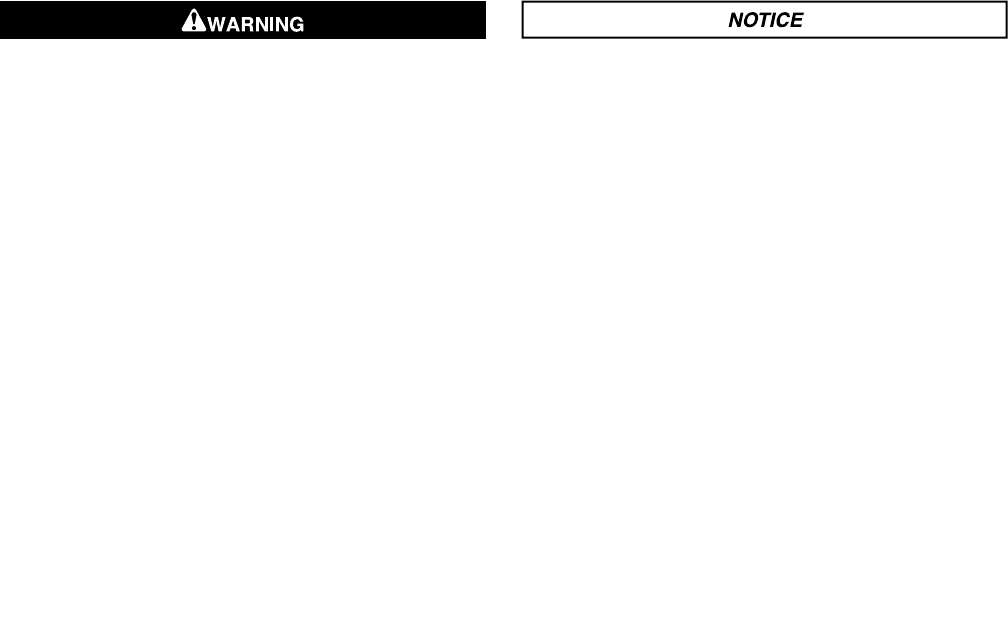
STARTING AFTER TIPOVER
If tip occurs, check all controls for proper operation.
Restricted control movement can adversely affect the
performance of the brakes, clutch or ability to shift, which
could result in loss of vehicle control and death or serious
injury. (00350a)
After a tipover, reset the ignition before starting the engine.
1. Set the motorcycle upright.
2. Reset the ignition by turning the ignition switch OFF-
IGNITION.
SHIFTING GEARS
Finding Neutral
NOTE
If the gears do not disengage when the engine is off, with the
clutch engaged rock the motorcycle backward and forward
while pressing or lifting the shift lever.
Neutral is between first and second gear. Select neutral by
either a half lift from first gear or a half press from second gear.
Starting from a Stop
The clutch must be fully disengaged before attempting a
gear shift. Failure to fully disengage the clutch can result
in equipment damage. (00182a)
NOTE
Partially open the throttle so the engine does not drag when
the clutch lever is released.
1. With the engine running and the jiffy stand retracted,
squeeze the clutch lever in against the handlebar grip to
disengage the clutch.
NOTE
Always start forward motion in first gear.
2. Press the gear shift lever down to end of its travel and
release.The transmission is now in first gear.
3. Ease out the clutch lever and at the same time, gradually
open the throttle.
Operation 61
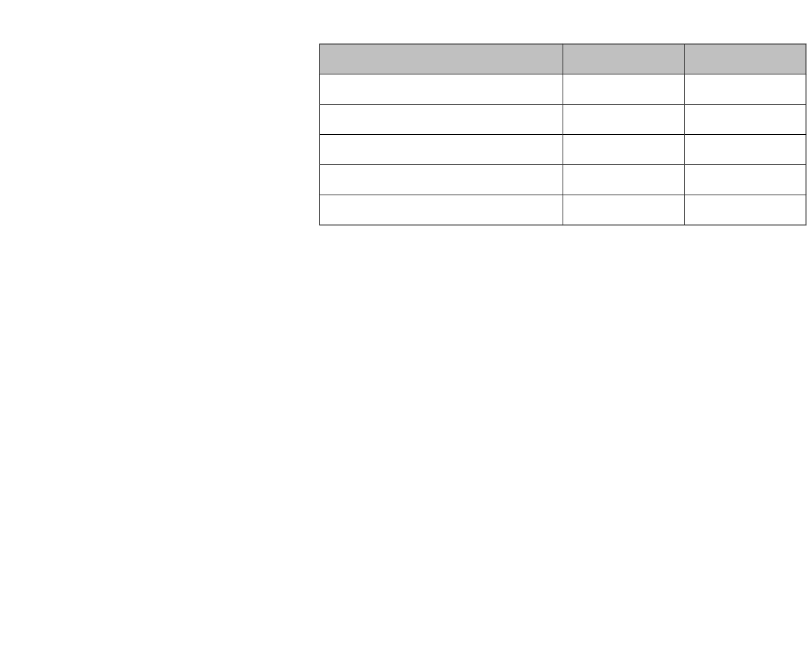
Upshift (Acceleration)
NOTE
Disengage the clutch completely before each gear change.
See Figure 23. Shift to the next higher gear when the motor-
cycle reaches the shifting speed. Refer to Table 12.
1. Close the throttle.
2. Slowly pull clutch hand lever in against handlebar grip to
fully disengage clutch.
3. Lift the gear shift lever up to the end of its travel and
release.
4. Ease out the clutch lever and, at the same time, gradually
open the throttle.
5. Repeat the previous steps to engage remaining gears.
Table 12. Recommended Upshift Speeds
km/hmphGEAR CHANGE
2515First to second
4025Second to third
5535Third to fourth
7045Fourth to fifth
8555Fifth to sixth
62 Operation
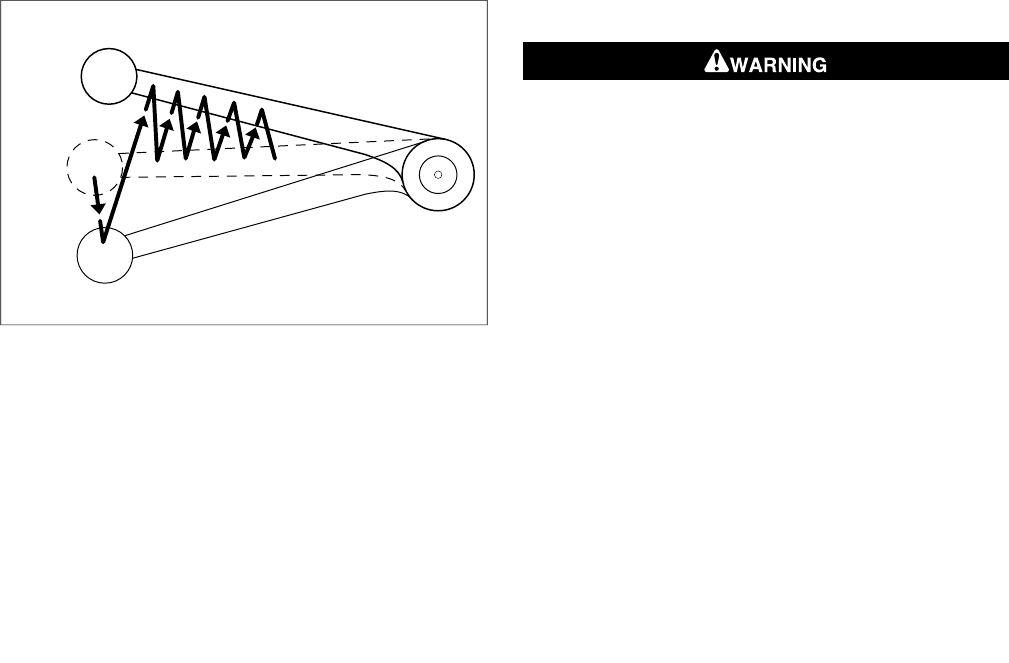
6
N
1
2345
om02129
Figure 23. Upshift Pattern
Downshift (Deceleration)
Do not downshift at speeds higher than those listed.
Shifting to lower gears when speed is too high can cause
the rear wheel to lose traction and lead to loss of vehicle
control, which could result in death or serious injury.
(00045b)
See Figure 24. When engine speed decreases, as when
climbing a hill or slowing for a turn, shift to the next lower gear.
Refer to Table 13.
1. Close the throttle.
2. Slowly pull clutch hand lever in against handlebar grip to
fully disengage clutch.
3. Press the gear shift lever down to the end of its travel and
release.
4. Ease out the clutch lever and gradually open the throttle.
5. Repeat the previous steps to engage remaining gears.
Operation 63
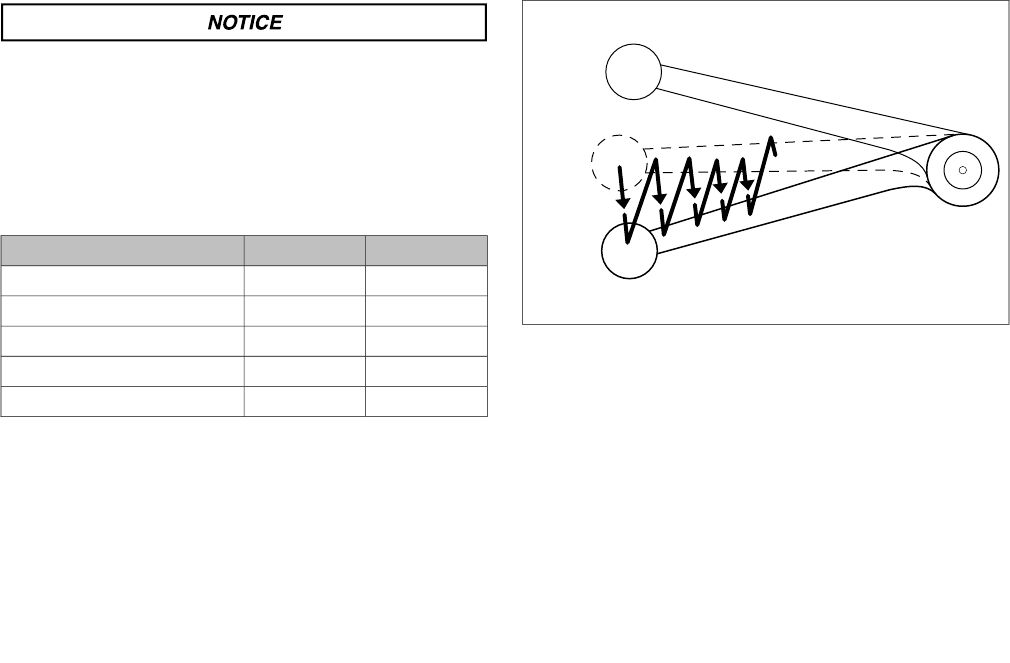
Shift to neutral before stopping engine. Shifting mech-
anism can be damaged by shifting gears while engine is
stopped. (00183a)
The gear shifter mechanism permits shifting the transmission
to neutral from either first or second gear.
Table 13. Recommended Downshift Speeds
km/hmphGEAR CHANGE
8050Sixth to fifth
6540Fifth to fourth
5030Fourth to third
3020Third to second
1510Second to first
6
54321
om02130
Figure 24. Downshift Pattern
STOPPING THE ENGINE
1. Push the off/run switch to off.
2. Turn ignition switch to off.
NOTE
If the engine stalls or stops for any reason, turn the ignition
switch off to prevent battery discharge.
64 Operation
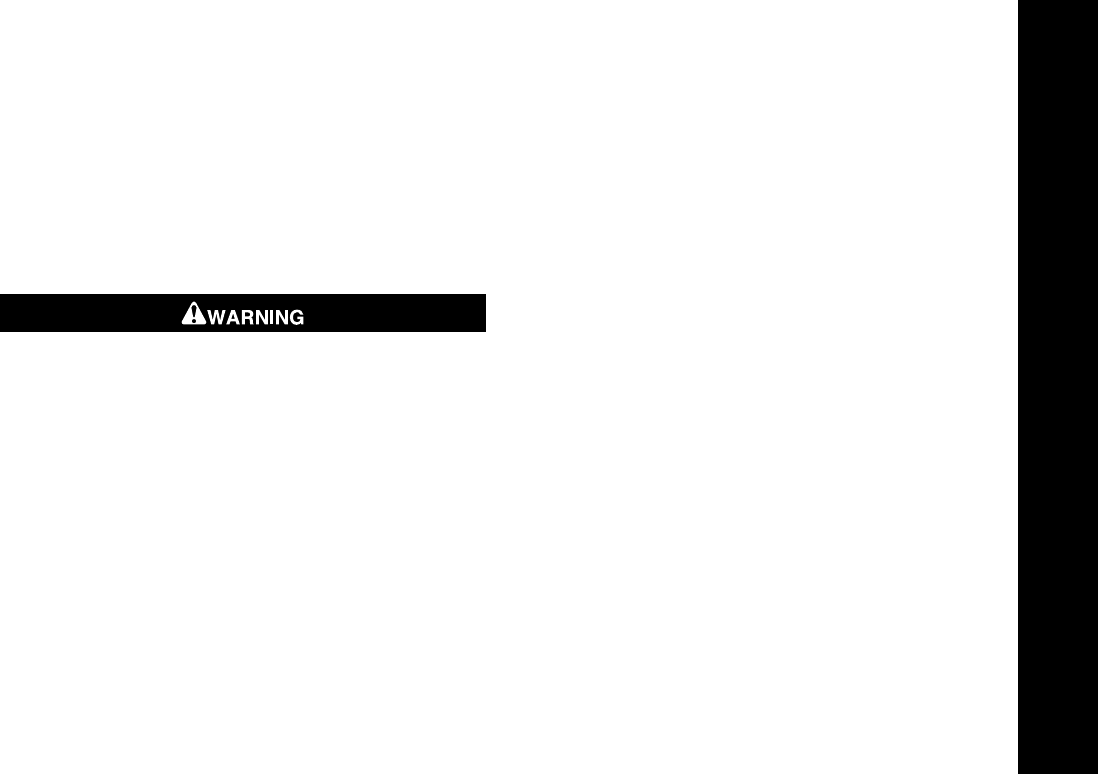
STORING MOTORCYCLE
If the motorcycle will not be operated for several months, take
steps to protect the motorcycle. Always protect parts against
corrosion, preserve the battery and prevent the build-up of gum
and varnish in the fuel before storage.
Make a list of everything you do and fasten it to a handlebar
grip. When you take the motorcycle out of storage, this list is
your reference/checklist to get your motorcycle in operating
condition.
Do not store motorcycle with gasoline in tank within the
home or garage where open flames, pilot lights, sparks or
electric motors are present. Gasoline is extremely flam-
mable and highly explosive, which could result in death
or serious injury. (00003a)
1. Fill fuel tank. Add a gasoline stabilizer. Use one of the
commercially available gasoline stabilizers and follow the
manufacturer's instructions.
2. Warm motorcycle to operating temperature. Change oil
and turn engine over to circulate the new oil. See
SCHEDULED MAINTENANCE, Changing Engine Oil and
Filter.
3. Prepare battery for storage. See SERVICE PROCED-
URES, Battery Maintenance.
4. Check and fill the cooling system. See SCHEDULED
MAINTENANCE, Coolant.
5. To protect the body panels, engine, chassis and wheels
from corrosion, follow the cosmetic care procedures before
storage. See AFTER RIDING, Cleaning and General Care.
6. Cover the motorcycle with a material such as light canvas
that breathes. Plastic materials that do not breathe pro-
mote condensation and corrosion.
CLEANING AND GENERAL CARE
•Harley-Davidson cleaning products are tested extensively
for use on motorcycle surfaces.These products are formu-
lated to be compatible with one another. See a Harley-
Davidson dealer to purchase recommended cleaning
products. Refer to Table 14 and Table 15.
•Care, cleaning and protection of the vehicle surfaces is
the responsibility of the owner.
•Clean and protect the cosmetic surfaces on your motor-
cycle as often as possible to inhibit rust and corrosion.
•Some painted finishes and other surfaces may be
scratched if gravel, dirt or grime are rubbed across the
65
AFTER RIDING

surface during washing. Use clean towels and avoid rub-
bing sediment across gloss finishes.
•Do not use paper towels, cloth diapers or other materials
with nylon fibers which can cause fine scratches to sur-
faces.
•For repair of scratched surfaces, see a Harley-Davidson
dealer.
Observe warnings on labels of cleaning compounds.
Failure to follow warnings could result in death or serious
injury. (00076a)
Do not wash brake discs with cleaners containing chlorine
or silicone. Cleaners containing chlorine and silicone can
impair brake function, which could result in death or ser-
ious injury. (00077a)
Do not use a pressure washer to clean motorcycle. Using
a pressure washer can result in equipment damage.
(00489c)
Use of abrasive products or powered buffing equipment
will cause permanent cosmetic damage to body panels.
Use only recommended products and techniques outlined
in this manual to avoid damaging body panels. (00245b)
66 After Riding
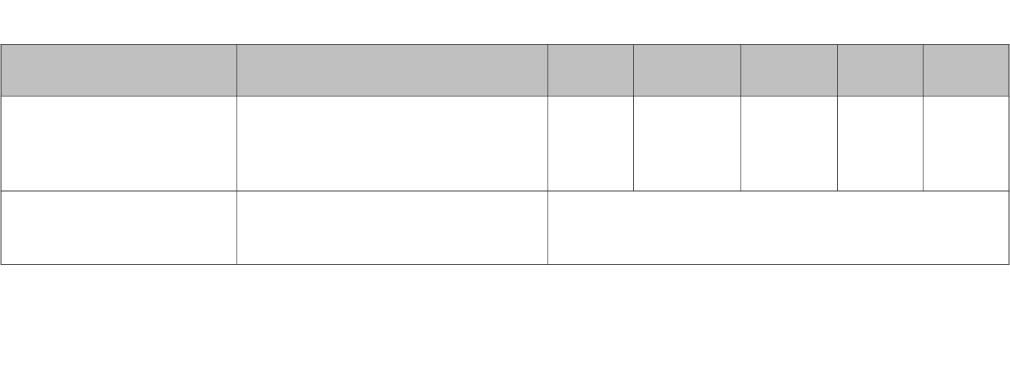
Cleaning Wheels and Tires
NOTE
Corrosion to wheels is not considered to be a defect in mater-
ials or workmanship.
•Wheels can corrode or be cosmetically damaged if they
are not properly cleaned, polished and preserved.
•Harley-Davidson recommends that wheels be cared for
weekly.
•Keep wheels clean from harsh chemicals, acid-based
wheel cleaners, salt, and accumulated brake dust.
•After washing wheels with WHEEL & TIRE CLEANER,
use the polish and sealing products according to the type
of wheels on your motorcycle. Refer to Table 14.
Radiator
See SCHEDULED MAINTENANCE, Cleaning Radiator for
important information regarding the cleaning of the radiator.
RECOMMENDED CLEANING PRODUCTS
The following products are recommended for Harley-Davidson
motorcycles, parts and accessories.Your motorcycle may not
have all the components shown in the tables.
Table 14. Recommended Cleaning and Care Products
OTHERDENIM
FINISH
WHEELSBODY
PANELS
FRAMEPURPOSEPRODUCT
PART NO.
"Burst"NoYesNoNoCorrosion control for bare aluminum
surfaces.
BARE ALUMINUM WHEEL
PROTECTANT - INDI-
VIDUAL WIPES collection
93600063
As applicablePolishes non-clear coated polished
aluminum or polished stainless steel
surfaces.
BARE METAL POLISH
93600028 (U.S.)
93600083 (Non-U.S.)
After Riding 67
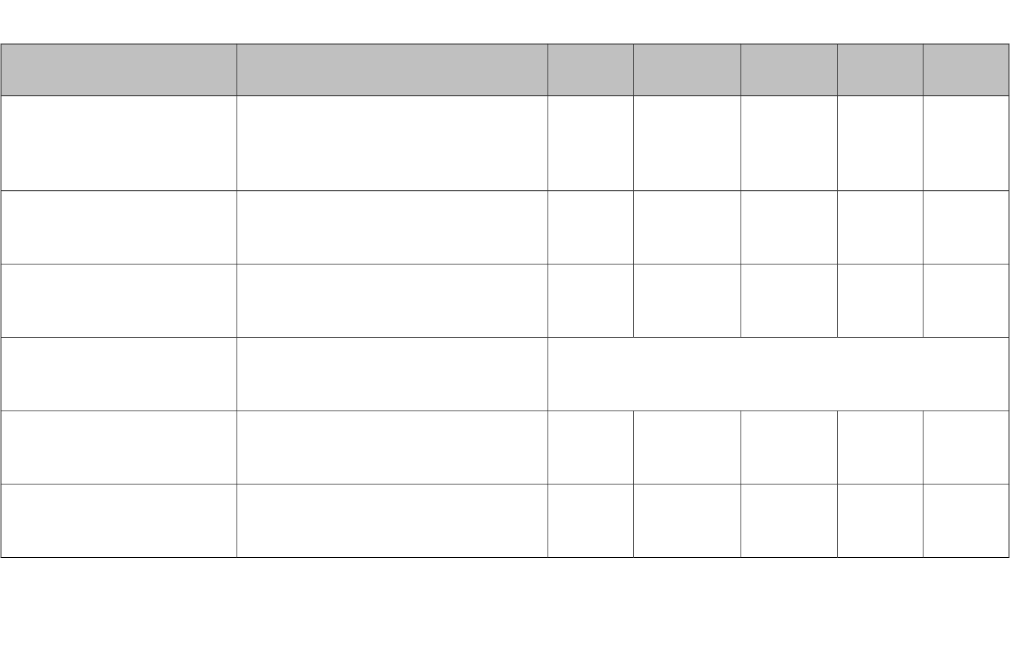
Table 14. Recommended Cleaning and Care Products
OTHERDENIM
FINISH
WHEELSBODY
PANELS
FRAMEPURPOSEPRODUCT
PART NO.
Black
leather
goods
NoNoNoNoRejuvenates black leather products so
they look brand new.
BLACK LEATHER
REJUVENATOR
93600033 (U.S.)
93600081 (Non-U.S.)
Exhaust
system
NoNoNoNoRemoves boot marks from chrome
exhaust components.
BOOT MARK REMOVER
93600001 (U.S.)
93600069 (Non-U.S.)
YesYesYesYesRemoves bugs from metal, plastic or
painted surfaces. Also available as
individual wipes (93600065).
BUG REMOVER
93600022 (U.S.)
93600075 (Non-U.S.)
As applicableShines chrome-plated surfaces and
cleans brushed aluminum or stainless
steel surfaces.
CHROME CLEAN & SHINE
93600031 (U.S.)
93600082 (Non-U.S.)
YesYesYesYesWaterless quick cleaner and detailer.DENIM PAINT CLEANER
93600064 (U.S.)
93600078 (Non-U.S.)
Wrinkle
black
engines
NoNoNoNoRejuvenates wrinkle black engine
finish.
ENGINE BRIGHTENER
93600002 (U.S.)
93600068 (Non-U.S.)
68 After Riding
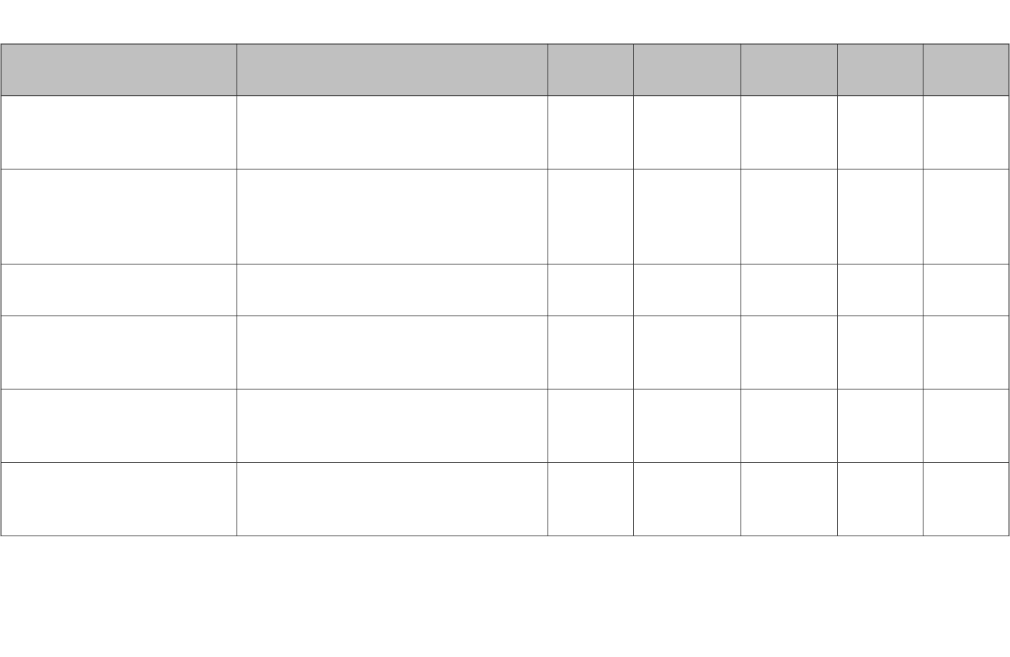
Table 14. Recommended Cleaning and Care Products
OTHERDENIM
FINISH
WHEELSBODY
PANELS
FRAMEPURPOSEPRODUCT
PART NO.
NoAs applic-
able
YesYesProvides a protective barrier for glossy
paint surfaces and chrome.
GLAZE POLY SEALANT
93600026 (U.S.)
93600079 (Non-U.S.)
NoYesYesYesProduces high gloss with UV protec-
tion. Allows chrome to breathe, unlike
wax. Good for windshields. Also avail-
able as individual wipes (97401-10).
GLOSS DETAILER
93600062 (U.S.)
93600073 (Non-U.S.)
YesYesYesYesTravel size cleaning and care products.HARLEY TRAVEL CARE KIT
93600007
Leather
goods
NoNoNoNoWeatherproofs and preserves leather
products.
LEATHER PROTECTANT
93600034 (U.S.)
93600080 (Non-U.S.)
YesYesYesYesA quick wash for a lightly soiled motor-
cycle. Cleans all surfaces, sheeting
action prevents spots.
QUICK WASH
93600012 (U.S.)
93600071 (Non-U.S.)
NoNoYesYesRemoves fine scratches and swirls.SCRATCH & SWIRL REPAIR
93600025 (U.S.)
93600074 (Non-U.S.)
After Riding 69

Table 14. Recommended Cleaning and Care Products
OTHERDENIM
FINISH
WHEELSBODY
PANELS
FRAMEPURPOSEPRODUCT
PART NO.
Seats,
saddle-
bags and
trim
NoNoNoNoCleans and conditions vinyl, leather
and plastic. Use on seats, saddlebags,
inner fairings and any other trim.
SEAT, SADDLEBAG & TRIM
CLEANER
93600010
NoYesYesYesAerosol quick cleaner and detailer.
Reduces static attraction to dust.Works
great for removing bugs.
SPRAY CLEANER &
POLISH
93600029 (U.S.)
93600084 (Non-U.S.)
YesYesYesYesThorough washing of all surfaces with
a wash mitt. Reduces hard water spots
when washing a motorcycle in the sun.
SUNWASH BIKE SOAP
93600023 (U.S.)
93600077 (Non-U.S.)
Black-
coated
exhaust
pipes and
mufflers
NoYesNoNoRemoves brake dust and road grime
from wheels, tires and whitewalls. Do
not use on frames or anodized parts.
WHEEL & TIRE CLEANER
93600024 (U.S.)
93600076 (Non-U.S.)
70 After Riding
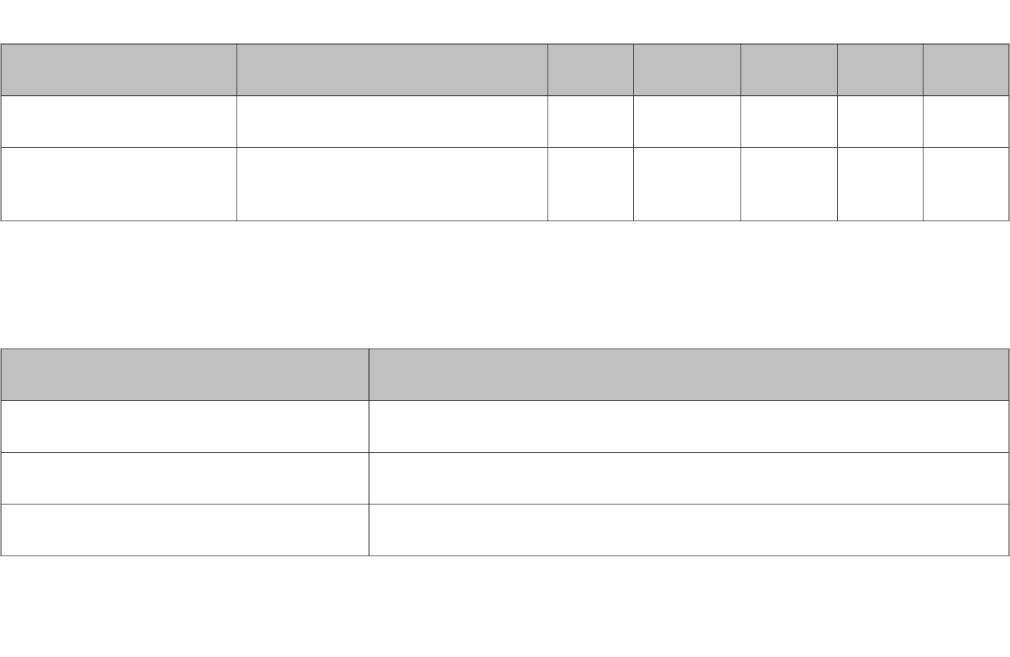
Table 14. Recommended Cleaning and Care Products
OTHERDENIM
FINISH
WHEELSBODY
PANELS
FRAMEPURPOSEPRODUCT
PART NO.
Wind-
shield
NoNoYesYesQuick windshield cleaner in convenient
single use wipe.
WINDSHIELD CLEANER
93600067
Wind-
shield
NoNoNoNoAllows water to bead and dissipate
from the windshield.
WINDSHIELD WATER
REPELLENT
93600032 (Global)
Table 15. Recommended Surface Care Products
PURPOSEPRODUCT
PART NO.
When paired with water and BUG REMOVER, the BUG EATER SPONGE breaks
down and dissolves baked on bugs and road grime.
BUG EATER SPONGE
93600110
Brush kit for detailing your motorcycle.CLEANING BRUSH KIT
94844-10
Large cotton swabs for cleaning crevices and detailed surfaces.DETAILING SWABS
93600107
After Riding 71
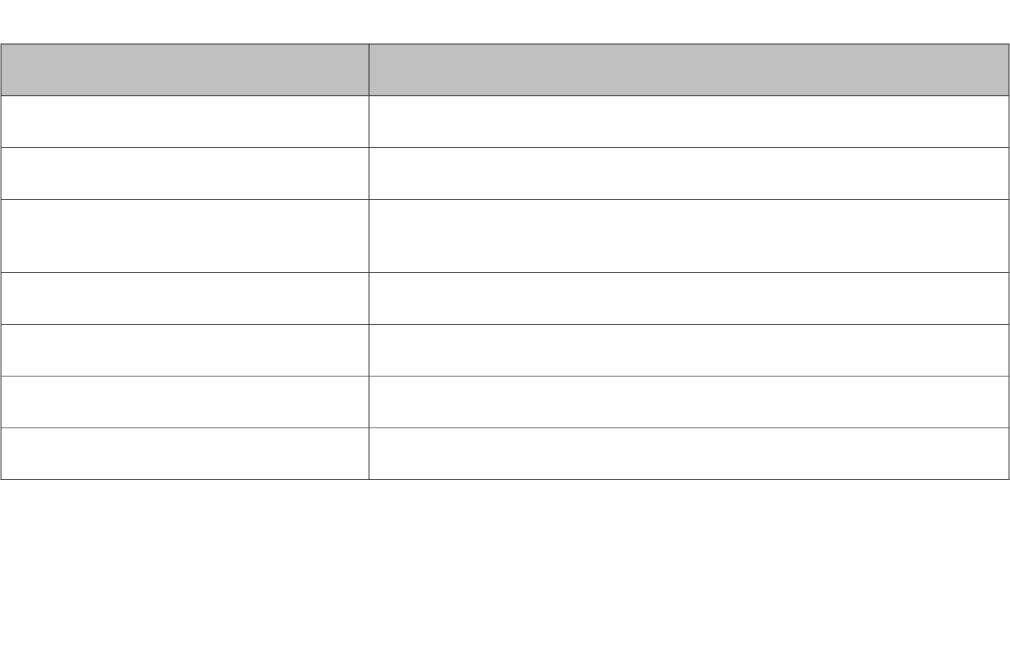
Table 15. Recommended Surface Care Products
PURPOSEPRODUCT
PART NO.
Non-absorbent cloth for applying and buffing SWIRL & SCRATCH REPAIR and
GLAZE POLY SEALANT to painted surfaces or chrome.
DISPOSABLE DETAILING SOFT CLOTH
93600114
Wash bucket with apron to hold your supplies. Includes GRIT GUARD insert.HARLEY WASH BUCKET
94811-10
Blows a stream of warm dry filtered air. Reduces streaks and water spots.HOG BLASTER MOTORCYCLE DRYER
94651-09 (120 V)
94865-09 (220 V)
Highly absorbent detailing cloth for polishing and sealing. Contains no nylon
fibers.
MICROFIBER DETAILING CLOTH
94663-02
Extra-absorbent, non-streaking synthetic towel for drying. Dampen towel and
wring out before using for greatest absorbency.
SYNTHETIC DRYING CHAMOIS
94791-01
Absorbent wool-blended washing mitten.WASH MITT
94760-99
Cone-shaped scrub brush for wheels.WHEEL & SPOKE BRUSH
43078-99
72 After Riding
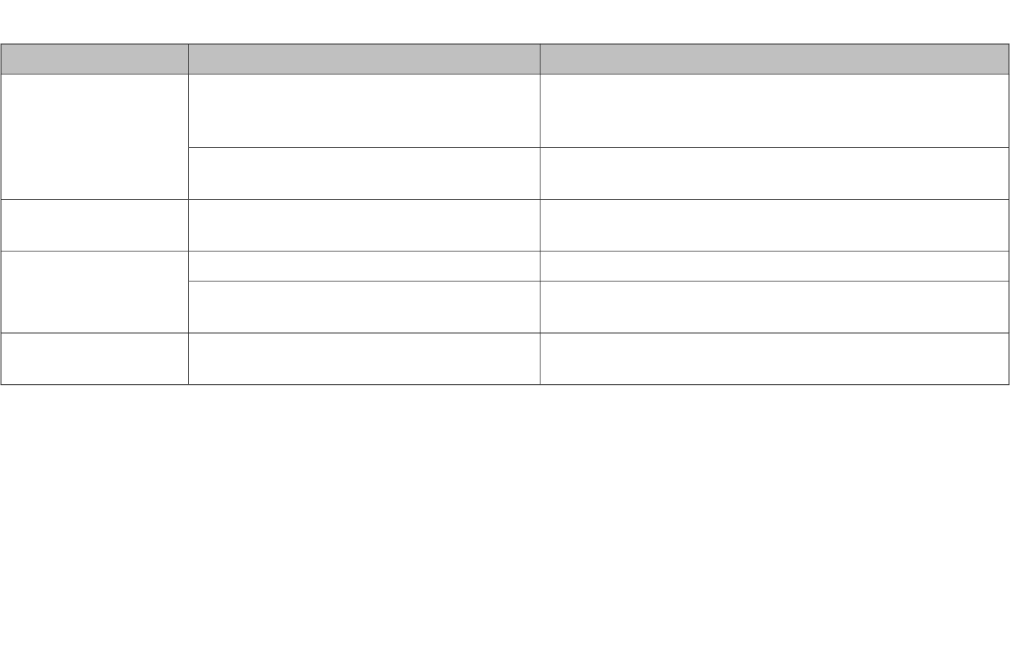
Table 16. Wheel Polish and Sealing Products
DESCRIPTIONPRODUCTWHEELS
Cleans surface, removes fine scratches. Provides a
breathable sealant against acid, chemicals, salt and brake
dust.
GLAZE POLY SEALANTAnodized
Seals and protects against harsh chemicals, salt and other
sediments to prevent corrosion.
GLOSS DETAILER
Creates a protective coating for bare aluminum wheels to
prevent oxidation. Individual wipe.
BARE ALUMINUM WHEEL PROTECTANTBare aluminum
Non-abrasive cleaner to brighten chrome wheels.CHROME CLEAN & SHINEChrome
Seals and protects against harsh chemicals, salt and other
sediments to prevent oxidation.
GLOSS DETAILER
Microabrasive polish to refurbish polished wheels. Do not
use on chrome.
BARE METAL POLISHPolished aluminum or
stainless steel
WASHING THE MOTORCYCLE
Use only recommended cleaning and care products. Refer to
Table 14 and Table 15.
NOTE
During rinsing and washing, avoid direct spray on electrical
components and any luggage or saddlebag sealing areas (if
equipped). Avoid spraying water under leather saddlebag
covers (if equipped).
After Riding 73

Preparation
1. Allow motorcycle to cool before rinsing or washing.
Spraying water on hot surfaces can leave water spots and
mineral deposits.
2. Rinse the motorcycle from the bottom up.
3. To loosen dried bugs or hardened dirt, allow surfaces to
soak under a damp towel.
Cleaning Wheels and Tires
1. Rinse wheel and tire surfaces. Avoid splashing brake dust
on chrome or painted parts.
2. Apply WHEEL & TIRE CLEANER. Allow cleaner to set for
one minute.
3. Clean the wheel with a BUG EATER SPONGE or WHEEL
& SPOKE BRUSH. Thoroughly scrub all brake dust and
other sediments off the wheel. Accumulated brake dust
can trap moisture and dirt, which leads to wheel corrosion.
4. Rinse well.
Washing the Motorcycle
NOTE
See the appropriate instructions in this section for cleaning
leather, denim (flat) finishes, windshields or other special sur-
faces.
1. If necessary, use BUG REMOVER to remove bug splat-
ters.
a. Rinse the affected surfaces during preparation.
b. Spray the area with BUG REMOVER.
c. Wait one minute while the BUG REMOVER penet-
rates the bug splatters.
d. Use the BUG EATER SPONGE while washing to
easily remove bugs.
2. Prepare the wash.
a. Fill a HARLEY WASH BUCKET with clean water.
b. Add SUNWASH BIKE SOAP, following the directions
on the package.
c. Soak the WASH MITT and/or a BUG EATER
SPONGE in the SUNWASH solution.
74 After Riding
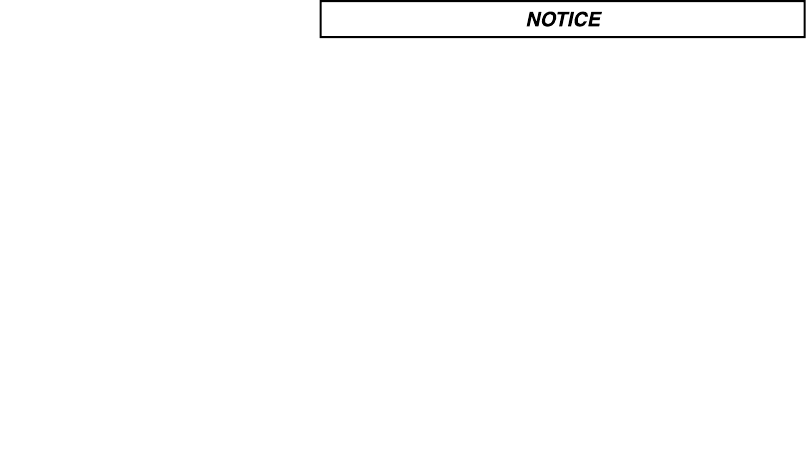
3. Wash all surfaces starting at the top working down toward
the ground.
4. Rinse the motorcycle twice in both directions:
a. Rinse from the bottom up.
b. Rinse from the top down.
Drying the Motorcycle
1. Dry the surfaces from the top down using a SYNTHETIC
DRYING CHAMOIS or a HOG BLASTER MOTORCYCLE
DRYER. Avoid using any type of forced air on speakers
or other sensitive components.
2. Dampen chamois in clean water and wring out the excess.
The chamois is more absorbent when wet.
3. Wipe across the vehicle surface.
4. Repeat as necessary until surface is dry.
Polishing and Sealing
NOTE
If motorcycle has denim finish, skip the Polishing and Sealing
procedure.
1. Apply GLAZE POLY SEALANT with a DISPOSABLE
DETAILING SOFT CLOTH or MICROFIBER DETAILING
CLOTH, following the instructions on the package.
2. Buff with a DISPOSABLE DETAILING SOFT CLOTH.
3. Polish and seal the wheels to prevent corrosion.
LEATHER AND VINYL CARE
Do not use bleach or detergents containing bleach on
saddlebags, seats, tank panels or painted surfaces. Doing
so can result in equipment damage. (00229a)
Do not use ordinary soap to clean leather or fur. It could dry
or remove the oils from the leather.
Leather, vinyl and other synthetic surfaces must be periodically
cleaned and treated to maintain its appearance and extend its
life. Clean and treat these surfaces once a season or more
frequently under adverse conditions.
These surfaces are not designed for long-term exposure to
inclement weather. Protect these surfaces with a Harley-Dav-
idson Seat Rain Cover or Motorcycle Storage Cover (sold
separately).
1. Vacuum or blow dust off surface.
After Riding 75

2. Thoroughly clean surfaces with SEAT, SADDLEBAG &
TRIM CLEANER, following directions on the bottle.
3. Allow the material to dry naturally and completely at room
temperature before applying other products to the material.
Do not use artificial means to dry the material quickly.
4. For leather only, rejuvenate faded black surfaces with
BLACK LEATHER REJUVENATOR, and apply LEATHER
PROTECTANT to weatherproof and preserve the leather.
NOTE
Many Harley-Davidson accessories and seats are made of
either treated or untreated leather or have leather inserts.
Natural materials age differently and require different care than
man-made materials. Seat covers and panels made of leather
gain "character", such as wrinkles, with age. Leather is porous
and organic. Each leather product settles into its own distinct
form with use.Your leather product matures into its own custom
shape and style from the sun, rain and time. This maturing is
natural and enhances the custom quality of your Harley-Dav-
idson motorcycle.
DENIM FINISH
Some motorcycles have a denim (flat or matte) finish. The
denim finish has qualities which differ from high gloss finishes
on all other Harley-Davidson motorcycles. Like denim fabric,
denim paint will burnish or mar with age and use, thus adding
character and personality to the finish. For recommended
products, refer to Table 14.
•If scratched, the color coat of paint does nick/scuff and
these marks cannot be rubbed out.
•If polished, the finish will become less matte and more
glossy over time.
Cleaning Denim Finish
For Light deposits: Use DENIM PAINT CLEANER and a
SOFTCLOTH.
For heavier deposits: Use either SUNWASH BIKE SOAP
and a clean H-D WASH MITT or QUICK WASH. Rinse thor-
oughly with clean water.
76 After Riding
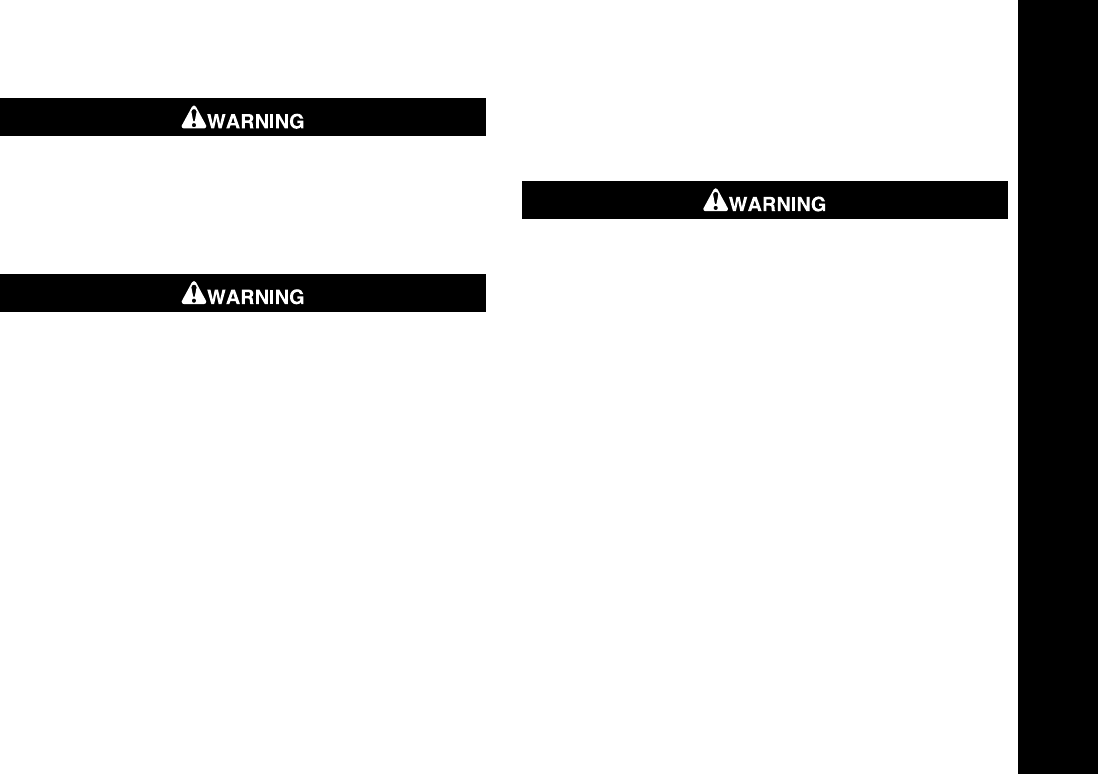
MAINTENANCE
Perform the service and maintenance operations as
indicated in the regular service interval table. Lack of
regular maintenance at the recommended intervals can
affect the safe operation of your motorcycle, which could
result in death or serious injury. (00010a)
If you operate your motorcycle under adverse conditions
(severe cold, extreme heat, very dusty environment, very
bad roads, through standing water, etc.), you should per-
form the regular maintenance intervals more frequently
to ensure the safe operation of your motorcycle. Failure
to maintain your motorcycle could result in death or ser-
ious injury. (00094a)
Service your motorcycle at the regular service intervals. Road
conditions like dust, rain or riding styles can require servicing
the motorcycle at more frequent intervals. Refer to Table 29.
Though some of these procedures can be performed with a
minimum of tools, always consult your Harley-Davidson dealer
for updates. Remember, your authorized Harley-Davidson
dealer always services your motorcycle with the latest factory
approved methods and equipment.
Record each service to maintain the new motorcycle warranty.
Refer to Table 30.
PREPARING THE MOTORCYCLE FOR
MAINTENANCE
Be sure to check capacity rating and condition of hoists,
slings, chains and cables before use. Exceeding capacity
ratings or using lifting devices that are in poor condition
can lead to an accident, which could result in death or
serious injury. (00466c)
NOTE
Always support a motorcycle that is being serviced with blocks
or stands.
Setting Motorcycle Upright
1. Place motorcycle upright on a level surface or suitable lift,
if available.
2. Verify that the motorcycle is level.
3. Secure with tie-downs.
77
SCHEDULED MAINTENANCE
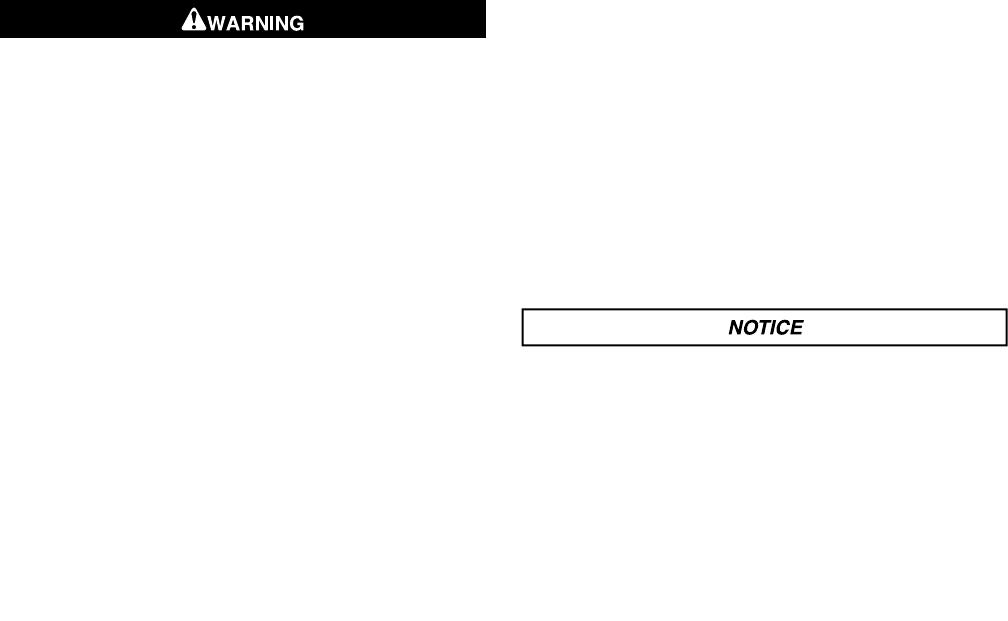
CHANGING ENGINE OIL AND FILTER
Be sure that no lubricants or fluids get on tires, wheels or
brakes when changing fluid. Traction can be adversely
affected, which could result in loss of control of the
motorcycle and death or serious injury. (00047d)
1. Run motorcycle until engine is at normal operating temper-
ature.
2. Turn off engine.
3. See Figure 25. Remove the engine oil drain plug. Discard
O-ring.
4. Allow oil to drain completely. Dispose of waste properly.
5. Remove the radiator shroud. See SCHEDULED MAINTEN-
ANCE, Cleaning Radiator.
NOTE
It is not necessary to disconnect the regulator connectors.
6. See Figure 26. Remove the regulator bolt and washer (1).
Support the regulator as necessary.
7. Remove the oil filter (3) withOIL FILTER WRENCH (Part
No. HD-51453).
8. Discard filter.
9. Clean the oil filter mount flange of any old gasket material.
10. Lubricate gasket of new oil filter with clean engine oil.
NOTE
Do not use oil filter wrench for installation.
11. Install new oil filter (3). Hand-tighten oil filter one-half to
three-quarters of a turn after gasket initially contacts the
filter mounting surface.
12. Install the regulator with the bolt and washer. Tighten to
9.0-11.0 Nm (80-97 in-lbs).
13. Install engine oil drain plug and new O-ring. Tighten to
20.0-25.0 Nm (15-18 ft-lbs).
Do not overfill oil. Doing so can result in oil carryover to
the air cleaner leading to equipment damage and/or
equipment malfunction. (00190b)
14. Initially add 2.4 L (2.5 qt) of engine oil. See SERVICE
PROCEDURES, Lubrication.
15. Perform engine oil level cold check. See SCHEDULED
MAINTENANCE, Checking Engine Oil Level.
78 Scheduled Maintenance
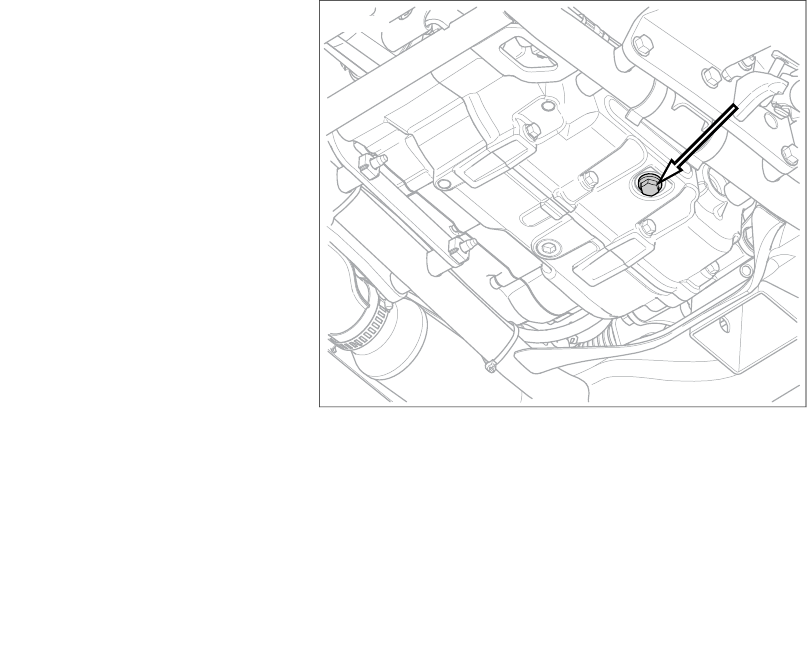
16. Start engine and carefully check for oil leaks around drain
plug and oil filter.
17. Install radiator shroud. See SCHEDULED MAINTENANCE,
Cleaning Radiator.
18. Perform engine oil level hot check. See SCHEDULED
MAINTENANCE, Checking Engine Oil Level.
19. Add more oil as required.
om02282
Figure 25. Engine Oil Drain Plug
Scheduled Maintenance 79
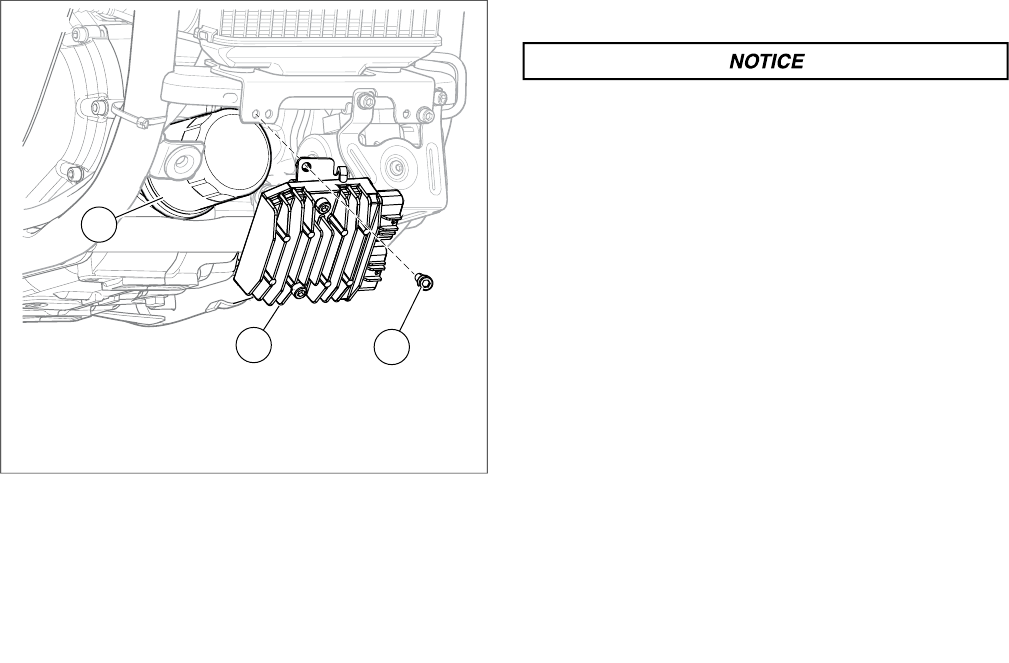
3
21
om02142a
1. Bolt and washer
2. Regulator and bracket
3. Oil filter
Figure 26. Engine Oil Filter and Regulator
CHECKING ENGINE OIL LEVEL
If the oil pressure indicator lamp remains lit, always check
the oil supply first. If the oil supply is normal and the lamp
is still lit, stop the engine at once and do not ride further
until the trouble is located and the necessary repairs are
made. Failure to do so may result in engine damage.
(00157a)
Oil Level Cold Check
1. Set vehicle upright. See SCHEDULED MAINTENANCE,
Preparing the Motorcycle for Maintenance.
2. See Figure 27. Remove dipstick (1) and wipe clean.
3. Insert the dipstick and tighten.
4. Remove the dipstick.Verify that there is oil on the dipstick.
5. If oil is not visible, add only enough oil to bring the level
to the bottom of the dipstick. See SERVICE PROCED-
URES, Lubrication.
80 Scheduled Maintenance
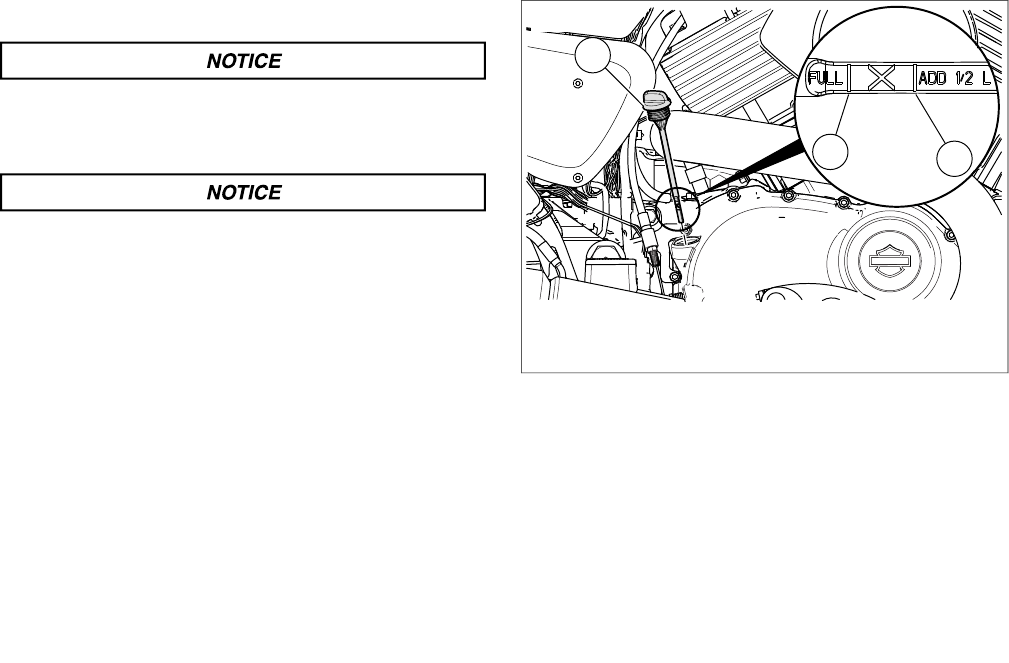
Oil Level Hot Check
Do not allow hot oil level to fall below Add/Fill mark on
dipstick. Doing so can result in equipment damage and/or
equipment malfunction. (00189a)
Do not overfill oil. Doing so can result in oil carryover to
the air cleaner leading to equipment damage and/or
equipment malfunction. (00190b)
1. Run motorcycle until engine is at normal operating temper-
ature.
2. Set vehicle upright.
3. See Figure 27. Remove dipstick (1) and wipe clean.
4. Insert the dipstick and tighten.
5. Remove the dipstick. Verify that the oil level is within the
"X" mark on the dipstick.
6. If oil level is below the "X" mark, add only enough oil to
bring the level to the "X" mark. See SERVICE PROCED-
URES, Lubrication.
1
3
2
om01923
1. Dipstick
2. Full
3. Add
Figure 27. Engine Oil Level
CHECKING PRESSURE AND INSPECTING
TIRES
Refer to Table 21 for recommended tire pressure.
See SERVICE PROCEDURES, Tires for inspection procedure.
Scheduled Maintenance 81
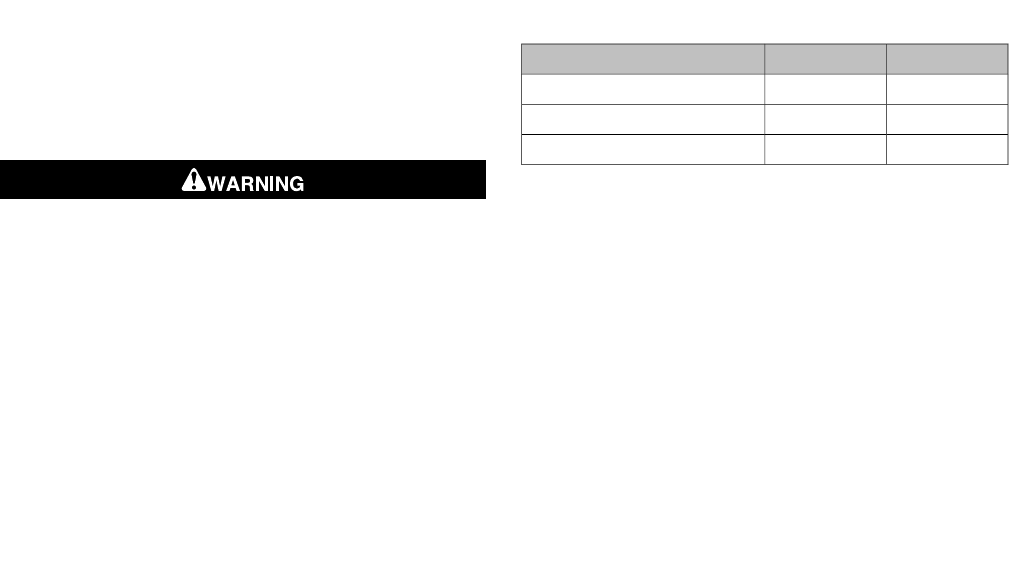
INSPECTING BRAKE PADS AND DISCS
Brake Pads
Harley-Davidson has provided your new motorcycle with the
optimum brake pad friction material available. It is selected to
give the best performance possible under dry, wet and high
operating temperature conditions. It exceeds all regulatory
requirements currently in effect. However, during some braking
conditions you may experience noise. This is normal for this
friction material.
Always replace brake pads in complete sets for correct
and safe brake operation. Improper brake operation could
result in death or serious injury. (00111a)
1. Check the brake disc as it spins.The disc should run true
in the brake caliper.
2. See Figure 28. Measure the thickness of the brake pad
friction material.
NOTE
The pads do not necessarily wear evenly. The grooves on the
brake pads are no longer visible when the pads are near the
end of service life.
3. Refer to Table 17. If the brake pad friction material is at
the minimum thickness or less, replace the pads. Always
replace brake pads in pairs. See a Harley-Davidson dealer.
Table 17. Brake Specifications
inmmMINIMUM THICKNESS
0.0200.5Brake pads
0.2135.4Front brake disc
0.2135.4Rear brake disc
82 Scheduled Maintenance
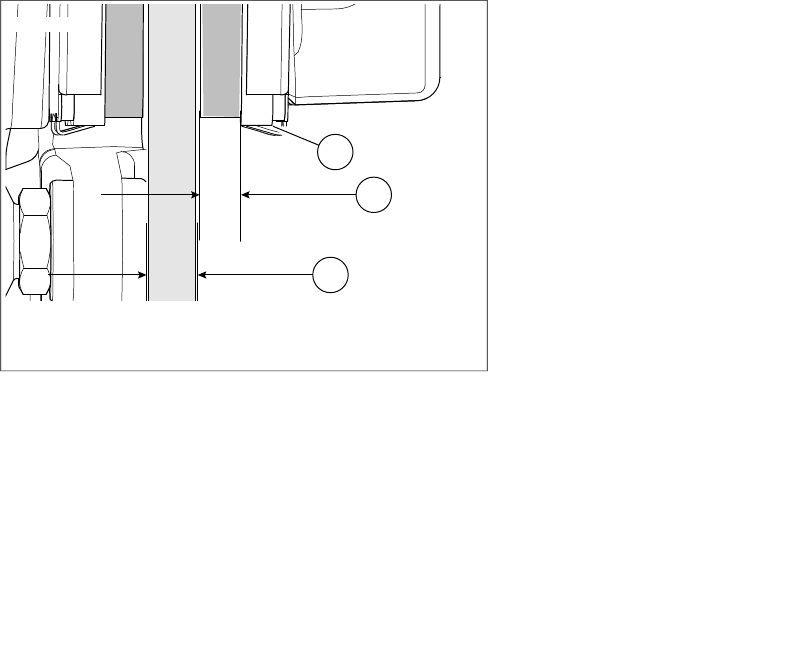
1
2
3
om02141
1. Brake pad thickness
2. Backplate
3. Brake disc thickness
Figure 28. Brake Thickness
Brake Disc
1. Refer to Table 17. Check brake disc thickness and com-
pare to value indicated in table.
2. Replace if necessary. See a Harley-Davidson dealer.
CHECKING SYSTEMS FOR LEAKS OR
ABRASIONS
Check all lines and hoses for leaks, damage or abrasions.
Refer to Table 29 for the appropriate intervals.
•Fuel system and fuel lines
•Cooling system and coolant hoses
•Brake system and brake lines
CHECKING BRAKE FLUID LEVEL AND
CHANGING BRAKE FLUID
NOTES
•Do not add or remove fluid from the brake system to
compensate for normal wear. Reservoir volume is
adequate to provide fluid to the wear limits of the pads
and discs.
•Fluid level in reservoir will decrease with brake wear. If
fluid level is low, check brake pads and discs for wear.
See SCHEDULED MAINTENANCE, Inspecting Brake
Pads and Discs.
Scheduled Maintenance 83
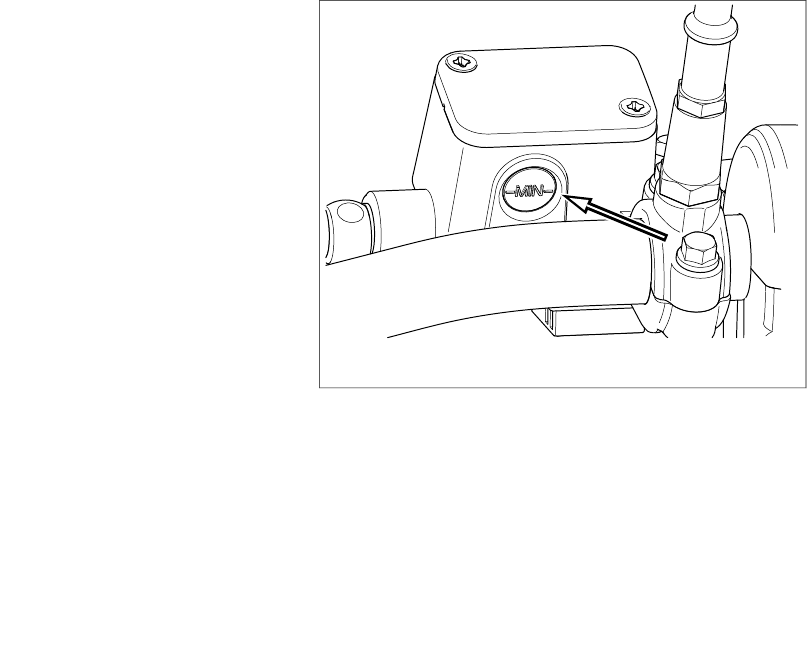
Checking Brake Fluid Level
1. Set motorcycle upright.Verify that the fluid in the reservoir
is level. See SCHEDULED MAINTENANCE, Preparing
the Motorcycle for Maintenance.
2. Front: See Figure 29. Check level in front reservoir sight
glass. Level must be above MIN.
3. Rear: See Figure 30. Check level on side of rear brake
reservoir. Level must be above MIN.
sm08185a
Figure 29. Front Master Cylinder Reservoir Sight Glass
84 Scheduled Maintenance
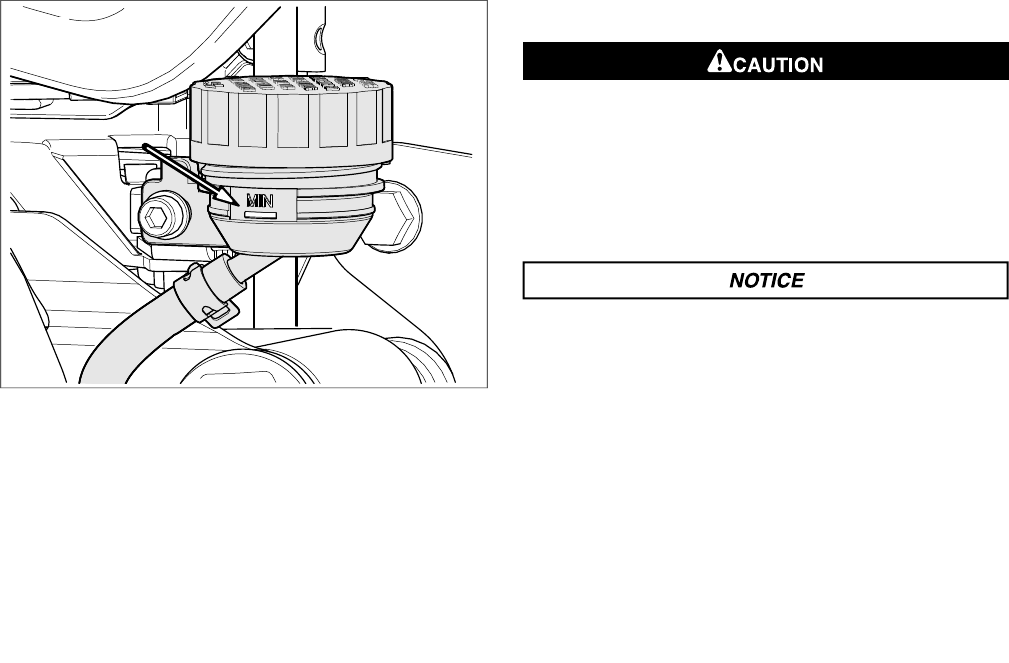
om02134a
Figure 30. Rear Master Cylinder Reservoir MIN Level
Changing Brake Fluid
Direct contact of D.O.T. 4 brake fluid with eyes can cause
irritation. Avoid eye contact. In case of eye contact flush
with large amounts of water and get medical attention.
Swallowing large amounts of D.O.T. 4 brake fluid can cause
digestive discomfort. If swallowed, obtain medical atten-
tion. Use in well ventilated area. KEEP OUT OF REACH OF
CHILDREN. (00240a)
D.O.T. 4 brake fluid will damage painted and body panel
surfaces it comes in contact with. Always use caution and
protect surfaces from spills whenever brake work is per-
formed. Failure to comply can result in cosmetic damage.
(00239b)
Replace the brake fluid every two years. See a Harley-Davidson
dealer.
CHECKING AND ADJUSTING THROTTLE
CABLES
Check throttle cables for damage, wear or abrasions.
Scheduled Maintenance 85
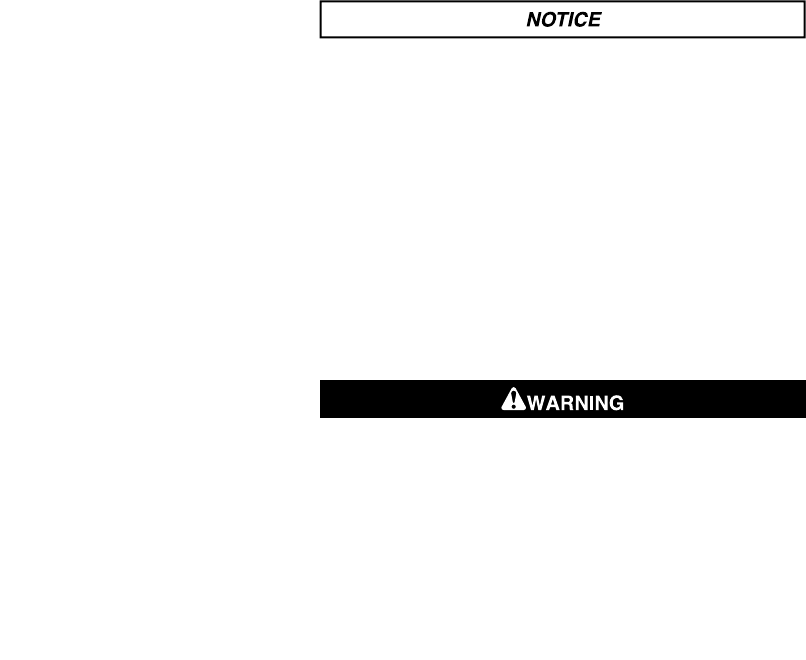
See a Harley-Davidson dealer for service.
CHECKING CLUTCH AND BRAKE
CONTROLS
Clutch Hand Lever
The clutch hand lever should move smoothly through its full
range.
See a Harley-Davidson dealer for service.
Brake Hand Lever
•The brake hand lever should move smoothly through its
full range.
•Verify the brake hand lever has a firm feel when applied.
See a Harley-Davidson dealer for service.
MISCELLANEOUS LUBRICATION
Refer to Table 29 for all maintenance schedules.
For specific information for lubricating the following items, see
the service manual or a Harley-Davidson dealer.
•Throttle cables
The clutch control cable must be oiled and adjusted peri-
odically to compensate for lining wear. See MAINTENANCE
SCHEDULING in this manual. Failure to oil and adjust the
clutch control cable can result in equipment damage.
(00203b)
•Clutch and brake cables
•Brake and clutch hand controls
•Steering head bearing
•Jiffy stand
•Front and rear brake caliper pins and bushings
MAINTAINING FRONT FORK
Regularly inspect shock absorbers and front forks. Replace
leaking, damaged or worn parts that can adversely affect
stability and handling, which could result in death or ser-
ious injury. (00012a)
Have a Harley-Davidson dealer drain the front fork oil and refill
at proper intervals.
86 Scheduled Maintenance
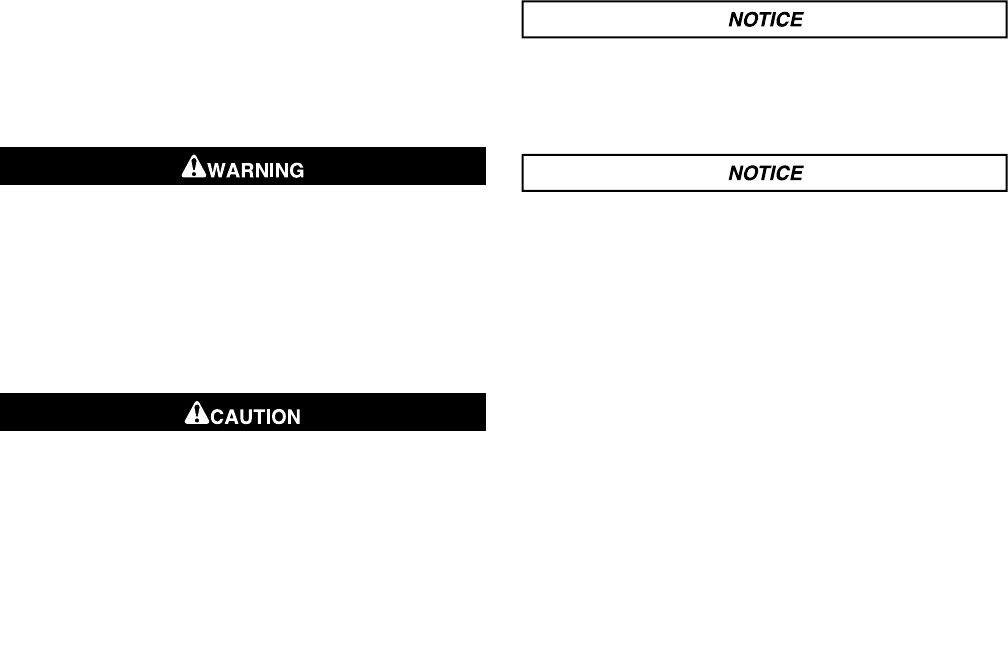
Rebound action of the fork will be impaired if the fork oil level
is low.
If fork does not appear to be working properly or a significant
oil leak should develop, see a Harley-Davidson dealer.
ADJUSTING STEERING HEAD BEARINGS
Adjustments to steering head bearings should be per-
formed by a Harley-Davidson dealer. Improperly adjusted
bearings can adversely affect handling and stability, which
could result in death or serious injury. (00051b)
See a Harley-Davidson dealer to adjust the steering head
bearings.
CLEANING RADIATOR
At operating temperature, radiators and oil coolers contain
hot fluids. Contact with a radiator or oil cooler can result
in minor or moderate burns. (00141b)
1. See Figure 31. Remove screws (5) and washers (4).
2. Remove radiator shroud (3) from mounting tab (1).
Using a pressure washer to clean radiators or oil coolers
can damage cooling fins and reduce airflow. Reduced
airflow can lead to overheating, resulting in engine damage
and could void your engine warranty. (00056b)
Clean the inlet surface of the radiator regularly. Leaves
and other debris can collect on the radiator surface and
degrade radiator performance which could lead to engine
overheating and engine damage. (00197c)
3. Clean debris from radiator fins (2).
4. Align top of radiator shroud to mounting tab.
5. Install washers and screws.Tighten to 9.0-11.0 Nm (80-97
in-lbs).
Scheduled Maintenance 87
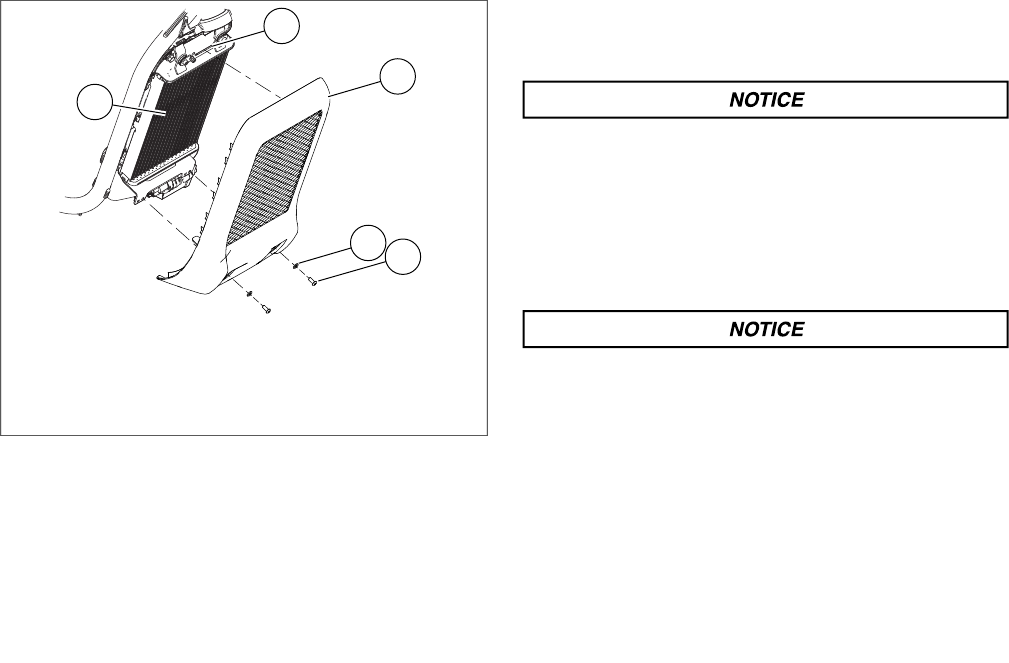
1
2
4
3
5
om01858
1. Mounting tab
2. Radiator fins
3. Radiator shroud
4. Washer (2)
5. Screw (2)
Figure 31. Radiator Shroud
COOLANT
General
Use only Genuine Harley-Davidson Extended Life Anti-
freeze and Coolant. Use of other coolants/mixtures may
lead to engine damage. (00179b)
GENUINE HARLEY-DAVIDSON EXTENDED LIFE ANTI-
FREEZE AND COOLANT is pre-diluted and ready to use full
strength. It provides temperature protection to -36.7° C (-34°
F). DO NOT add water.
De-ionized water must be used with the antifreeze in the
cooling system. Hard water can cause scale accumulation
in water passages which reduces cooling system effi-
ciency, leading to overheating and engine damage.
(00195a)
If GENUINE HARLEY-DAVIDSON EXTENDED LIFE ANTI-
FREEZE AND COOLANT is unavailable, a mixture of de-ion-
ized water and ethylene glycol-based antifreeze may be used.
88 Scheduled Maintenance
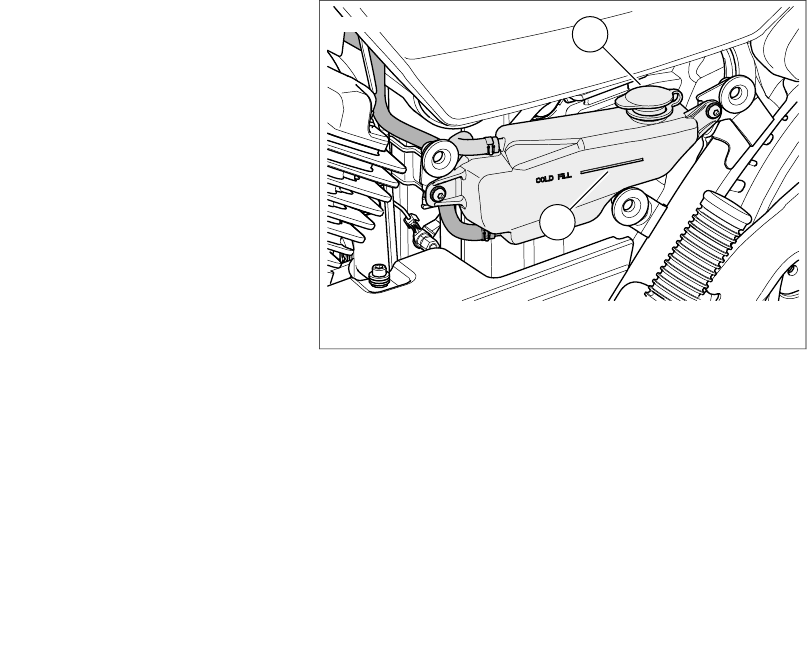
At the first opportunity, change back to GENUINE HARLEY-
DAVIDSON EXTENDED LIFE ANTIFREEZE AND COOLANT.
Checking Coolant Level
1. Position motorcycle upright. See SCHEDULED MAINTEN-
ANCE, Preparing the Motorcycle for Maintenance.
2. Allow engine to cool.
3. Remove left side cover. See SERVICE PROCEDURES,
Side Covers.
4. See Figure 32. Check that coolant level is at or slightly
above the "COLD FILL" line (2).
NOTE
If the coolant bottle is empty when the engine is cold, inspect
the system for leaks. Repair as needed. Fill system with coolant
and purge any trapped air.
5. If level is below "COLD FILL" line on tank, remove overflow
tank cap (1).
6. Add GENUINE HARLEY-DAVIDSON EXTENDED LIFE
ANTIFREEZE AND COOLANT until fluid level reaches,
or is slightly above the "COLD FILL" line.
7. Install overflow tank cap.
1
2
sm08179
1. Overflow tank cap
2. Cold fill level
Figure 32. Coolant Overflow Tank
REPLACING COOLANT
See a Harley-Davidson dealer for coolant replacement.
INSPECTING REAR FORK BEARING
See a Harley-Davidson dealer for rear fork bearing inspection.
Scheduled Maintenance 89

CHECKING DRIVE BELT AND SPROCKETS
NOTE
Always use BELT TENSION GAUGE (Part No. HD-35381-A)
to measure belt deflection. Failure to use tension gauge may
cause under-tensioned belts. Loose belts can fail due to
"ratcheting" (jumping a tooth) which causes tensile cord
crimping and breakage.
1. Set motorcycle upright. See SCHEDULED MAINTEN-
ANCE, Preparing the Motorcycle for Maintenance.
2. Put transmission in neutral.
3. Allow vehicle to cool.
4. Remove all load (rider, passenger and cargo).
To prevent accidental vehicle start-up, which could cause
death or serious injury, remove main fuse before pro-
ceeding. (00251b)
5. Remove main fuse. See SERVICE PROCEDURES, Fuses
and Relays.
6. See Figure 33. Slide O-ring (4) to 0 kg (0 lb) mark (3).
7. Fit belt cradle (2) against bottom of drive belt and align
with belt deflection window.
8. Press up on knob (6) until O-ring slides down to 4.5 kg (10
lb) mark (5) and hold steady.
NOTE
Each deflection graduation is 1.59 mm (0.0625 in).
9. See Figure 34. Measure belt deflection through window.
10. Compare measurement to specifications. Refer to
Table 18.
11. Adjust belt if necessary. See a Harley-Davidson dealer.
12. Inspect rear sprocket. Replace rear sprocket if major tooth
damage or loss of chrome exists. See a Harley-Davidson
dealer.
13. Install main fuse.
Table 18. Belt Deflection Specifications*
inmmMODELS
0.50-0.6212.7-15.9XG500
0.50-0.6212.7-15.9XG750
* Deflection measured at 4.5 kg (10 lb) tension.
90 Scheduled Maintenance
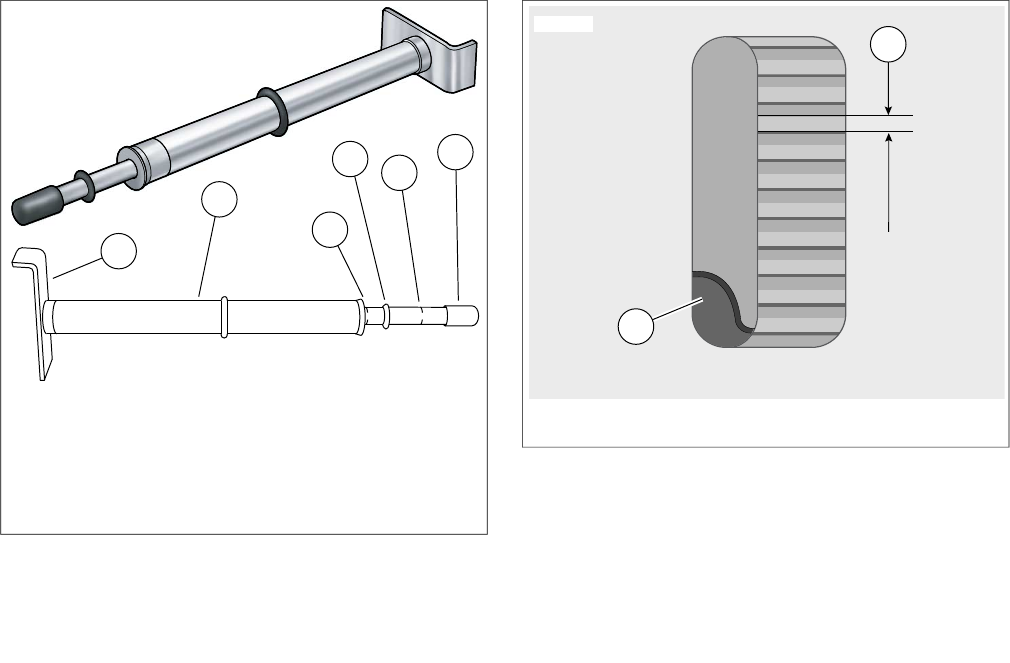
10
0
3
6
1
2
45
sm02452
1. Belt tension gauge
2. Belt cradle
3. 0 kg (0 lbs) mark
4. O-ring
5. 4.5 kg (10 lbs) mark
6. Knob
Figure 33. Belt Tension Gauge
1
2
sm01441a
1. Drive belt
2. Deflection graduation
Figure 34. Belt Deflection Window
Scheduled Maintenance 91

INSPECTING REAR SHOCK BUSHING
See a Harley-Davidson dealer for rear shock bushing inspec-
tion.
CHECKING FOR EXHAUST LEAKS
1. Check exhaust system for obvious signs of leakage such
as carbon marks or marks at pipe joints.
a. Check for loose or missing fasteners.
b. Check for fractured pipe clamps or brackets.
c. Check for loose or fractured exhaust shields.
2. Correct any detected leaks. See a Harley-Davidson dealer.
INSPECTING AIR FILTER
1. See Figure 35. Remove screw (1).
2. Remove cover (2).
3. Remove nuts (3).
4. Remove bracket (4).
5. Remove filter element (5).
6. Hold the filter element up to a strong light source. The
element is sufficiently clean when light is uniformly visible
through the media.
7. If necessary, discard filter element. Install a new element.
8. Install filter element (5).
9. Install bracket (4).
10. Install nuts (3).Tighten to 6.0-8.0 Nm (54-70 in-lbs).
11. Install cover (2).
12. Install screw (1).Tighten to 6.0-8.0 Nm (54-70 in-lbs).
92 Scheduled Maintenance
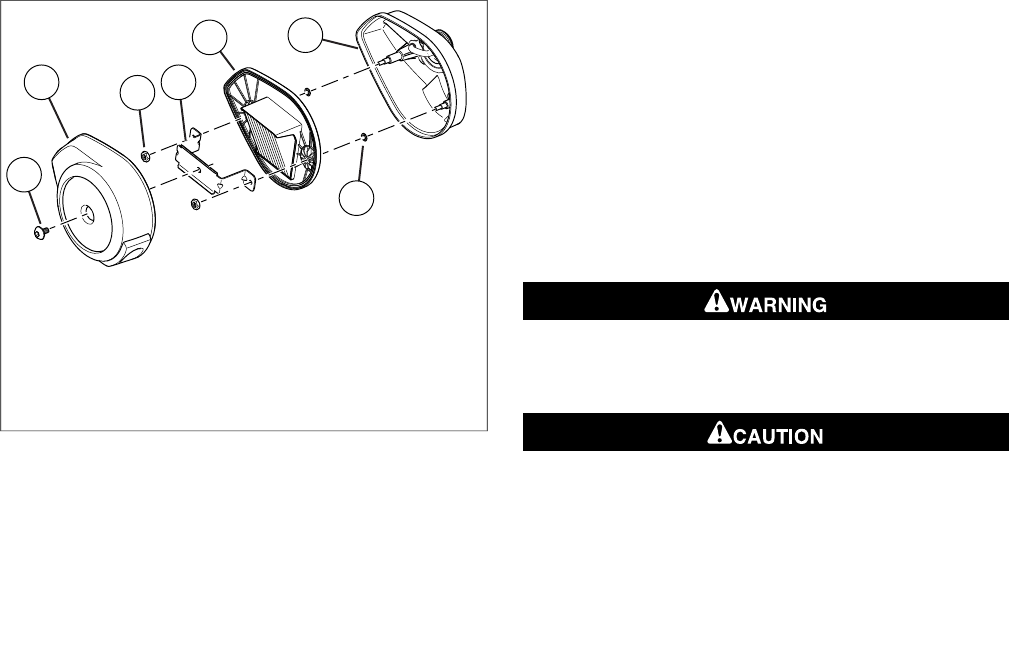
1
23
7
4
56
sm08109a
1. Screw
2. Cover
3. Nut (2)
4. Bracket
5. Filter element
6. Backplate
7. Washer (2)
Figure 35. Air Cleaner
LUBRICATING FUEL CAP LOCK
Lubricate fuel cap lock with HARLEY LUBE.
INSPECTING VALVE LASH
See a Harley-Davidson dealer for valve lash inspection and
adjustment.
CLEANING BATTERY
See SERVICE PROCEDURES, Battery Maintenance for
cleaning instructions.
REPLACING SPARK PLUGS
Refer to Table 29. Replace the spark plugs at specified mileage
intervals.
Disconnecting spark plug cable with engine running can
result in electric shock and death or serious injury.
(00464b)
Do NOT pull on any electrical wires. Pulling on electrical
wires may damage the internal conductor causing high
resistance, which may result in minor or moderate injury.
(00168a)
Refer to Table 28 for spark plug specifications.
Scheduled Maintenance 93

1. Disconnect spark plug cables from plugs by pulling up on
the molded connector caps.
2. Check spark plug type. Only use those spark plugs spe-
cified for your model motorcycle.
3. Check spark plug gap against specifications table.
4. Always tighten to the proper torque.
5. Connect each molded connector cap until the cap snaps
firmly into place over the spark plug.
94 Scheduled Maintenance
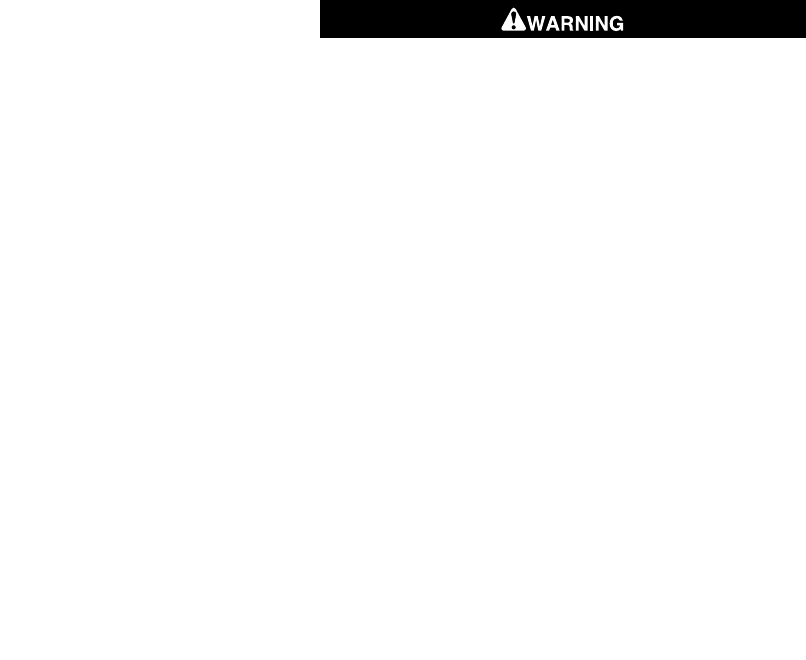
CHECKING ELECTRICAL EQUIPMENT AND
SWITCHES Be sure headlamp, tail and stop lamp and turn signals are
operating properly before riding. Poor visibility of rider to
other motorists can result in death or serious injury.
(00478b)
Check all electrical equipment and switches including the tail
lamps, turn signals, headlamp and horn for proper operation.
Scheduled Maintenance 95

96 Scheduled Maintenance
NOTES
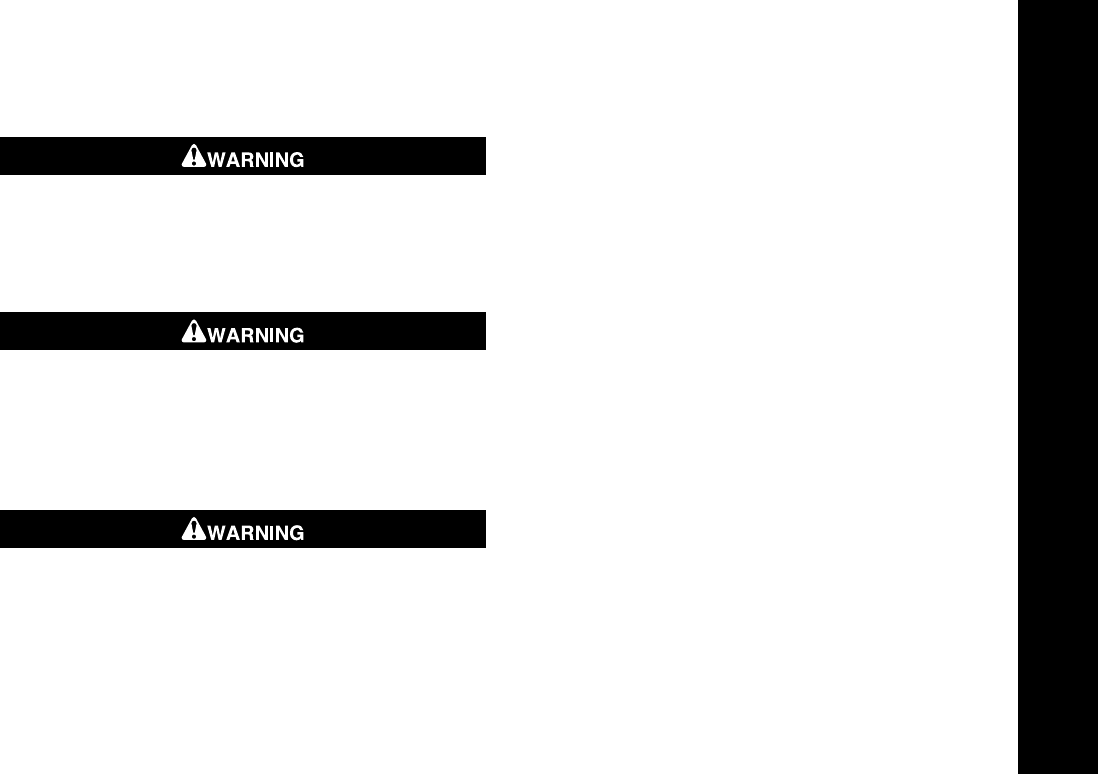
TIRES
General Information
Match tires, tubes, rim strips or seals, air valves and caps
to the correct wheel. Contact a Harley-Davidson dealer.
Mismatching can lead to tire damage, allow tire slippage
on the wheel or cause tire failure, which could result in
death or serious injury. (00023c)
Harley-Davidson recommends the use of its specified tires.
This vehicle is not designed for operation with non-spe-
cified tires, including snow, moped and other special-use
tires. Use of non-specified tires can adversely affect sta-
bility, handling or braking and lead to loss of vehicle con-
trol, which could result in death or serious injury. (00024c)
Harley-Davidson front and rear tires are not the same.
Interchanging front and rear tires can cause tire failure,
which could result in death or serious injury. (00026a)
Refer to Table 21 for tire information and pressures.
•Maintain correct tire pressure.
•Follow tire data for correct cold tire inflation pressure.
•Check before riding when tires are cold.
Harley-Davidson does not perform any testing with only
nitrogen in tires. Harley-Davidson neither recommends nor
discourages the use of pure nitrogen to inflate tires.
India Tire Compliance Statement: Harley-Davidson Motor
Company declares that the tires listed in the specifications
section (India only) meet the Indian Standard 15627 require-
ment of the Bureau of Indian Standards (as amended from
time to time) required for registration of vehicles
assembled/manufactured in India.These tires also comply with
the Central Motor Vehicle Rules requirements, 1989.
Inspecting Tires
Harley-Davidson tires are equipped with wear bars that run
horizontally across the tread.
A tire is considered worn when the wear bars are visible or if
only 0.8 mm (0.031 in) tread depth remains. A worn tire can:
•Be more easily damaged leading to tire failure.
•Provide reduced traction.
•Adversely affect stability and handling.
97
SERVICE PROCEDURES
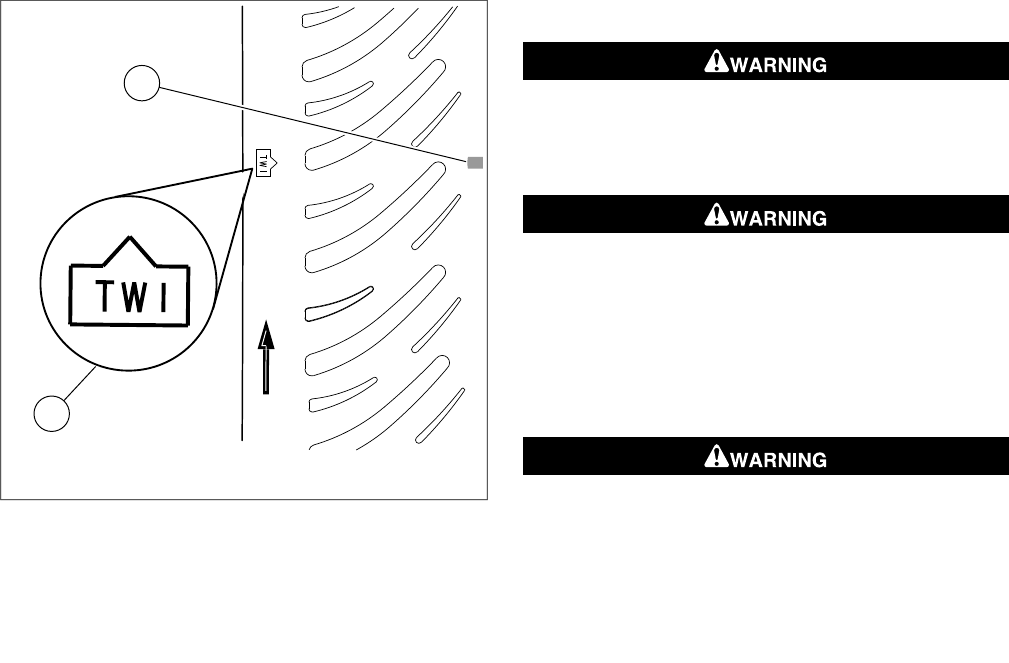
2
1
sm08309
1. Indicator
2. Tread wear bar
Figure 37.Tread Wear Indicator: MRF Tires
Replacing Tires
Tires are a critical safety component. Contact a Harley-
Davidson dealer for tire repair or replacement. Improper
tire service can adversely affect stability and handling,
which could result in death or serious injury. (00057a)
Replace punctured or damaged tires. In some cases, small
punctures in the tread area may be repaired from within
the removed tire by a Harley-Davidson dealer. Speed
should NOT exceed 50 mph (80 km/h) for the first 24 hours
after repair, and the repaired tire should NEVER be used
over 80 mph (130 km/h). Failure to follow this warning
could lead to tire failure and result in death or serious
injury. (00015b)
Replace tire immediately with a Harley-Davidson specified
tire when wear bars become visible or only 1/32 in (0.8
mm) tread depth remains. Riding with a worn tire could
result in death or serious injury. (00090c)
Service Procedures 99
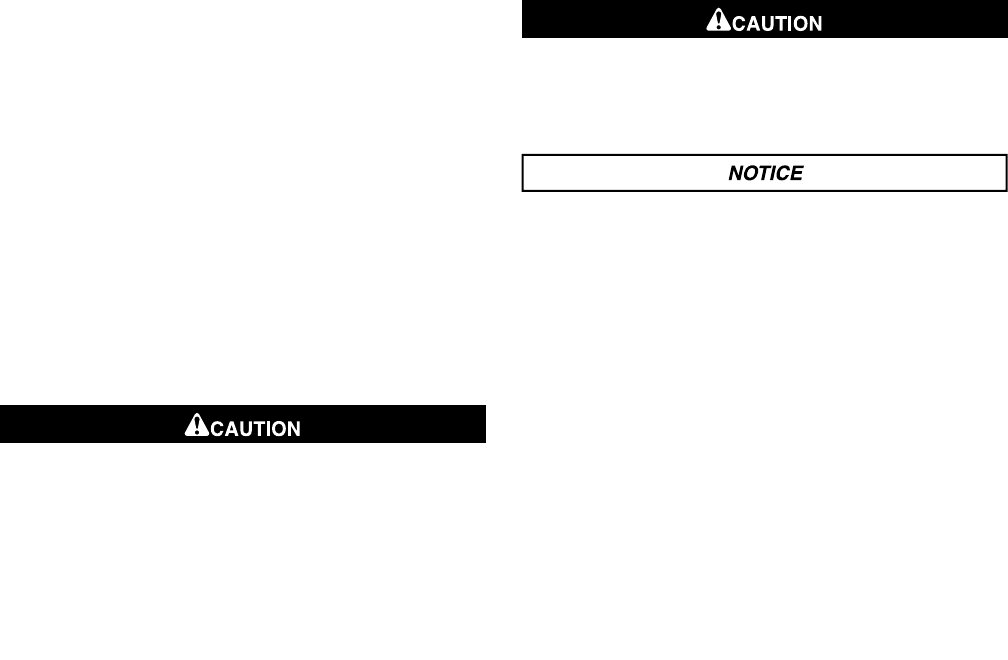
New tires are needed if any of the following conditions exist
(refer to Table 21 for the specified replacement tires):
•Tread wear bars become visible on the tread surfaces.
•Tire cords or fabric become visible through cracked side-
walls, snags or deep cuts.
•Bumps, bulges or slits in the tire.
•Punctures, cuts, or other damage to the tire that cannot
be repaired.
When installing tires on rims, do not rely on tread design to
determine direction of rotation. Always be sure the rotational
arrows molded into the sidewalls point in the direction of rota-
tion when the vehicle is moving forward.
LUBRICATION
Engine Lubrication
Prolonged or repeated contact with used motor oil may
be harmful to skin and could cause skin cancer. Promptly
wash affected areas with soap and water. (00358b)
If engine oil is swallowed, do not induce vomiting. Contact
a physician immediately. In case of contact with eyes,
immediately flush with water. Contact a physician if irrita-
tion persists. (00357d)
Do not switch lubricant brands indiscriminately because
some lubricants interact chemically when mixed. Use of
inferior lubricants can damage the engine. (00184a)
Always use the proper grade of oil for the lowest temperature
expected before the next scheduled oil change. Refer to
Table 19.
This motorcycle was originally equipped with GENUINE
HARLEY-DAVIDSON H-D 360 MOTORCYCLE OIL 20W50.
H-D 360 is the preferred oil under normal operating conditions.
If operation under extreme cold or heat are expected, refer to
Table 19 for alternative choices.
If necessary and H-D 360 is not available, add oil certified for
diesel engines. Acceptable designations include: CH-4, CI-4
and CJ-4. The preferred viscosities, in descending order are:
20W50, 15W40 and 10W40.
100 Service Procedures

At the first opportunity, see an authorized dealer to change back to 100 percent Harley-Davidson oil.
Table 19. Recommended Engine Oils
COLD WEATHER
STARTS BELOW
50 °F (10 °C)
LOWEST AMBIENT
TEMPERATURE
RATINGVISCOSITYTYPE
ExcellentAbove -1 °C (30 °F)HD 360SAE 20W50Screamin' Eagle SYN3 Full Synthetic
Motorcycle Lubricant
GoodAbove 4 °C (40 °F)HD 360SAE 20W50Genuine Harley-Davidson H-D 360
Motorcycle Oil
Low Temperature Lubrication
Change engine oil often in colder climates. If motorcycle is
frequently ridden less than 24 km (15 mi), in ambient temper-
atures below 16 °C (60 °F), reduce oil change intervals to 2400
km (1500 mi).
NOTE
Lower ambient temperatures require more frequent oil changes.
Water vapor is a normal by-product of combustion. During cold-
weather operation, some water vapor condenses to liquid form
on the cool surfaces inside the engine. In freezing weather,
this water becomes slush or ice. If the engine is not warmed
to operating temperature, accumulated slush or ice blocks the
oil lines and causes engine damage. Over time, water will
accumulate, mix with the engine oil and form a sludge that is
harmful to the engine.
If the engine is allowed to warm to normal operating temper-
ature, most of the water evaporates and exits through the
crankcase breather.
Service Procedures 101
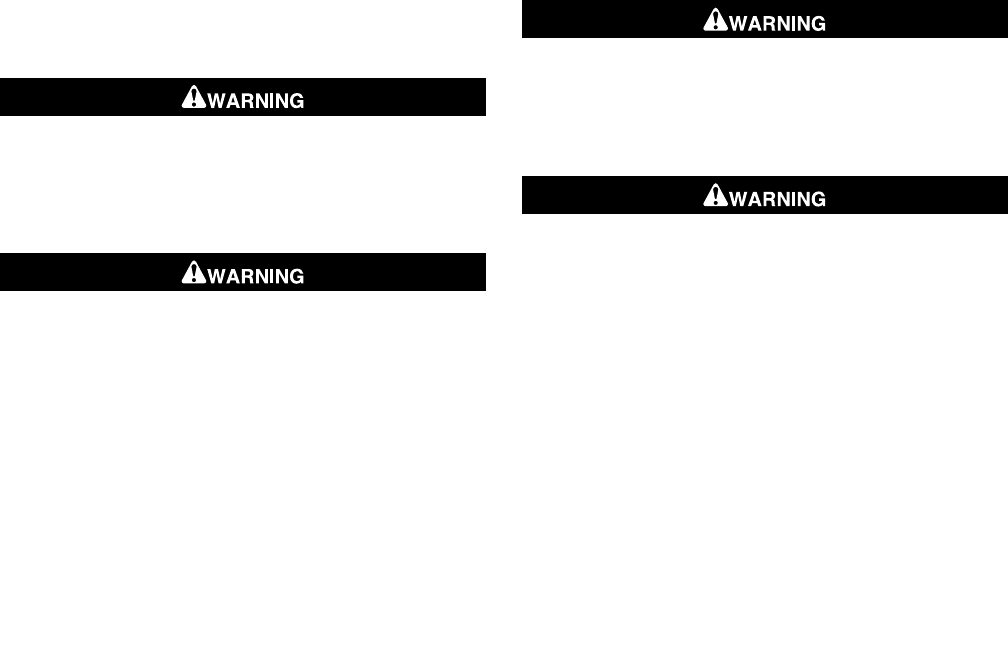
BATTERY MAINTENANCE
Battery Safety
Batteries contain sulfuric acid, which could cause severe
burns to eyes and skin. Wear a protective face shield,
rubberized gloves and protective clothing when working
with batteries. KEEP BATTERIES AWAY FROM CHILDREN.
(00063a)
Explosive hydrogen gas, which escapes during charging,
could cause death or serious injury. Charge battery in a
well-ventilated area. Keep open flames, electrical sparks
and smoking materials away from battery at all times.
KEEP BATTERIES AWAY FROM CHILDREN. (00065a)
Batteries, battery posts, terminals and related accessories
contain lead and lead compounds, and other chemicals
known to the State of California to cause cancer, and birth
defects or other reproductive harm. Wash hands after
handling. (00019e)
Never remove warning label attached to top of battery.
Failure to read and understand all precautions contained
in warning, could result in death or serious injury. (00064a)
The motorcycle uses a permanently sealed, maintenance-free,
lead/calcium and sulfuric acid battery. All batteries are shipped
precharged and ready for service. Do not attempt to open the
battery for any reason.
Cleaning and Inspecting
Battery top must be clean and dry. Dirt and electrolyte on top
of the battery can cause battery to self-discharge.
1. Clean top of battery.
2. Clean cable connectors and battery terminals using a wire
brush or fine grit sandpaper to remove any oxidation.
102 Service Procedures

3. Inspect and clean the battery screws, clamps and cables.
Check for breakage, loose connections and corrosion.
4. Check the battery posts for melting or damage caused by
over-tightening.
5. Inspect the battery for discoloration, a raised top or a
warped or distorted case. Any of these conditions indicate
that the battery has been frozen, overheated or over-
charged.
6. Inspect the battery case for cracks or leaks.
Storing the Battery
If the motorcycle will not be operated for several weeks, remove
the battery from the motorcycle and fully charge.
If the motorcycle is stored with the battery installed, connect
an automatic, constant monitoring charger/tender to maintain
charge. See an authorized dealer.
A battery that is removed from the motorcycle can self-dis-
charge. A battery that is left in the motorcycle can either self-
discharge or discharge from parasitic loads. Parasitic loads
occur from things like diode leakage and maintaining computer
memory.
•Batteries self-discharge at a faster rate at higher ambient
temperatures.
•To reduce the self-discharge rate, store battery in a cool,
dry place.
•Charge the battery every two weeks if stored in the vehicle.
•Charge the battery once per month if stored out of the
vehicle. See Charging Battery.
Charging Battery
Unplug or turn OFF battery charger before connecting
charger cables to battery. Connecting cables with charger
ON can cause a spark and battery explosion, which could
result in death or serious injury. (00066a)
An automatic, constant monitoring battery charger/tender with
a charging rate of 5 amps or less at less than 14.6 volts is
recommended.The use of constant current chargers (including
trickle chargers) to charge sealed AGM batteries is not
recommended. Any overcharge will cause dry-out and prema-
ture battery failure. Never charge a battery without first
Service Procedures 103
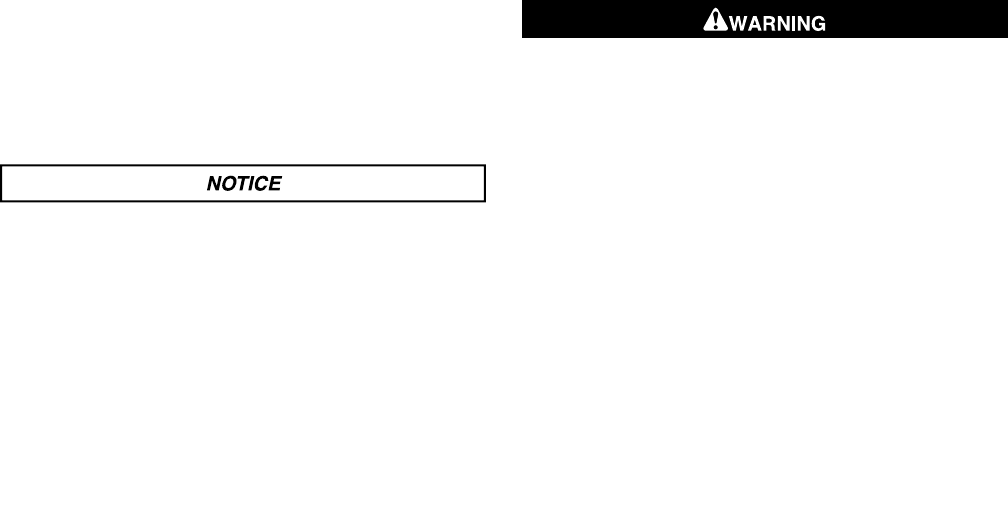
reviewing the instructions for the charger being used. In addition
to the manufacturer's instructions, follow the general safety
precautions.
Charge the battery when:
•Motorcycle lights appear dim.
•Electric starter sounds weak.
•Battery has not been used for an extended period.
1. Perform a voltage test to determine the state of charge. If
battery needs to be charged, proceed to the next step.
2. Place the battery on a level surface.
Do not reverse the charger connections described in the
following steps or the charging system of the motorcycle
could be damaged. (00214a)
3. Connect the red battery charger lead to the positive ter-
minal of the battery.
4. Connect the black battery charger lead to the negative
terminal of the battery.
NOTE
If the battery is still in the motorcycle, connect the negative
lead to the chassis ground. Make sure that the ignition and all
electrical accessories are turned off.
5. Step away from the battery and turn on the charger.
Unplug or turn OFF battery charger before disconnecting
charger cables from battery. Disconnecting clamps with
charger ON can cause a spark and battery explosion, which
could result in death or serious injury. (00067a)
6. After the battery is fully charged, turn OFF the charger
and disconnect the black battery charger lead from the
negative terminal of the battery.
7. Disconnect the red battery charger lead from the positive
terminal of the battery.
8. Mark the charging date on the battery.
Absorbed Glass Mat (AGM) Battery Charging
Information
The motorcycle has a sealed Absorbed Glass Mat (AGM) bat-
tery design that is superior to conventional flooded lead acid
batteries. This battery design will provide many years of
104 Service Procedures

dependable service when the proper battery charging equip-
ment and storage procedures are used. Because of the sealed,
nonspillable battery design, an automatic, constant monitoring
battery charger that uses a charging rate of less than 14.6 volts
is required to prevent overcharging conditions that will dry out
the cells of the battery. Constant current battery chargers
(including trickle chargers) can damage AGM batteries.
To maintain a full charge between rides, a Harley-Davidson
constant monitoring battery charger or tender is recommended
when your motorcycle will not be ridden for more than two
weeks, with the best practice of installing the charger any time
the motorcycle is not in use. Harley-Davidson offers the 750mA
SUPERSMART BATTERY TENDER (94654-98B, North
America) and 800mA WATERPROOF BATTERY TENDER
(international versions available).These battery tenders include
a quick disconnect cable, allowing easy connection to charge
the battery without disassembly of the motorcycle.
Lack of regular battery charging or use of constant current
battery chargers may void battery warranty.
Voltage Test
1. Check the voltage of the battery to verify that it is in a 100
percent fully charged condition.
2. If the open circuit (disconnected) voltage reading is below
12.7 V, charge the battery.
3. Check the voltage again after one to two hours.
BATTERY TENDER CONNECTOR
See Figure 38. Maintaining the battery between rides and while
stored can maintain battery charge and extend the life of the
battery. Connect the battery tender connector to a battery
tender during storage or to a battery charger if the battery
voltage drop below specification. See SERVICE PROCED-
URES, Battery Maintenance
Remove the left side cover to access the connector. Remove
the connector cap. Connect the battery through the connector
to an automatic, constant monitoring battery charger/tender.
The connector is compatible with all Harley-Davidson battery
tender/chargers.
When removing the tender/charger, replace the connector cap
to prevent moisture damage when not in use.
Service Procedures 105
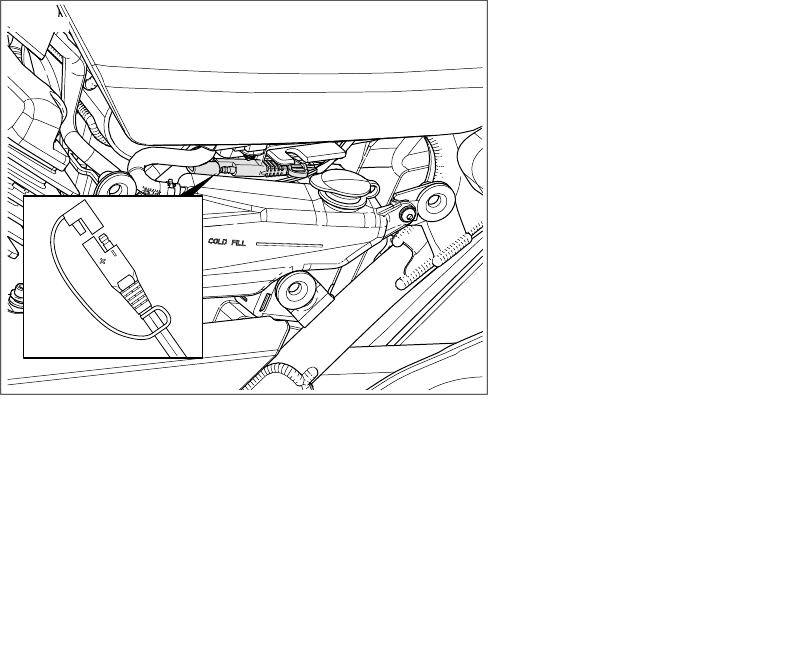
om02263
Figure 38. Battery Tender Connector
BATTERY REPLACEMENT
Removing the Battery
1. Remove left and right side covers. See SERVICE PRO-
CEDURES, Side Covers.
2. Remove seat. See SERVICE PROCEDURES, Seat.
3. Remove main fuse. See SERVICE PROCEDURES, Fuses
and Relays.
4. For California, Asia-Pacific, England, HDI and India
models only: See Figure 39. Remove purge solenoid.
a. Disconnect purge solenoid connector (2).
b. Remove solenoid-to-induction module and canister-
to-solenoid lines (3 and 4) from purge solenoid (1).
5. See Figure 40. Pull vapor valve (1) from clip (2).
6. Move the vapor valve and lines aside.
7. See Figure 41. Remove front belt guard.
a. Remove screws and washers (2).
b. Remove front belt guard (1).
106 Service Procedures
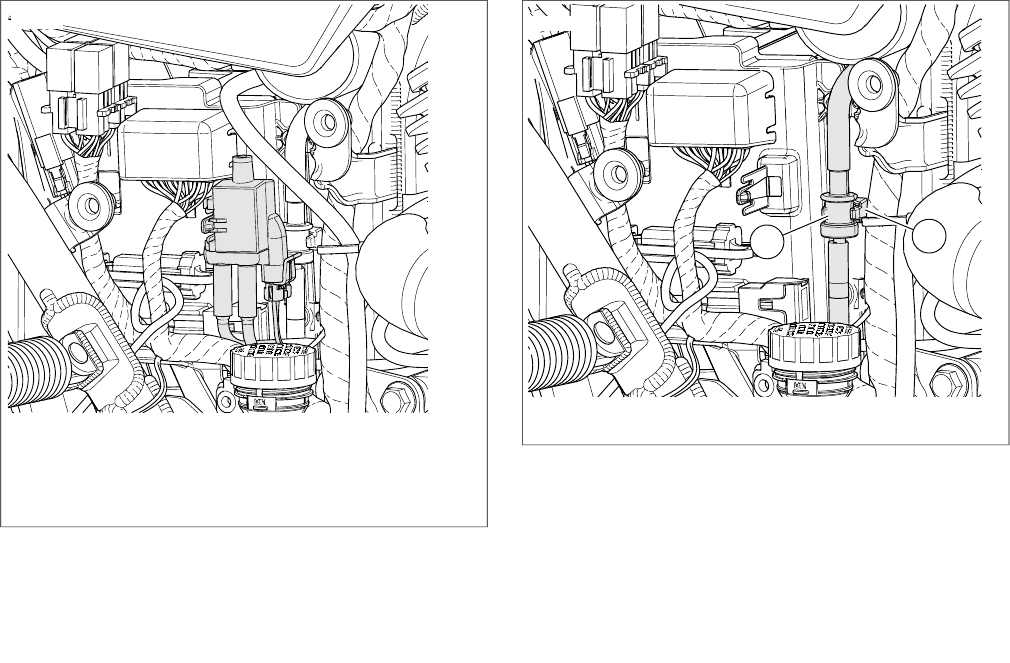
om02260
1. Purge solenoid
2. Purge solenoid connector
3. Solenoid-to-induction module line
4. Canister-to-solenoid line
5. Tab
Figure 39. Purge Solenoid
12
om02261
1. Vapor valve
2. Clip
Figure 40.Vapor Valve
Service Procedures 107

1
2
om01924c
1. Front belt guard
2. Screw and washer (4)
Figure 41. Front Belt Guard
8. See Figure 42. Remove electrical panel.
a. Remove screws (3).
b. Carefully pull electrical panel (1) away from battery.
Disconnect negative (-) battery cable first. If positive (+)
cable should contact ground with negative (-) cable con-
nected, the resulting sparks can cause a battery explosion,
which could result in death or serious injury. (00049a)
9. See Figure 43. Disconnect negative battery cable (1) from
ground stud (2).
10. See Figure 42. Disconnect positive battery cable (5) from
battery.
11. Remove battery.
12. Disconnect negative battery cable.
108 Service Procedures
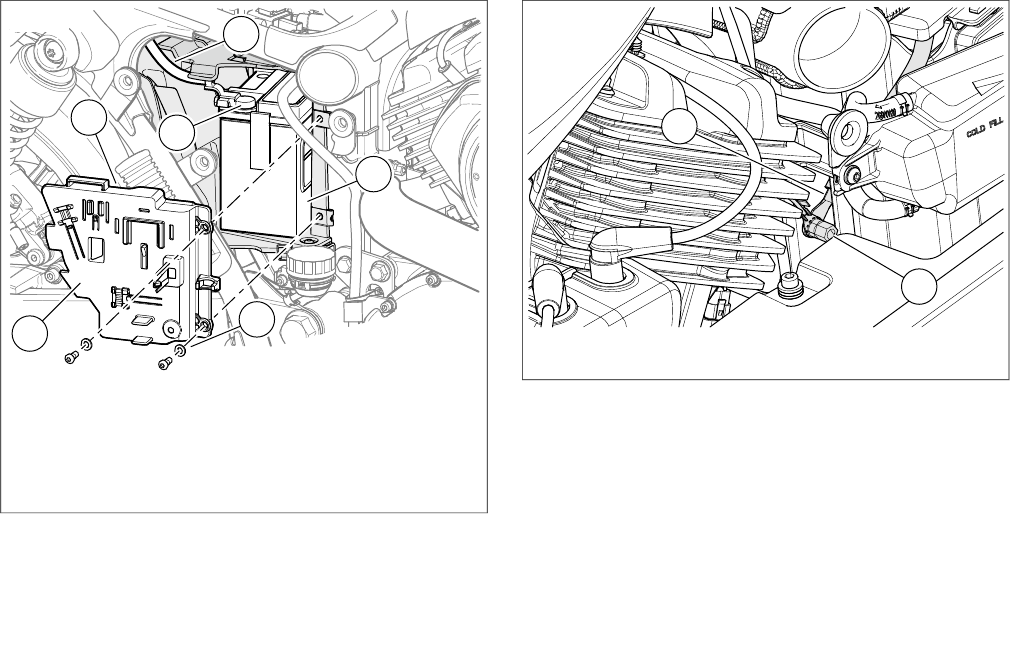
1
23
4
5
6
om02135
1. Electrical panel
2. Tab (2)
3. Screw and washer (2)
4. Battery
5. Positive battery cable
6. Positive battery terminal
Figure 42. Battery
2
1
sm08238
1. Negative battery cable
2. Ground stud
Figure 43. Battery Ground Cable
Service Procedures 109
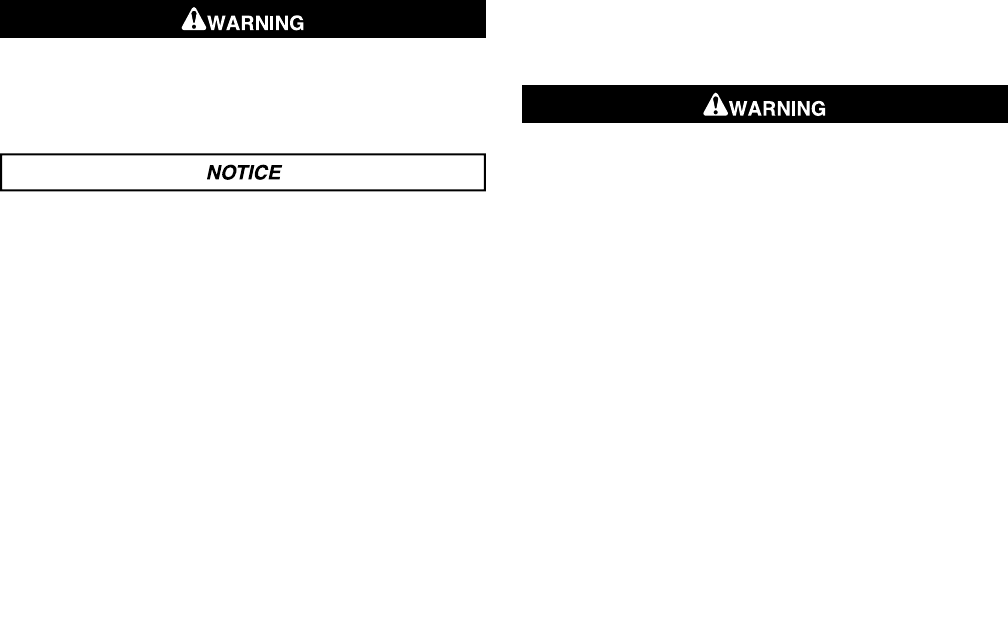
Installing Battery
Connect positive (+) battery cable first. If positive (+) cable
should contact ground with negative (-) cable connected,
the resulting sparks can cause a battery explosion, which
could result in death or serious injury. (00068a)
Connect the cables to the correct battery terminals. Failure
to do so could result in damage to the motorcycle electrical
system. (00215a)
1. Install negative battery cable to negative battery terminal.
Tighten to 6.8-7.9 Nm (60-70 in-lbs).
2. Route negative cable through battery box.
3. See Figure 42. Install battery (4) in battery box.
4. Connect the positive battery cable (5) to the positive bat-
tery terminal (6). Tighten to 6.8-7.9 Nm (60-70 in-lbs).
5. See Figure 43. Connect negative battery cable (1) to
ground stud (2). Tighten to 6.0-7.5 Nm (54-66 in-lbs).
6. See Figure 42. Install electrical panel.
7. Verify electrical panel tabs (2) are inserted into slots.
8. Install screws (3).Tighten to 2.3-3.3 Nm (21-29 in-lbs).
9. See Figure 41. Position front belt guard (1). Install screws
and washers (2).Tighten to 9.0-11.0 Nm (80-97 in-lbs).
Excessive pressure can build in the fuel tank if vapor valve
is not mounted vertically with long fitting to top. Leaks
due to excessive pressure can cause a fire or explosion,
which could result in death or serious injury. (00265a)
10. See Figure 40. Press vapor valve (1) into clip (2).
11. For California, Asia-Pacific, England, HDI and India
Models Only: See Figure 39. Install purge solenoid.
a. Install purge solenoid (1).
b. Install solenoid-to-induction module and canister-to-
solenoid lines (3 and 4).
c. Connect purge solenoid connector (2).
12. Install main fuse. See SERVICE PROCEDURES, Fuses
and Relays.
13. Install seat. See SERVICE PROCEDURES, Seat.
110 Service Procedures

14. Install side covers. See SERVICE PROCEDURES, Side
Covers.
FUSES AND RELAYS
For electrical problems, see a Harley-Davidson dealer who
has the necessary parts and equipment to perform electrical
services.
NOTES
•Fuses do not reset.
•Only replace a fuse with a fuse of the same rating.
•Use only automotive type ATO fuses as replacements.
Main Fuse
NOTE
The amperage of the main fuse is 40A.
Remove the main fuse whenever you perform maintenance
on your motorcycle.
1. Turn ignition off.
2. Remove right side cover. See SERVICE PROCEDURES,
Side Covers.
3. See Figure 44. Remove the main fuse (2).
4. Install the fuse when maintenance is complete.
Service Procedures 111
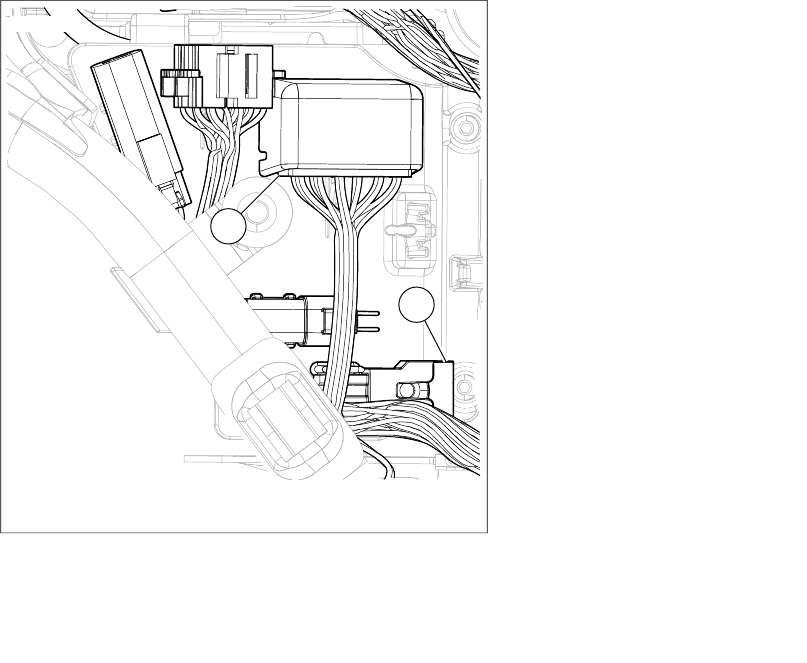
1
2
om01856
1. Fuse panel cover
2. Main fuse
Figure 44. Fuse Panel and Main Fuse Location
Replacing Fuses
1. Turn ignition off.
2. Remove right side cover. See SERVICE PROCEDURES,
Side Covers.
3. See Figure 44. Remove the fuse panel (1) cover.
4. See Figure 45. Remove the suspect fuse and inspect the
element.
Replace the fuse if the element is burned or separated.
Refer to Table 20.
5. Install the fuse panel cover so the tabs snap into place.
6. Install right side cover.
112 Service Procedures
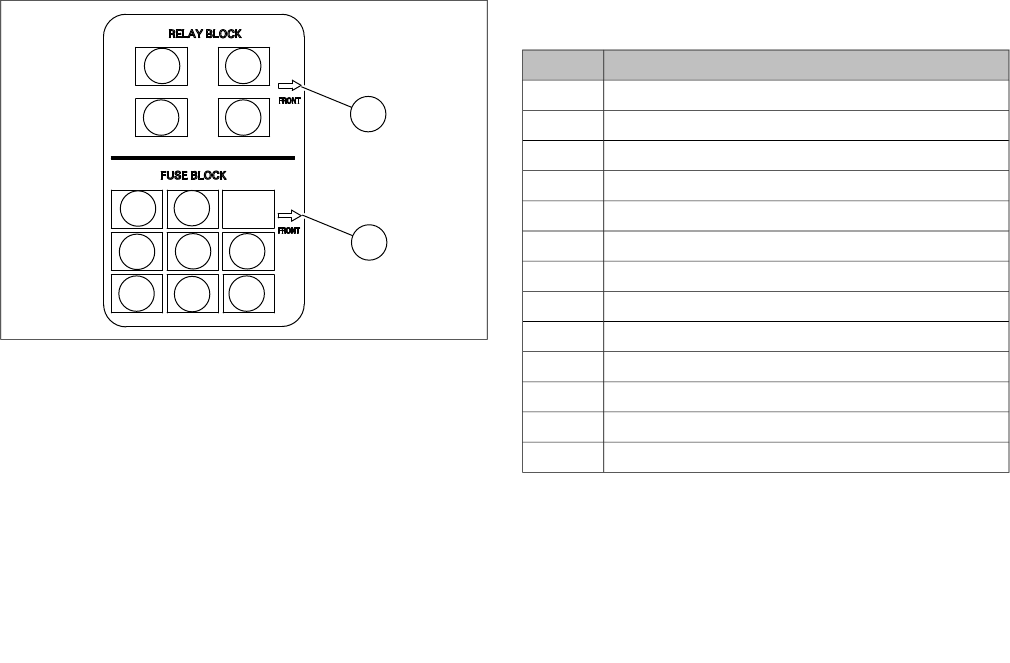
5
7
64
4
8
9
10
1
2 3
11
12 13
om01852a
Figure 45. Relay and Fuse Identification
Table 20. Relay and Fuse Identification
DESCRIPTIONITEM
System relay1
Starter relay2
Cooling relay3
Front of vehicle4
Ignition relay5
Lights and instruments fuse - 10 A6
Accessory fuse - 5 A7
Fan fuse - 15 A8
Lights fuse - 10 A9
Ignition fuse - 15 A10
Fuel pump fuse - 10 A11
Battery fuse - 5 A12
Security fuse - 10 A13
Relays
If you suspect an issue with a relay, see the service manual,
electric diagnostic manual or an authorized dealer.
Service Procedures 113
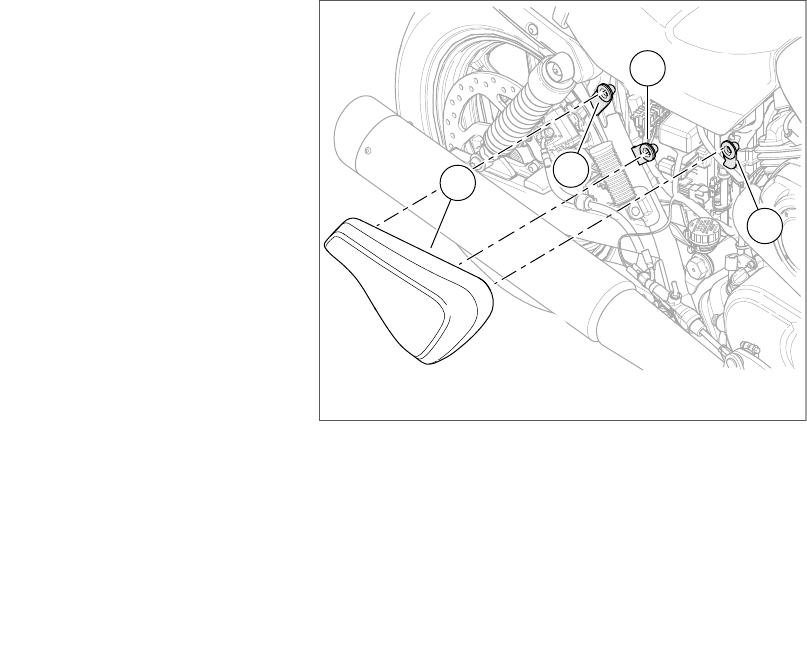
SIDE COVERS
See Figure 46. The procedure for removing the side cover is
the same for the left and right sides.
1. Remove: Pull side cover (1) to release posts from grom-
mets (2).
2. Install: Align side cover posts with grommets (2).
3. Press side cover until posts are fully seated in grommets.
1
2
2
2
om02136
1. Side cover
2. Grommet (3)
Figure 46. Right Side Cover
114 Service Procedures
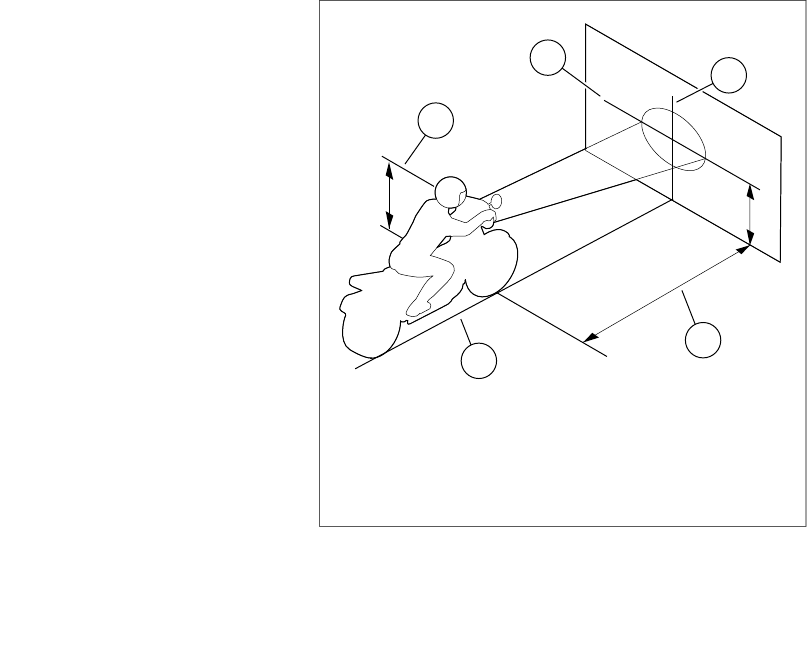
HEADLAMP
Checking Headlamp Alignment
1. Check tire pressure. Refer to Table 21.
2. Adjust rear shocks for the rider and intended load. See
BEFORE RIDING.
3. Fill fuel tank or add an equal amount of ballast.
NOTE
Choose a wall in minimum light.
4. See Figure 47. Park the motorcycle in a line (1) perpendic-
ular to the wall.
5. Position motorcycle with front axle 7.6 m (25 ft) from wall.
6. Draw a vertical line (2) on the wall.
7. Point the front wheel straight forward at the wall.
8. Measure the distance (4) from the floor to the center of
the high beam bulb.
9. Activate high beam.Verify headlamp alignment.
10. Adjust if necessary.
2
3
5
4
1
om00029
1. Perpendicular line
2. Vertical line
3. 7.6 m (25 ft)
4. High beam bulb centerline
5. Horizontal line 53.3 mm (2.1 in) lower than bulb
centerline
Figure 47. Checking Headlamp Alignment
Service Procedures 115

Adjusting Headlamp
Set Horizontal Adjustment
1. See Figure 48. Remove speed screen screws (1) and
washers (2).
2. Pull speed screen away from upper speed screen bracket
(4).
3. Pull speed screen way from lower speed screen bracket
(5) to remove posts (6) from grommets.
4. See Figure 49. Loosen horizontal adjustment locknut (1).
5. Direct light beam straight ahead.
6. Tighten horizontal adjustment locknut to 27.5-32.5
Nm (20.3-32.5 ft-lbs).
NOTE
Perform all adjustments before installing speed screen.
7. See Figure 48. Align posts of speed screen (3) with
grommets.
8. Install speed screen onto lower speed screen bracket (5).
9. Align speed screen to upper speed screen bracket (4).
10. Install washers (2) and screws (1). Tighten to 2.3-3.3
Nm (21-29 in-lbs).
Set Vertical Adjustment
1. See Figure 49. Loosen locknut (1) for vertical adjustment
bolt (2)
2. Aim headlamp at horizontal line on wall.
3. Tighten vertical adjustment locknut to 20.6-25.5 Nm (16-
18 ft-lbs).
116 Service Procedures
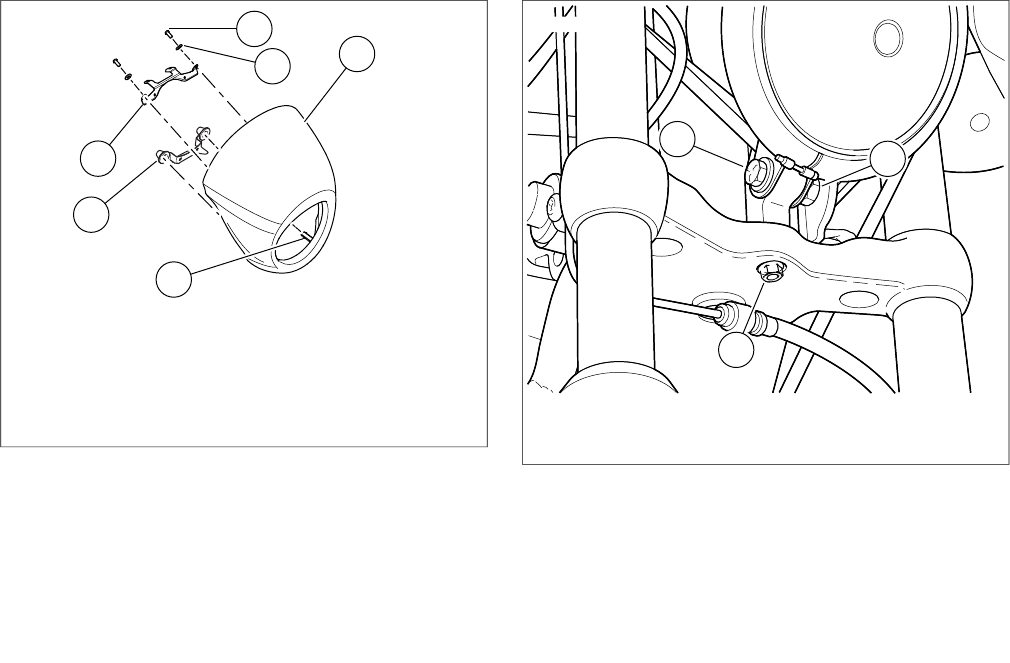
1
2
4
5
3
6
om01866
1. Screw (2)
2. Washer (2)
3. Speed screen
4. Upper speed screen bracket
5. Lower speed screen bracket
6. Post (2)
Figure 48. Headlamp Speed Screen
21
3
om02148
1. Vertical adjustment locknut
2. Vertical adjustment bolt
3. Horizontal adjustment locknut
Figure 49. Headlamp Adjustment
Service Procedures 117

Replacing Headlamp or Position Bulb
The automatic-on headlamp feature provides increased
visibility of the rider to other motorists. Be sure headlamp
is on at all times. Poor visibility of rider to other motorists
can result in death or serious injury. (00030b)
1. See Figure 48. Remove screws (1) and washers (2).
2. Pull speed screen away from upper speed screen bracket
(4).
3. Pull speed screen way from lower speed screen bracket
(5) to remove posts (6) from grommets.
4. Remove main fuse. See SERVICE PROCEDURES, Fuses
and Relays.
5. See Figure 50. Remove screws (6).
6. Pull lens assembly (5) from headlamp housing.
7. Disconnect electrical connectors from headlamp and
position bulbs.
8. Loosen screw (2).
9. Remove retainer (3).
10. Remove headlamp bulb (4).
11. Remove position bulb (7).
12. Install new headlamp or position bulb.
13. Install retainer (3).
14. Tighten screw (2).
15. Connect electrical connectors to headlamp and position
bulbs.
16. Attach lens assembly (5) to headlamp housing.
17. Install screws (6).
18. See Figure 48. Align posts of speed screen (3) with
grommets.
19. Install speed screen onto lower speed screen bracket (5).
20. Align speed screen to upper speed screen bracket (4).
21. Install washers (2) and screws (1). Tighten to 2.3-3.3
Nm (21-29 in-lbs).
22. Install main fuse. See SERVICE PROCEDURES, Fuses
and Relays.
118 Service Procedures
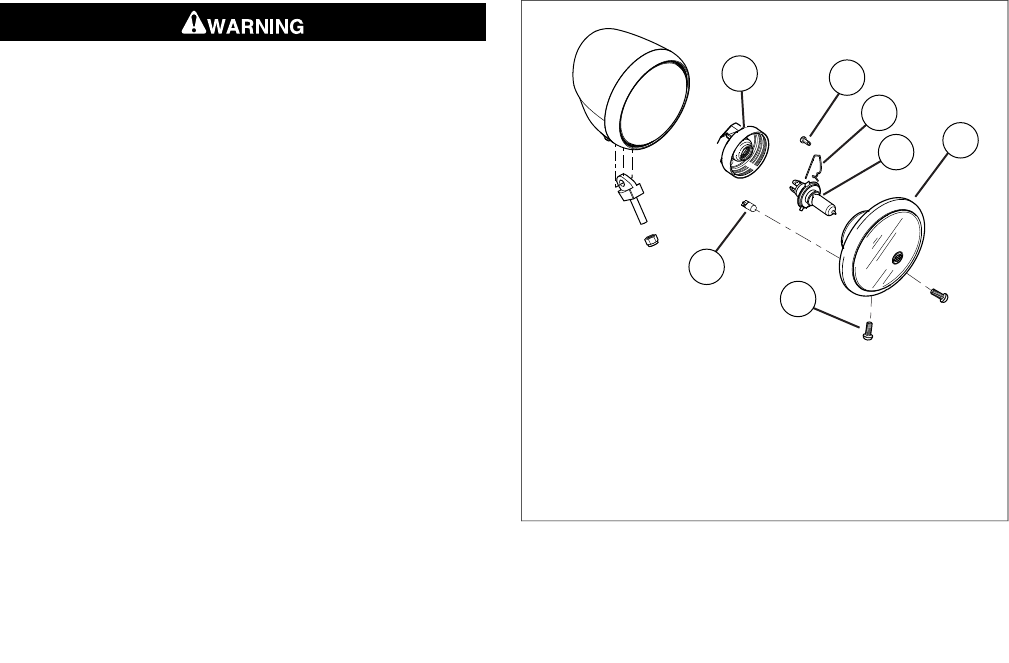
Be sure that all lights and switches operate properly before
operating motorcycle. Low visibility of rider can result in
death or serious injury. (00316a)
23. Check operation of all lamps.
7
12
3
45
6
sm08234
1. Boot
2. Screw
3. Retainer
4. Headlamp bulb
5. Lens assembly
6. Screw (2)
7. Position bulb
Figure 50. Headlamp Bulb
Service Procedures 119
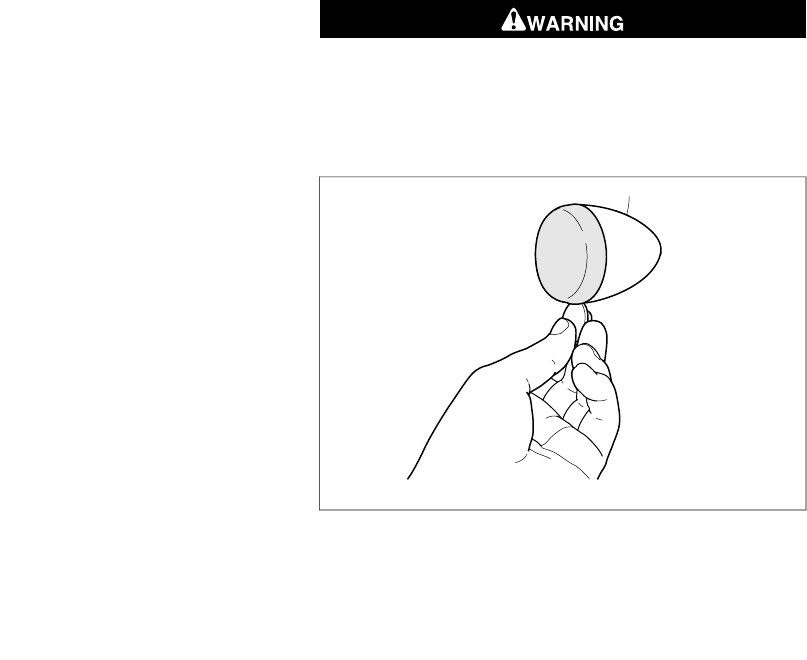
TAIL LAMP
Replacing Tail Lamp Bulb
The tail lamp is an LED assembly. Replace the tail lamp as a
unit. See a Harley-Davidson dealer.
TURN SIGNAL BULB
Replacing Turn Signal Bulb
1. See Figure 51. Insert coin in notch. Carefully twist until
the lens cap pops out of the lamp housing.
2. While pushing bulb in, rotate counterclockwise to remove.
Remove bulb.
3. Inspect condition of electrical contacts in socket. If
necessary, clean with a small wire brush and electrical
contact cleaner.
4. Apply ELECTRICAL CONTACT LUBRICANT to the con-
tacts in socket and at bottom of the new bulb.
5. Align pins on new bulb with guides in bulb socket. Push
and rotate new bulb clockwise into socket.
6. With the notch at the bottom, snap the lens cap onto the
lamp housing.
Be sure that all lights and switches operate properly before
operating motorcycle. Low visibility of rider can result in
death or serious injury. (00316a)
7. Check operation of all lamps.
om00343c
Figure 51. Remove Lens
120 Service Procedures
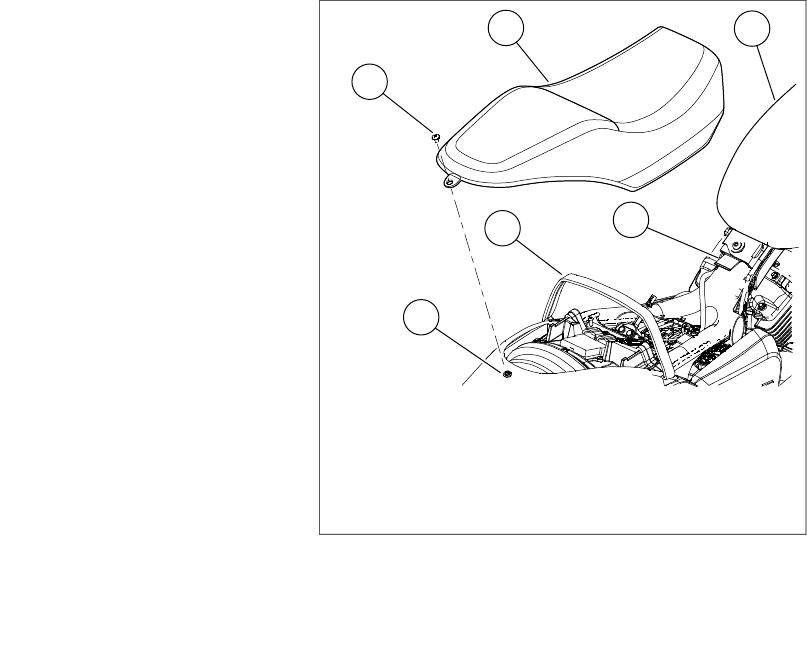
SEAT
Removing Seat
1. See Figure 52. Remove seat retention screw (6).
2. Slide seat (1) rearward to release from seat retention tab
(3).
3. Slide seat forward and above fuel tank (2).
4. Pull seat forward through seat strap (4).
Installing Seat
1. See Figure 52. Insert rear of seat (1) through seat strap
(4).
2. Slide seat forward and on to seat retention tab (3).
3. Install seat retention screw (6). Tighten to 2.3-4.5
Nm (20.3-40.0 in-lbs).
6
1
3
4
5
2
sm08123
1. Seat
2. Fuel tank
3. Seat retention tab
4. Seat strap
5. Seat retention nut
6. Seat retention screw
Figure 52. Seat Removal
Service Procedures 121

NOISE CONTROL SYSTEM
Tampering
Removal or replacement of any noise control system com-
ponent may be prohibited by law. This prohibition includes
modifications made prior to vehicle sale or delivery to the ulti-
mate purchaser. Use of a vehicle on which noise control system
components have been removed or rendered inoperative may
also be prohibited by law.
122 Service Procedures
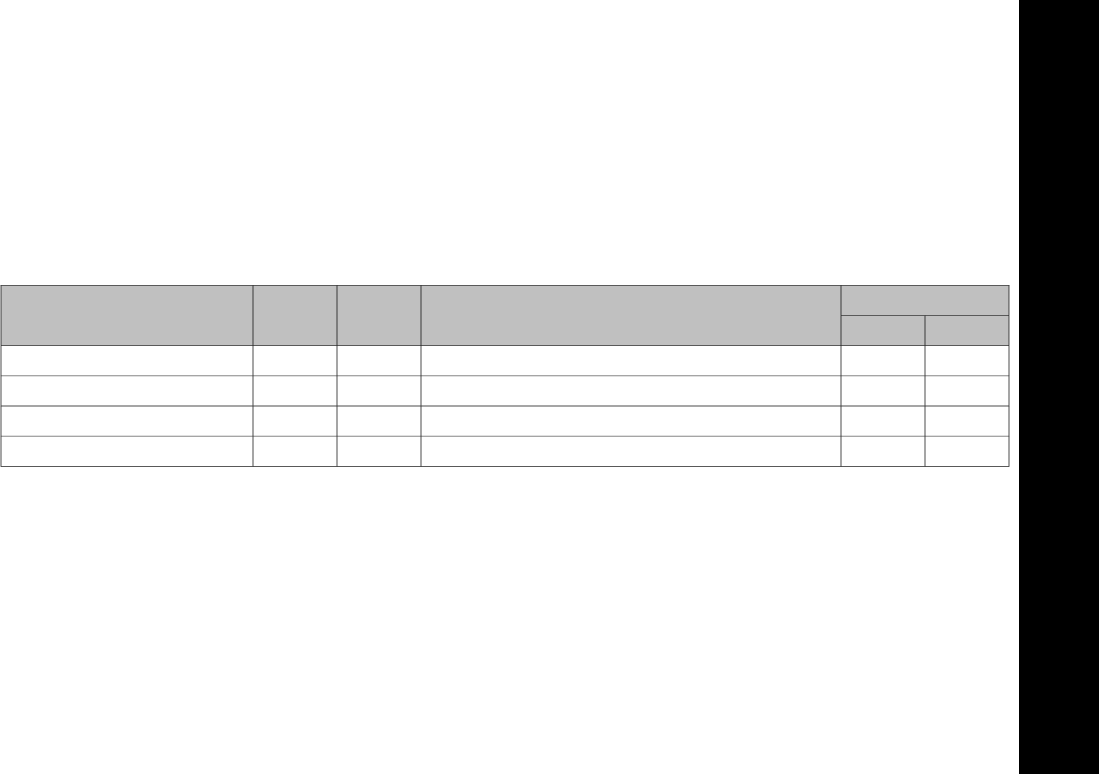
SPECIFICATIONS
NOTES
•Specifications in this publication may not match those of
official certification in some markets due to timing of pub-
lication printing, variance in testing methods, and/or
motorcycle differences. Customers seeking officially
recognized regulatory specifications for their motorcycle
should refer to certification documents and/or contact their
respective dealer or distributor.
•Harley-Davidson reserves the right to change specifica-
tions, equipment or designs at any time without notice and
without incurring obligation.
Tires
Table 21.Tires and Tire Pressure
PRESSURE (COLD)SPECIFIED TIRESIZEMOUNTMODEL
psikPa
30207MRF Zapper (India only): 100/80-17 M/C 52H17 inFrontXG500, XG750
40276MRF Zapper (India only): 150/70-15 M/C 67H15 inRearXG500, XG750
34234Michelin Scorcher 11: 100/80-17 M/C 52H17 inFrontXG500, XG750
42290Michelin Scorcher 11: 140/75R15 M/C 65H15 inRearXG500, XG750
123
SPECIFICATIONS
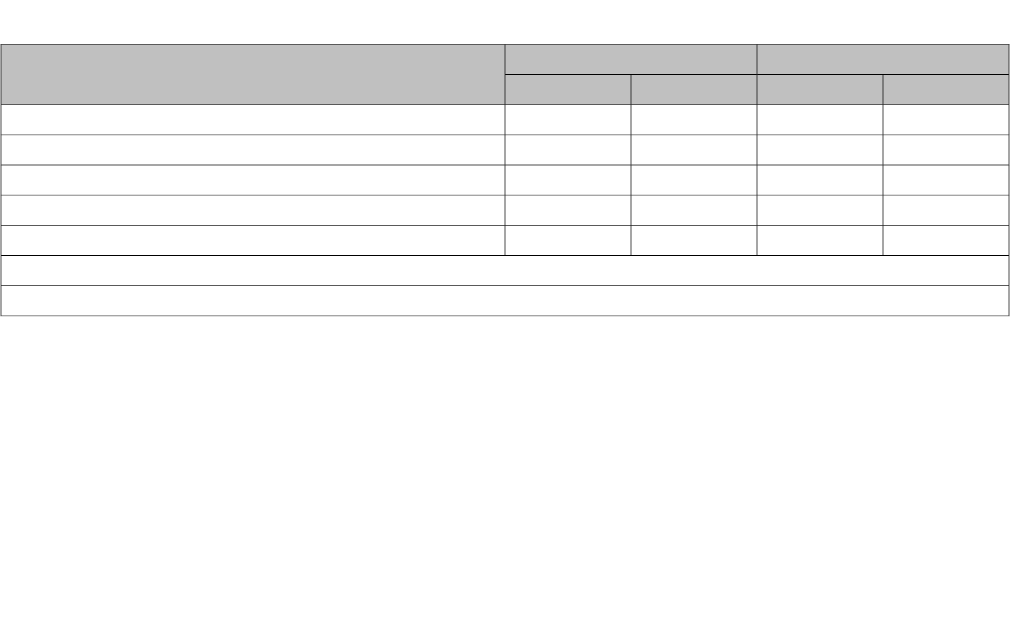
Weights and Dimensions
Table 22. Weights
XG750XG500ITEM
lbkglbkg
512232512232Running weight*
438199438199Maximum added weight allowed**
950431950431GVWR
320145320145GAWR front**
630286630286GAWR rear**
* The total weight of the motorcycle as delivered with all oil/fluids and approximately 90% of fuel.
** The total weight of accessories, cargo, riding gear, passenger and rider cannot exceed this weight.
124 Specifications
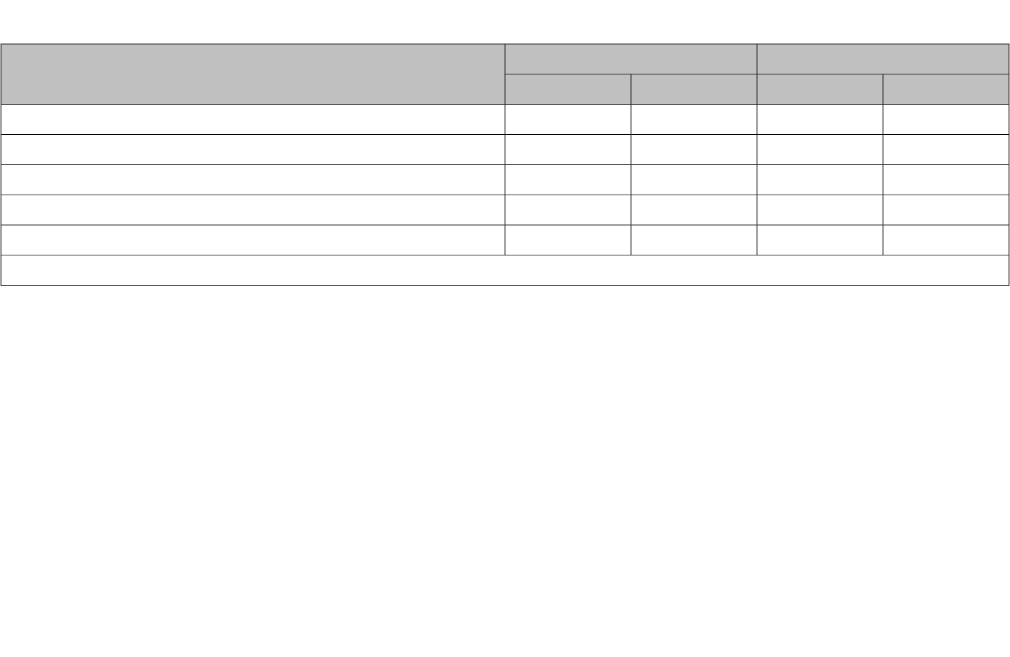
Table 23. Dimensions
XG750XG500ITEM
inmminmm
87.6222587.62225Overall length
32.382032.3820Overall width
60.4153460.41534Wheelbase
5.71455.7145Ground clearance
25.765425.7654Seat height*
*With 81.7 kg (180 lb) rider on seat.
Specifications 125
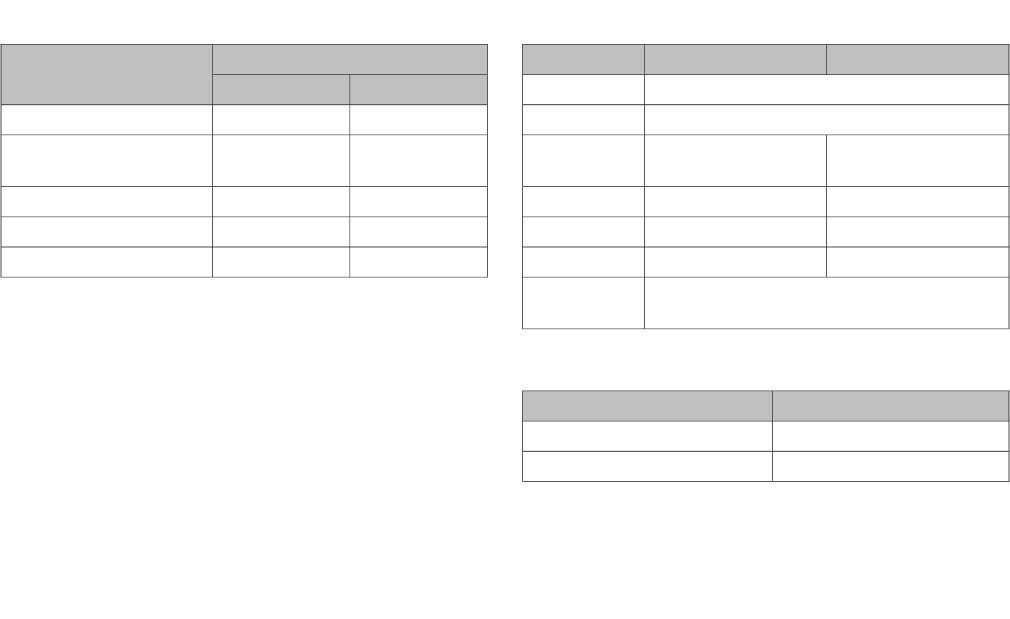
Capacities
Table 24. Capacities
CAPACITYITEM
U.S.METRIC
3.5 gal13.1 LFuel tank
0.8 gal3.1 LLow fuel indicator
(approximate)
3.3 qt3.1 LEngine oil (wet)
3.5 qt3.3 LEngine oil (dry)
1.4 qt1.3 LCoolant
Engine and Transmission
Table 25. Revolution X Engine Specifications
XG750XG500ITEM
2Cylinders
60 degree, liquid cooled V-TypeType
10.5:111.0:1Compression
ratio
85 mm (3.35 in)69 mm (2.72 in)Bore
66 mm (2.60 in)66 mm (2.60 in)Stroke
749 cm3 (46 in3)494 cm3 (30 in3)Displacement
Pressurized, wet sumpLubrication
system
Table 26.Transmission Specifications
SPECIFICATIONITEM
Constant mesh, foot shiftType
6 forwardSpeeds
126 Specifications
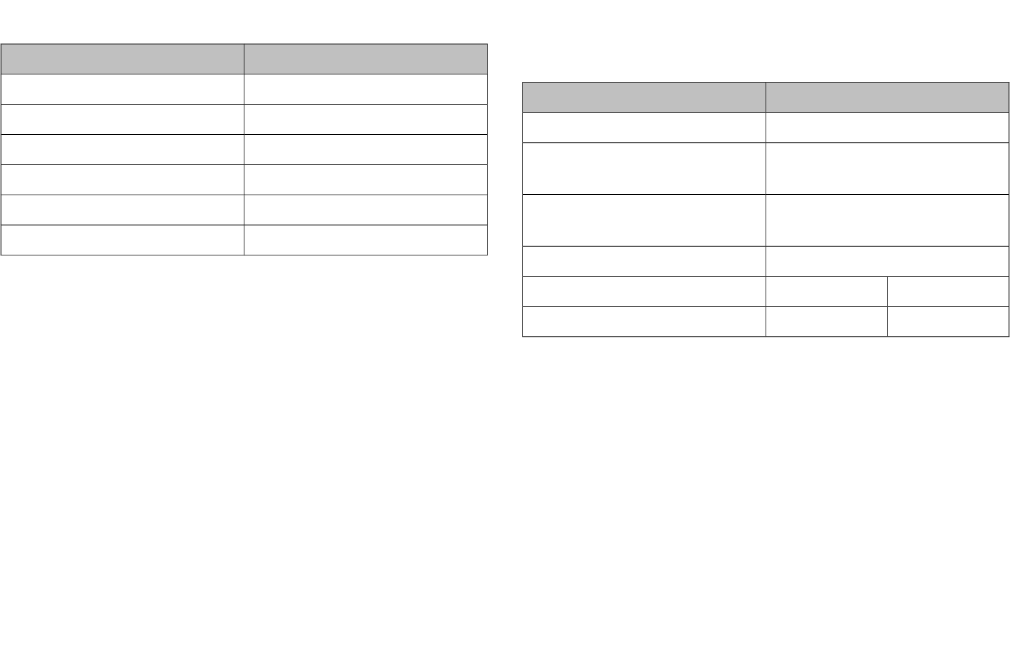
Table 27. Overall Gear Ratios
RATIOGEAR
14.25First gear
10.07Second gear
7.45Third gear
5.99Fourth gear
5.04Fifth gear
4.53Sixth gear
Electrical
Table 28. Electrical Specifications
SPECIFICATIONITEM
Not adjustableIgnition timing
12 V, 12 Ah, 225 CCA sealed
and maintenance-free
Battery
Three-phase, 35 A system
(17.7 A @ 1000 rpm)
Charging system
10 mmSpark plug size
0.031-0.035 in0.8-0.9 mmSpark plug gap
89-106 in-lbs10-12 NmSpark plug torque
Specifications 127

128 Specifications
NOTES
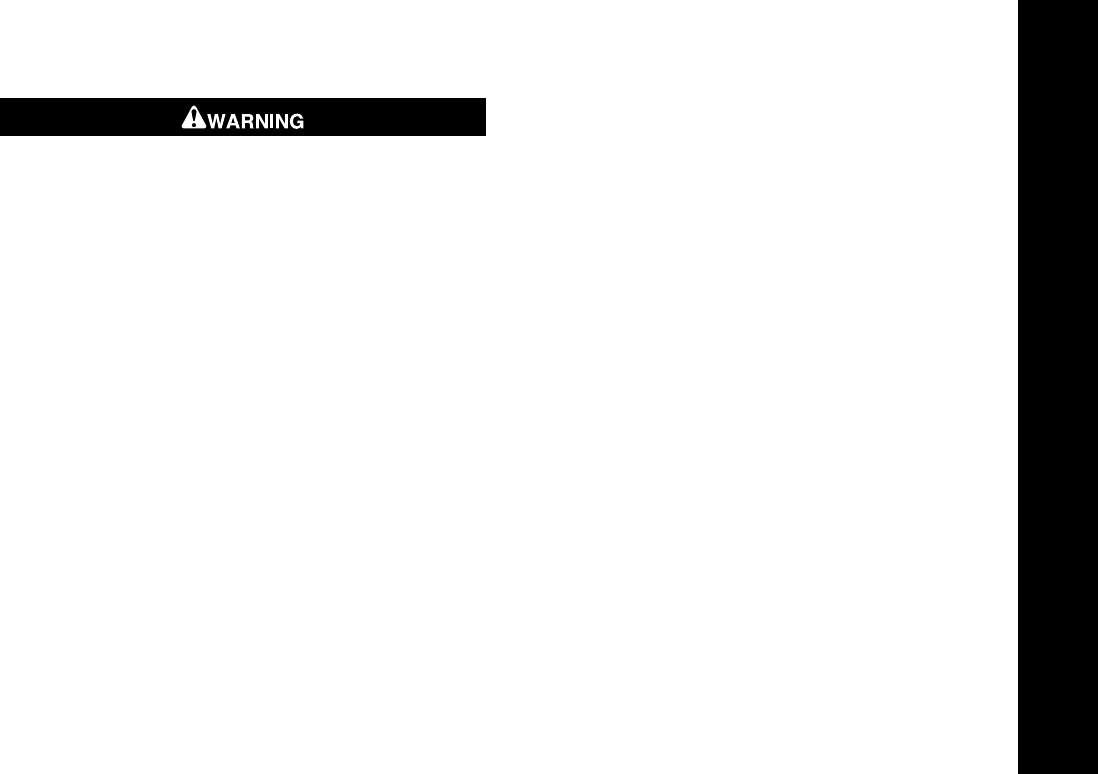
TROUBLESHOOTING: GENERAL
The troubleshooting section of the Owner's Manual is a
guide to diagnose problems. Read the service manual
before performing any work. Improper repair and/or
maintenance could result in death or serious injury.
(00080a)
ENGINE
Starter Does Not Operate or Does Not Turn
Engine Over
1. Engine off/run switch in off position.
2. Ignition switch not on.
3. Discharged battery or loose or corroded connections
(solenoid chatters).
4. Clutch lever not squeezed against handlebar or transmis-
sion not in neutral.
5. Failed fuse.
Engine Turns Over But Does Not Start
1. Engine off/run switch in off position.
2. Fuel tank empty.
3. Fuel filter clogged.
4. Discharged battery or loose or damaged battery terminal
connections.
5. Fouled spark plugs.
6. Spark plug coil connections loose or in bad condition and
shorting.
7. Loose or corroded wire or cable connections at coil or
battery.
8. Fuel pump inoperative.
9. Failed fuse.
Starts Hard
1. Spark plugs in bad condition, have improper gap or are
partially fouled.
2. Battery nearly discharged.
3. Loose wire or cable connections at one of the battery ter-
minals or at coil.
4. Engine oil too heavy (cold-weather operation).
5. Fuel tank vent plugged or fuel line closed off, restricting
fuel flow.
6. Water or dirt in fuel system.
7. Fuel pump inoperative.
129
TROUBLESHOOTING

Starts But Runs Irregularly or Misses
1. Spark plugs in bad condition or partially fouled.
2. Spark plug gap too close or too wide.
3. Battery nearly discharged.
4. Damaged wire or loose connection at battery terminals or
coils.
5. Intermittent short circuit due to damaged wire insulation.
6. Water or dirt in fuel system, filter or carburetor.
7. Fuel vent system plugged. See dealer.
8. One or more injectors fouled.
A Spark Plug Fouls Repeatedly
1. Incorrect spark plug.
Pre-ignition or Detonation (Knocks or Pings)
1. Incorrect fuel.
2. Incorrect spark plug for the kind of service.
Overheats
1. Insufficient oil supply or oil not circulating.
2. Heavy carbon deposit from lugging engine. See dealer.
Excessive Vibration
1. Rear fork pivot shaft nuts loose. See dealer.
2. Front engine mounting bolts loose. See dealer.
3. Damaged frame. See dealer.
4. Belt badly worn.
5. Wheels and/or tires damaged. See dealer.
6. Vehicle not properly aligned. See dealer.
Engine Oil Not Circulating (Oil Pressure Lamp
Lit)
1. Insufficient or diluted oil supply.
2. Oil feed clogged with ice and sludge in freezing weather.
3. Grounded oil signal switch wire. See dealer.
4. Damaged or improperly installed check valve. See dealer.
5. Oil pump problem. See dealer.
130 Troubleshooting

COOLING SYSTEM
Overheats
1. Low coolant level or improper coolant.
2. Cooling fans not operating.
3. Air flow through the radiator is obstructed.
4. Blocked coolant passages.
5. Temperature gauge malfunction.
6. Radiator cap problem.
7. Thermostat malfunction.
ELECTRICAL SYSTEM
Alternator Does Not Charge
1. Regulator not grounded. See dealer.
2. Engine ground wire loose or damaged. See dealer.
3. Loose or damaged wires in charging circuit. See dealer.
Alternator Charge Rate is Below Normal
1. Weak battery.
2. Excessive use of add-on accessories.
3. Loose or corroded connections.
4. Extensive periods of idling or low speed riding.
TRANSMISSION
Transmission Shifts Hard
1. Bent shifter rod. See dealer.
2. Transmission shifting mechanism needs adjustment. See
dealer.
Transmission Jumps Out of Gear
1. Shifter rod improperly adjusted. See dealer.
2. Shifter forks (inside transmission) improperly adjusted.
See dealer.
3. Worn shifter dogs in transmission. See dealer.
Clutch Slips
1. Clutch controls improperly adjusted. See dealer.
2. Worn friction discs. See dealer.
3. Insufficient clutch spring tension. See dealer.
Troubleshooting 131

Clutch Drags or Does Not Release
1. Clutch controls improperly adjusted. See dealer.
2. Insufficient clutch spring tension. See dealer.
3. Clutch discs warped. See dealer.
Clutch Chatters
1. Friction discs or steel discs worn or warped. See dealer.
BRAKES
Brakes Do Not Hold Normally
1. Master cylinder low on fluid. See dealer.
2. Brake line contains air bubbles. See dealer.
3. Master or wheel cylinder piston worn. See dealer.
4. Brake pads contaminated with grease or oil. See dealer.
5. Brake pads badly worn. See dealer.
6. Brake disc badly worn or warped. See dealer.
7. Brake fades because of heat build up. Excessive braking
or brake pads dragging. See dealer.
8. Brake drags. See dealer.
132 Troubleshooting

GENERAL WARRANTY INFORMATION
This owner's manual contains your new motorcycle limited
warranty and your owner's maintenance record.
It is your responsibility as the owner to follow the maintenance
schedule at the mileage intervals as specified in this owner's
manual. All of the specified maintenance services must be
performed to keep your limited warranty valid.
Some countries, states or other locations may require all regular
maintenance and service work to be done by an authorized
Harley-Davidson dealer for your limited warranty to remain in
effect. Check with your authorized Harley-Davidson dealer for
local requirements.
1. Make an appointment with a Harley-Davidson dealer for
inspection and service prior to the first 1600 km (1000 mi),
and as soon as possible after any problem arises.
2. Bring this owner's manual with you when you visit your
authorized Harley-Davidson dealer to have your motor-
cycle inspected and serviced.
3. Have the dealer technician sign the maintenance record
in this owner's manual at the proper mileage interval.
These records should be retained by the owner as proof
of proper maintenance.
4. Keep receipts covering any parts, service or maintenance
performed.
These records should be transferred to each subsequent
owner.
Use only Harley-Davidson approved parts and accessories
that have been designed, tested and approved for your model
and model year motorcycle.
Use of certain manufacturers' aftermarket performance parts
may void all or parts of your limited warranty. See an authorized
Harley-Davidson dealer for details.
Harley-Davidson authorized dealerships are independently
owned and operated and may sell parts and accessories that
are not manufactured or approved by Harley-Davidson for use
on your motorcycle. Therefore, you should understand that
Harley-Davidson is not and cannot be responsible for the
quality, suitability or safety of any non-Harley-Davidson part,
accessory or design modification, including labor, which may
be sold and/or installed by authorized Harley-Davidson dealer-
ships.
Keeping it All Harley-Davidson
Genuine Harley-Davidson parts are engineered and tested
specifically for use on your motorcycle. Insist that your
authorized Harley-Davidson dealer uses only genuine Harley-
Davidson replacement parts and accessories to keep your
Harley-Davidson motorcycle and its limited warranty intact.
Installing off-road or competition parts to enhance performance
may void all or part of your new motorcycle limited warranty.
133
WARRANTIES

See the Harley-Davidson Motorcycle Limited Warranty in this
manual or an authorized Harley-Davidson dealer for details.
CALIFORNIA AND SELECT
INTERNATIONAL MARKETS EVAPORATIVE
EMISSION CONTROLS: 2017 MODELS
All new 2017 Harley-Davidson motorcycles sold in the State
of California and select international markets have an evapor-
ative emission control system.This system is designed to meet
CARB and local regulations in effect at the time of manufacture.
The system requires a small amount of maintenance. Period-
ically inspect system to verify that hoses are properly routed,
not kinked or blocked and that all fittings are secure. Periodic-
ally check mounting hardware for tightness.
EPA NOISE REGULATIONS IN THE UNITED
STATES
EPA noise regulations require that the following statements be
included in the Owner's Manual.
EPA Regulations
TAMPERING WITH NOISE CONTROL SYSTEM PROHIB-
ITED: Federal law prohibits the following acts or the causing
thereof: (1) The removal or rendering inoperative by any person
other than for purposes of maintenance, repair, or replacement
of any device or element of design incorporated into any new
vehicle for the purpose of noise control prior to its sale or
delivery to the ultimate purchaser or while it is in use, or (2)
the use of the vehicle after such device or element of design
has been removed or rendered inoperative by any person.
AMONG THOSE ACTS PRESUMED TO CONSTITUTE
TAMPERING ARE THE FOLLOWING:
1. Replacing the muffler(s) and/or the entire exhaust system
with parts not certified to be noise legal for street use.
2. Removing or modifying the muffler internal baffles in any
way.
3. Replacing the air intake/cleaner assembly with one not
certified to be noise legal for street use.
4. Modifying the air intake/cleaner assembly in such a way
as to make the vehicle no longer noise legal for street use.
Harley-Davidson recommends that any and all noise related
maintenance be done by an authorized Harley-Davidson dealer
using Genuine Harley-Davidson parts.
WARRANTY/SERVICE INFORMATION
Any authorized Harley-Davidson dealer may provide warranty
repair work on your motorcycle. The fact that an authorized
134 Warranties

Harley-Davidson dealership performs warranty repairs does
not create an agency relationship between Harley-Davidson
and the authorized dealership. If you have any questions
regarding warranty obligations contact your authorized Harley-
Davidson dealer.
For normal service work or warranty work under the above
conditions, you may obtain the name and location of your
nearest U.S. authorized Harley-Davidson dealer by calling 1-
800-258-2464 (U.S. only). To find dealers worldwide, see
www.harley-davidson.com.
REPORTING SAFETY DEFECTS IN THE
UNITED STATES
Safety defects must be reported to the National Highway Traffic
Safety Administration (NHTSA) and Harley-Davidson.
NHTSA Statement
If you believe that your motorcycle has a defect which could
cause a crash or could cause injury or death, you should
immediately inform the National Highway Traffic Safety
Administration (NHTSA) in addition to notifying Harley-Dav-
idson.
If NHTSA receives similar complaints, it may open an investig-
ation, and if it finds that a safety defect exists in a group of
motorcycles, it may order a recall and remedy campaign.
However, NHTSA cannot become involved in individual prob-
lems between you, your authorized Harley-Davidson dealer,
or Harley-Davidson.
You can contact NHTSA through the following means. Addi-
tional information about motor vehicle safety is available
through the website.
Telephone: Vehicle Safety Hotline (toll-free) at 1-888-327-
4236 (TTY: 1-800-424-9153).
Website: www.safercar.gov
Address: Administrator, NHTSA, 400 Seventh Street SW,
Washington, DC 20590
REQUIRED DOCUMENTATION FOR
IMPORTED MOTORCYCLES
If a Harley-Davidson motorcycle is imported into the United
States, additional documentation is required for that motorcycle
to be eligible for the United States Harley-Davidson Motorcycle
Limited Warranty. An authorized Harley-Davidson dealer can
provide a form explaining the requirements.
OWNER CONTACT INFORMATION
If you move from your present address, sell your motorcycle,
or purchase a pre-owned Harley-Davidson motorcycle, see an
Warranties 135

authorized Harley-Davidson dealer to update your owner con-
tact information.
This will provide Harley-Davidson with an accurate registration
(as required by law in some countries), and will allow Harley-
Davidson to notify you in the event of a recall or product pro-
gram.
The rights and benefits conferred upon you and the obligations
of Harley-Davidson as set forth herein are separate and distinct
from any rights and duties set forth in any service contract you
may have purchased from a dealership and/or third-party
insurance company. Harley-Davidson does not authorize any
entity to expand Harley-Davidson's warranty obligations in
connection with your motorcycle or this limited warranty.
When updating your contact information, your authorized
Harley-Davidson dealer will need your Vehicle Identification
Number (VIN), odometer mileage, and date of vehicle transfer
(if applicable).
QUESTIONS AND CONCERNS
If you have questions or concerns regarding the performance
of your motorcycle or the application of the limited warranty
described here, or are not satisfied with the service you are
receiving from an authorized Harley-Davidson dealership, do
the following:
1. Contact the selling and/or servicing dealership and speak
to the sales and/or service manager.
2. If your concern cannot be addressed to your satisfaction
by the dealership, contact the Harley-Davidson Customer
Support Center by mailing your concern to the following
address or calling the phone number below.
In the U.S., state warranty laws, often referred to as lemon
laws, may provide you with certain rights not specifically men-
tioned here. To the extent allowed by your state, Harley-Dav-
idson requests that you first send written notification of any
defect or warranty non-conformity that you have experienced
with your motorcycle to Harley-Davidson. Harley-Davidson
appreciates the opportunity to investigate your concerns and
restore your satisfaction in your motorcycle by making the
necessary repairs consistent with the terms of Harley-Dav-
idson's limited warranty. Harley-Davidson requests that you
send your complaint to the Harley-Davidson Customer Support
Center.
•Harley-Davidson Motor Company
Attention: Harley-Davidson Customer Support Center
P.O. Box 653
Milwaukee, Wisconsin 53201
1-800-258-2464 (U.S. only)
136 Warranties

1-414-343-4056
This warranty does not mean that each Harley-Davidson
motorcycle is free from defects. Defects may be unintentionally
introduced into motorcycles during the design and manufac-
turing processes and such defects could result in the need for
repairs. For this reason, Harley-Davidson provides the Limited
Warranty in order to remedy any such defects that result in a
component malfunction or failure during the warranty period.
The remedy under this written warranty, and any implied war-
ranty, is limited to repair, replacement or adjustment of the
defective part. This exclusive remedy shall not be deemed to
have failed its essential purpose so long as Harley-Davidson,
through its authorized dealers, is willing and able to repair,
replace or adjust defective parts in the prescribed manner.
Harley-Davidson's liability, if any, shall in no event exceed the
cost of correcting any defect as herein provided and upon
expiration of this warranty, any such liability shall terminate.
2017 HARLEY-DAVIDSON MOTORCYCLE
LIMITED WARRANTY
24 Months/Unlimited Miles
Harley-Davidson warrants for any new 2017 Harley-Davidson
motorcycle that an authorized Harley-Davidson dealer will
repair or replace without charge any parts found under normal
use to be defective in factory materials or workmanship. Such
repair or replacement of defective parts will be Harley-Dav-
idson's sole obligation and your sole and exclusive remedy
under this limited warranty. This limited warranty applies only
for the duration identified below.
No person, including Harley-Davidson dealers, may modify,
extend or waive any part of this warranty.
As a condition of this warranty, you are responsible for properly
using, maintaining, and caring for your motorcycle as outlined
in your Owner Manual. Harley-Davidson recommends that you
maintain copies of all maintenance records and receipts.
THERE IS NO OTHER EXPRESS WARRANTY (OTHER THAN
THE SEPARATE EMISSIONS, NOISE, AND RADIO LIMITED
WARRANTIES) ON THE MOTORCYCLE. Any implied warranty
of merchantability or fitness for particular purpose is limited to
the duration of the express warranty, or to the duration set forth
in your state's warranty statutes, whichever is shorter. Any
implied warranty is not transferred to subsequent pur-
chasers/buyers of the motorcycle.
The implied warranty of fitness for a particular purpose does
not apply if your motorcycle is used for racing, even if the
motorcycle is equipped for racing.
Some states do not allow limitations on how long an implied
warranty lasts, so the above limitation may not apply to you.
Warranties 137

TO THE FULLEST EXTENT ALLOWED BY LAW, NEITHER
HARLEY-DAVIDSON NOR ITS AUTHORIZED DEALERS
SHALL BE LIABLE FOR LOSS OF TIME, INCONVENIENCE,
LOSS OF MOTORCYCLE USE, COMMERCIAL LOSS OR
ANY OTHER INCIDENTAL OR CONSEQUENTIAL DAMAGES.
Harley-Davidson and your dealer are not responsible for any
time or income that you lose, any inconvenience, the loss of
your transportation or use of your motorcycle, the cost of a
rental motorcycle, fuel, travel, meals, or lodging, or for any
other incidental or consequential damages you may have.
Punitive, exemplary, or multiple damages may not be recovered
unless applicable law prohibits their disclaimer. You may not
bring any warranty-related claim as a class representative, a
private attorney general, a member of a class of claimants or
in any other representative capacity. Harley-Davidson shall
not be liable for any damages caused by delay in delivery or
furnishing of any products and/or services.
Some states do not allow the exclusion or limitation of incidental
or consequential damages, so the above limitation or exclusion
may not apply to you.
This warranty gives you specific legal rights, and you may also
have other rights which vary from state to state.
The following terms and conditions apply to this limited war-
ranty:
Duration
1. The duration of this limited warranty is twenty-four months,
starting from the earlier of (a) the date of initial retail pur-
chase and delivery of the motorcycle from an authorized
Harley-Davidson dealer, or (b) the third anniversary of the
last day of the model year of the motorcycle. Your
authorized Harley-Davidson dealer will submit an electronic
Sales and Warranty Registration form to initiate your lim-
ited warranty.
2. Any unexpired portion of this limited warranty will be
transferred to subsequent owners, upon the resale of the
motorcycle during the limited warranty period.
Owner's Obligations
To obtain warranty service, return your motorcycle at your
expense within the limited warranty period to an authorized
Harley-Davidson dealer. The authorized Harley-Davidson
dealer should be able to provide warranty service during normal
business hours, depending upon the workload of the authorized
dealer's service department and the availability of necessary
parts.
Exclusions
This limited warranty will not apply to any motorcycle.
138 Warranties

1. Which has not been operated or maintained as specified
in the owner's manual.
2. Which has been abused, neglected, misused, improperly
stored, used "off the highway," or used for racing or com-
petition of any kind.
3. Which is not manufactured to comply with the laws of the
market in which it is registered.
4. Which has off-road or competition parts installed to
enhance performance, a trailer hitch, or has other unap-
proved modifications (even if these modifications include
genuine Harley-Davidson parts and accessories that are
not approved for use on your motorcycle).These modific-
ations may void all or parts of your new motorcycle limited
warranty. See an authorized Harley-Davidson dealer for
details.
5. Which has been subjected to an act of God, war, riot,
insurrection, nuclear contamination, natural disasters,
including, but not limited to, lightning, forest fires, dust
storms, hail storms, ice storms, earthquakes, or floods, or
other circumstances out of Harley-Davidson's control.
6. Which has been in an accident or collision or has been
dropped or struck.
Other Limitations
This limited warranty does not cover:
1. Parts and labor for normal maintenance as recommended
in the owner's manual, or the replacement of parts due to
normal wear and tear including, but not limited to, the fol-
lowing: tires, lubrication, oil and filter change, fuel system
cleaning, battery maintenance, engine tune-up, spark
plugs, brake, clutch, chain/belt adjustment and chain
replacement.
2. Cosmetic concerns that arise as a result of owner abuse,
lack of proper maintenance or environmental conditions
(except concerns that result from defects in factory
materials or workmanship, which are covered by this lim-
ited warranty for the duration of the limited warranty
period).
3. Any cosmetic condition existing at the time of retail delivery
that has not been documented by the authorized Harley-
Davidson selling dealer prior to retail delivery.
4. Defects or damage to the motorcycle caused by alterations
outside of Harley-Davidson's factory specifications or
caused by alterations or use of parts or accessories not
approved for the make and model year of your motorcycle.
Warranties 139

5. Damage caused by installation or use of non-Harley-
Davidson components, even those installed by an
authorized Harley-Davidson dealership, that cause a
Harley-Davidson part to fail. Examples include, but are
not limited to performance-enhancing powertrain compon-
ents or software, exhaust systems, trailer hitches, non-
approved tires, lowering kits, handlebars, and add-ons
connected to the factory electrical system.
Important: Read Carefully
1. Authorized Harley-Davidson dealers are independently
owned and operated and may sell non-Harley-Davidson
products. Because of this, HARLEY-DAVIDSON IS NOT
RESPONSIBLE FOR THE SAFETY, QUALITY, OR
SUITABILITY OF ANY NON-HARLEY-DAVIDSON PART,
ACCESSORY OR DESIGN MODIFICATION INCLUDING,
BUT NOT LIMITED TO, LABOR WHICH MAY BE SOLD
AND/OR INSTALLED BY AUTHORIZED HARLEY-DAV-
IDSON DEALERS.
2. This limited warranty is a contract between you and Harley-
Davidson. It is separate and apart from any warranty you
may receive or purchase from an authorized Harley-Dav-
idson dealer. An authorized Harley-Davidson dealer is not
authorized to alter, modify, expand, or in any way change
the terms and conditions of this limited warranty.
3. Any warranty work or parts replacement authorized by
Harley-Davidson will not preclude Harley-Davidson from
later relying on any exclusion where applicable.
4. Harley-Davidson and its authorized dealers reserve the
right to modify or service motorcycles designed and man-
ufactured by Harley-Davidson at any time without incurring
any additional obligation to make the same alteration or
change to a motorcycle previously built and sold. Harley-
Davidson reserves the right to provide post-warranty
repairs, conduct repair campaigns, offer good-will or cus-
tomer satisfaction repairs or extend the warranty coverage
for certain motorcycles at its sole discretion. Said repairs
or extensions of warranty coverage in no way obligates
Harley-Davidson to provide similar accommodations to
other owners of similar motorcycles. Sometimes Harley-
Davidson may offer a special adjustment program to pay
all or part of the cost of certain repairs beyond the terms
of your limited warranty. Check with your authorized
Harley-Davidson dealer to learn whether such programs
are available to you. Your state may prohibit these types
of offers, in which case, they may not be available to you.
5. The fact that a part is labeled or branded Harley-Davidson
does not necessarily make it appropriate or warranted for
the make and model of your motorcycle.The use of parts
not designed and tested for your motorcycle may have
140 Warranties

negative consequences on the performance of your
motorcycle and may create conditions not covered by this
limited warranty.
2017 AUSTRALIA/NEW ZEALAND
HARLEY-DAVIDSON MOTORCYCLE
MANUFACTURER'S LIMITED WARRANTY
24 Months/Unlimited Miles
This motorcycle limited warranty, referred to below as the
"H-D Motorcycle Warranty" applies to all persons who
purchase a new 2017 or prior-model Harley-Davidson
motorcycle in Australia and New Zealand only after 1st
January 2017.
Your Consumer Rights
The benefits given to you under this H-D Motorcycle Warranty
are additional to, and do not detract from, other rights and
remedies that you may have in respect of the motorcycle under
Australian and New Zealand laws, including consumer protec-
tion laws.
In Australia, our goods come with guarantees that cannot be
excluded under the Australian Consumer Law.You are entitled
to a replacement or refund for a major failure and compensation
for any other reasonably foreseeable loss or damage.You are
also entitled to have the goods repaired or replaced if the goods
fail to be of acceptable quality and the failure does not amount
to a major failure.
In New Zealand, our goods also come with guarantees that
cannot be excluded under the New Zealand Consumer Guar-
antees Act.
Warranty
This H-D Motorcycle Warranty, is provided by Harley-Dav-
idson, Motor Company, P.O. Box 653, Milwaukee, Wisconsin
53201, U.S.A, phone: +1 (414) 343-4056, ("Harley-Davidson").
Harley-Davidson warrants for any new 2017 Harley-Davidson
motorcycle that an authorised Harley-Davidson dealer will
repair or replace without charge any parts found to be defective
in factory materials or workmanship under normal use during
the warranty period set out below.
Such repair or replacement of parts will be Harley-Davidson's
sole obligation and your sole remedy under this H-D Motorcycle
Warranty, however you may have other rights under Australian
and New Zealand laws, as described above.
Note: Goods presented for repair may be replaced by refur-
bished goods of the same type rather than being repaired.
Refurbished parts may be used to repair goods.
Warranties 141

The following terms and conditions apply to this H-D Motorcycle
Warranty:
Warranty Period
The duration of this H-D Motorcycle Warranty is twenty-four
months, starting from the earlier of:
(a) the date of delivery by an authorised Harley-Davidson dealer
to the first retail purchaser; or
(b) the third anniversary of the last day of the model year of
the motorcycle (if not sold to a retail purchaser before that
date).
Your authorised Harley-Davidson dealer will submit an elec-
tronic Sales and Warranty Registration form to initiate your H-
D Motorcycle Warranty.
Note: If the motorcycle was used as a demonstrator or com-
pany motorcycle, then the warranty period may have started
and/or expired prior to the initial retail sale. See an authorised
Harley-Davidson dealer for details.
Any unexpired portion of this H-D Motorcycle Warranty will be
transferred to subsequent owners, upon the resale of the
motorcycle during the warranty period. See the OWNER
CONTACT INFORMATION section of the Owner's Manual for
information regarding notification of ownership changes.
Obtaining Warranty Service
To obtain warranty service, return your motorcycle at your
expense within the warranty period to an authorised dealer.
Harley-Davidson's network of authorised dealers is large, and
continues to expand. To find current contact information for
your nearest authorised dealer, visit our website at www.h-
d.com.au.
The authorised Harley-Davidson dealer should be able to
provide warranty service during normal business hours and as
soon as possible, depending upon the workload of the author-
ised dealer's service department and the availability of neces-
sary parts
You are responsible for collecting the motorcycle from the
authorized dealer once the warranty service has been com-
pleted, at your expense.
Exclusions
This H-D Motorcycle Warranty will not apply to any motorcycle
(or part or accessory):
1. Which has not been operated or maintained as specified
in the Owner's Manual.
2. Which has been abused, neglected, misused, improperly
stored, used "off the highway," or used for racing or com-
petition of any kind.
142 Warranties

3. Which was not originally manufactured for use or sold in
Australia and New Zealand and/or does not comply with
Australian and New Zealand homologation requirements.
4. Which has off-road or competition parts installed to
enhance performance, or has unapproved modifications.
These modifications may void all or part of your new H-D
Motorcycle Warranty. See an authorised Harley-Davidson
dealer for details.
5. Where damage is caused by, or Harley-Davidson is unable
to honour this H-D Motorcycle Warranty due to, acts of
God, war, riot, insurrection, natural disasters, including,
but not limited to, nuclear contamination, lightning, forest
fires, dust storms, hail storms, ice storms, earthquakes,
floods, or other circumstances out of Harley-Davidson's
control.
6. Which has been in an accident, collision, dropped or
struck.
Note: Even though this H-D Motorcycle Warranty does not
apply in the circumstances set out above, you may still have
rights under Australian and New Zealand laws, including the
Australian Consumer Law in such circumstances.
Other Limitations
This H-D Motorcycle Warranty does not cover:
1. Parts and accessories not manufactured by Harley-Dav-
idson, or any damage caused to the motorcycle by the
installation of such parts and accessories, even if such
parts and accessories are installed on the motorcycle at
the date of initial retail purchase. A separate third party
warranty may apply to such parts and accessories. See
an authorised Harley-Davidson dealer for details.
2. Parts and labour for normal maintenance as recommended
in the Owner's Manual, or the replacement of parts due
to normal wear and tear including, but not limited to, the
following: tyres, lubrication, oil and filter change, fuel
system cleaning, battery maintenance, engine tune-up,
spark plugs, brake, clutch, chain/belt adjustment and chain
replacement.
3. Cosmetic or other concerns that arise as a result of owner
abuse, lack of proper maintenance or environmental con-
ditions (except concerns that result from defects in factory
materials or workmanship, which are covered by this H-D
Motorcycle Warranty for the duration of the warranty
period).
4. Any cosmetic condition existing at the time of retail delivery
that has not been documented by the authorised Harley-
Davidson selling dealer prior to retail delivery.
Warranties 143

5. Defects or damage to the motorcycle caused by alterations
outside of Harley-Davidson's factory specifications,
including the installation of competition or closed course
parts and accessories and the addition of loads and
stresses to the motorcycle above those recommended by
Harley-Davidson.
6. Damage caused by installation or use of non-Harley-
Davidson components, even those installed by an
authorised dealership, that cause a Harley-Davidson part
to fail. Examples include, but are not limited to perform-
ance-enhancing powertrain components or software,
exhaust systems, non-approved tyres, lowering kits,
handlebars, add-ons connected to the factory electrical
system, tow bars, etc.
Note: Even though this H-D Motorcycle Warranty does not
cover the circumstances set out above, you may still have
rights under Australian and New Zealand laws, including the
Australian Consumer Law.
Important: Read Carefully
1. Authorised Harley-Davidson dealers are independently
owned and operated and may sell non-Harley-Davidson
products. Because of this, HARLEY-DAVIDSON IS NOT
RESPONSIBLE FOR THE SAFETY, QUALITY, OR
SUITABILITY OF ANY NON-HARLEY-DAVIDSON PART,
ACCESSORY OR DESIGN MODIFICATION WHICH MAY
BE SOLD AND/OR INSTALLED BY AUTHORISED
HARLEY-DAVIDSON DEALERS OR LABOUR CARRIED
OUT BY DEALERS.
2. This H-D Motorcycle Warranty is a contract between you
and Harley-Davidson. It is separate and apart from any
warranty you may receive or purchase from an authorised
Harley-Davidson dealer. An authorised Harley-Davidson
dealer is not authorised to alter, modify, or in any way
change the terms and conditions of this H-D Motorcycle
Warranty.
Any warranty work or parts replacement authorised by Harley-
Davidson will not preclude Harley-Davidson from later relying
on any exclusion where Harley-Davidson later becomes aware
that an exclusion applied or the warranty claim did not other-
wise comply with the terms of this H-D Motorcycle Warranty.
2017 HARLEY-DAVIDSON MOTORCYCLE
NOISE CONTROL SYSTEM LIMITED
WARRANTY
The following limited warranty applies to the noise control
system, is in addition to the MOTORCYCLE LIMITED WAR-
RANTY and EMISSION CONTROL SYSTEM LIMITED WAR-
144 Warranties

RANTY, and applies only to Harley-Davidson motorcycles sold
in the U.S.
Harley-Davidson warrants to the first owner and each sub-
sequent owner that this motorcycle is designed and built so as
to conform at the time of sale with applicable regulations of the
U.S. Environmental Protection Agency (as tested following F-
76 Drive-By test procedure) and that it is free from defects in
factory materials and workmanship which can cause this
motorcycle not to meet U.S. Environmental Protection Agency
Standards within one (1) year from initial retail purchase and
delivery from an authorized Harley-Davidson dealer or one (1)
year from the [second] anniversary of the last day of the model
year of the motorcycle, or 6,000 kilometers (3,730 miles)
whichever occurs first. Any unexpired portion of this limited
warranty will be transferred to subsequent owners, upon the
resale of the motorcycle during the limited warranty period. If
the motorcycle was used as a demonstrator or company
motorcycle, then the limited warranty period may have started
and/or expired prior to the initial retail sale. See an authorized
Harley-Davidson dealer for details.
THERE IS NO OTHER EXPRESS WARRANTY (OTHER THAN
THE SEPARATE MOTORCYCLE AND EMISSIONS LIMITED
WARRANTIES) ON THE MOTORCYCLE. ANY IMPLIED
WARRANTY OF MERCHANTABILITY OR FITNESS FOR
PARTICULAR PURPOSE IS LIMITED TO THE DURATION
OF THIS LIMITED WARRANTY.
Some states do not allow limitations on how long an implied
warranty lasts, so the above limitation may not apply to you.
The limited warranty period shall begin on the date the motor-
cycle is delivered to the first retail purchaser or, if the motor-
cycle is placed in service as a demonstrator or company
motorcycle prior to sale at retail, on the date it is first placed in
service.
THE FOLLOWING ITEMS ARE NOT COVERED BY THE
NOISE CONTROL SYSTEM LIMITED WARRANTY
1. Failures which arise as a result of misuse, alteration, or
non-performance of maintenance as specified in the
Owner's Manual.
2. Replacing, removing, or modifying any portion of the
NOISE CONTROL SYSTEM (consisting of the exhaust
system and air intake/cleaner assembly) with parts not
certified to be noise legal for street use.
3. Any motorcycle on which the odometer mileage has been
changed so that the mileage cannot be determined.
4. TO THE FULLEST EXTENT ALLOWED BY LAW,
NEITHER HARLEY-DAVIDSON NOR ITS AUTHORIZED
DEALERS SHALL BE LIABLE FOR LOSS OF TIME,
Warranties 145

INCONVENIENCE, LOSS OF MOTORCYCLE USE,
COMMERCIAL LOSS OR OTHER INCIDENTAL OR
CONSEQUENTIAL DAMAGES.
Some states do not allow the exclusion or limitation of incidental
or consequential damages, so the above limitation or exclusion
may not apply to you.
Other Rights
This limited warranty gives you specific legal rights, and you
may have other rights which vary from state to state.
Recommendations for Required Maintenance
It is recommended that any noise system maintenance be
performed by an authorized Harley-Davidson dealer using
genuine Harley-Davidson replacement parts.The maintenance,
replacement or repair of the noise control system may be per-
formed by any other qualified service outlet or individual. Non-
genuine Harley-Davidson parts may be used only if such parts
are certified to comply with U.S. Environmental Protection
Agency Standards.
2017 HARLEY-DAVIDSON EMISSION
CONTROL SYSTEM LIMITED WARRANTY
The following limited warranty applies to the emission control
system, is in addition to the MOTORCYCLE LIMITED WAR-
RANTY and NOISE CONTROL SYSTEM LIMITED WAR-
RANTY, and applies only to Harley-Davidson motorcycles
certified for sale, registered, and normally operated in the U.S.
Refer to the CALIFORNIA EMISSIONS CONTROL WAR-
RANTY STATEMENT for additional warranty provisions
applicable to California motorcycles.
Harley-Davidson Motor Company warrants to the first owner
and each subsequent owner that this vehicle is designed, built,
and equipped so as to conform at the time of sale with applic-
able regulations under section 7521 of Title 42 of the United
States Code, and that it is free from defects in materials and
workmanship which would cause this motorcycle to fail to
conform with applicable regulations for five (5) years from the
initial retail purchase and delivery from an authorized Harley-
Davidson dealer (or five (5) years from the date the motorcycle
is first placed in service, if it is first placed in service as a
"demonstrator" or "company" motorcycle prior to delivery), or
30,000 kilometers (18,641 miles), whichever occurs first. Any
unexpired portion of this limited warranty will be transferred to
subsequent owners, upon the resale of the motorcycle during
the warranty period.
THERE IS NO OTHER EXPRESS WARRANTY (OTHER THAN
THE SEPARATE MOTORCYCLE AND NOISE LIMITED
WARRANTIES) ON THE MOTORCYCLE. ANY IMPLIED
WARRANTY OF MERCHANTABILITY OR FITNESS FOR
146 Warranties

PARTICULAR PURPOSE IS LIMITED TO THE DURATION
OF THIS WARRANTY.
Some states do not allow limitations on how long an implied
warranty lasts, so the above limitation may not apply to you.
The limited warranty period shall begin on the date the motor-
cycle is delivered to the first retail purchaser or, if the motor-
cycle is placed in service as a demonstrator or company
motorcycle prior to sale at retail, on the date it is first placed in
service.
THE FOLLOWING ITEMS ARE NOT COVERED BY THE
EMISSION CONTROL SYSTEM LIMITED WARRANTY
1. Failures which arise as a result of misuse, tampering,
alterations, accident, acts of nature, or improper or inad-
equate maintenance as specified in the Owner's Manual.
2. Required maintenance services (as specified in the
Owner's Manual) and the replacement of parts (such as
spark plugs, fuel and oil filters, etc.) used in required
maintenance.
3. Any motorcycle on which the odometer mileage has been
changed so that the mileage cannot be determined.
4. TO THE FULLEST EXTENT ALLOWED BY LAW,
NEITHER HARLEY-DAVIDSON NOR ITS AUTHORIZED
DEALERS SHALL BE LIABLE FOR LOSS OF TIME,
INCONVENIENCE, TOWING OF THE VEHICLE, LOSS
OF MOTORCYCLE USE, COMMERCIAL LOSS OR
OTHER INCIDENTAL OR CONSEQUENTIAL DAMAGES.
Some states do not allow the exclusion or limitation of incidental
or consequential damages, so the above limitation or exclusion
may not apply to you.
Warranties 147

Items Covered by this Emission Warranty
The emission control system warranty may cover the following
parts if the defect is deemed to be emissions-related:
•Air cleaner assembly
•Cam shaft
•Spark plug
•Ignition coil
•Ignition wires
•Vapor valve
•Catalytic converter
•Crankcase breather
•MAP sensor
•TMAP sensor
•Intake air temperature sensor
•Throttle position sensor
•Fuel injectors
•Induction module or throttle body
•Engine temperature sensor
•Electronic control unit
•Regulator/fuel pump (for leaks and/or high and low-pres-
sure failures)
•Fuel filter
•Oxygen sensors
Fuel Tank (non-cosmetic failures only)
•Leaks
•Fuel vapor separator
•Fuel cap
If used on the above: hoses, clamps, fittings, tubing, sealing
gaskets and mounting hardware.
Detailed instructions for proper maintenance and use of this
motorcycle, including the time and/or mileage intervals at which
such maintenance is to be performed, may be found in this
Owner's Manual under SERVICE INTERVALS AND
RECORDS, Service Records.
Other Rights
This limited warranty gives you specific legal rights, and you
may have other rights which vary from state to state.
148 Warranties

Recommendations for Required Maintenance
It is recommended that any emission system maintenance be
performed by an authorized Harley-Davidson dealer using
genuine Harley-Davidson replacement parts. However the
maintenance, replacement or repair of the emissions control
system may be performed by any other qualified service outlet
or individual. Non-genuine Harley-Davidson parts may be used
only if such parts are certified to comply with U.S. Environ-
mental Protection Agency Standards.
CALIFORNIA EMISSIONS CONTROL
WARRANTY STATEMENT
Your Warranty Rights and Obligations
The California Air Resources Board and Harley-Davidson Motor
Company are pleased to explain the emission control system
warranty on your 2017 model year motorcycle. In California,
new motor vehicles must be designed, built and equipped to
meet the State's stringent anti-smog standards. Harley-Dav-
idson Motor Company must warrant the emission control
system on your motorcycle for the periods of time listed below
provided there has been no abuse, unapproved modification,
neglect or improper maintenance of your motorcycle.
Your emission control system may include parts such as the
carburetor or fuel-injection system, the ignition system, catalytic
converter, and engine computer. Also included may be hoses,
connectors and other emission-related assemblies.
Where a warrantable condition exists, within the warranty period
noted below, your authorized Harley-Davidson dealer will repair
your motorcycle at no cost to you including diagnosis, parts
and labor.
Manufacturer's Warranty Coverage
For a period of use of five years or 30,000 kilometers (18,641
miles), whichever first occurs, beginning on the date the
motorcycle is delivered to the ultimate purchaser or, if the
motorcycle is placed in service as a demonstrator or company
motorcycle prior to sale at retail, the date it is first placed in
service.
If any emission related part on your motorcycle is defective,
the part will be repaired or replaced by Harley-Davidson Motor
Company. This is your emission control system DEFECTS
WARRANTY.
Owner's Warranty Responsibilities
As the motorcycle owner, you are responsible for the perform-
ance of the required maintenance listed in your Owner's
Manual. Harley-Davidson recommends that you retain all
receipts covering maintenance on your motorcycle, but Harley-
Davidson cannot deny emissions warranty coverage solely for
Warranties 149

the lack of receipts or for your failure to ensure the performance
of all scheduled maintenance.
You are responsible for presenting your motorcycle to an
authorized Harley-Davidson dealer as soon as a problem exists.
The warranty repairs should be completed in a reasonable
amount of time, not to exceed 30 days.
As the motorcycle owner, you should also be aware that Harley-
Davidson may deny you warranty coverage if your motorcycle
or a part has failed due to abuse, neglect, improper mainten-
ance or unapproved modifications.
If you have any questions regarding your warranty rights and
responsibilities, you should contact Harley-Davidson Customer
Service Department at 1-800-258-2464 (U.S. only) or 1-414-
343-4056, or the California Air Resources Board at 9528 Telstar
Ave., El Monte, California 91731.
Additional Warranty Terms
The warranty period starts the date the motorcycle is delivered
to the ultimate purchaser or, if the motorcycle is placed in ser-
vice as a demonstrator or company motorcycle prior to sale at
retail, the date it is first placed in service.
The emission control system of each new Harley-Davidson
motorcycle was designed, built and tested using only Genuine
Harley-Davidson parts and with these parts the motorcycle is
certified as being in conformity with California emission control
regulations.
We recommend that you take your motorcycle to an authorized
Harley-Davidson dealer for repairs under this warranty. The
dealer has factory-trained mechanics and genuine Harley-
Davidson parts. However, in the case of an "emergency" (as
defined below), you could have repairs performed at any
available service establishment or by the owner, using any
replacement part. An authorized Harley-Davidson dealer not
being reasonably available, or a part not being available within
a reasonable time period (not to exceed 30 days from the time
the motorcycle is initially presented to a Harley-Davidson dealer
for repair) constitutes an emergency. Harley-Davidson will
reimburse the owner for such repairs, including diagnosis, only
if it is established that the repairs are covered under this
emission warranty. Harley-Davidson's parts reimbursement,
however, will not exceed our suggested retail price for all war-
ranted parts replaced and our labor reimbursement will be
limited to our recommended time allowances for emission
system repairs at the geographically appropriate hourly labor
rate.
To obtain reimbursement from Harley-Davidson for such
emergency repairs, you must keep all failed parts and original
receipts, so you can present them to an authorized Harley-
Davidson dealer for inspection. Harley-Davidson recommends
150 Warranties

that you bring your motorcycle to an authorized dealer for
inspection to ensure that the emergency repairs were done
properly.
Remember: Use of non-Harley-Davidson replacement parts
may impair the effectiveness of the emission control system
or otherwise damage your motorcycle. If other than genuine
Harley-Davidson parts are used for maintenance, replacement
or repair of components affecting emission control, you should
obtain written assurances that such non-Harley-Davidson parts
are warranted by their manufacturer to be equal in quality to
Genuine Harley-Davidson parts in both performance and dur-
ability. The use of non-Harley-Davidson replacement parts
does not invalidate the existing warranty, if any, on other
Harley-Davidson components unless the non-Harley-Davidson
parts cause damage to warranted parts or result in the creation
of an emissions non-compliant motorcycle. However, HARLEY-
DAVIDSON ASSUMES NO LIABILITY UNDER THIS WAR-
RANTY WITH RESPECT TO ANY PARTS WHICH ARE NOT
GENUINE HARLEY-DAVIDSON PARTS, unless Harley-Dav-
idson parts cause damage to non-genuine Harley-Davidson
parts.
Warranties 151

What Is Covered by this Emission Warranty
The emission control system warranty covers the following
"warranted parts" only:
•Air cleaner assembly
•Cam shaft
•Spark plug
•Ignition coil
•Ignition wires
•Vapor valve
•Catalytic converter
•Crankcase breather
•MAP sensor
•TMAP sensor
•Intake air temperature sensor
•Throttle position sensor
•Fuel injectors
•Induction module or throttle body
•Engine temperature sensor
•Electronic control unit
•Regulator/fuel pump (for leaks and/or high and low pres-
sure failures)
•Fuel filter
•Oxygen sensors
•Carbon canister
•Purge control valve
Fuel Tank (non-cosmetic failures only)
•Leaks
•Fuel vapor separator
•Fuel cap
If used on the above: hoses, clamps, fittings, tubing, sealing
gaskets and mounting hardware.
What Is Not Covered by this Emission Warranty
The emission control system warranty does not cover:
Malfunctions in any "warranted parts" caused by any of the
following: abuse, misuse, unapproved modification or alteration,
tampering, disconnection, or improper or inadequate mainten-
ance. The warranty also does not cover replacement of listed
parts in the event that the vehicle has been rendered emissions
152 Warranties

non-compliant in the state of California through actions noted
above.
Damage resulting from accident, acts of nature or other events
beyond the control of Harley-Davidson.
The repair or replacement of "warranted parts" which are
scheduled for replacement prior to 30,000 km (18,641 mi),
once these parts have been replaced at the first replacement
interval as part of required maintenance services.
Repairs and services performed by anyone other than an
authorized Harley-Davidson Dealer (except in case of emer-
gency as defined above).
Loss of time, inconvenience, loss of use of the motorcycle,
towing of the vehicle, or commercial loss and/or consequential
damages.
Repairs on any motorcycle of which odometer mileage has
been changed so that mileage cannot be readily determined.
Warranties 153

154 Warranties
NOTES
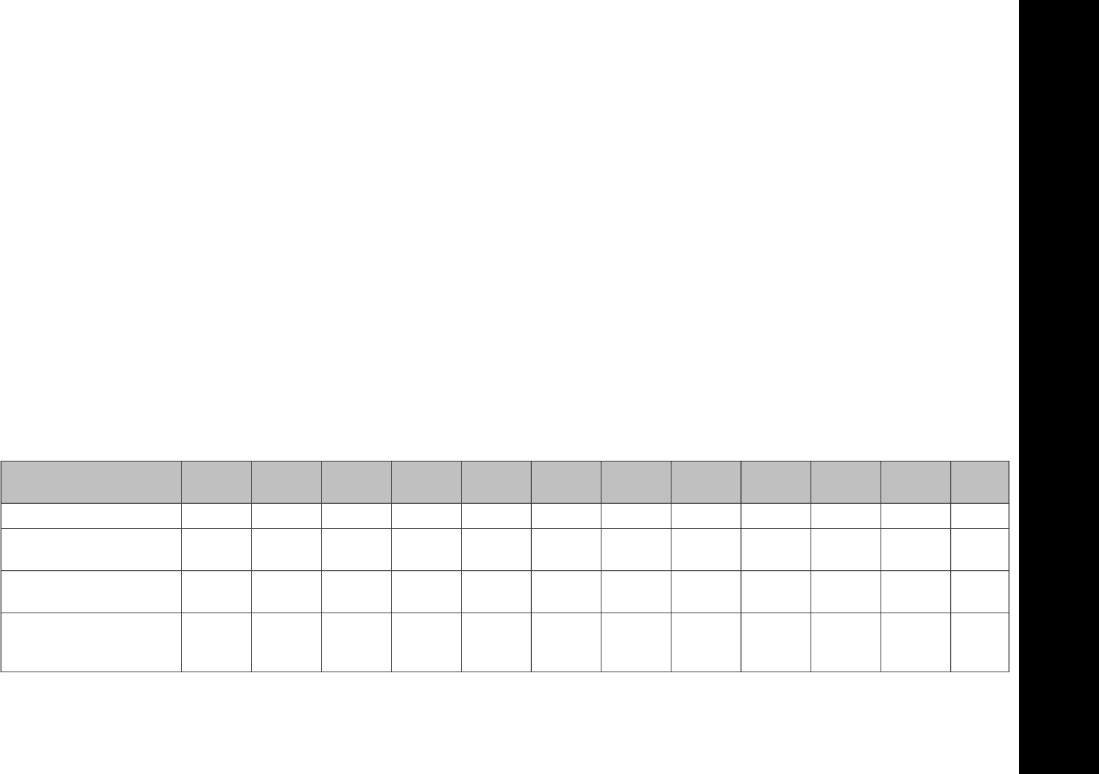
SERVICE RECORDS
Regular Service Intervals
Service must be performed at specified intervals to keep your
Harley-Davidson motorcycle operating at peak performance.
Refer to Table 29.
NOTES
•The use of parts and service procedures other than Harley-
Davidson approved parts and service procedures may
void the limited warranty. Any alterations to the emission
system components, such as the intake and exhaust
system, may be in violation of motor vehicle laws.
•Some countries, such as Brazil, may require all regular
maintenance to be performed by an authorized Harley-
Davidson dealer for your limited warranty to remain in
effect. Check with your authorized Harley-Davidson dealer.
•Some countries, such as Brazil, may require additional
annual (or semi-annual) regular maintenance steps to be
performed to keep your limited warranty in effect and/or
comply with vehicle regulations. Check with your author-
ized Harley-Davidson dealer as well as the motorcycle
regulations in your country.
•After completing the final service interval, repeat the ser-
vice schedule starting at the 8000 km (5000 mi) interval.
•Whenever a vehicle is in for maintenance, always check
for and complete recalls and open product programs.
•Whenever a vehicle is in for maintenance, always verify
that the latest calibration is installed.
Table 29. Regular Service Intervals: 2017 Harley-Davidson Street Models
NOTES50000 mi
80000 km
45000 mi
72000 km
40000 mi
64000 km
35000 mi
56000 km
30000 mi
48000 km
25000 mi
40000 km
20000 mi
32000 km
15000 mi
24000 km
10000 mi
16000 km
5000 mi
8000 km
1000 mi
1600 km
ITEM SERVICED
1XXXXXXXXXXXReplace engine oil and filter
1XXXXXXXXXXXCheck front tire pressure,
inspect tread
XXXXXXXXXXXCheck front brake pads and
discs for wear
2XXXXXXXXXXXInspect and lubricate front
brake caliper pins and bush-
ings
155
SERVICE INTERVALS AND RECORDS
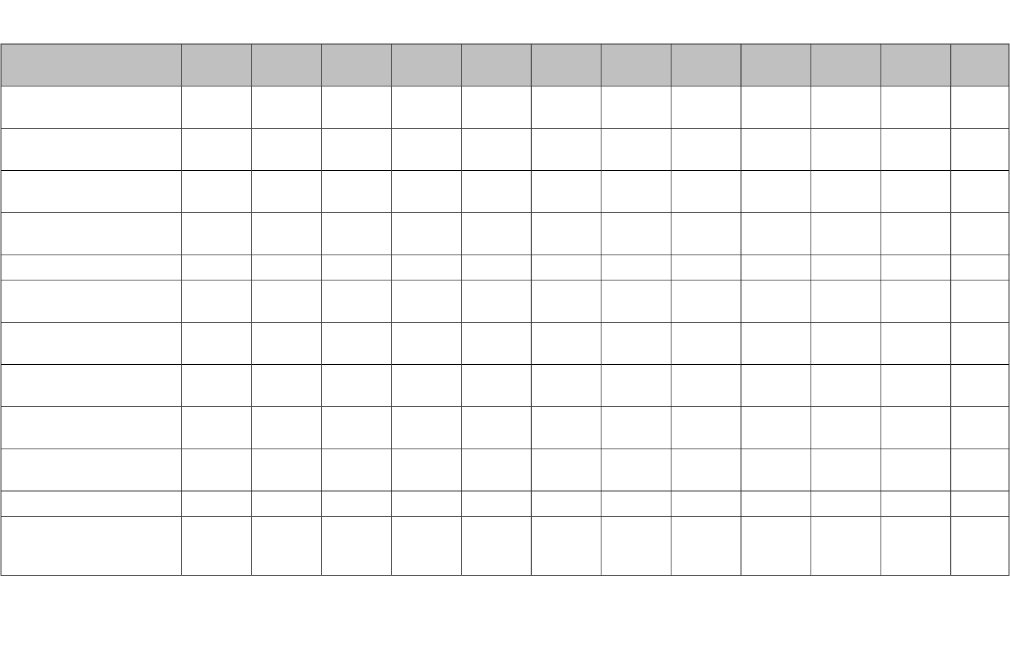
Table 29. Regular Service Intervals: 2017 Harley-Davidson Street Models
NOTES50000 mi
80000 km
45000 mi
72000 km
40000 mi
64000 km
35000 mi
56000 km
30000 mi
48000 km
25000 mi
40000 km
20000 mi
32000 km
15000 mi
24000 km
10000 mi
16000 km
5000 mi
8000 km
1000 mi
1600 km
ITEM SERVICED
1XXXXXXXXXXXCheck front brake system for
leaks, contact or abrasion
2XXXXXXXXXXXRepair front brake system as
necessary
XXXXXXXXXXXCheck front brake fluid level
in sight glass
2XXXXXXXXXXXCheck and adjust throttle
cables
2XXXXXXXXXXXLubricate throttle cables
2XXXXXXXXXXXCheck and adjust brake and
clutch controls
2XXXXXXXXXXXLubricate brake and clutch
controls
2XRebuild front forks and
replace fork oil
2XXXAdjust steering head bear-
ings
2XXLubricate steering head
bearings
XXXXXXXXXXXClean radiator
XXXXXXXXXXXCheck cooling system for
leaks and check clamps for
tightness
156 Service Intervals and Records
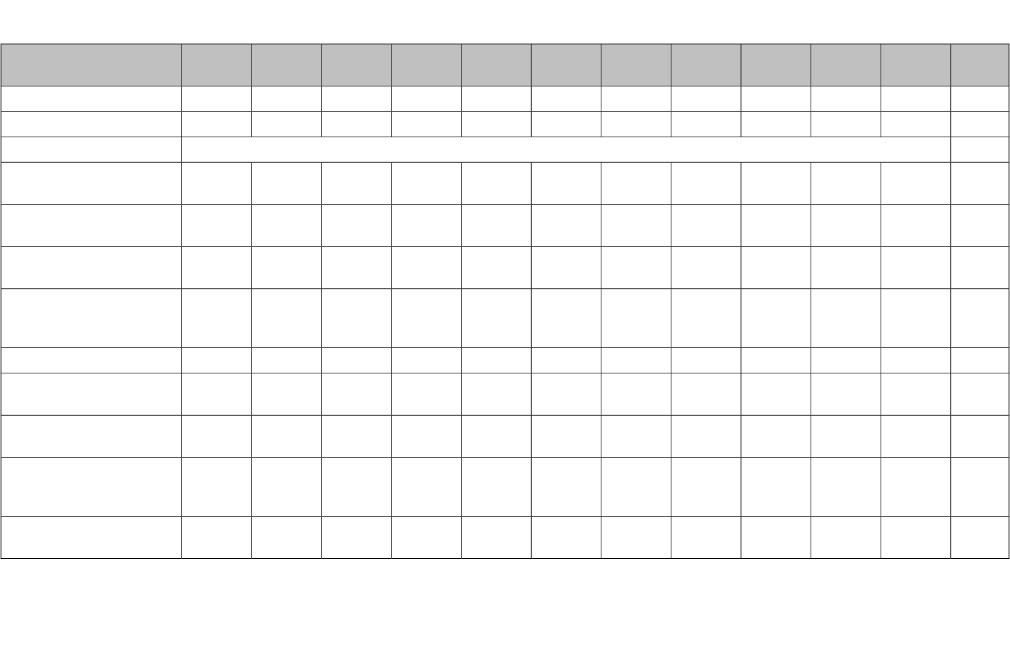
Table 29. Regular Service Intervals: 2017 Harley-Davidson Street Models
NOTES50000 mi
80000 km
45000 mi
72000 km
40000 mi
64000 km
35000 mi
56000 km
30000 mi
48000 km
25000 mi
40000 km
20000 mi
32000 km
15000 mi
24000 km
10000 mi
16000 km
5000 mi
8000 km
1000 mi
1600 km
ITEM SERVICED
XXXXXXXXXXXCheck coolant level
2XXXXXXXXXXXCheck coolant freeze point
2Replace coolant every 48,000 km (30,000 mi).Coolant
1XXXXXXXXXXXCheck fuel lines and fittings
for leaks, contact or abrasion
2XXXXXXXXXXXRepair fuel lines and fittings
as necessary
2, 3XXXXXXXXXXXCheck and lubricate jiffy
stand
2XXClean and lubricate shift and
brake levers, inspect for
wear
2XXInspect rear fork bearing
2XXXXXXXXXXXInspect drive belt and
sprockets, adjust belt
1XXXXXXXXXXXCheck rear tire pressure,
inspect tread
2XXInspect rear shock absorber
bushings for wear and
cracks
1XXXXXXXXXXXCheck rear brake pads and
disc for wear
Service Intervals and Records 157
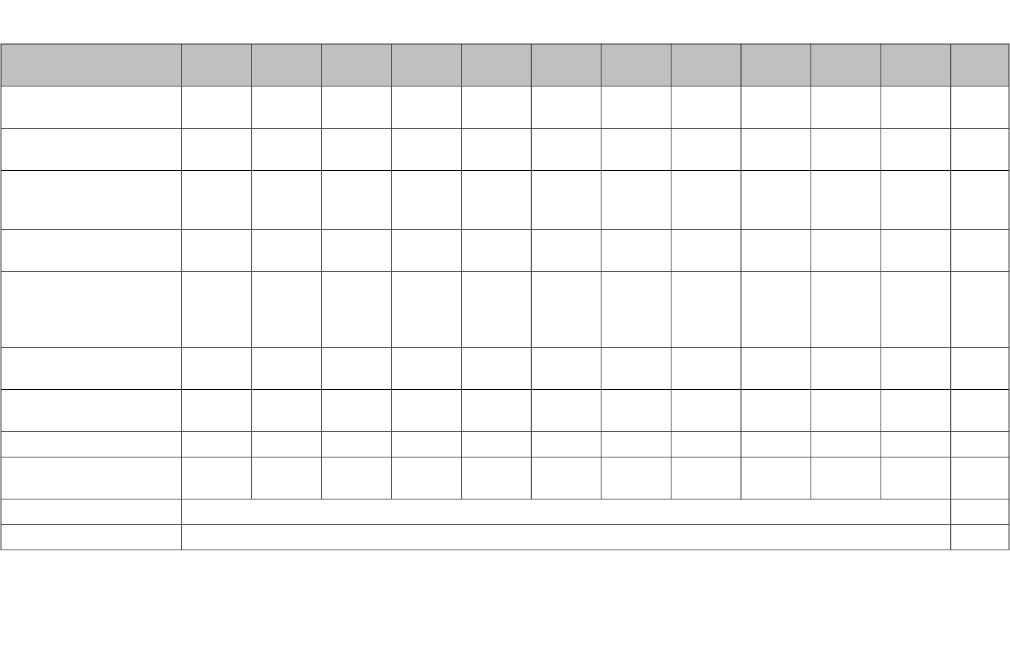
Table 29. Regular Service Intervals: 2017 Harley-Davidson Street Models
NOTES50000 mi
80000 km
45000 mi
72000 km
40000 mi
64000 km
35000 mi
56000 km
30000 mi
48000 km
25000 mi
40000 km
20000 mi
32000 km
15000 mi
24000 km
10000 mi
16000 km
5000 mi
8000 km
1000 mi
1600 km
ITEM SERVICED
1XXXXXXXXXXXCheck rear brake system for
leaks, contact or abrasion
2XXXXXXXXXXXRear brake system repair as
necessary
2XXXXXXXXXXXInspect rear brake caliper
and lubricate pins and bush-
ings
XXXXXXXXXXXCheck rear brake fluid level
in reservoir
1, 3XXXXXXXXXXXCheck exhaust system for
leaks, cracks and loose or
missing fasteners or exhaust
shields
2XXXXXXXXXXXRepair exhaust system as
necessary
3XXXXXXXXXXXInspect air cleaner filter, ser-
vice as required
3XXXXXXXXXXXLubricate fuel cap lock
2, 4XXXInspect valve lash, adjust if
necessary
1Check battery, terminal torque and clean connections annually.Battery
Replace spark plugs every two years or every 48,000 km (30,000 mi), whichever comes first.Spark plugs
158 Service Intervals and Records
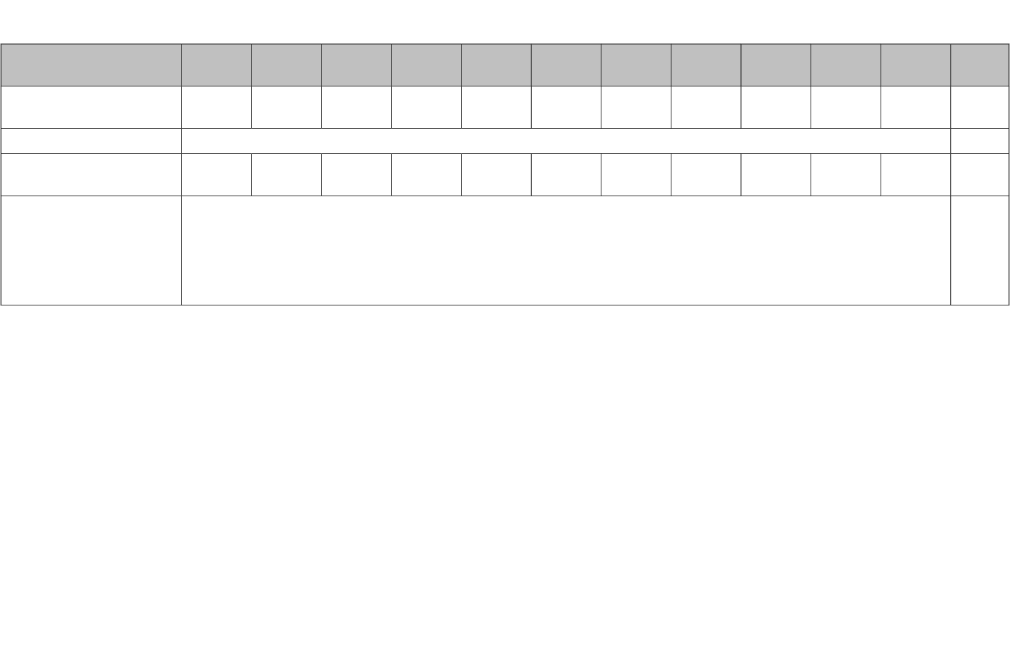
Table 29. Regular Service Intervals: 2017 Harley-Davidson Street Models
NOTES50000 mi
80000 km
45000 mi
72000 km
40000 mi
64000 km
35000 mi
56000 km
30000 mi
48000 km
25000 mi
40000 km
20000 mi
32000 km
15000 mi
24000 km
10000 mi
16000 km
5000 mi
8000 km
1000 mi
1600 km
ITEM SERVICED
XXXXXXXXXXXCheck operation of electrical
equipment and switches
2Flush brake system and replace DOT 4 hydraulic brake fluid every two yearsBrake system
XXXXXXXXXXXRoad test to verify com-
ponent and system functions
1. Perform annually or at specified intervals, whichever comes first.NOTES: 2. Should be performed by an authorized Harley-Davidson dealer, unless you have the proper tools, service data and are
mechanically qualified.
3. Perform maintenance more frequently in severe riding conditions (such as extreme temperatures, dusty environments,
mountainous or rough roads, long storage conditions, short runs, heavy stop/go traffic or poor fuel quality).
4. Could vary with frequency of operation and riding style.
Maintenance Records
Maintain a record of this service to keep your new motorcycle
limited warranty in force. Refer to Table 30.
Service Intervals and Records 159
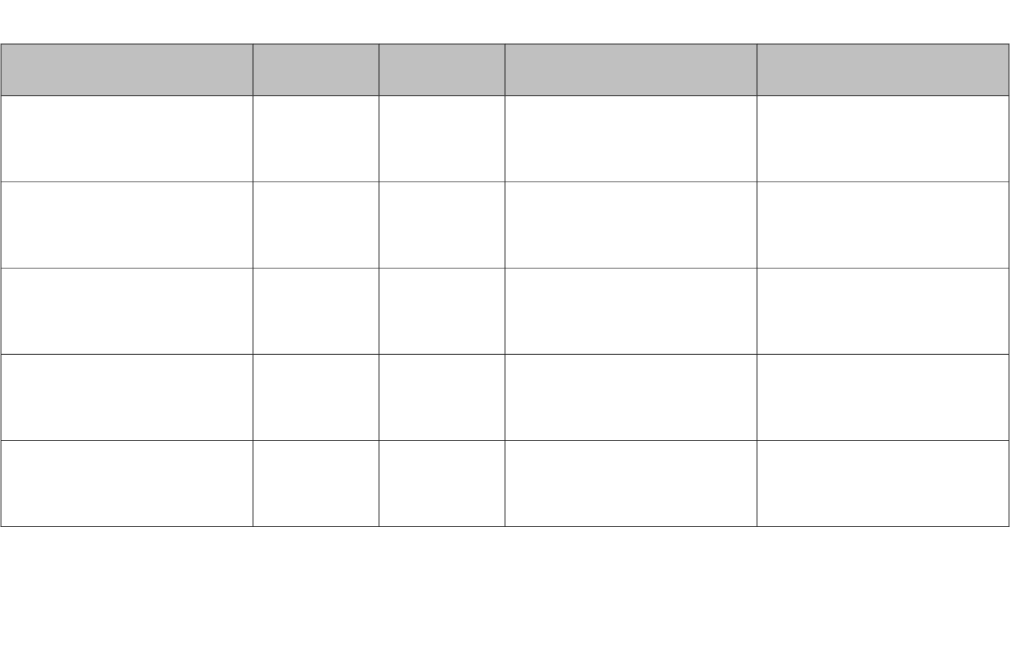
Table 30. Owner's Maintenance Records
TECHNICIAN
SIGNATURE
TECHNICIAN
NAME
DEALER
NUMBER
DATESERVICE MILE INTERVAL
x
1,600 km (1,000 mi)
x
x
8,000 km (5,000 mi)
x
x
16,000 km (10,000 mi)
x
x
24,000 km (15,000 mi)
x
x
32,000 km (20,000 mi)
x
160 Service Intervals and Records
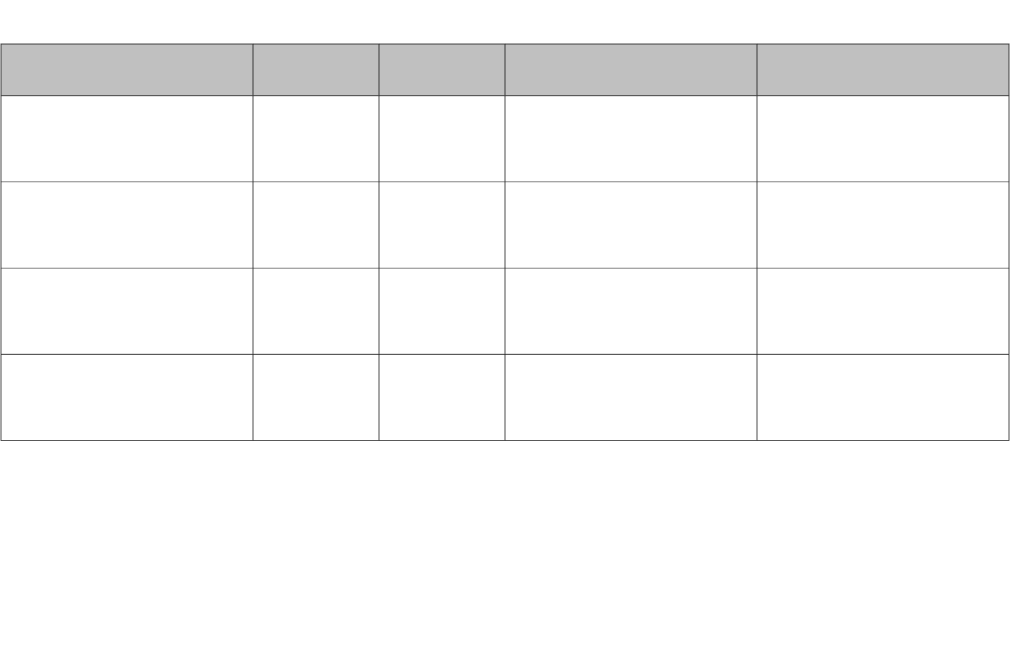
Table 30. Owner's Maintenance Records
TECHNICIAN
SIGNATURE
TECHNICIAN
NAME
DEALER
NUMBER
DATESERVICE MILE INTERVAL
x
40,000 km (25,000 mi)
x
x
48,000 km (30,000 mi)
x
x
56,000 km (35,000 mi)
x
x
64,000 km (40,000 mi)
x
Service Intervals and Records 161
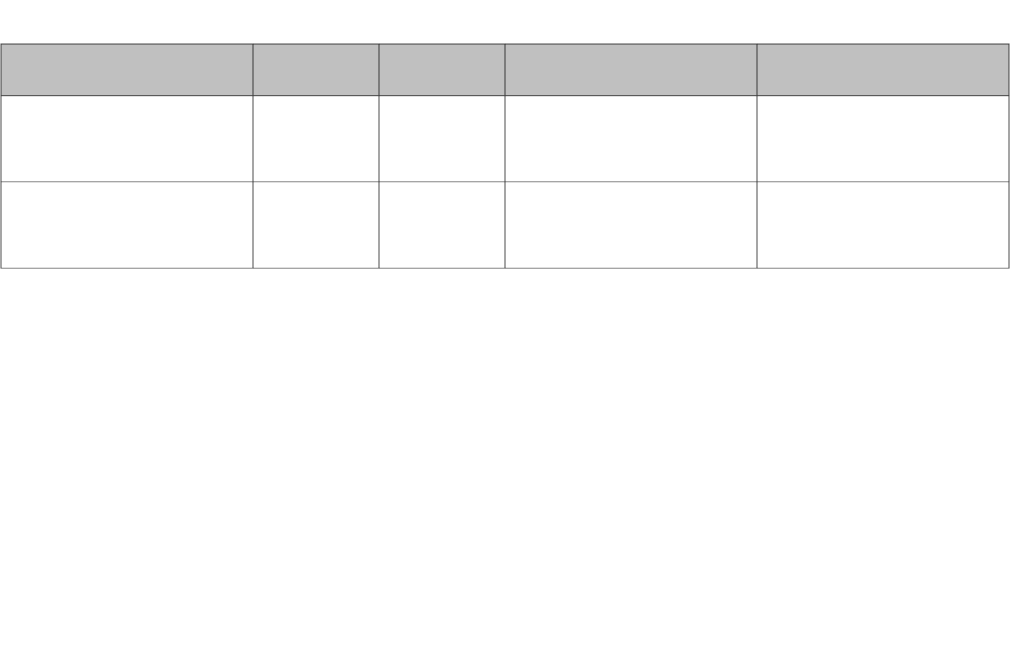
Table 30. Owner's Maintenance Records
TECHNICIAN
SIGNATURE
TECHNICIAN
NAME
DEALER
NUMBER
DATESERVICE MILE INTERVAL
x
72,000 km (45,000 mi)
x
x
80,000 km (50,000 mi)
x
SERVICE LITERATURE
Visit any Harley-Davidson dealer to purchase a service or parts
manual for your motorcycle. Factory authorized manuals are
the most complete and detailed source of information outside
of your Harley-Davidson dealer. Refer to Table 31.
162 Service Intervals and Records
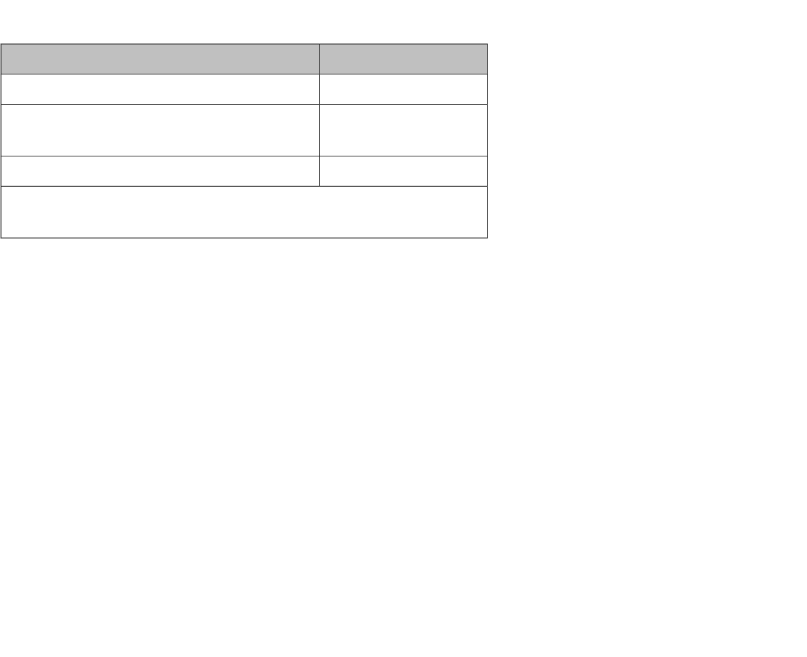
Table 31. Service Literature: 2017 Street Models
PART NUMBERDOCUMENT
94000386Street Models Service Manual
94000398Street Models Electrical Diagnostic
Manual
94000414Street Models Parts Catalog
Publication numbers listed are English language manuals.
Other languages are available from a Harley-Davidson dealer.
Service Intervals and Records 163

164 Service Intervals and Records
NOTES

H-D U.S.A., LLC TRADEMARK
INFORMATION
Bar & Shield, Boom!, Cross Bones, Cruise Drive, CVO, Digital
Tech, Digital Technician, Digital Technician II, Dyna, Electra
Glide, Evolution, Fat Bob, Fat Boy, Forty-Eight, Glaze, Gloss,
H-D, H-Dnet.com, Harley, Harley-Davidson, HD, Heritage
Softail, Iron 883, Low Rider, Milwaukee-Eight, Night Rod,
Nightster, Night Train, Profile, Reflex, Revolution, Road Glide,
Road King, Road Tech, Rocker, Screamin' Eagle, Seventy-
Two, Softail, Sportster, Street Glide, Street Rod, Sun Ray,
Sunwash, Super Glide, SuperLow, Supersmart, Switchback,
SYN3, TechLink, TechLink II, Tour-Pak, Tri Glide, Twin Cam
88, Twin Cam 88B, Twin Cam 96, Twin Cam 96B, Twin Cam
103, Twin Cam 103B, Twin Cam 110, Twin Cam 110B, Twin-
Cooled, Ultra Classic, V-Rod, VRSC and Harley-Davidson
Genuine Motor Parts and Genuine Motor Accessories are
among the trademarks of H-D U.S.A., LLC.
165
TRADEMARKS

PRODUCT REGISTERED MARKS
Apple, Alcantara S.p.A., Allen, Amp Multilock, Bluetooth,
Brembo, City Navigator, Delphi, Deutsch, Dunlop, Dynojet,
Fluke, G.E. Versilube, Garmin, Gunk, Hydroseal, Hylomar,
iPhone, iPod, Kevlar, Lexan, Loctite, Lubriplate, Keps, K&N,
Magnaflux, Marson Thread-Setter Tool Kit, MAXI fuse, Molex,
Michelin, MPZ, Mulitilock, nano, NGK, Novus, Packard, Pirelli,
Permatex, Philips, PJ1, Pozidriv, Road Tech, Robinair, S100,
Sems, SiriusXM, Snap-on, Teflon, Threadlocker, Torca, Torco,
TORX, Tufoil, Tyco, Ultratorch, Velcro, X-Acto and XM Satellite
Radio are among the trademarks of their respective owners.
166 Trademarks

A
ABSAnti-Lock Brake System (ABS)..................55
ECHU.....................................53
Identification................................53
Operation...................................55
Tires and Wheels.............................56
Adjust
Headlamp.................................116
Mirrors.....................................40
Shocks.....................................40
Throttle Cables..............................85
AGM Battery............................See Battery
Air Filter
Inspection..................................92
Replacement................................92
Alarm
Activation...................................26
Deactivation.................................27
Warnings...................................26
B
Battery
AGM.....................................104
Charging..................................103
Cleaning...................................93
Cleaning..................................102
Inspection.................................102
Install.....................................110
Maintenance...............................102
Removal..................................106
Safety.....................................11
Safety....................................102
Storing....................................103
Tender Connector...........................105
Voltage test................................105
Before You Ride.................................35
Brake
Brake Pad Wear Limit.........................82
Change Fluid................................85
Check Fluid.................................84
Check Hand Lever............................86
Disc Thickness...............................83
Front Brake Lever............................44
Light......................................120
Line Check..................................83
Lubricate Caliper Pins and Bushings.............86
Lubricate Hand Control........................86
Rear Brake Pedal............................44
Safety.....................................11
Brakes
ABS Symptoms and Conditions.................56
Anti-Lock Brake System (ABS)..................55
EHCU.....................................53
Front Brake Lever............................54
Rear Brake Pedal............................54
a
INDEX

Break-In
Downshift Speeds............................64
Riding Rules................................36
Upshift Speeds..............................62
BulbHeadlight..................................115
Tail Lamp..................................120
C
California Evaporative Emission Controls.............134
Capacity
Cooling System.............................126
Engine Oil.................................126
Fuel Tank..................................126
Maximum Added Weight Allowed................42
Catalytic Converter...............................39
Charging Battery................................103
Check
Coolant Level................................89
Engine Oil..................................80
Exhaust....................................92
Headlamp Alignment.........................115
Throttle Cables..............................85
Check Engine Indicator............................58
Clean
Denim Finish................................76
Leather and Vinyl.............................75
Motorcycle..................................65
Radiator....................................87
Recommended Products.......................67
Wheels and Tires.............................67
Cleaning
Motorcycle..................................73
Clock...............................See Instruments
Clutch
Check Hand Lever............................86
Hand Lever.................................43
Lubricate Hand Control........................86
Troubleshooting.............................131
Contact information................................1
Controls
Brakes.....................................44
Clutch Hand Lever............................43
Fork Lock...................................45
Front Brake Lever............................54
Gear Shift Lever..............................43
Ignition Switch...............................44
Primary....................................21
Rear Brake Pedal............................54
Throttle....................................44
Coolant
Check Level.................................89
Cooling System Troubleshooting................131
b

General....................................88
Hose Check.................................83
Level Check.................................89
Replace....................................89
Safety.....................................10
Customer Service.................................1
D
Dealer Locator Phone Number.....................135
Denim Finish....................................76
Dimensions....................................124
Downshift......................................63
Drive Belt
Deflection...................................90
Deflection Specifications.......................90
Tension Gauge..............................90
Drive Ratios...................................126
E
Electrical
Specifications..............................127
System Check...............................95
Engine
Break-In....................................36
Lubrication.................................100
Specifications..............................126
Start.......................................60
Stop.......................................64
Troubleshooting.............................129
Engine Off/Run Switch............................52
Engine Oil
Change....................................78
Check.....................................80
Drain Plug..................................78
Filter.......................................78
Grades....................................100
Low Temperature Lubrication..................101
Recommended Engine Oils....................100
Temperature Recommendations................100
Engine Oil Filter.................................78
EPA Noise Regulations...........................134
Exhaust
Leak Check.................................92
Safety......................................9
F
Fob Additional Fobs..............................29
Fob Assignment..............................29
Riding with a Fob.............................31
Riding without a Fob..........................31
Fob Battery..........................See Instruments
Fork Bearing Inspection...........................89
Fork Lock......................................45
c

Fork Maintenance................................86
FuelFiller Cap...................................37
Filling the Tank...............................37
Line Check..................................83
Safety......................................9
Specifications...............................38
Fuel Cap Lock Lubrication.........................93
Fuses
Fuse Panel................................111
Main......................................111
Replacement...............................112
G
Gasoline
Specifications...............................38
Tank Capacity..............................126
Gear Shift
Lever......................................43
Shifting Gears...............................62
Starting from a Stop..........................61
H
Hand Control Modules
Left Hand...................................50
Right Hand..................................52
Hazardous Materials..............................12
Headlight
Align......................................116
Bulb Replacement...........................118
High Beam.....................................50
High Beam Indicator..............................58
Horn Switch....................................51
I
Ignition
Specifications..............................127
Ignition Switch...................................44
Importing a Motorcycle...........................135
Indicator
Check Engine...............................58
High Beam..................................58
Left Turn....................................58
Low Fuel...................................58
Neutral.....................................58
Oil Pressure.................................58
Right Turn..................................58
Inspect
Brake Lines.................................83
Cooling Hoses...............................83
Fuel Lines..................................83
Rear Fork Bearing............................89
Throttle Cables..............................85
d

Inspection
Air Filter....................................92
Battery....................................102
Rear Shock.................................92
Tire.......................................97
Instruments
Clock......................................49
Fob Low Battery Message......................48
Gear Selection...............................47
Low Fuel Trip Meter...........................48
Odometer...................................47
Odometer Messages..........................48
Speedometer................................46
Tachometer.................................47
tiP Message.................................48
J
Jiffy Stand
Location....................................40
Lubricate...................................86
Operate....................................40
Switch.....................................40
K
Kick Stand...............................Jiffy Stand
L
Labels.........................................13
Leather Care....................................75
Left Turn Indicator................................58
Low Beam Switch................................50
Low Fuel
See Instruments.............................48
Low Fuel Indicator...............................58
Lubricate
Brake Caliper Pins and Bushings................86
Brake Hand Control...........................86
Clutch Hand Control..........................86
Fuel Cap Lock...............................93
Jiffy Stand..................................86
Steering Head Bearing........................86
Throttle Cables..............................86
Lubrication
Engine....................................100
Low Temperature............................101
M
Main Fuse...............................See Fuses
Maintenance
Clean Radiator...............................87
Engine Oil Check.............................80
Owner's Maintenance Records.................159
e

Preparing Motorcycle.........................77
Recommended Engine Oils....................100
Safety.....................................12
Service Intervals............................155
Maximum Added Weight Allowed....................42
Mirror Adjustment................................40
Motorcycle
Storage....................................65
N
National Highway Traffic Safety Administration (NHTSA). . 135
Neutral Indicator.................................58
Noise Control System............................122
O
Odometer...........................See Instruments
Oil..................................See Engine Oil
Oil Pressure Indicator.............................58
Operation
Jiffy Stand..................................40
Shifting Gears...............................62
Starting from a Stop..........................61
Owner Contact Information........................135
P
Parts and Accessories............................13
Preload Adjustment..............................40
Pre-Ride Checklist...............................35
R
Radiator Maintenance.............................87
Recommended Cleaning Products...................67
Relays........................................113
Replace
Coolant....................................89
Headlamp Bulb.............................118
Tires......................................100
Turn Signal Bulb............................120
Right Turn Indicator...............................58
S
Safety
Battery.....................................11
Battery....................................102
Brakes.....................................11
Cargo and Loading............................8
Cooling System..............................10
Definitions...................................3
Fuel and Exhaust..............................9
General.....................................4
Hazardous Materials..........................12
Labels.....................................13
Maintenance................................12
Motorcycle...................................4
f

Operating Rules...............................4
Operation....................................5
Parts and Accessories.........................13
Stability, Steering and Handling...................6
Tires........................................8
Towing and Trailering...........................9
SeatInstall.....................................121
Remove...................................121
Security System
Alarm Activation..............................26
Alarm Deactivation...........................27
Alarm Warnings..............................26
Arming.....................................25
Changing the PIN............................28
Components................................25
Disarmed...................................26
Disarming with the PIN........................27
Disconnect Power (Siren)......................33
Fob Assignment..............................29
Indicator States..............................25
Options....................................25
Pager......................................27
Personal Identification Number (PIN).............27
Riding with a Fob.............................31
Riding without a Fob..........................31
Service....................................32
Siren Chirp Mode............................32
Storage....................................32
Transport Mode..............................32
Troubleshooting - Fob.........................33
Troubleshooting - Key Icon.....................33
Troubleshooting - Siren........................34
Service Literature...............................162
Service Records
Owner' Maintenance Records..................159
Regular Intervals............................155
Shifting Gears
Downshift...................................63
Neutral.....................................61
Starting from a Stop..........................61
Upshift.....................................62
Shocks
Inspect Bushing..............................92
Preload Adjustment...........................40
Side Covers...................................114
Spark Plugs
Replace....................................94
Specifications..............................127
Specifications
Capacities.................................126
Dimensions................................124
g

Drive Ratios................................126
Electrical..................................127
Engine....................................126
Ignition....................................127
Recommended Downshift Speeds...............64
Recommended Upshift Speeds..................62
Spark Plugs................................127
Tires......................................123
Transmission...............................126
Weights...................................124
Speedometer...................................46
Sprocket Inspection..............................90
Stability, Steering and Handling......................6
Starting
After a Tipover...............................61
Engine.....................................60
Start Switch....................................52
Steering Head
Adjust Bearings..............................87
Lubricate...................................86
Storage
Removing Motorcycle.........................35
Storing Motorcycle............................65
Switch
Check.....................................95
Engine Off/Run..............................52
High Beam..................................50
Horn.......................................51
Ignition.....................................44
Left Turn Signal..............................50
Low Beam..................................50
Right Turn Signal.............................51
Start.......................................52
T
Tachometer..........................See Instruments
Tail Lamp Bulb.................................120
Throttle
Check and Adjust............................85
Lubricate Cables.............................86
Twist Grip...................................44
Time
See Instruments.............................49
t
tiP.................................See Instruments
T
Tire............................................8
Clean......................................67
Information..................................97
Inspect.....................................81
Inspection..................................97
h

Pressure..................................123
Replacement...............................100
Sizes.....................................123
Towing and Trailering Safety.........................9
Trademarks
Harley-Davidson............................165
Referenced Products.........................166
Transmission...................................126
Transport Mode..................................32
Troubleshooting
Anti-Lock Brake System (ABS)..................56
Clutch....................................131
Cooling System.............................131
Electrical System............................131
Engine....................................129
Shifting....................................131
Transmission...............................131
Turn Signal
Bulb Replacement...........................120
Indicators...................................58
Turn Signal Switch...............................51
U
Upshift.........................................62
V
Valve Lash Adjustment............................93
Vehicle Identification Number (VIN)
Abbreviated.................................17
Location....................................17
Vinyl Care......................................75
Voltage Test...................................105
W
Warranty
Emission Control System.....................146
Motorcycle Limited Warranty...................137
Noise Control System........................144
Questions and Concerns......................136
Repair Work................................134
Washing.......................................74
Drying.....................................75
Polishing and Sealing.........................75
Preparation.................................74
Wheels and Tires.............................74
Weight........................................124
Wheel Care.....................................67
i

j
NOTES
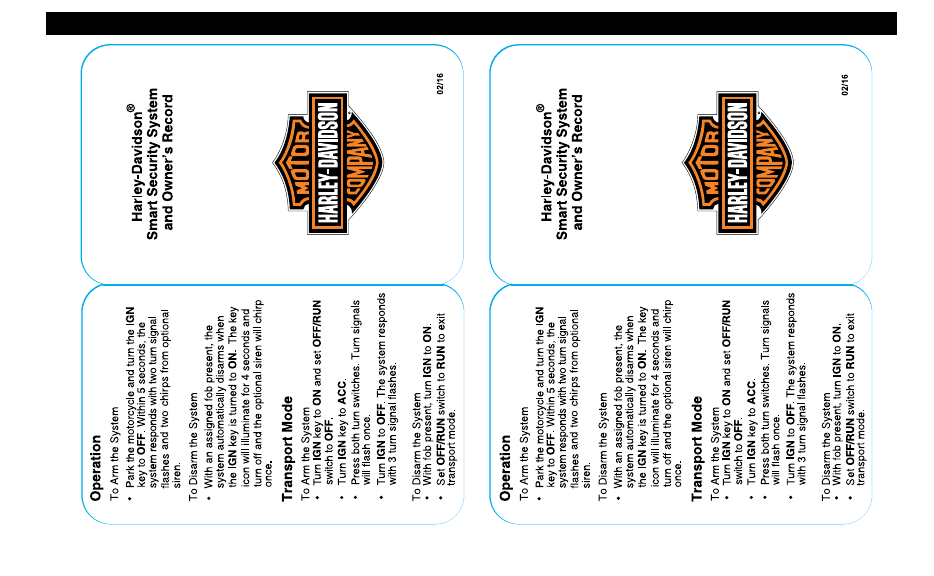
Vehicle owner: This card is intended to provide a convenient reference for important information
concerning your motorcycle. Please fill out applicable information and keep this card in your wallet.
PRINTER INSTRUCTIONS: Insert appropriate language card for STREET (dated 02/16 on card).
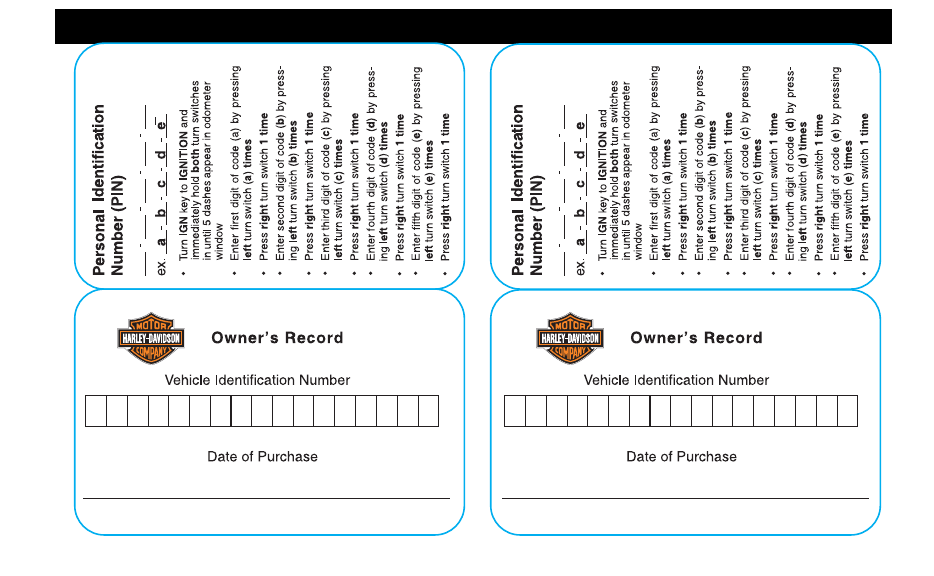
PRINTER INSTRUCTIONS: Insert appropriate language card for STREET (dated 02/16 on card).

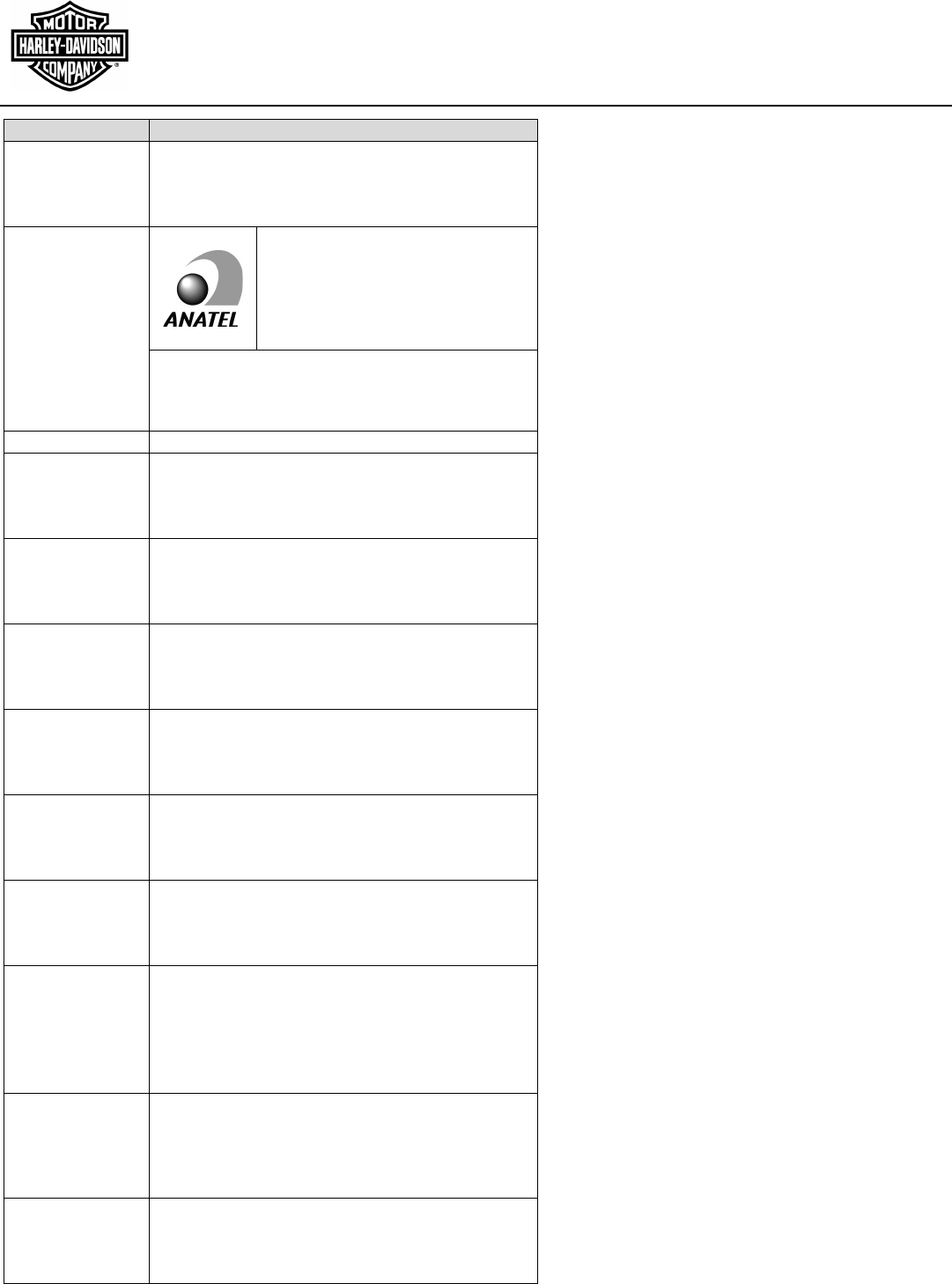
! !
RF Certification Owner’s Manual Addendum
940xxxxx
May 12, 2016
!
1 of 4
!
Country
Street Security System
Argentina
Certification
In Process
Brazil
Certification
In Process
Este!equipamento!opera!em!caráter!secundário,!istoé,!não!tem!
direito!a!proteção!contra!interferência!prejudicial,!mesmo!de!
estações!do!mesmo!tipo,!e!não!pode!causar!interferência!a!
sistemas!operando!em!caráter!primário
European Union
See EC Declaration of Conformity (Exhibit A)
Indonesia
Certification
In Process
Israel
Certification
In Process
Jordan
Certification
In Process
Maylasia
Certification
In Process
Mexico
Certification
In Process
Morocco
Certification
In Process
People’s
Republic of
China
Certification
In Process
Republic of
Korea
Certification
In Process
Singapore
Certification
In Process
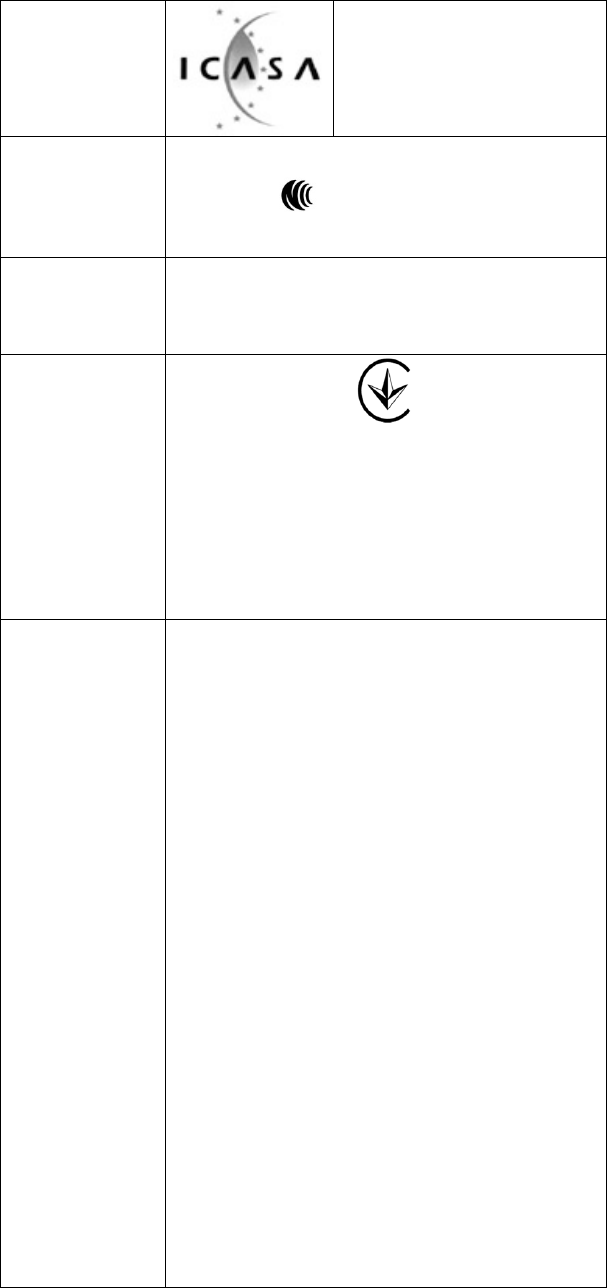
2 of 4
!
South Africa
Certification
In Process
Taiwan
Certification In Process
United Arab
Emirates
Certification
In Process
Ukraine
Certification In Process
Harley-Davidson цім стверджує, що обладнання
радіопульт моделі L2C0056TR відповідає вимогам
Про затвердження Технічного регламенту
радіообладнання і телекомунікаційного кінцевого
(термінального) обладнання (Постанова КМУ №
679 від 24 червня 2009 р.) Декларація
відповідності знаходиться на сайті Harley-
Davidson за адресою: 3700 W. Juneau Avenue,
Milwaukee, Wisconsin USA 53201
United States
FCC ID:
FOB - 2AHJZ–A243F
Module - 2AHJZ–A243M
This device complies with Part 15 of the FCC Rules.
Operation is subject to the following two conditions: (1)
This device may not cause harmful interference, and (2)
This device must accept any interference received,
including interference that may cause undesired operation.
Warning: Changes or modifications to this unit not
expressly approved by the party responsible for
compliance could void the user’s authority to operate the
equipment.
NOTE: This equipment has been tested and found to
comply with the limits for a Class B digital device, pursuant
to Part 15 of the FCC Rules. These limits are designed to
provide reasonable protection against harmful interference
in a residential installation. This equipment generates,
uses and can radiate radio frequency energy and, if not
installed and used in accordance with the instructions, may
cause harmful interference to radio communications.
However, there is no guarantee that interference will not
occur in a particular installation. If this equipment does
cause harmful interference to radio or television reception,
which can be determined by turning the equipment off and
on, the user is encouraged to try to correct the interference
by one or more of the following measures:
o Reorient or relocate the receiving antenna.
o Increase the separation between the equipment and
receiver.
o Connect the equipment into an outlet on a circuit different
from that to which the receiver is connected.
o Consult the dealer or an experienced radio/TV technician
for help.
! !

3!of!4!
!
Canada
IC ID:
FOB - 21274-A243F
Module – 21274-A243M
This device complies with Industry Canada license-exempt
RSS standard(s). Operation is subject to the following two
conditions: (1) this device may not cause interference, and
(2) this device must accept any interference, including
interference that may cause undesired operation of the
device.
Le présent appareil est conforme aux CNR d'Industrie
Canada applicables aux appareils radio exempts de
licence. L'exploitation est autorisée aux deux conditions
suivantes: (1) l'appareil ne doit pas produire de brouillage,
et (2) l'utilisateur de l'appareil doit accepter tout brouillage
radioélectrique subi, même si le brouillage est susceptible
d'en compromettre le fonctionnement..
4 of 4
!
Exhibit A
Insert!EU!DoC
